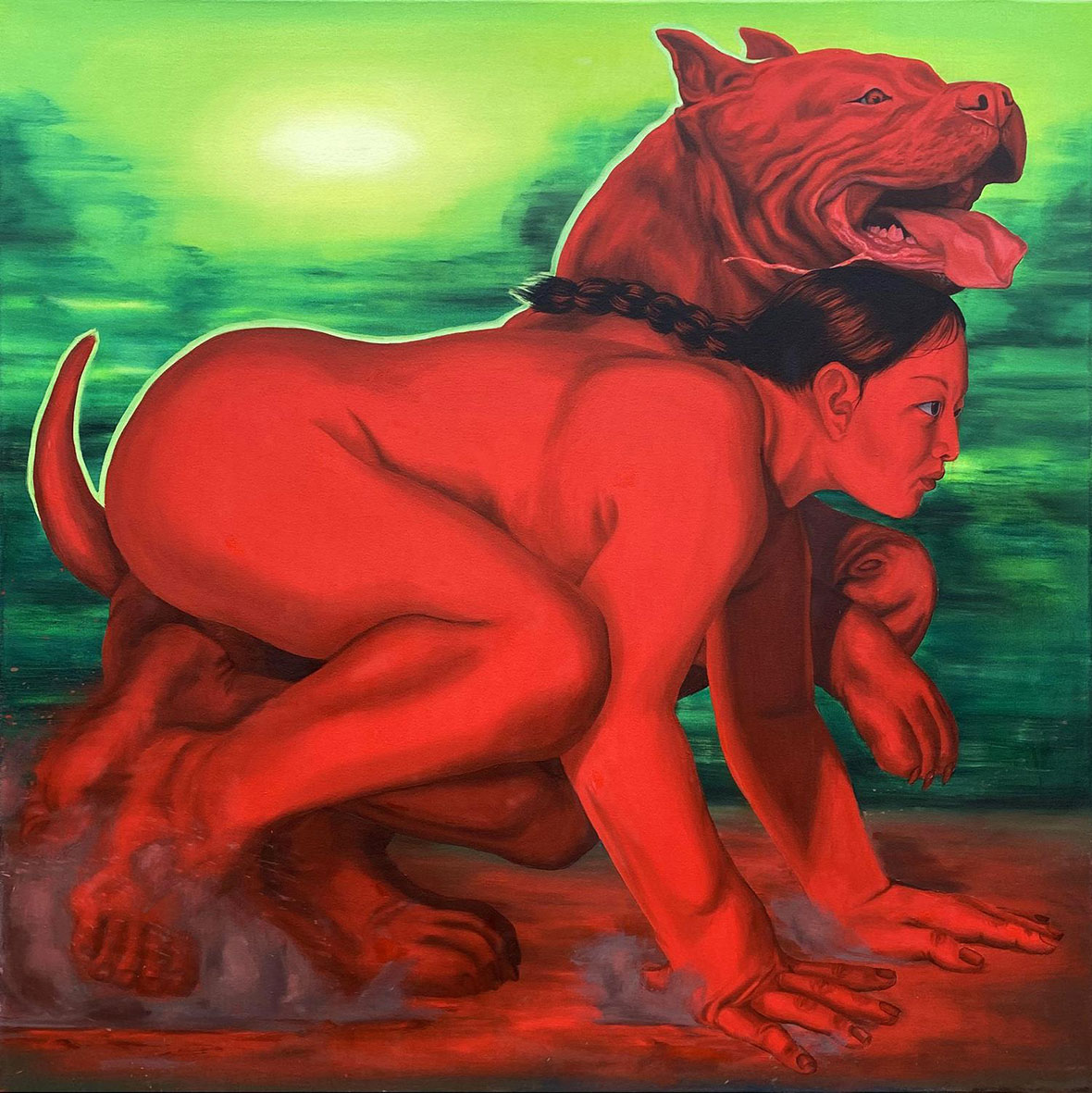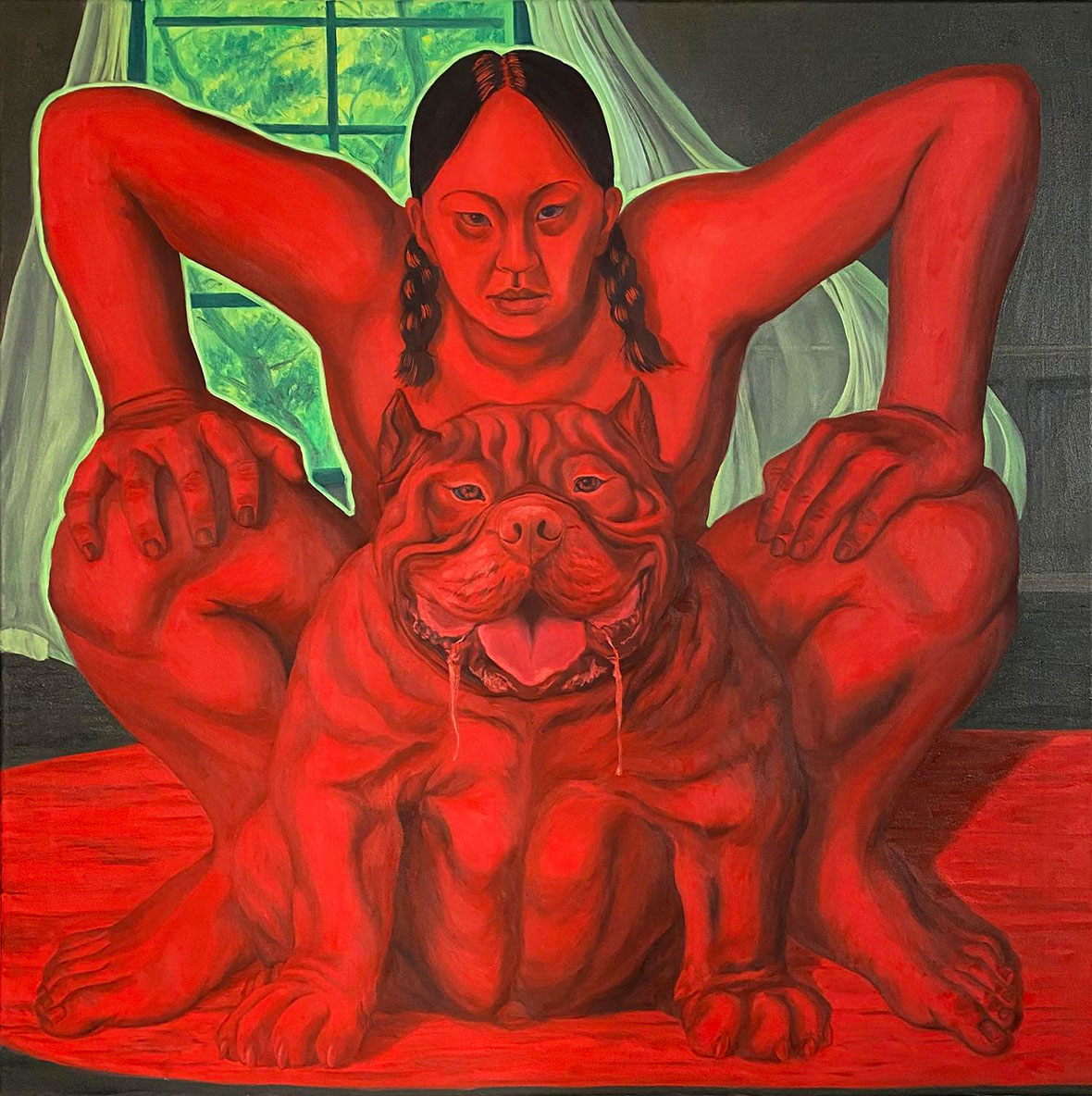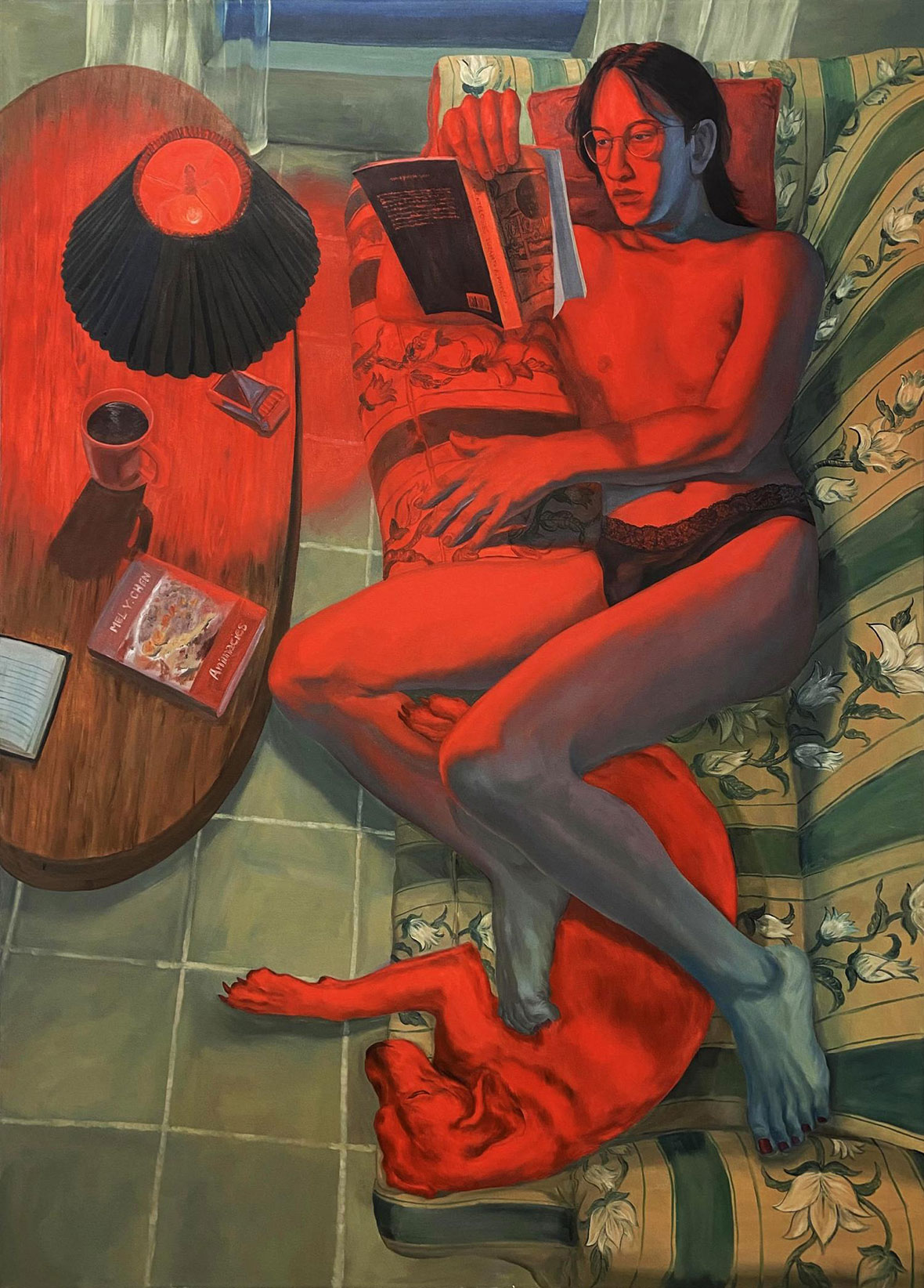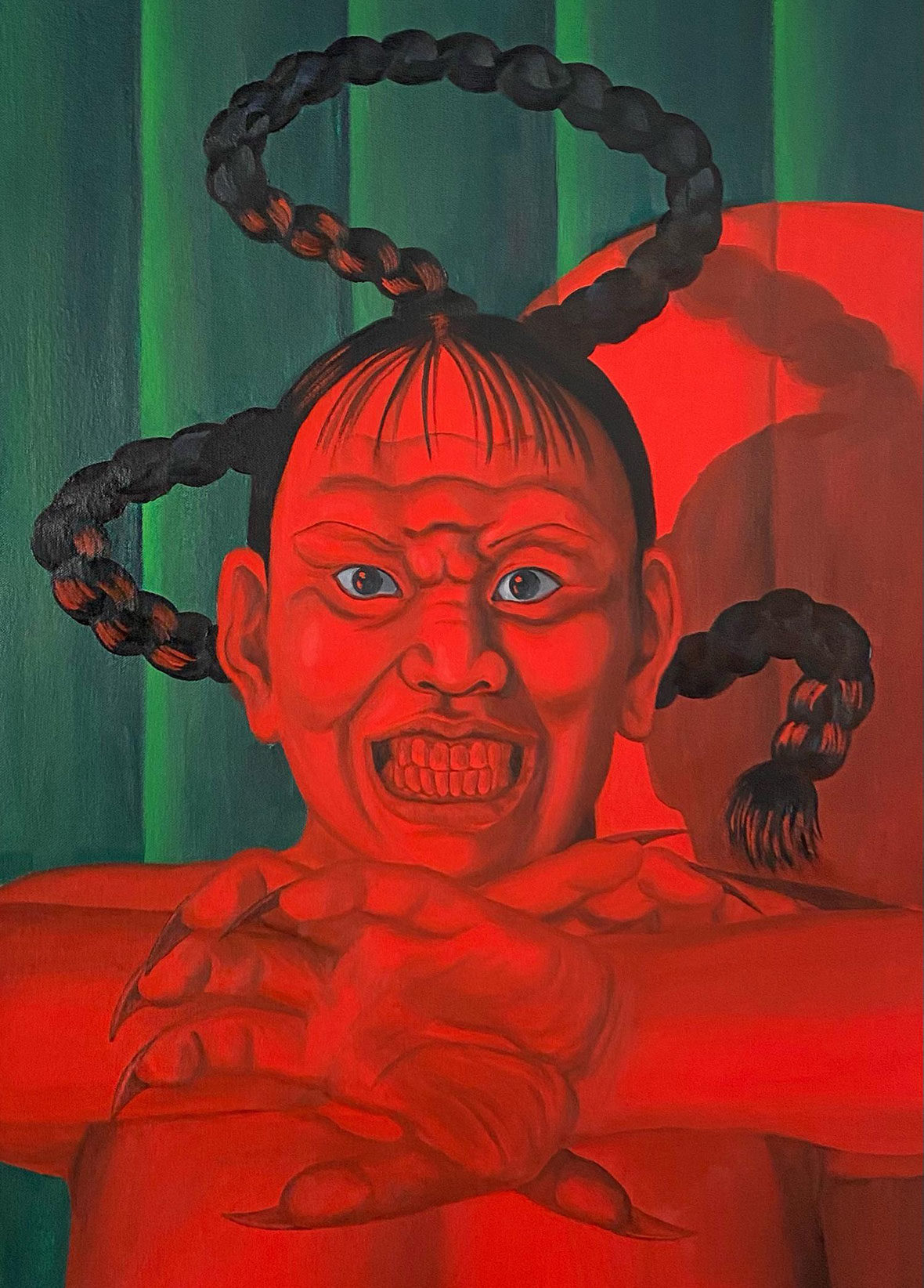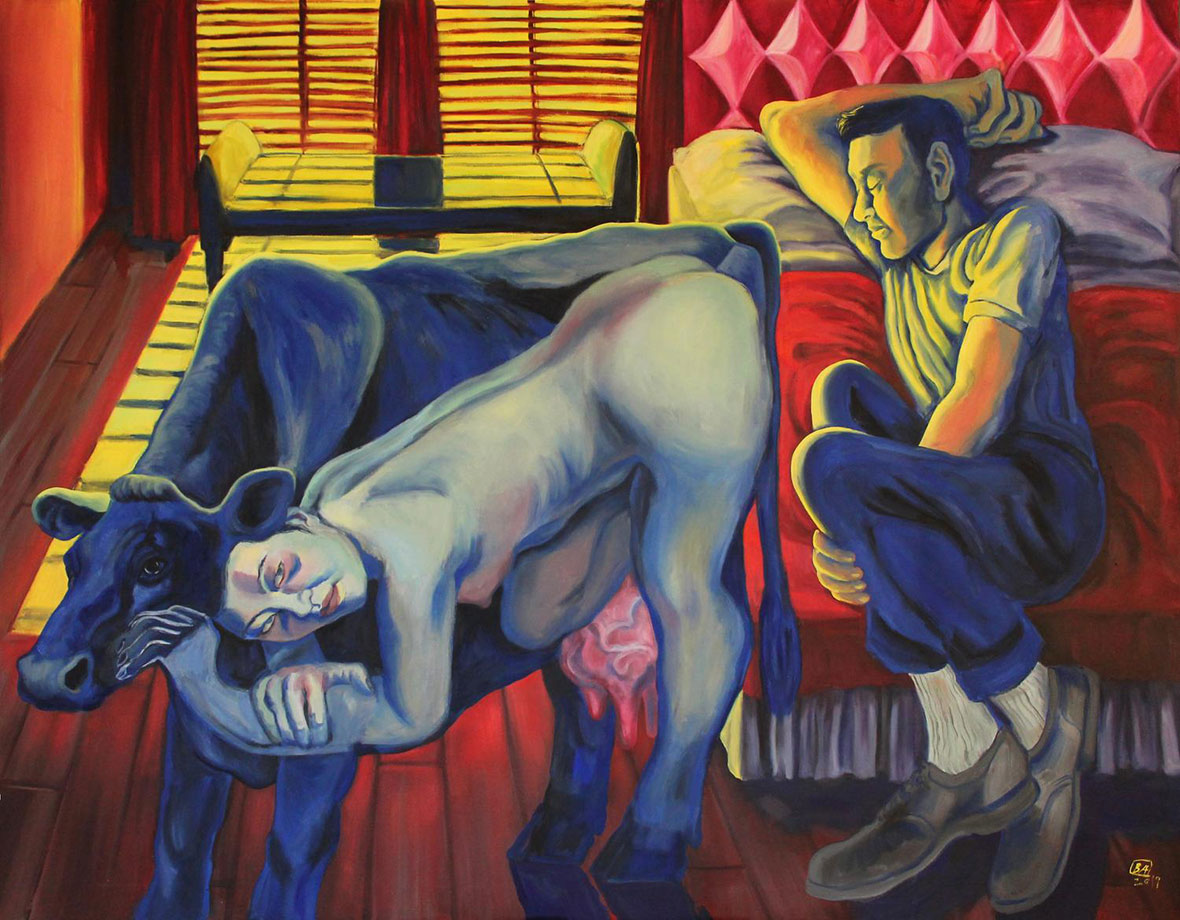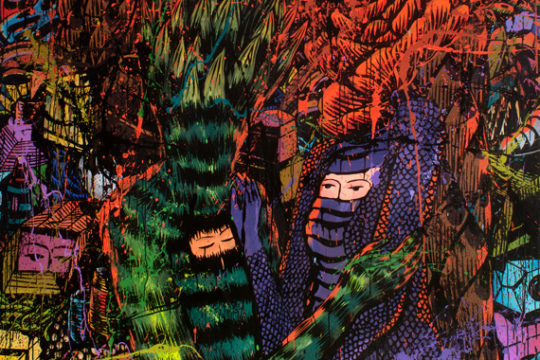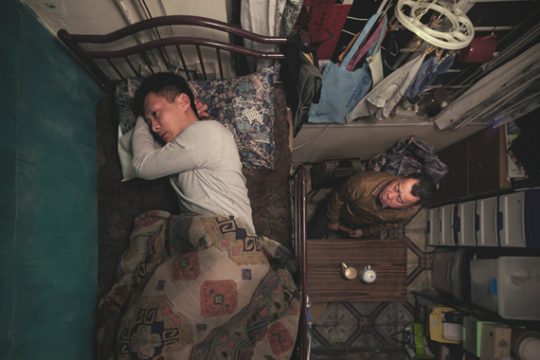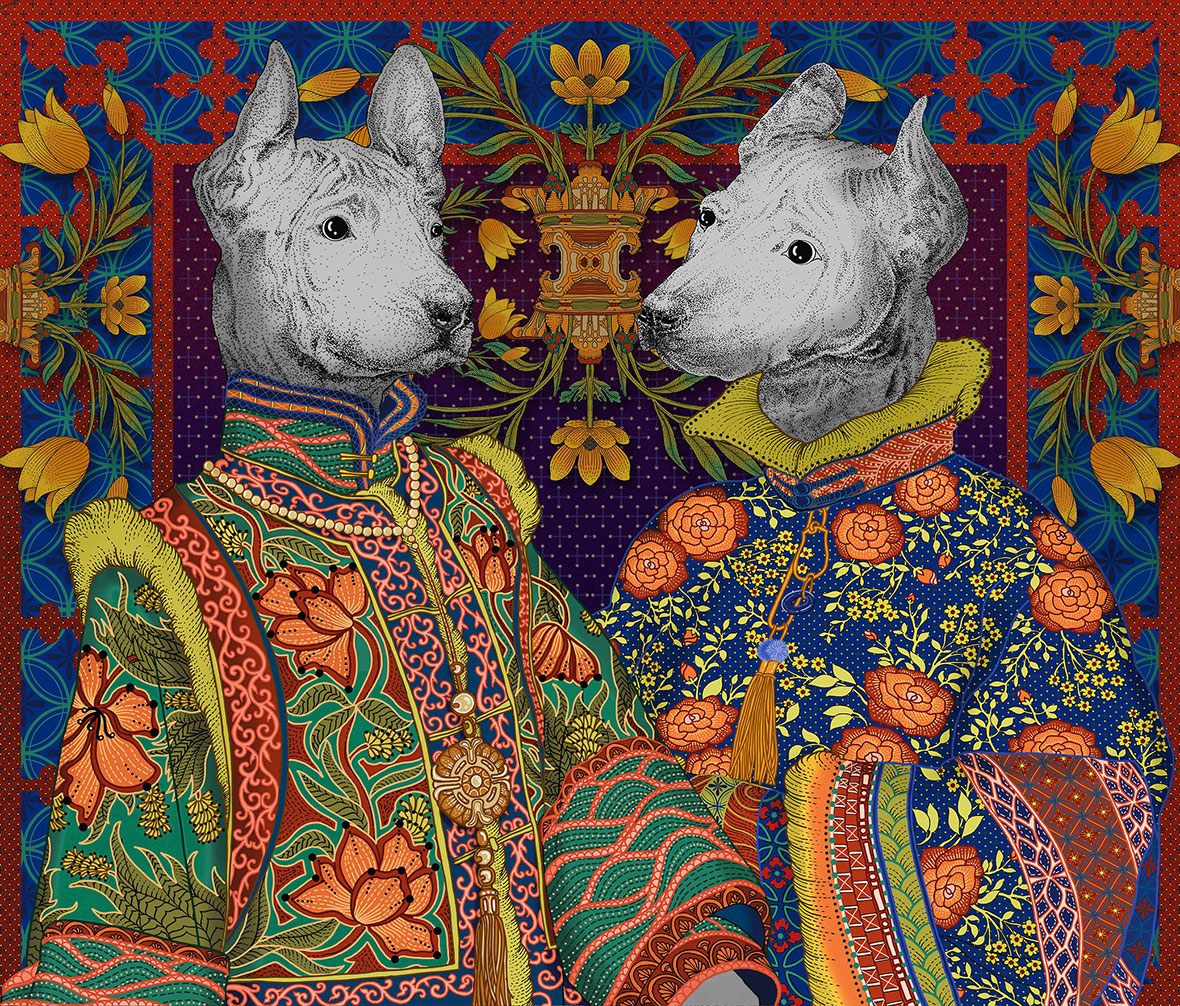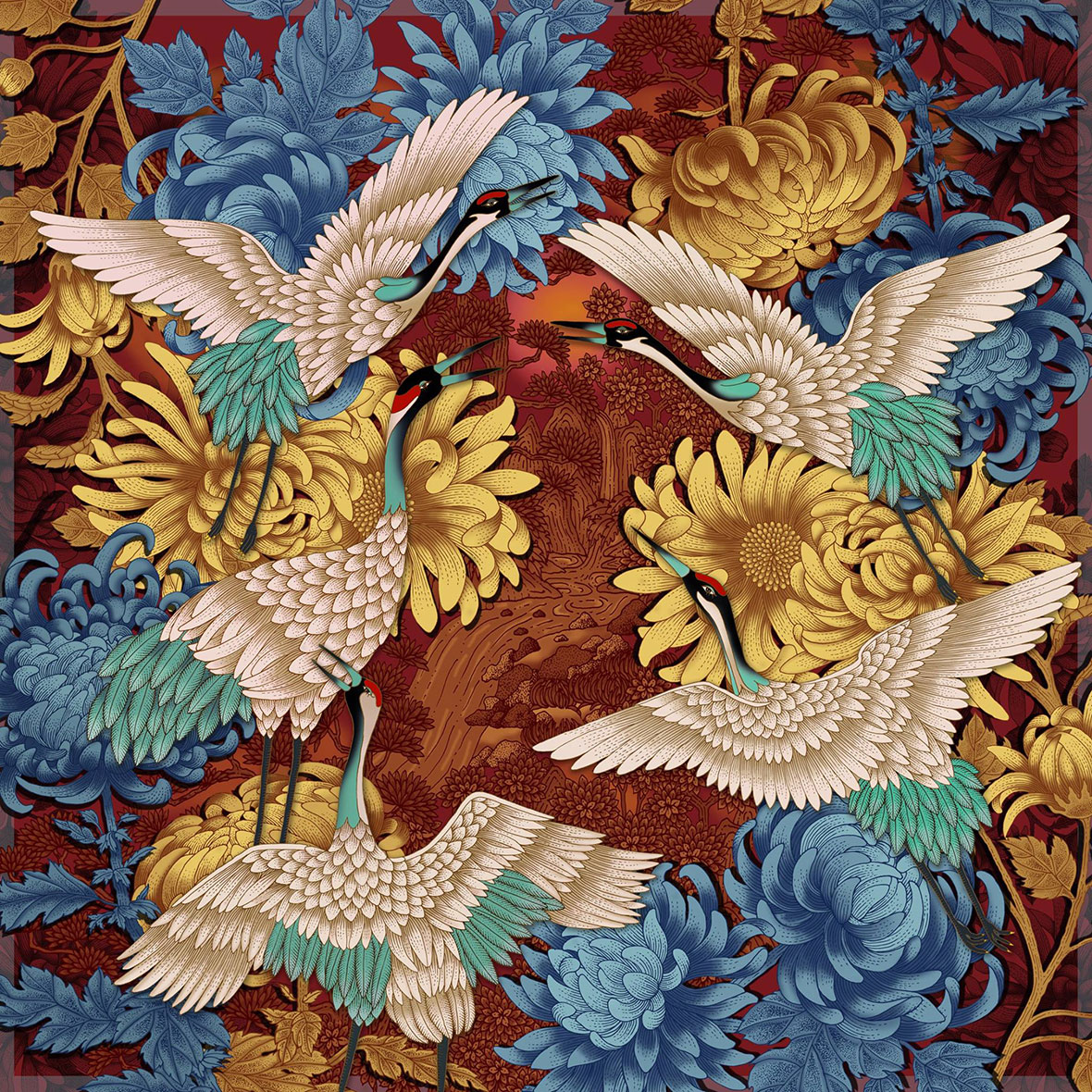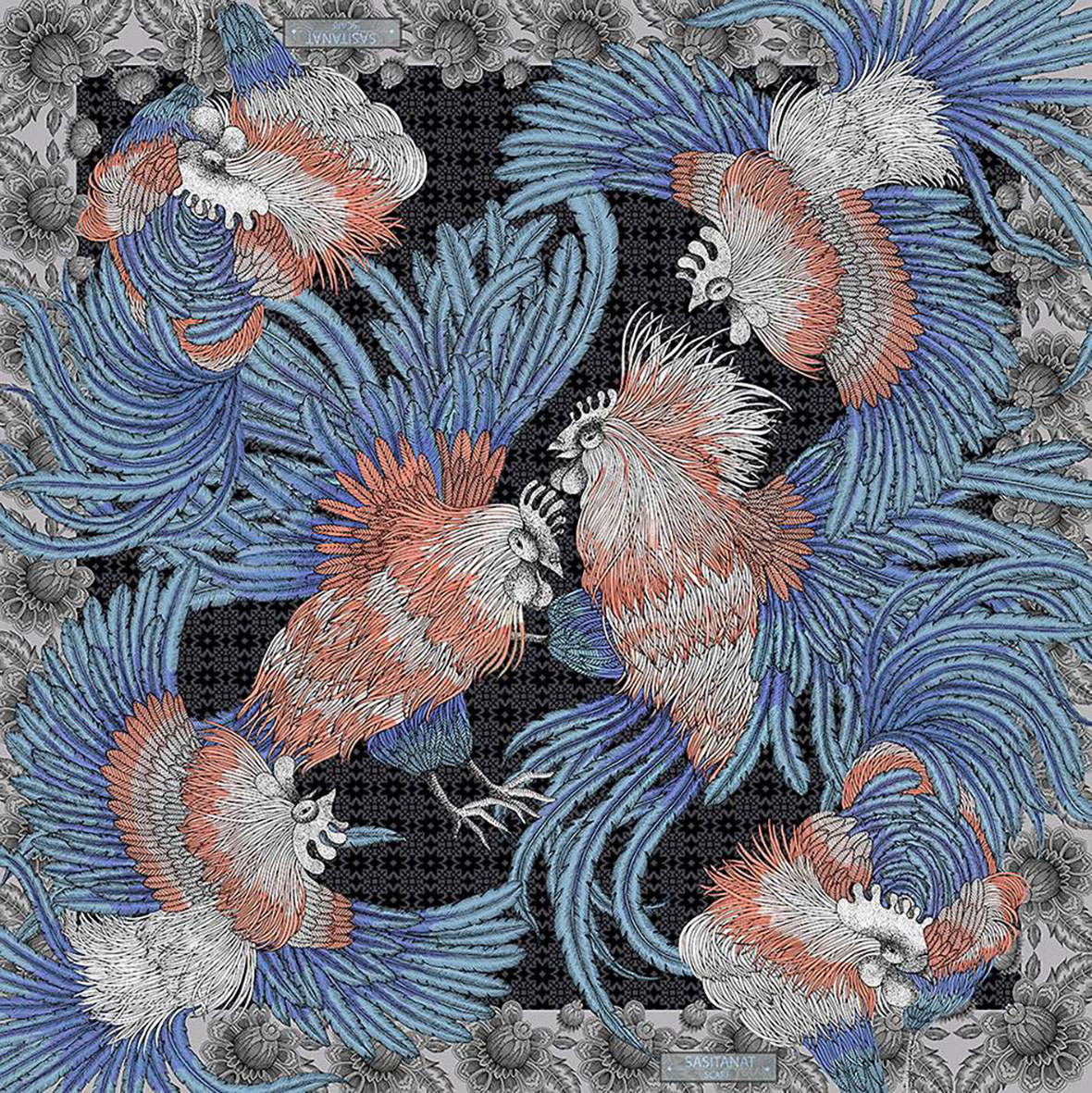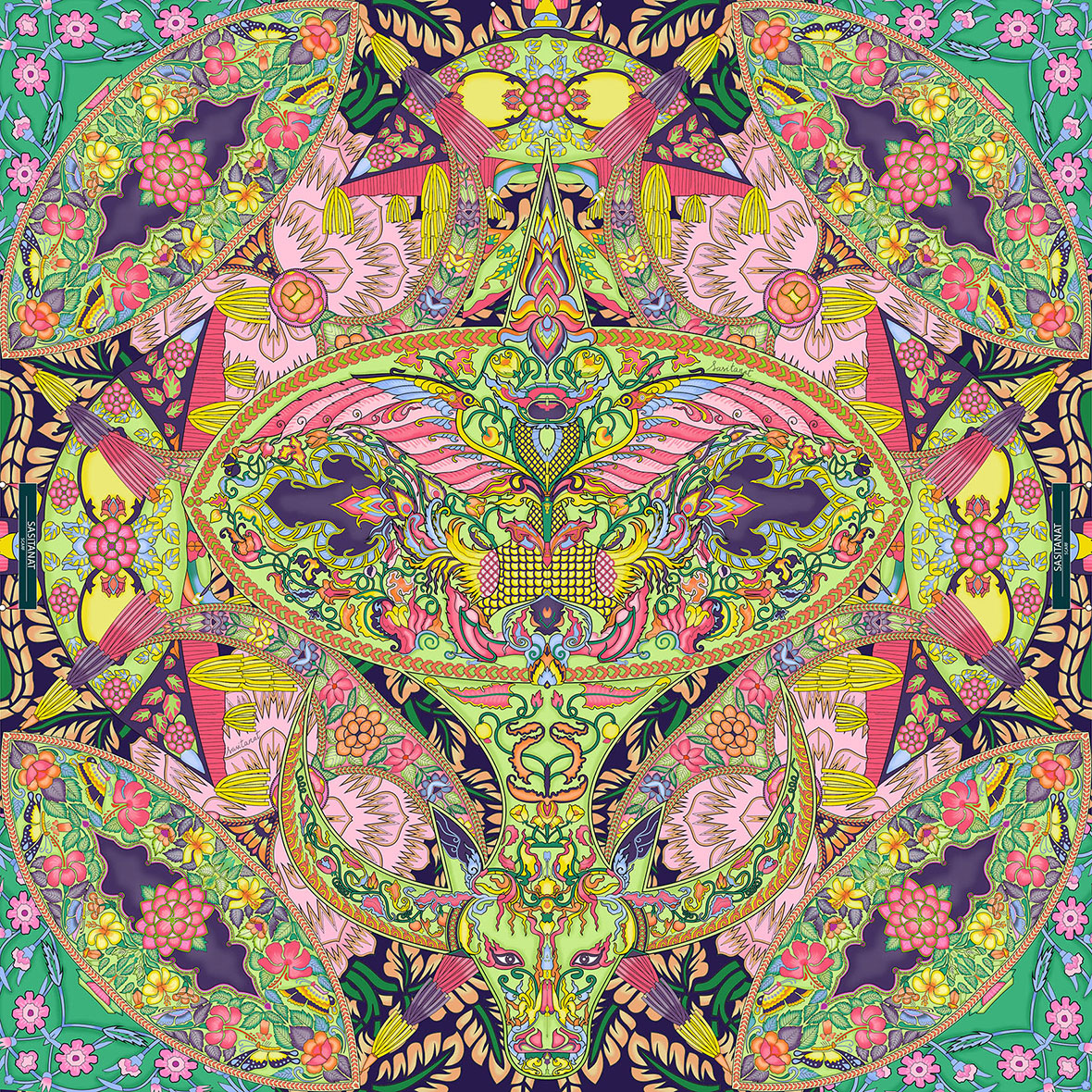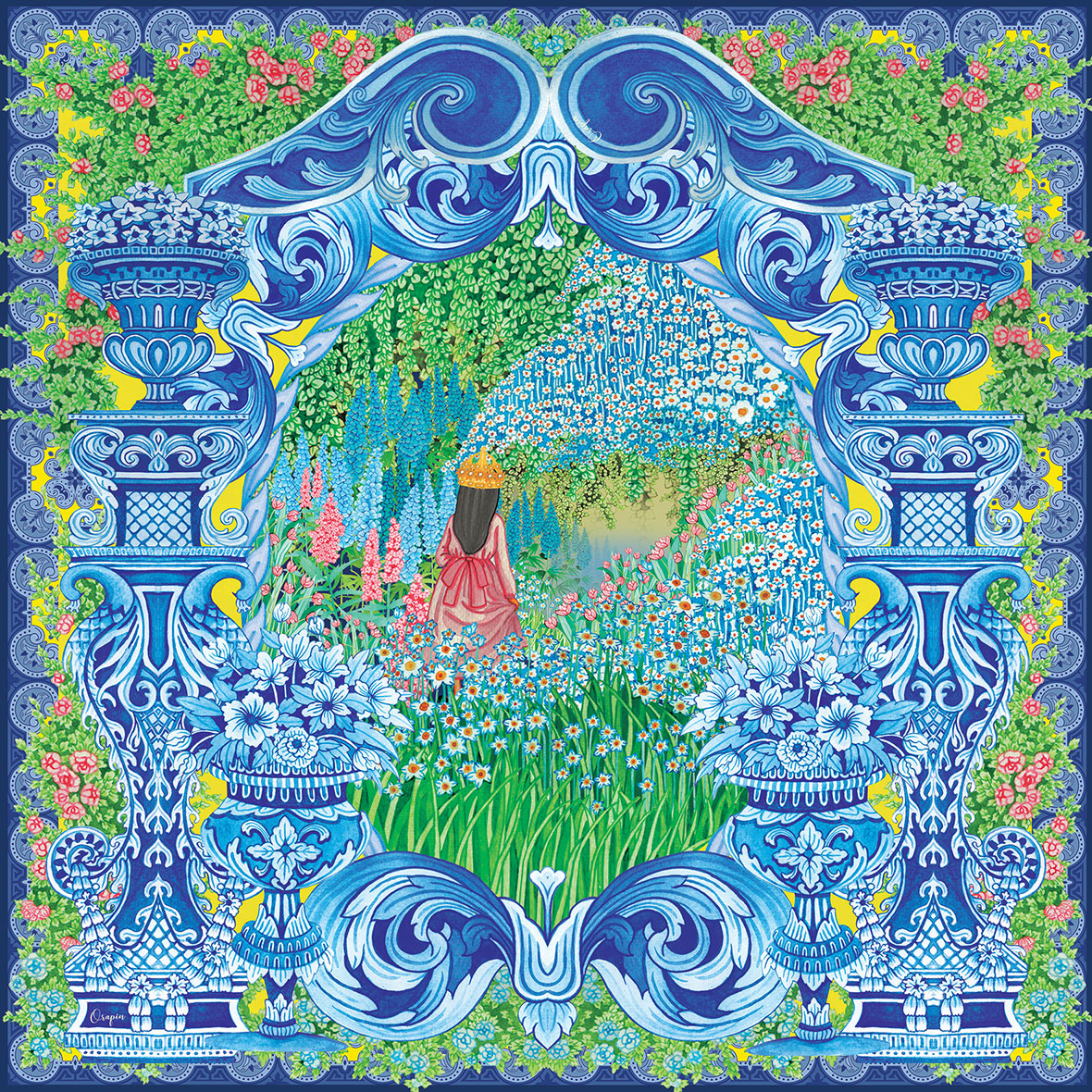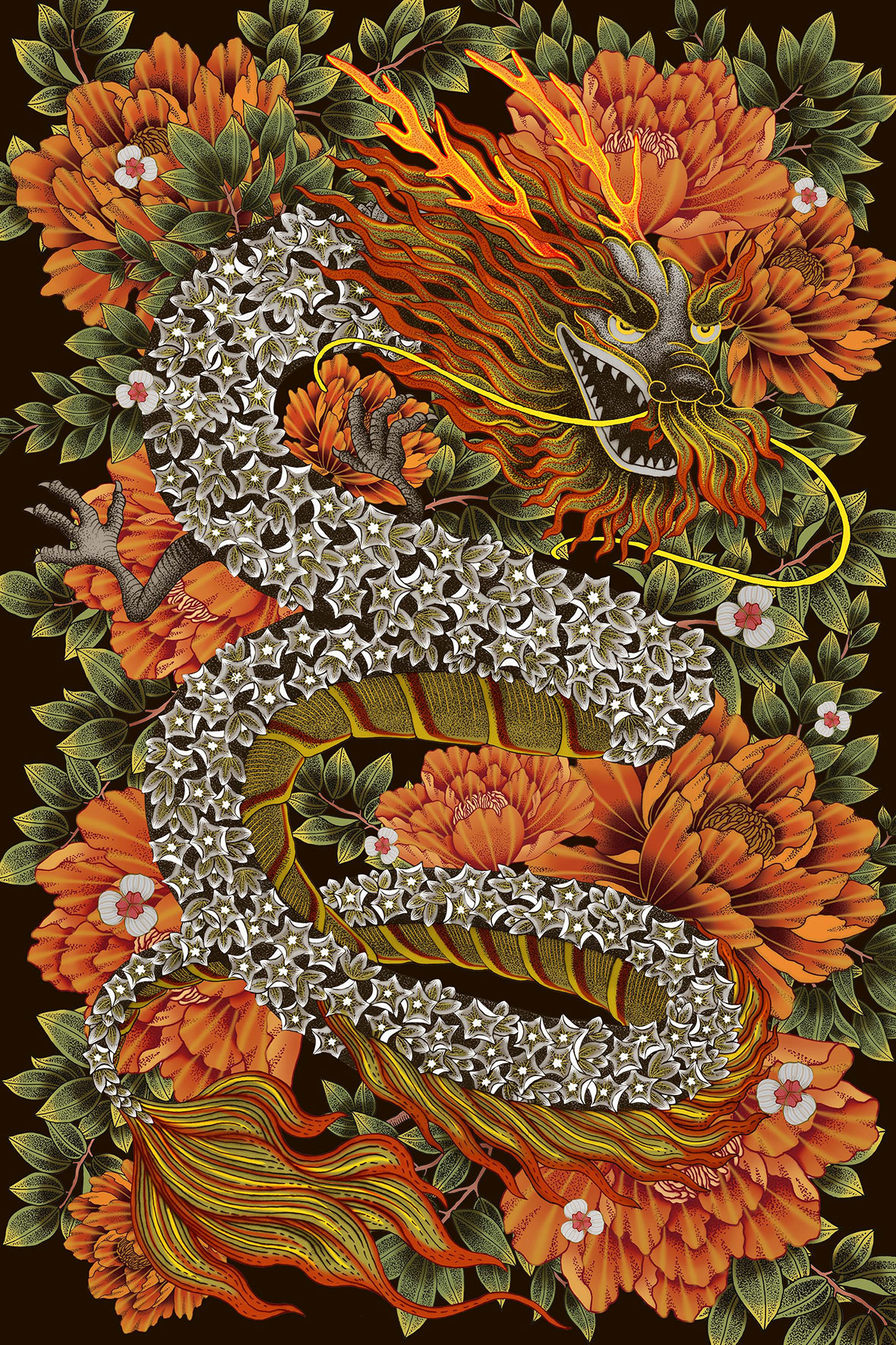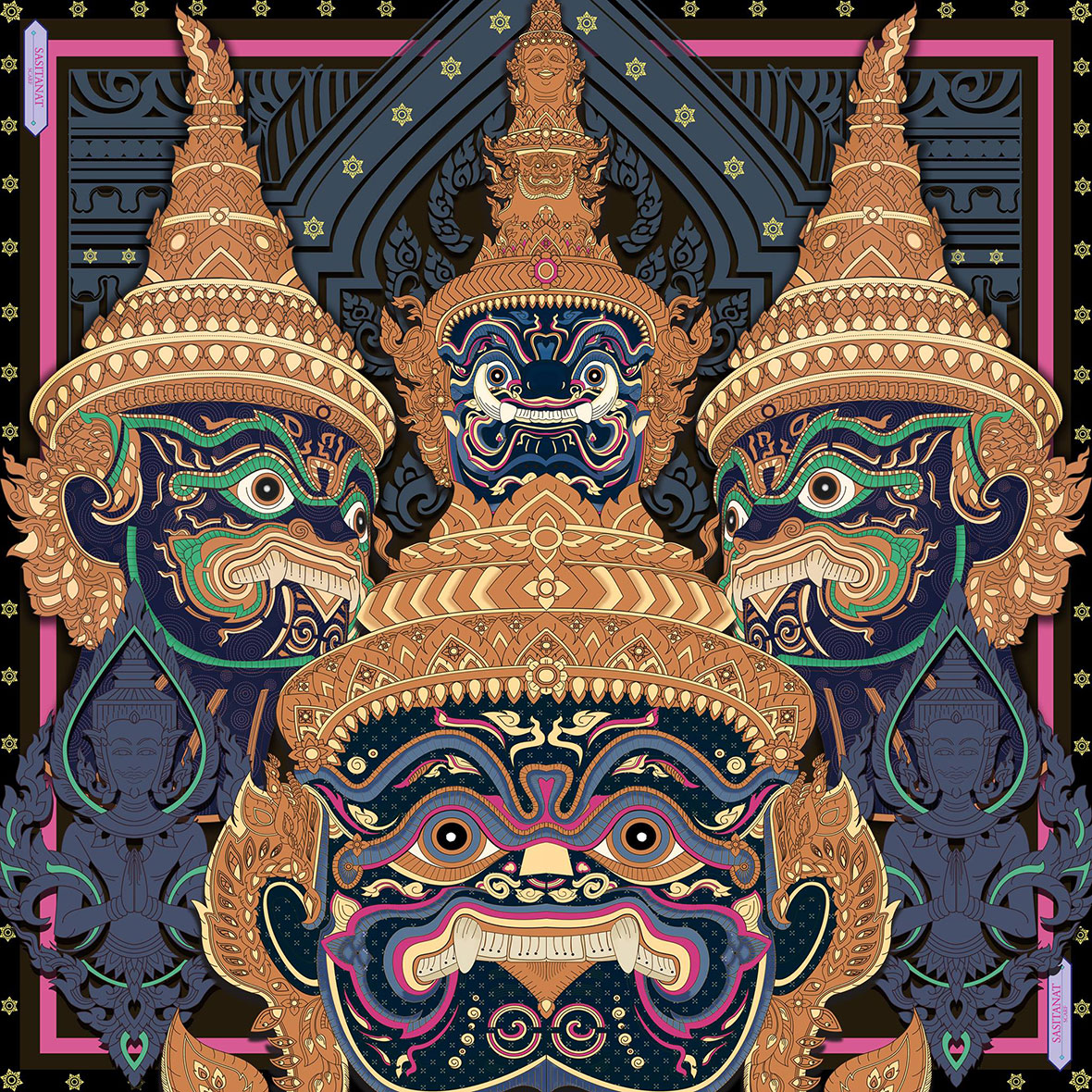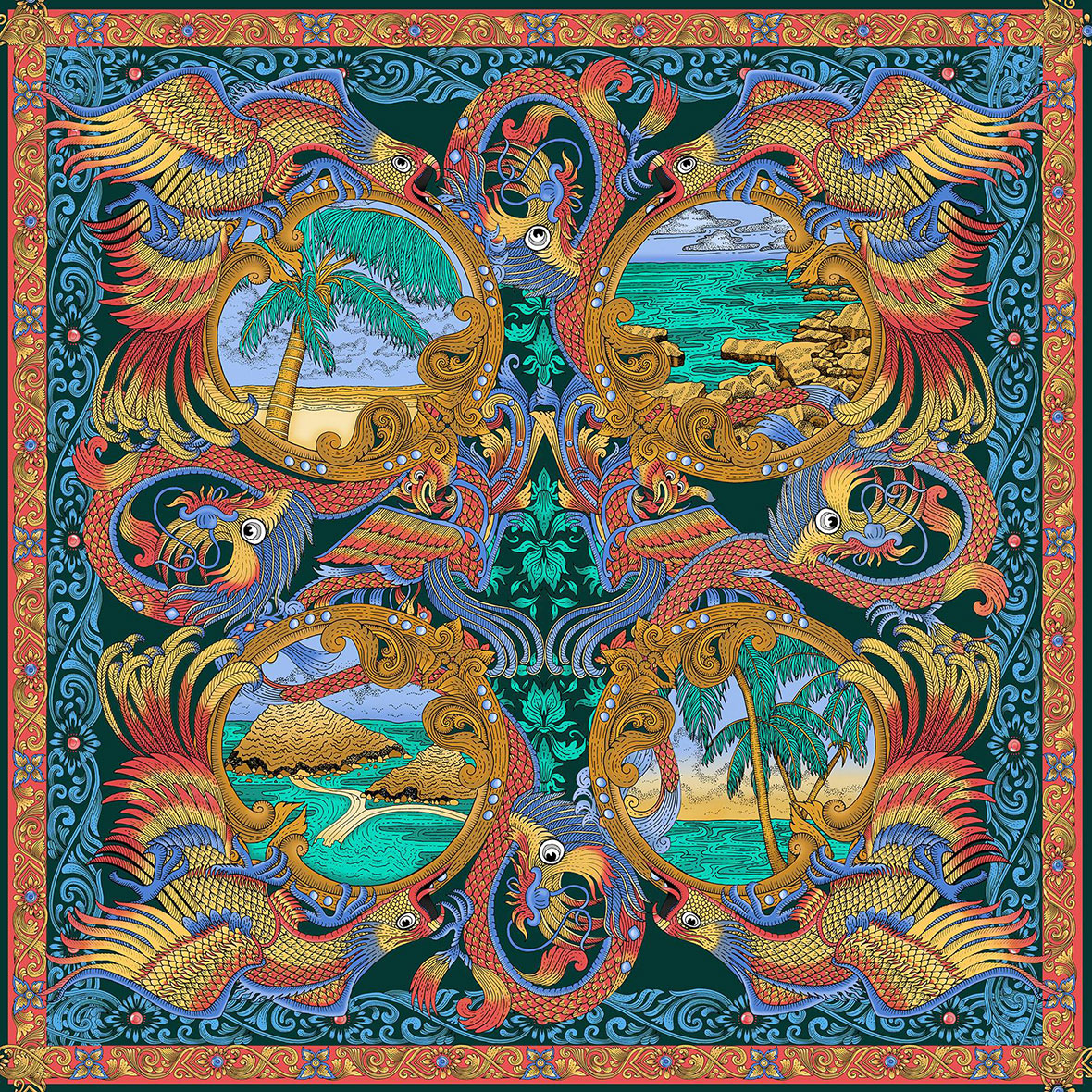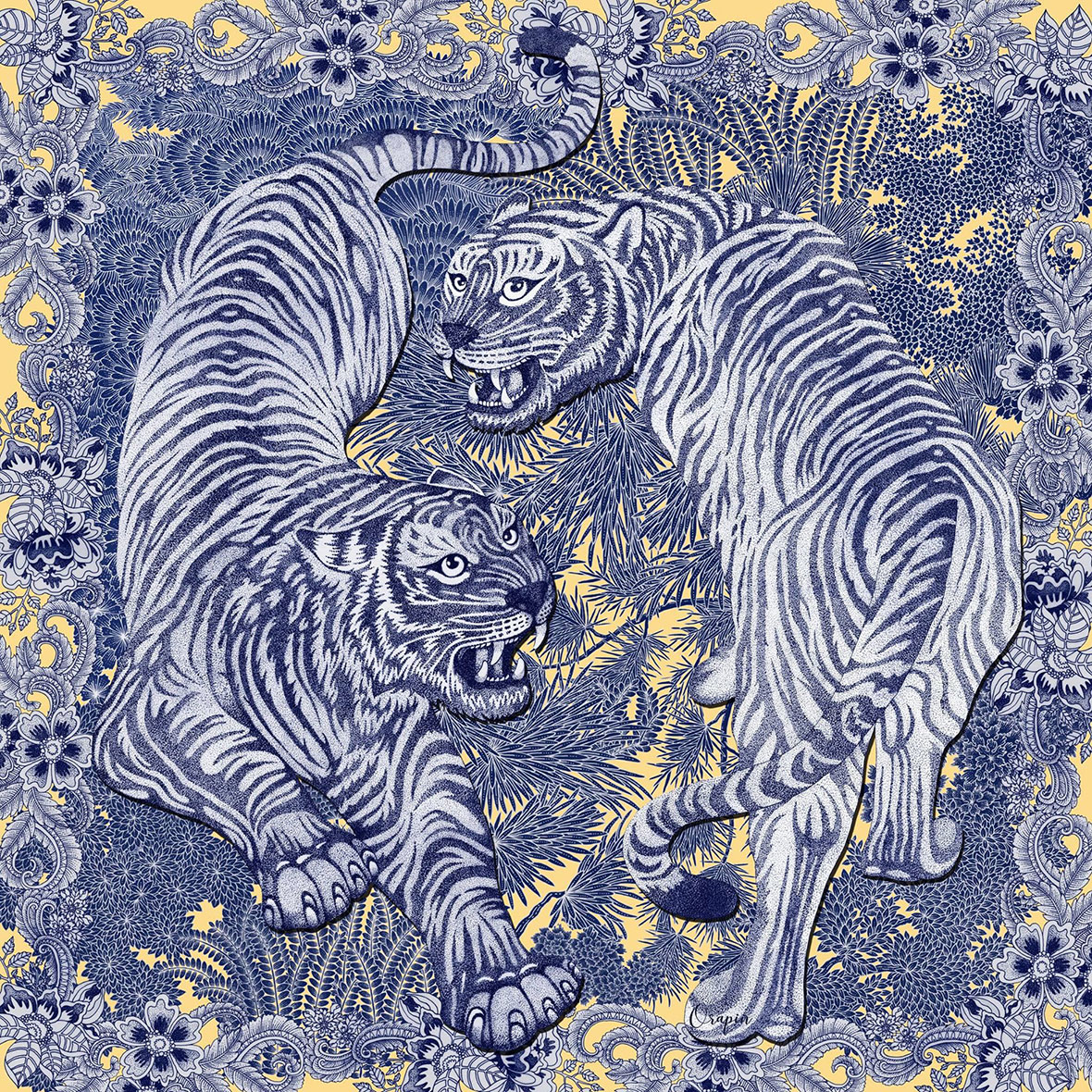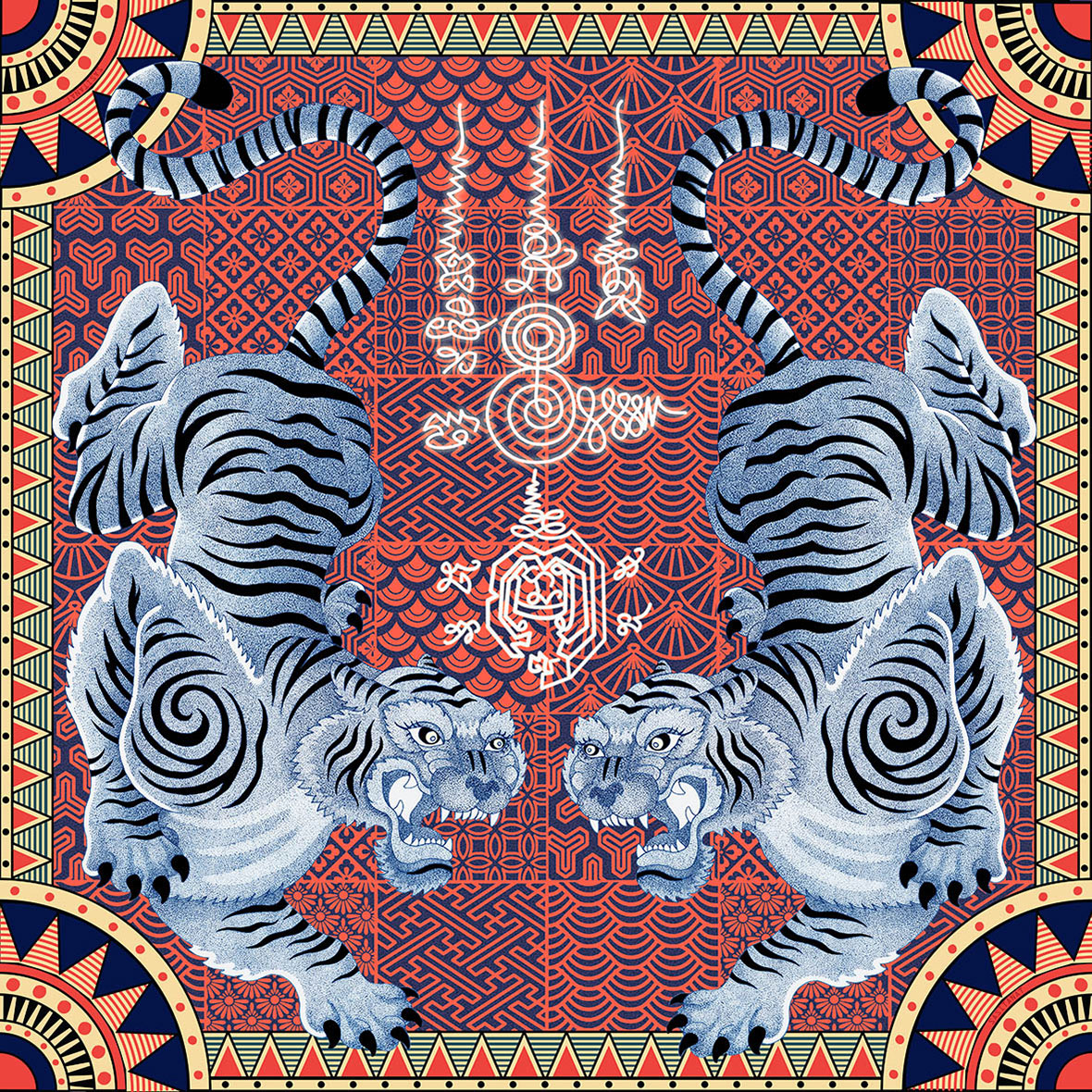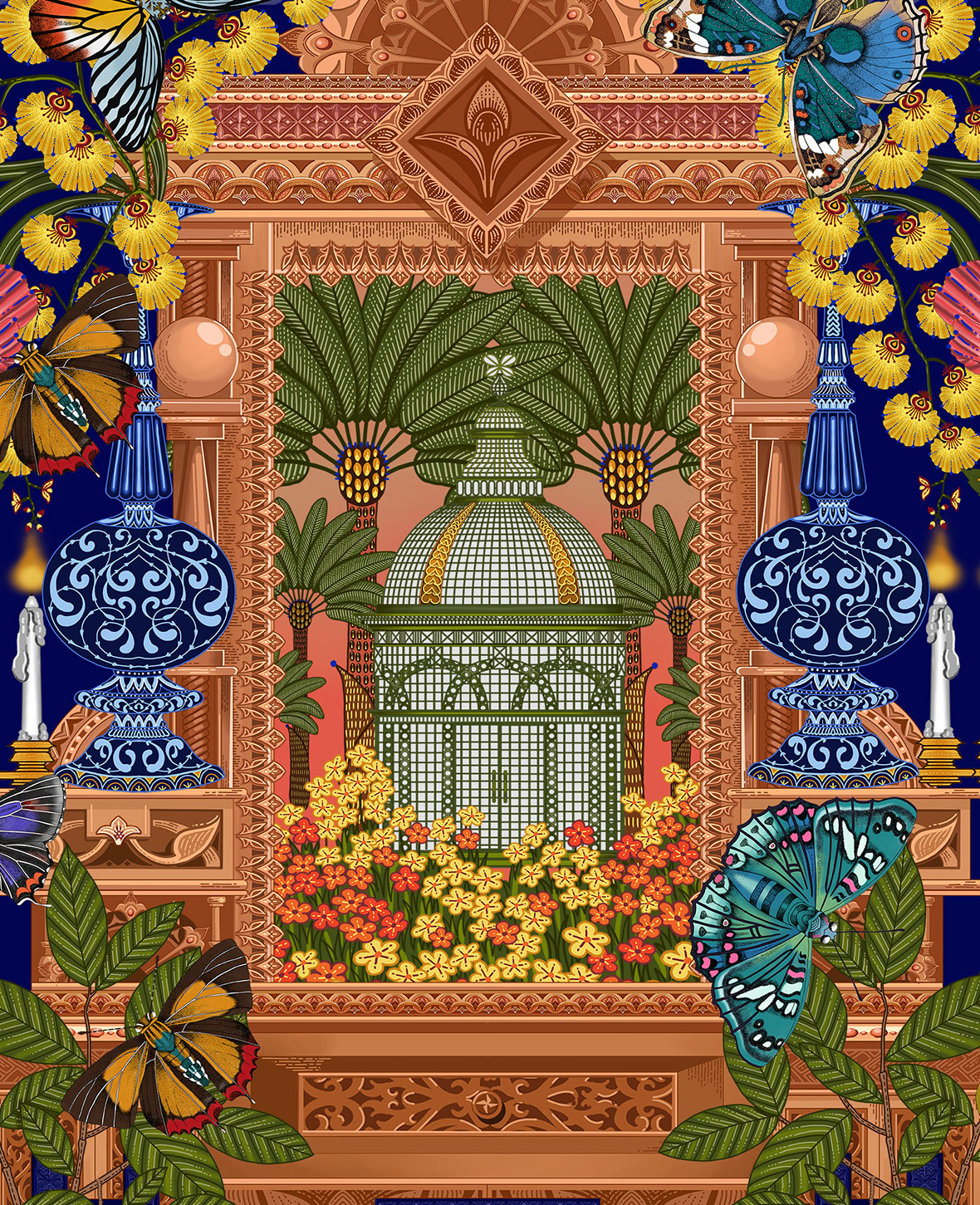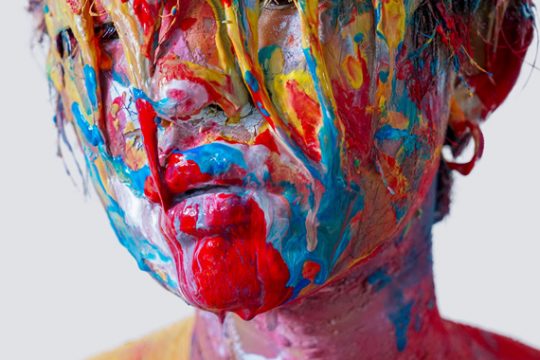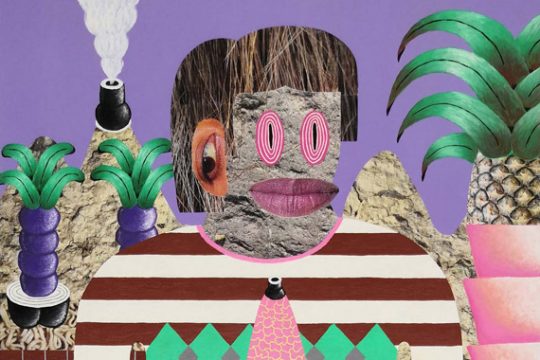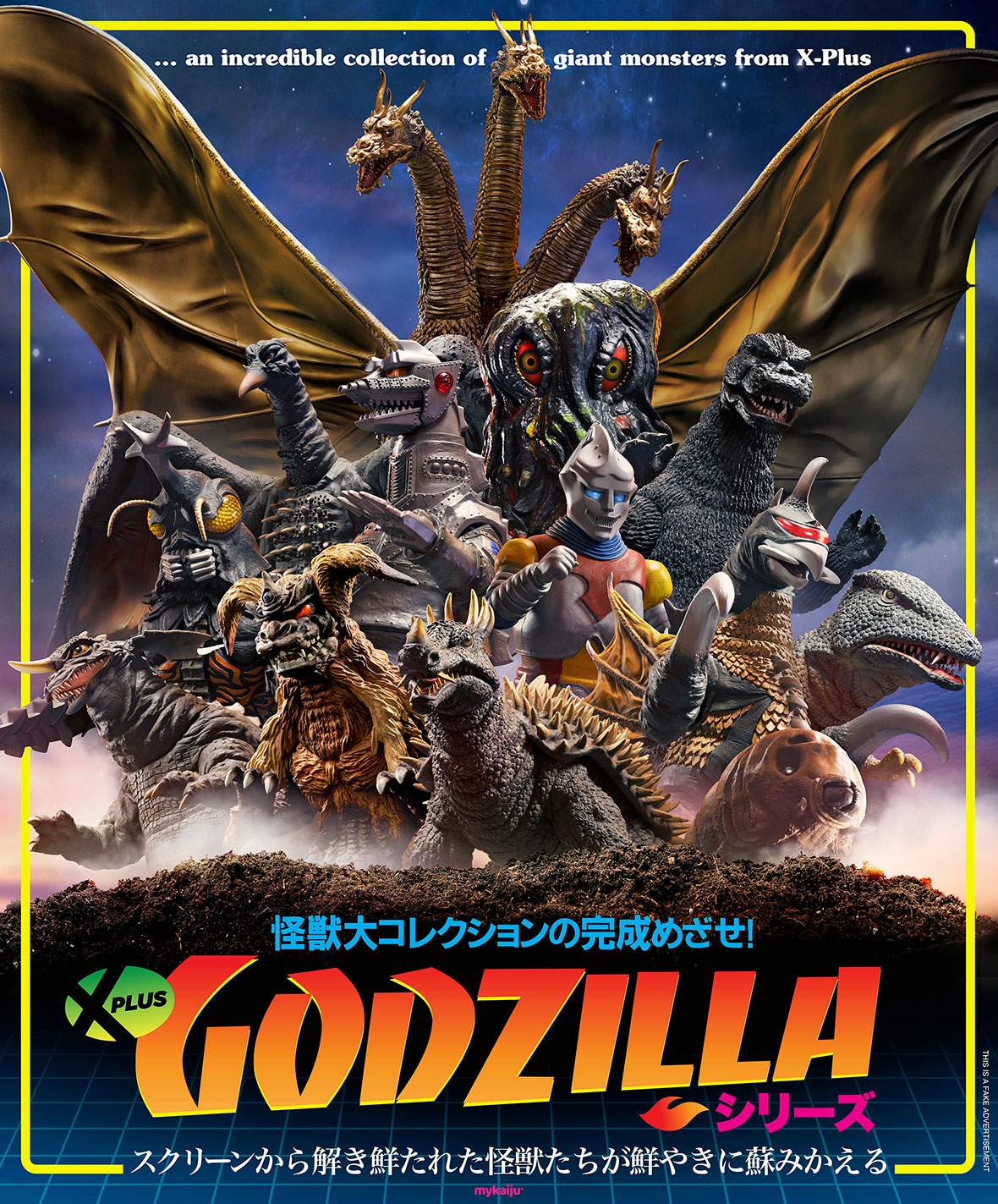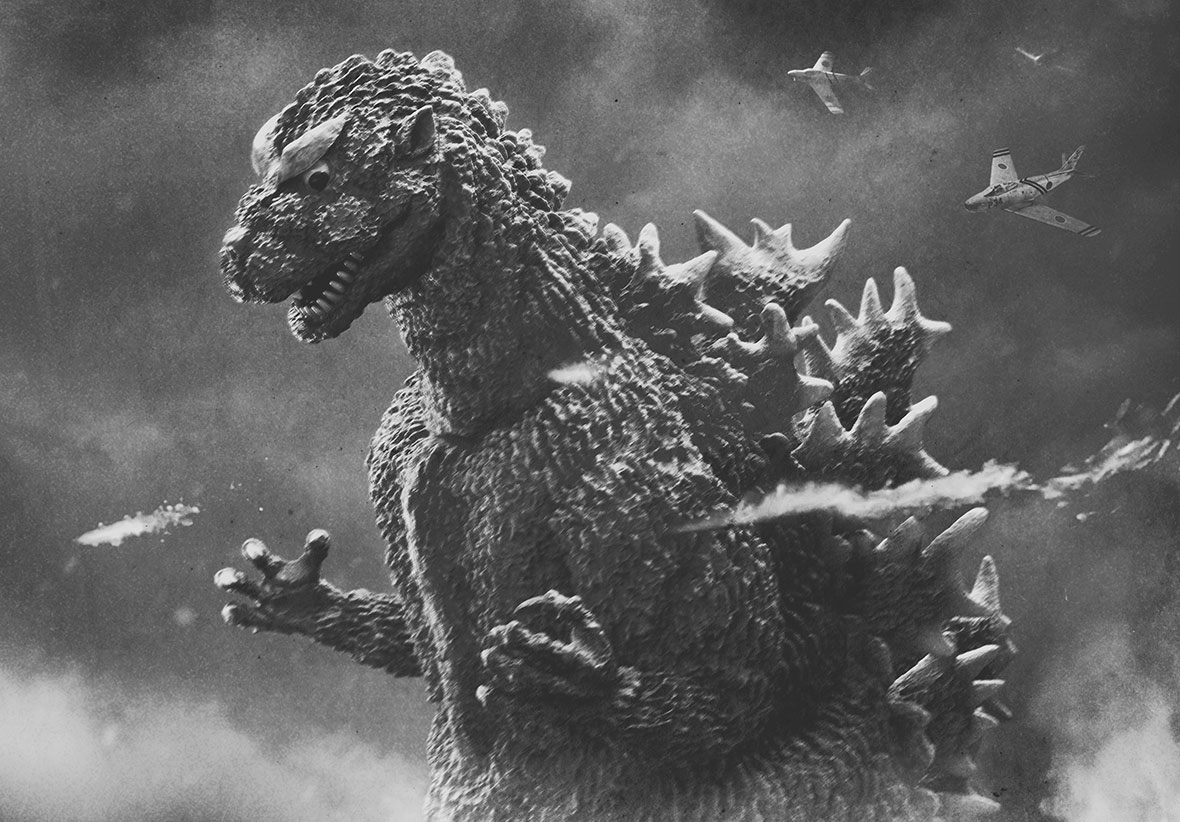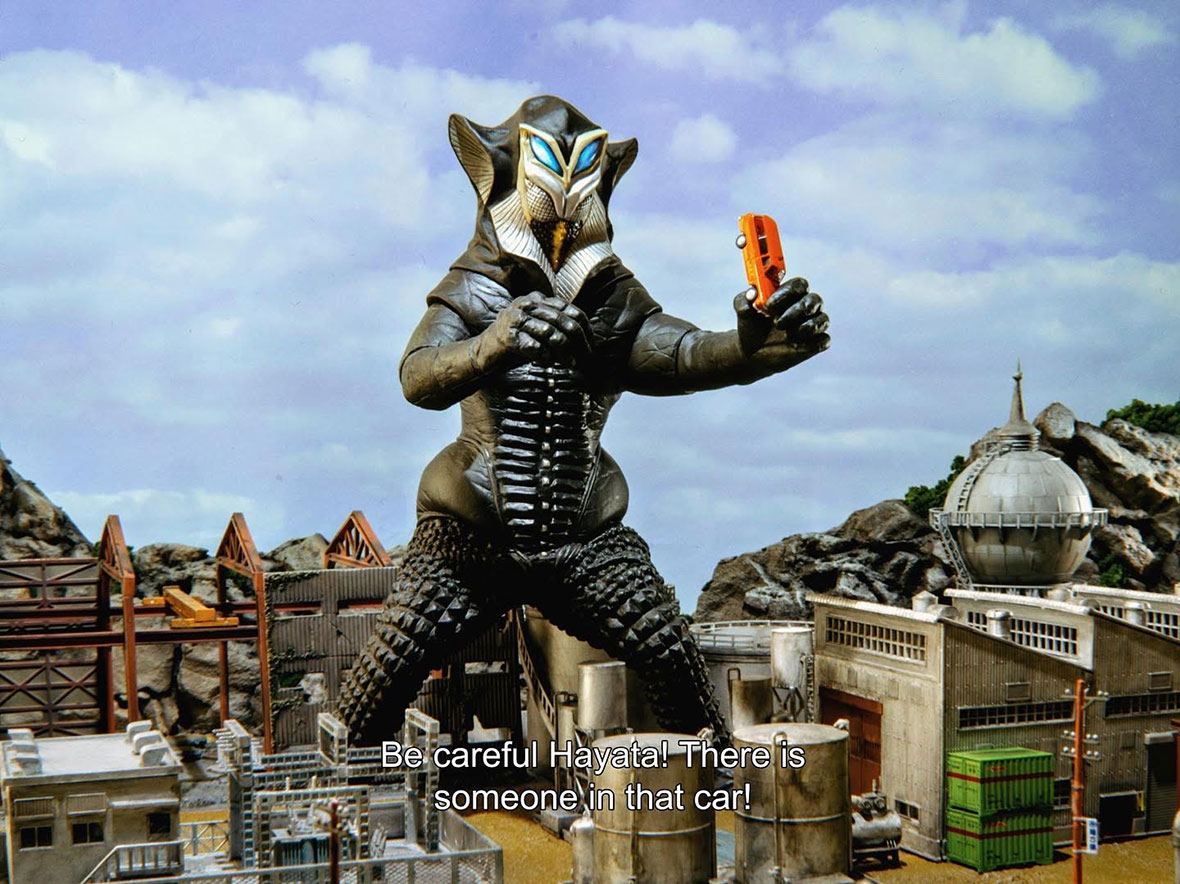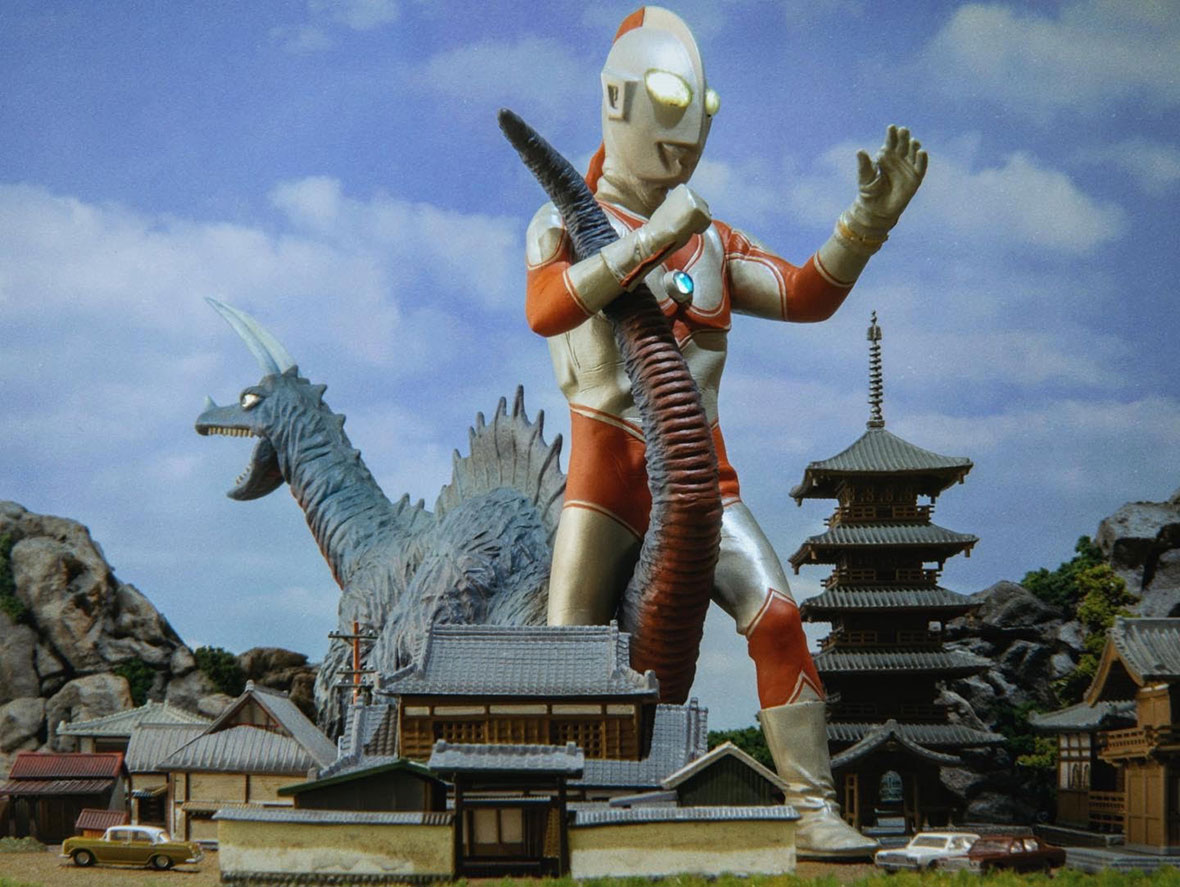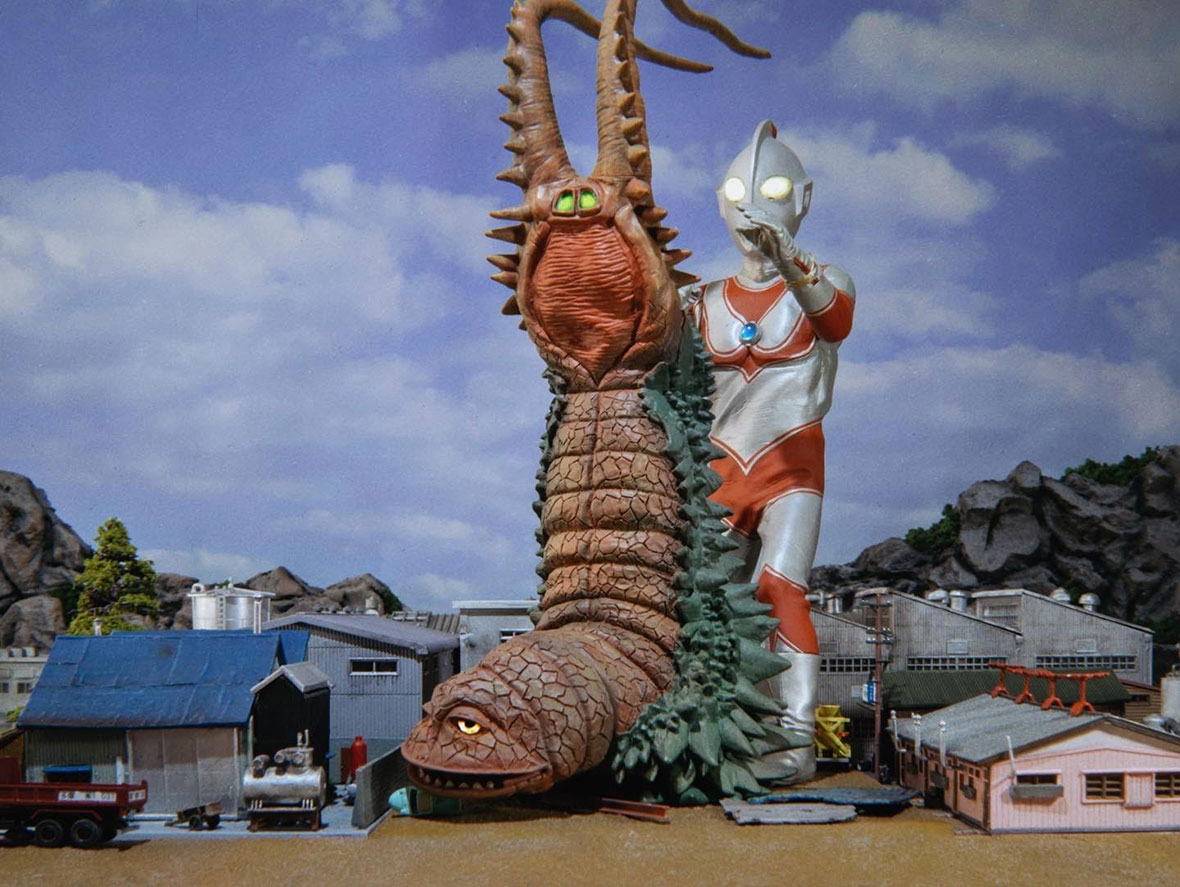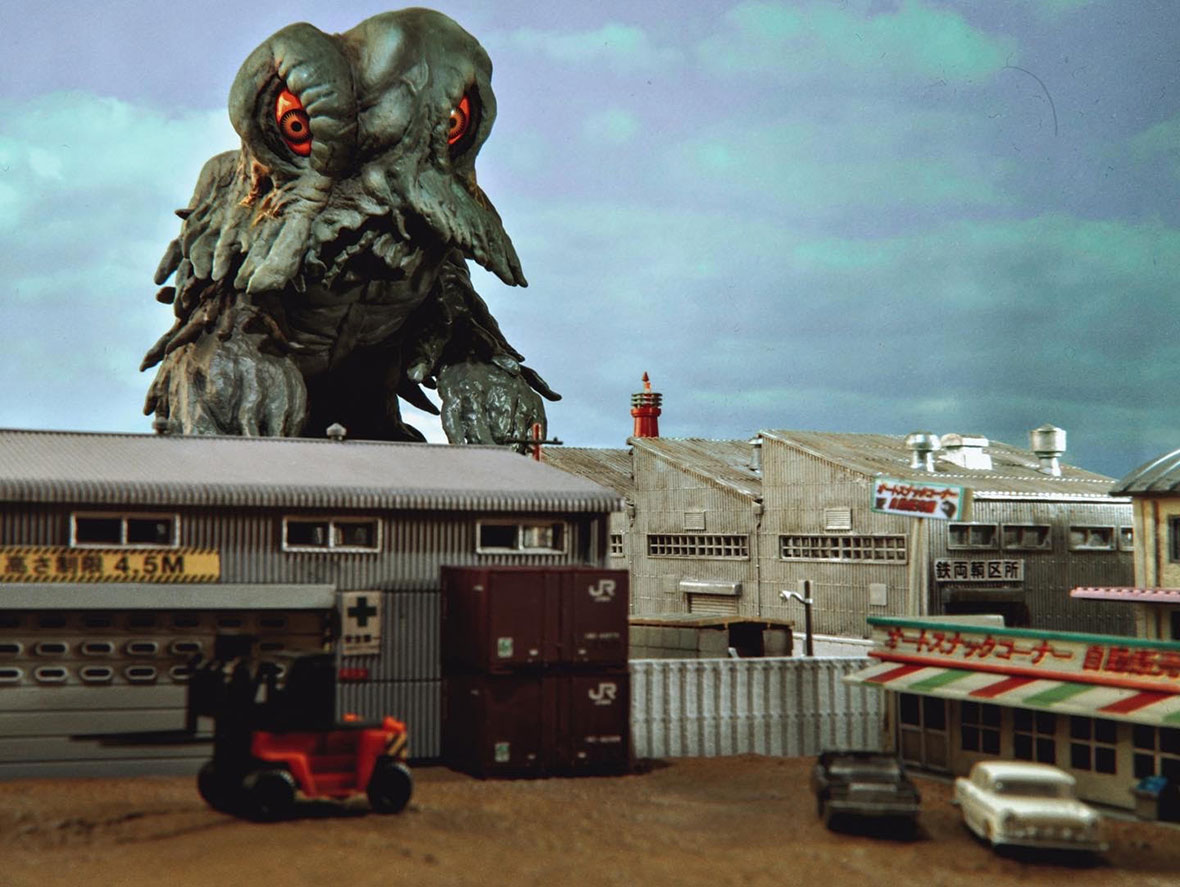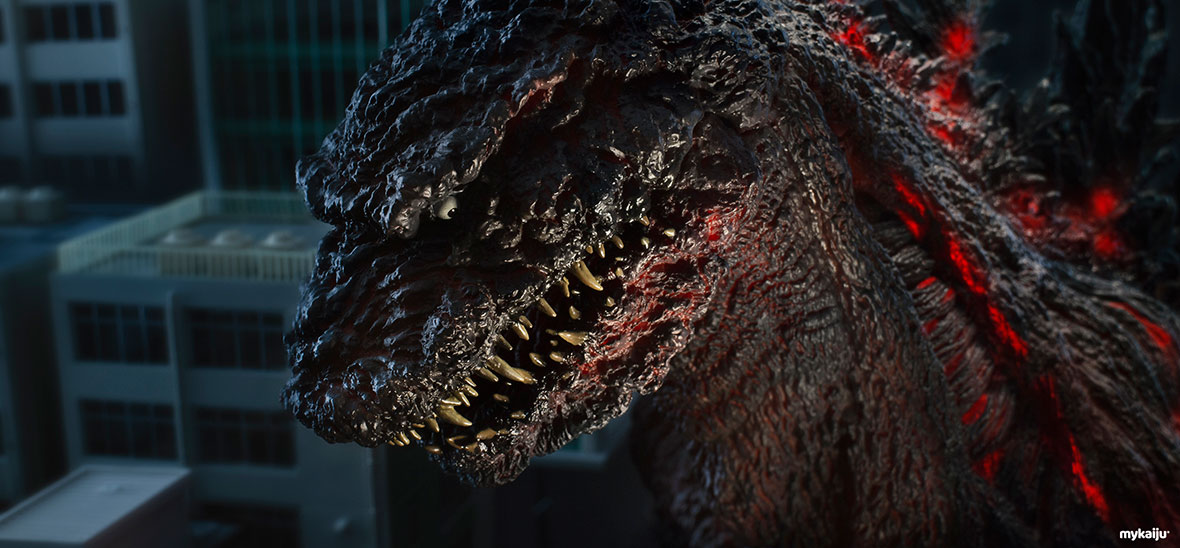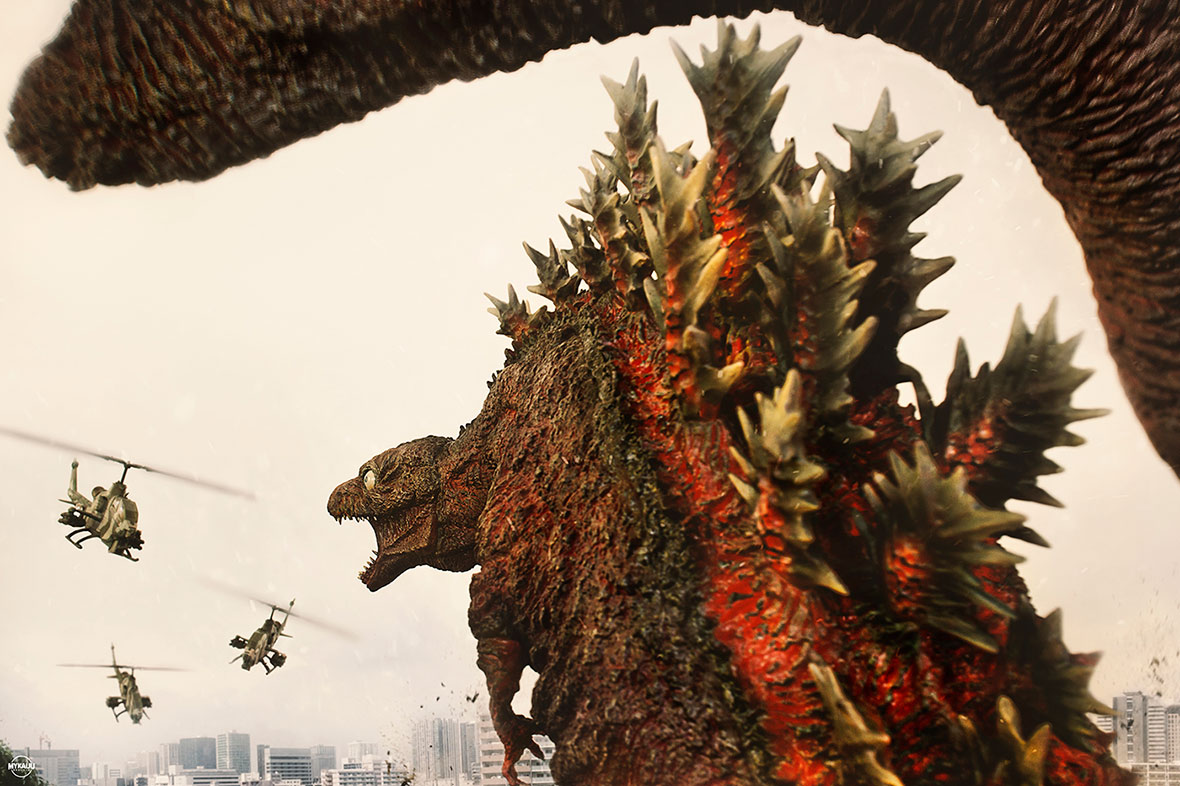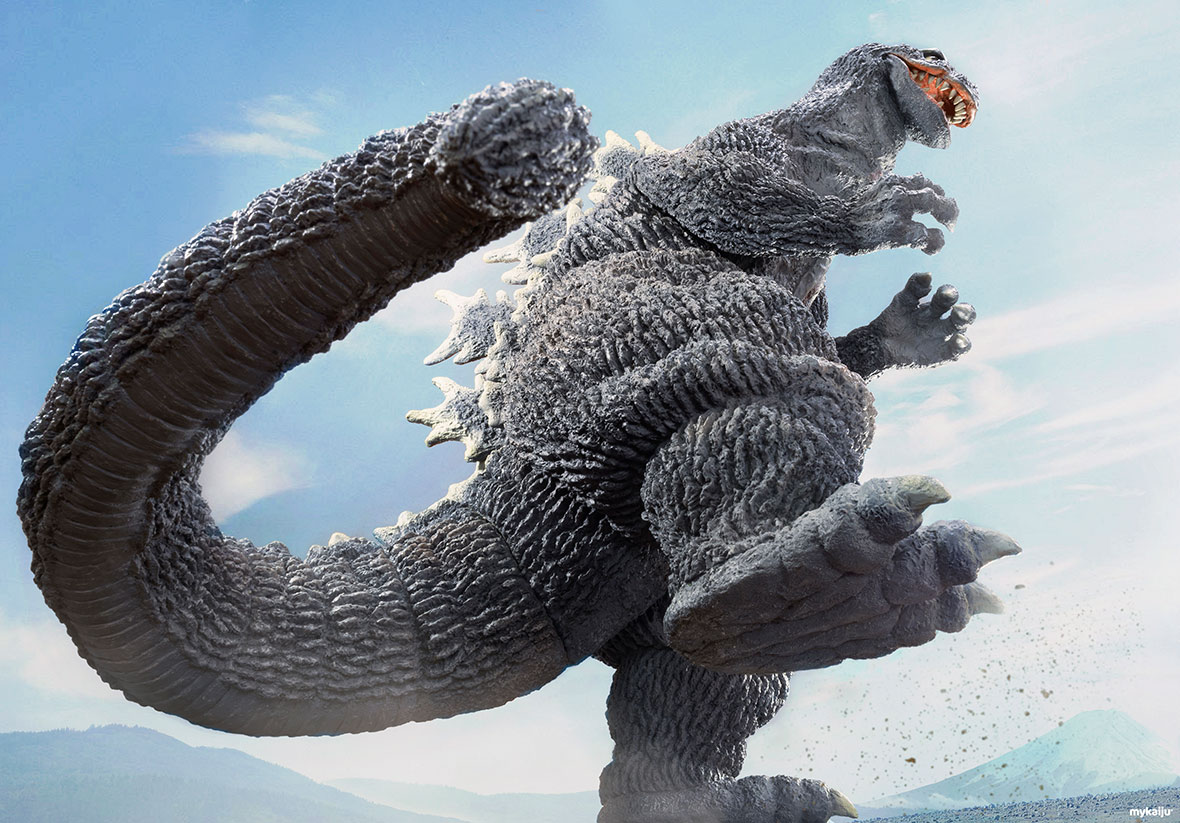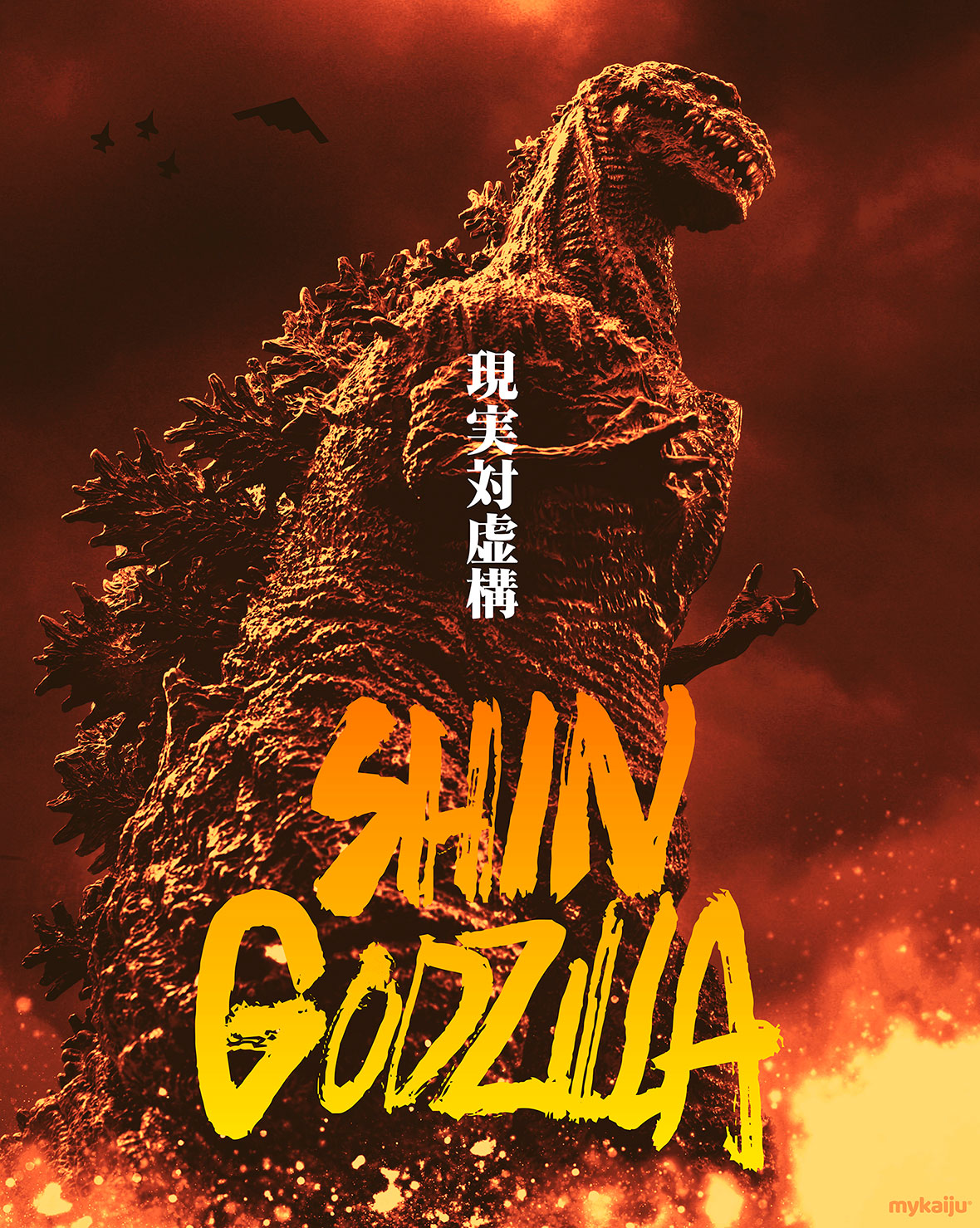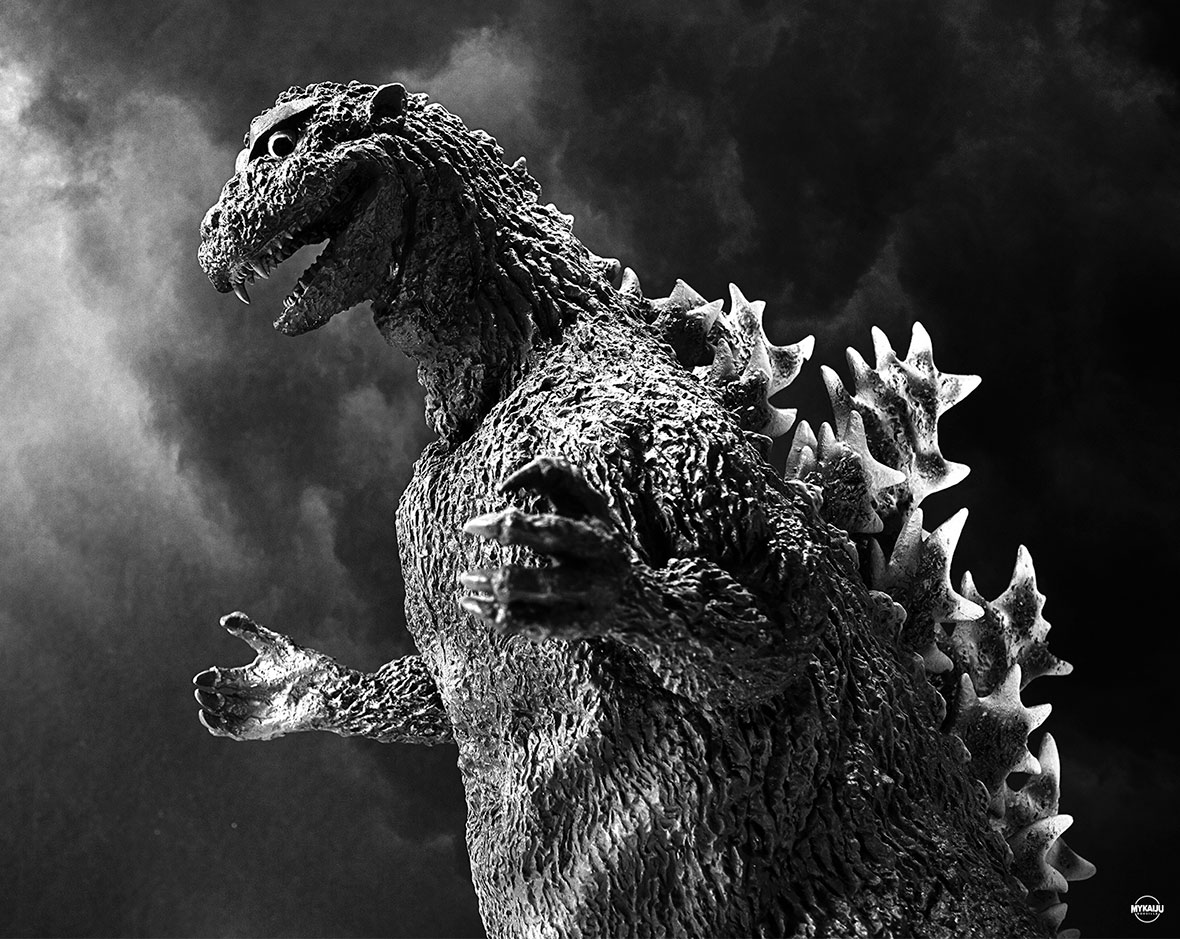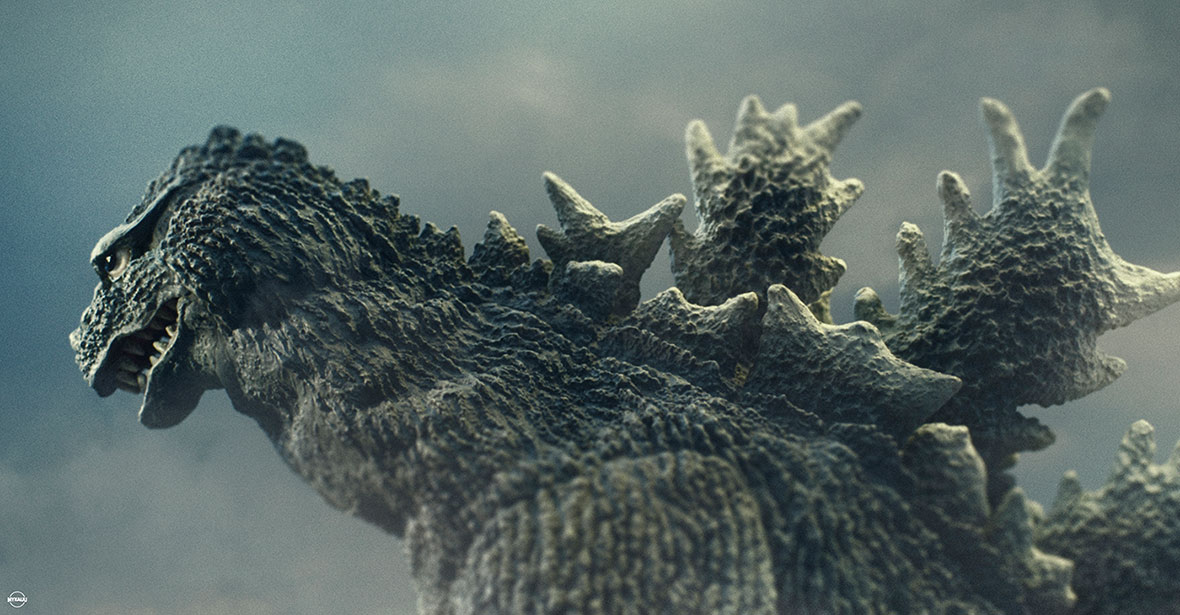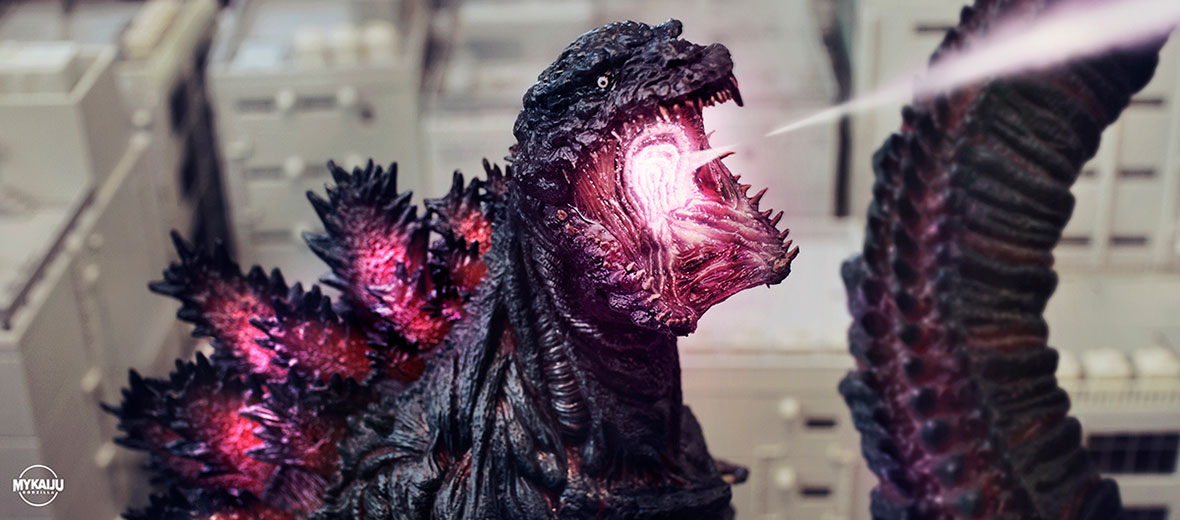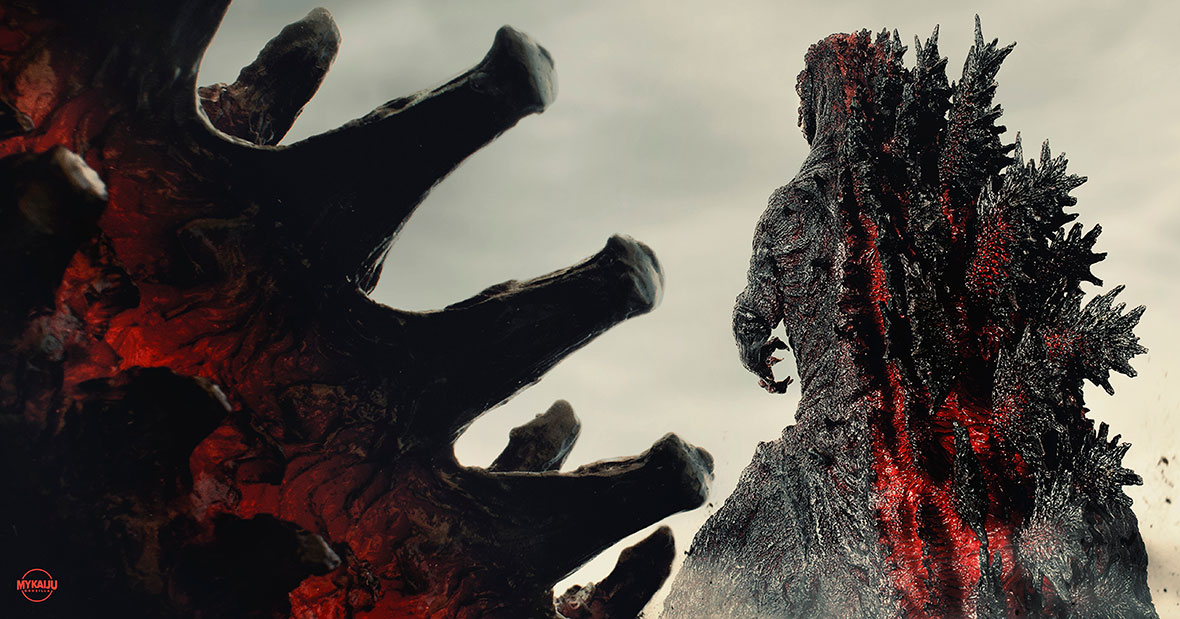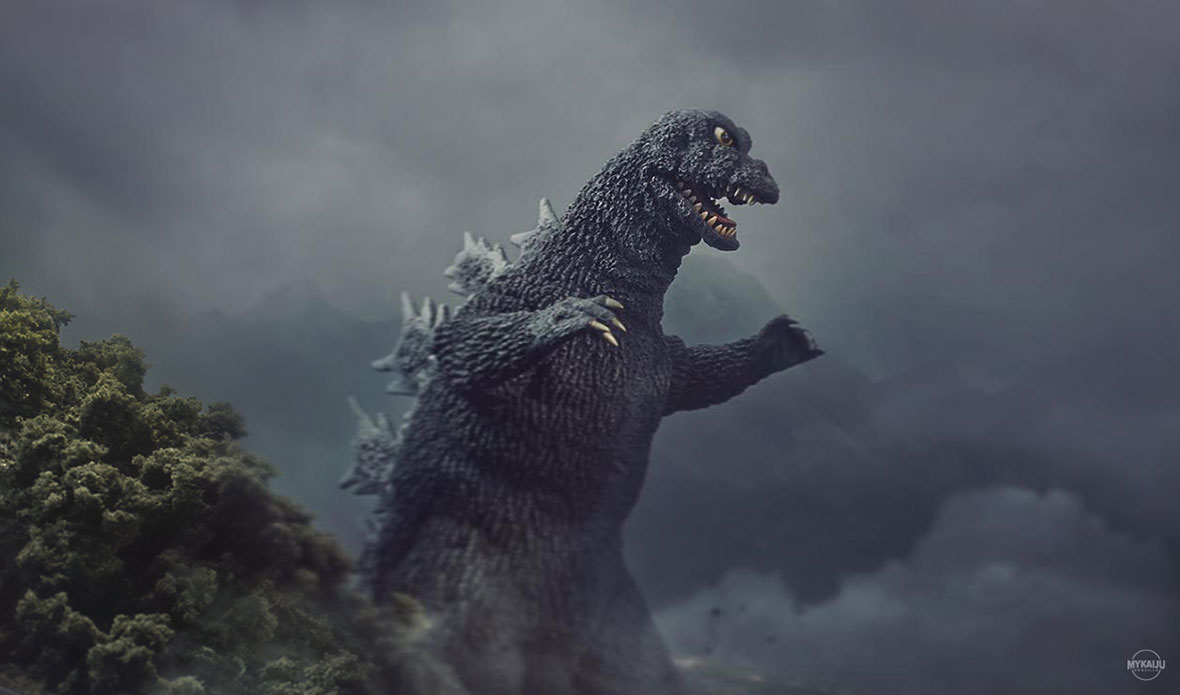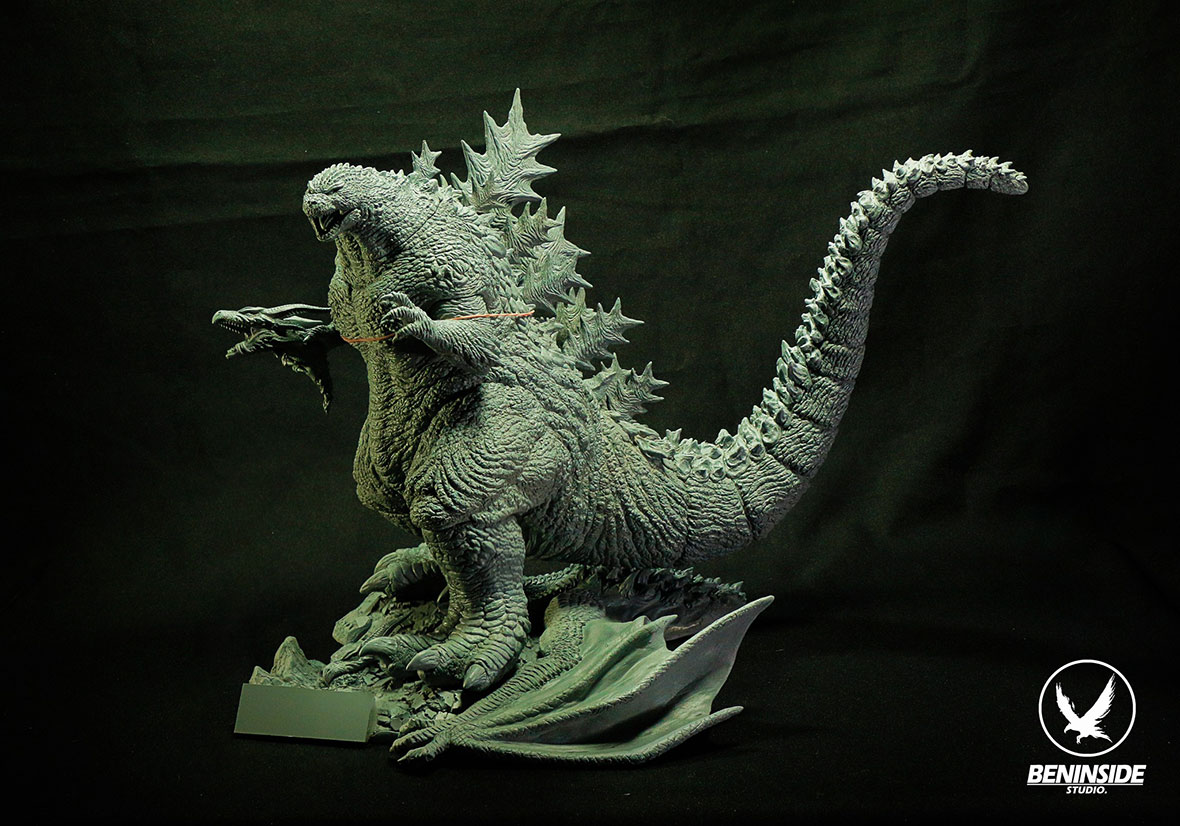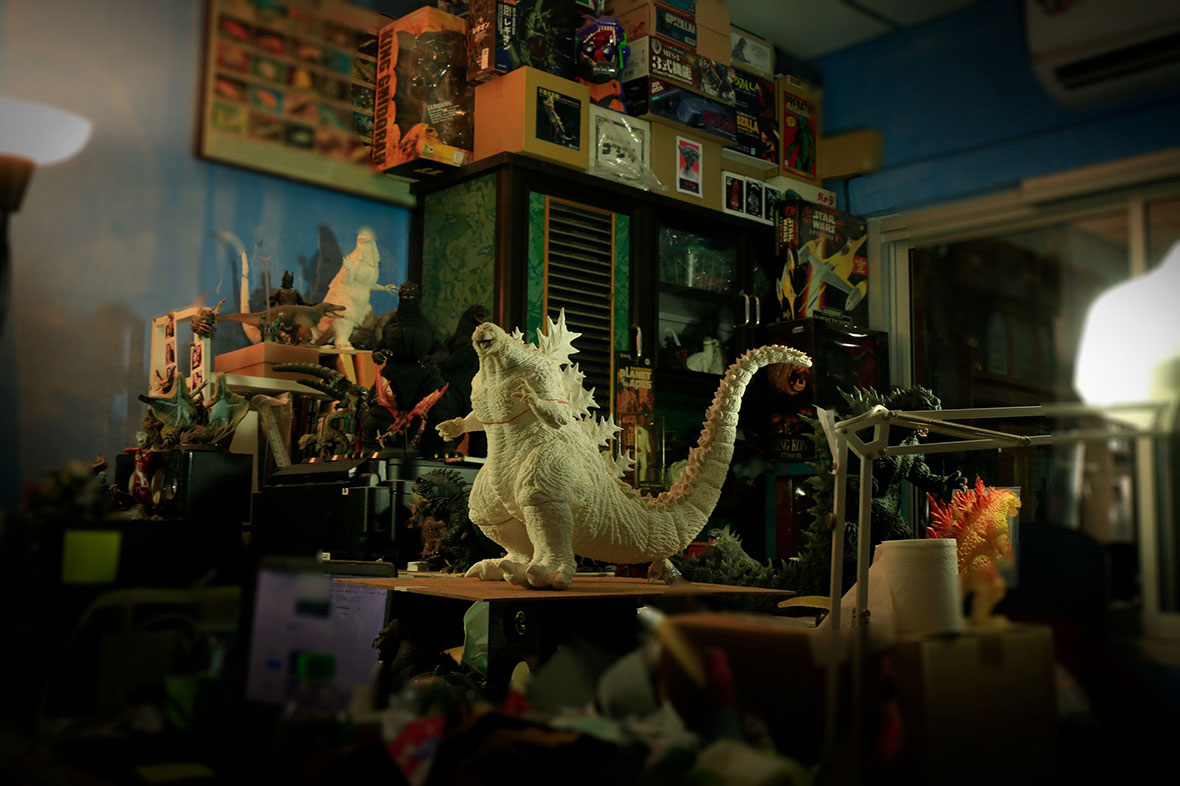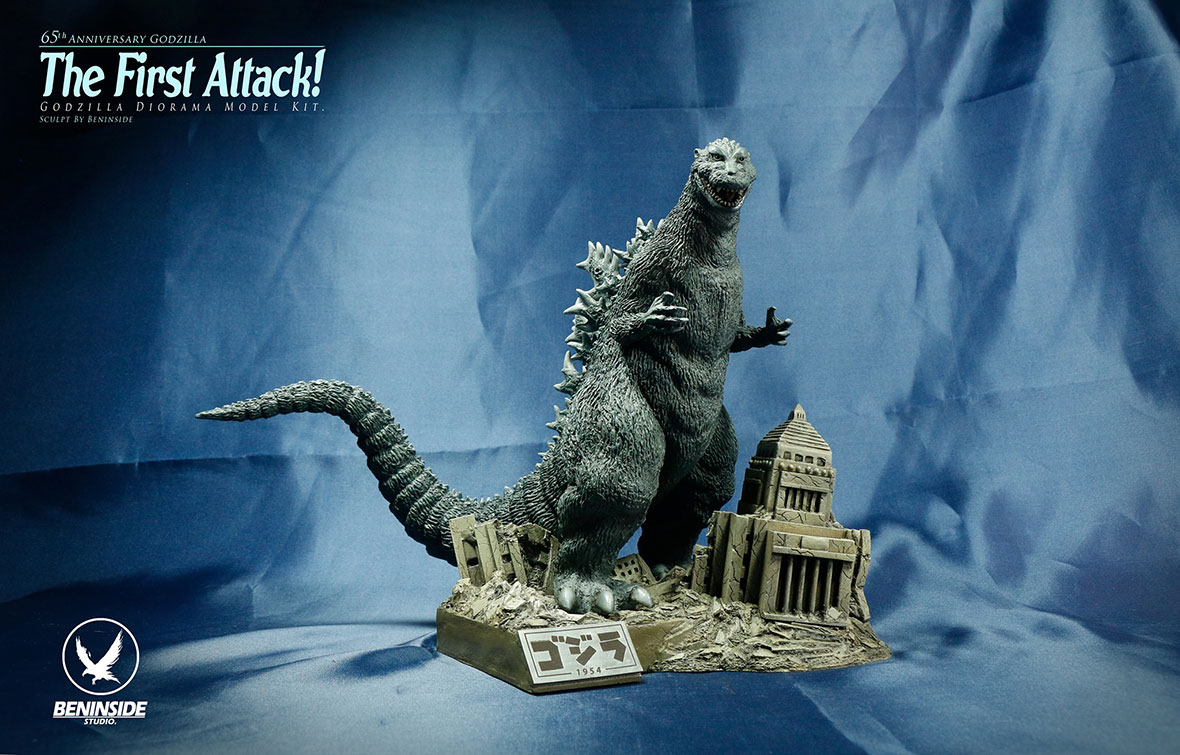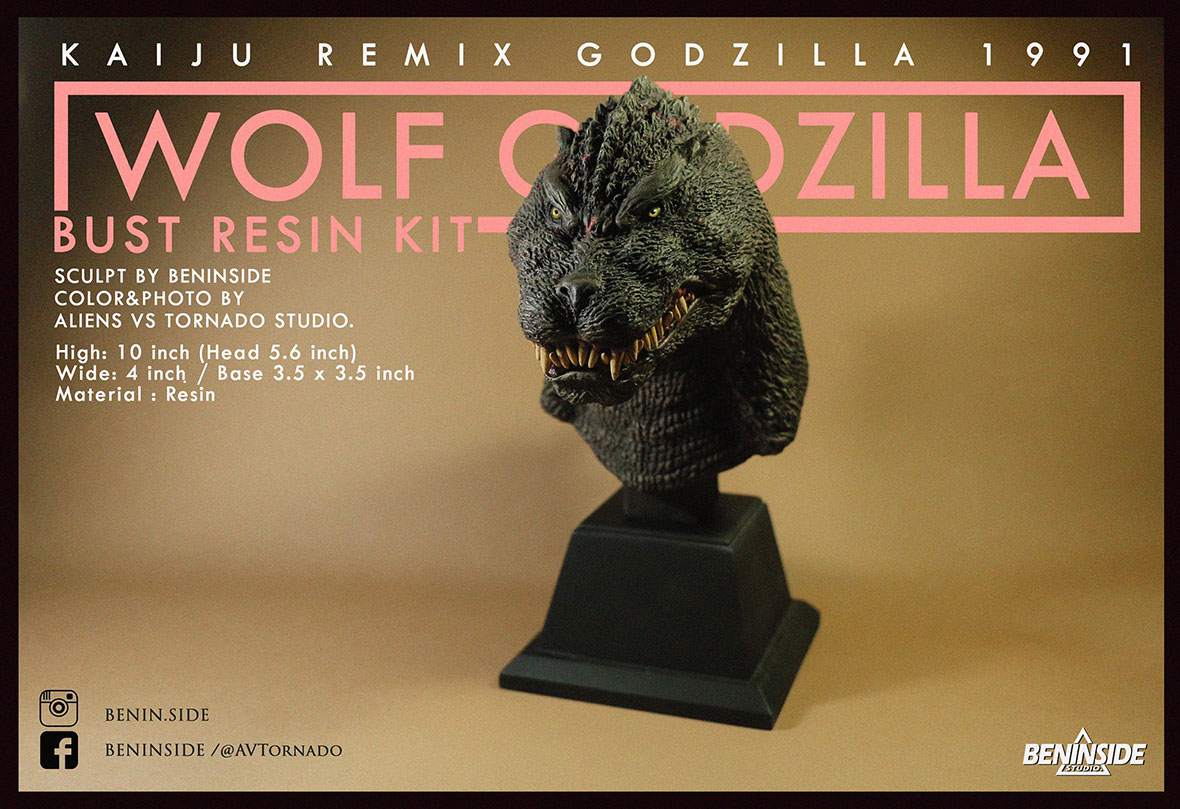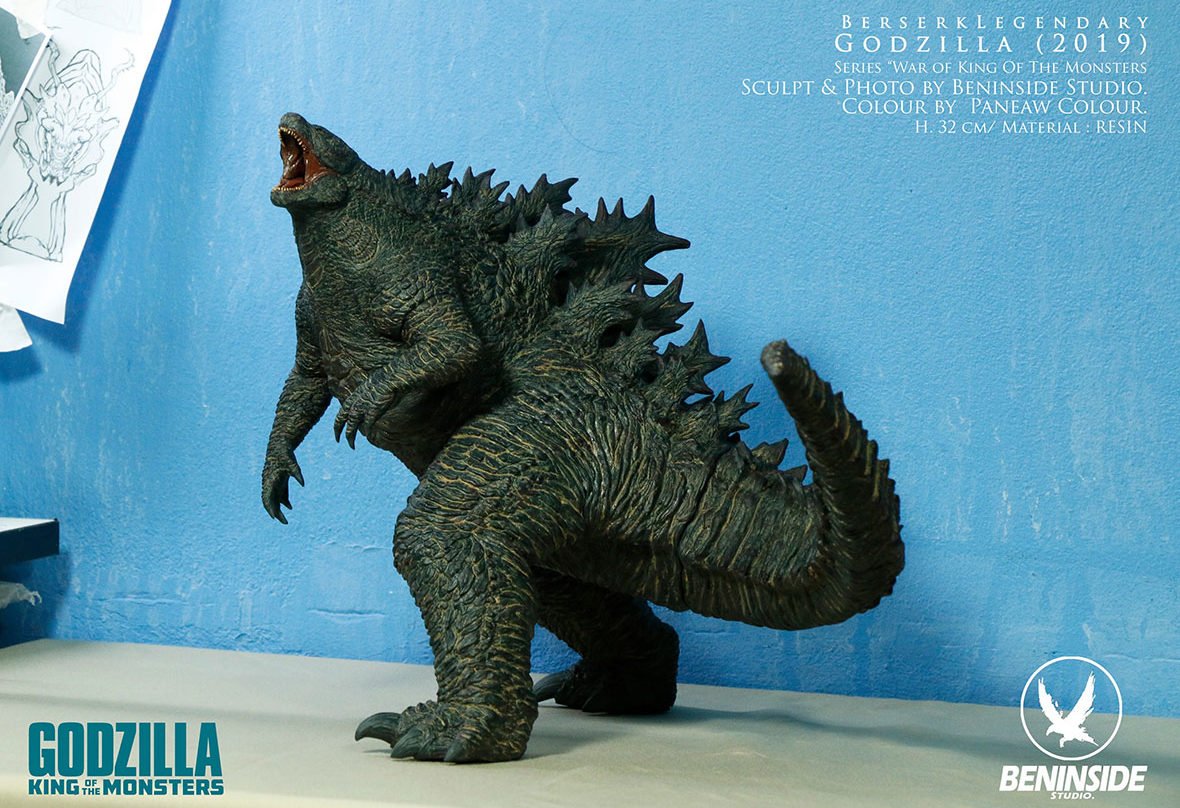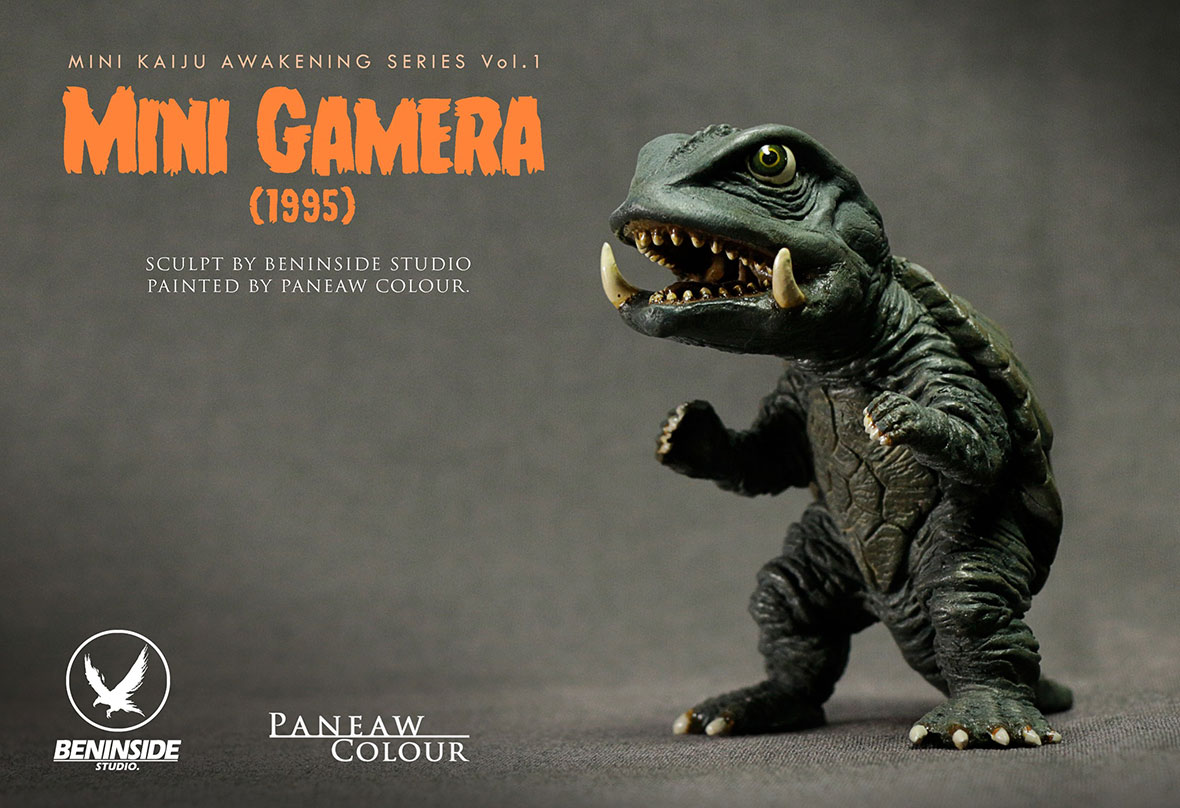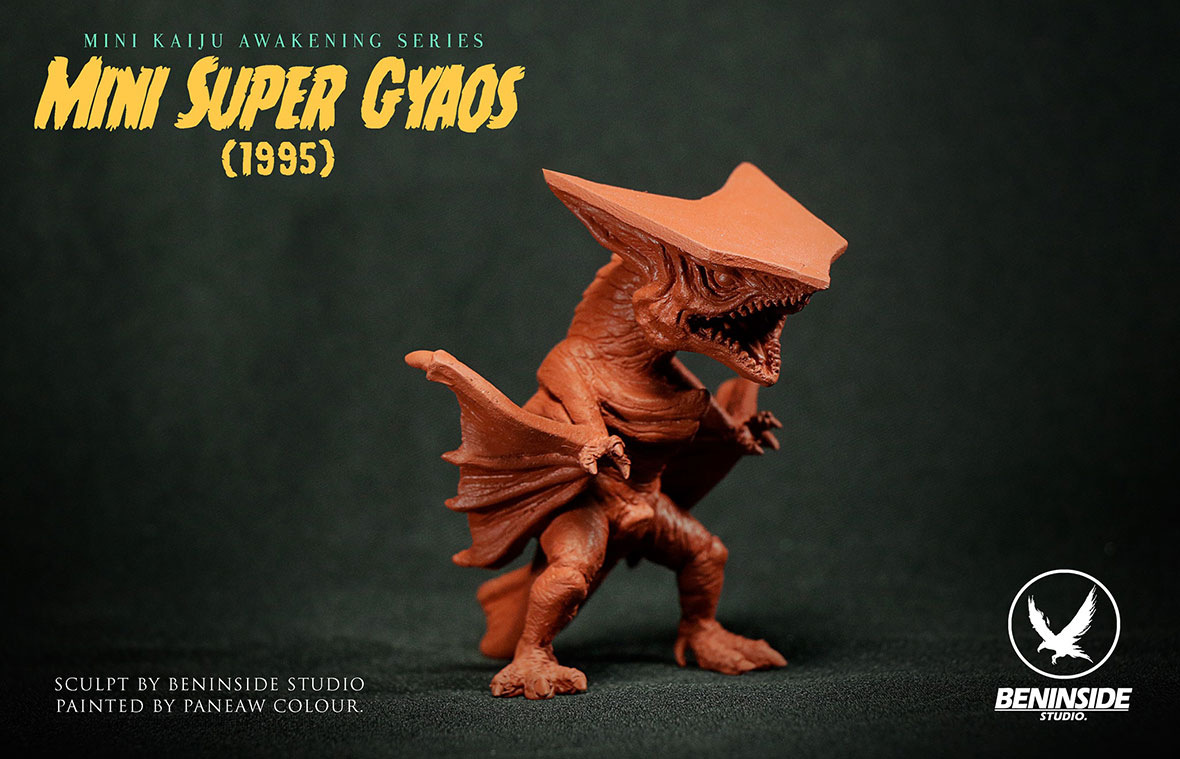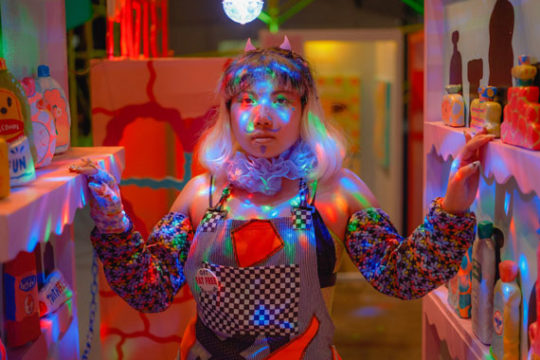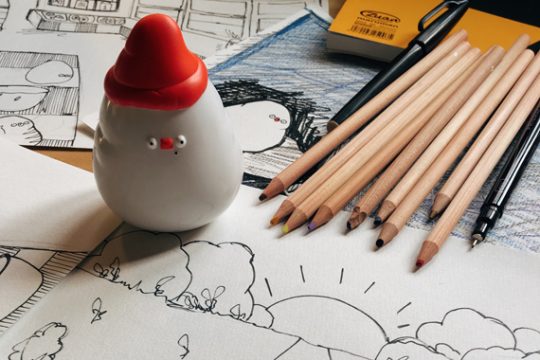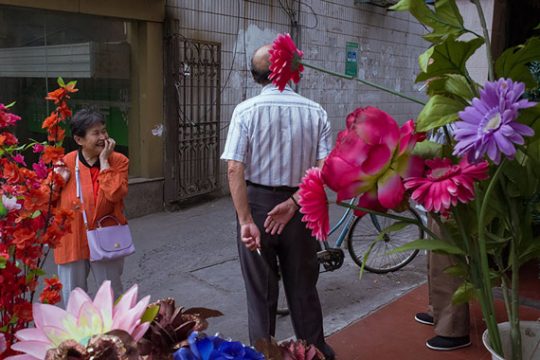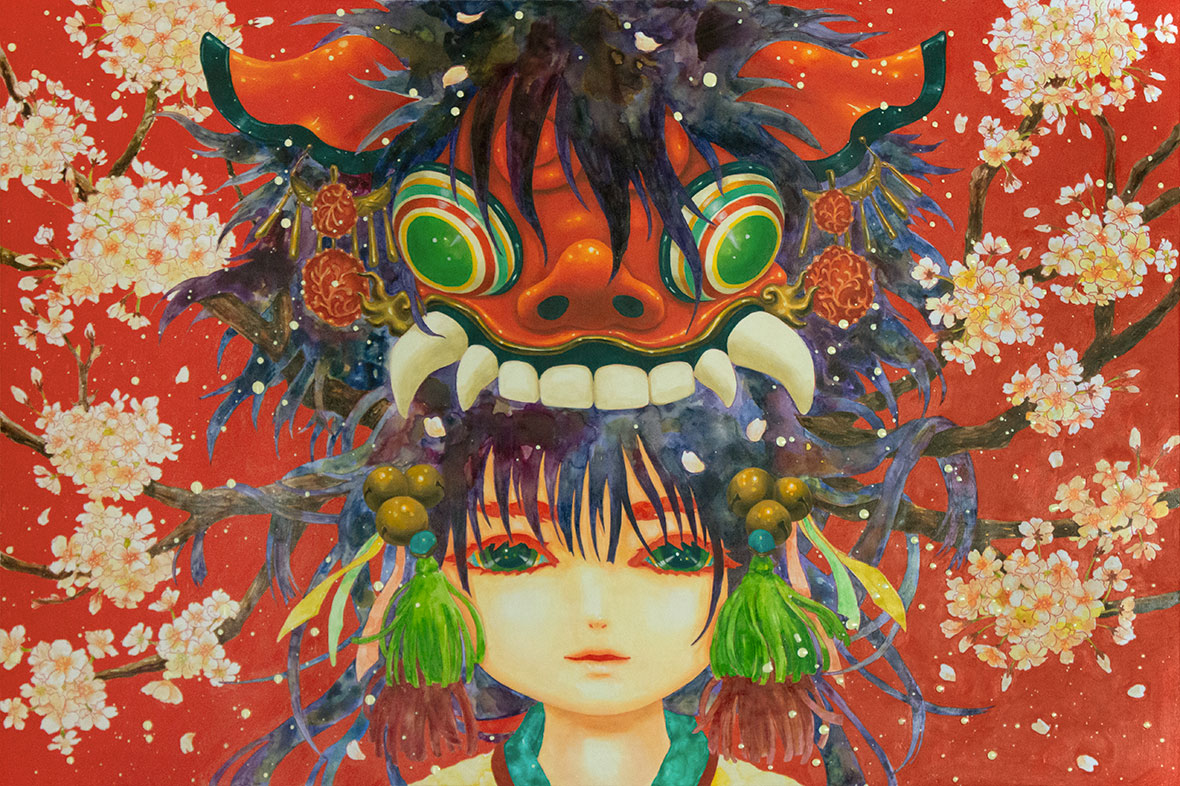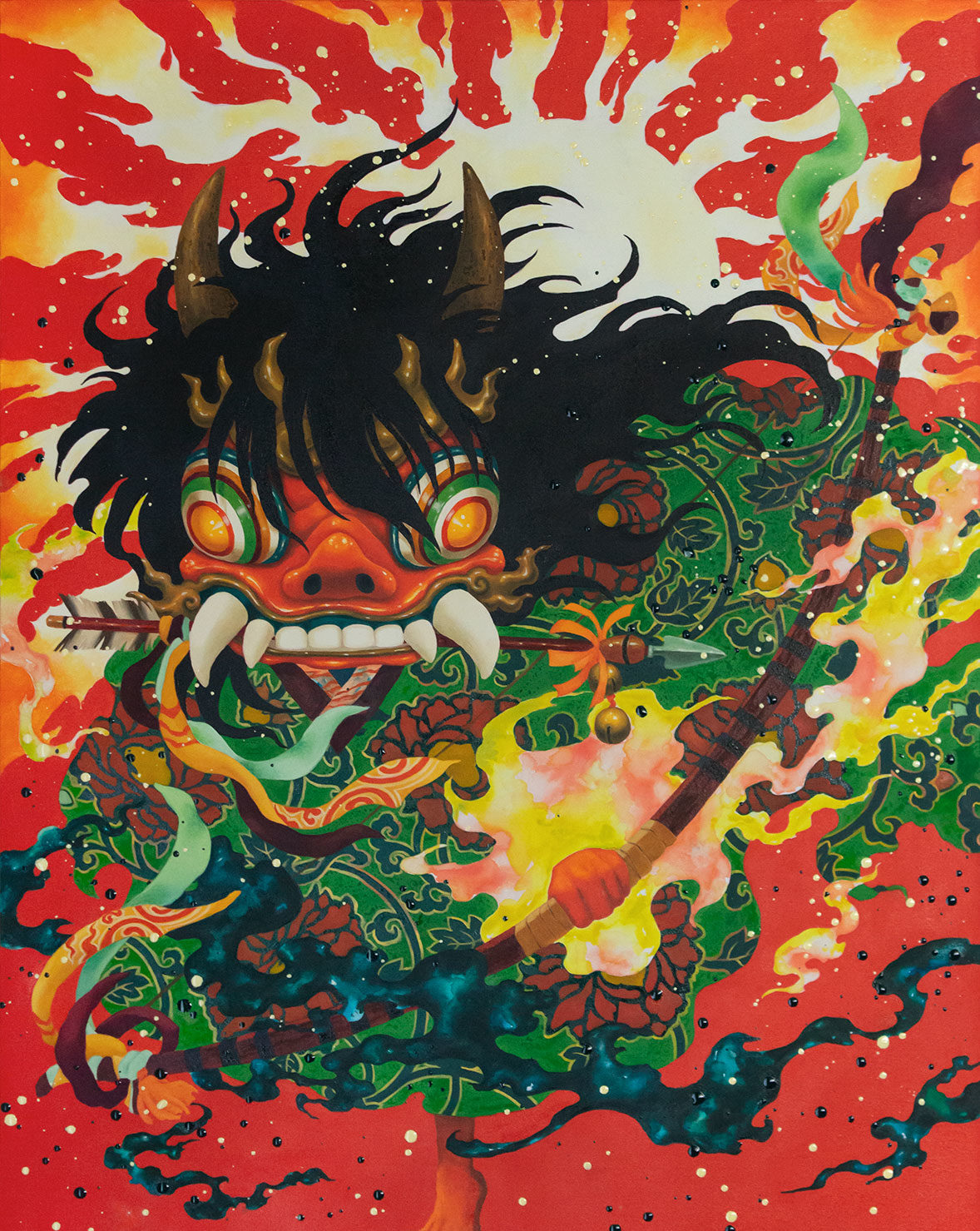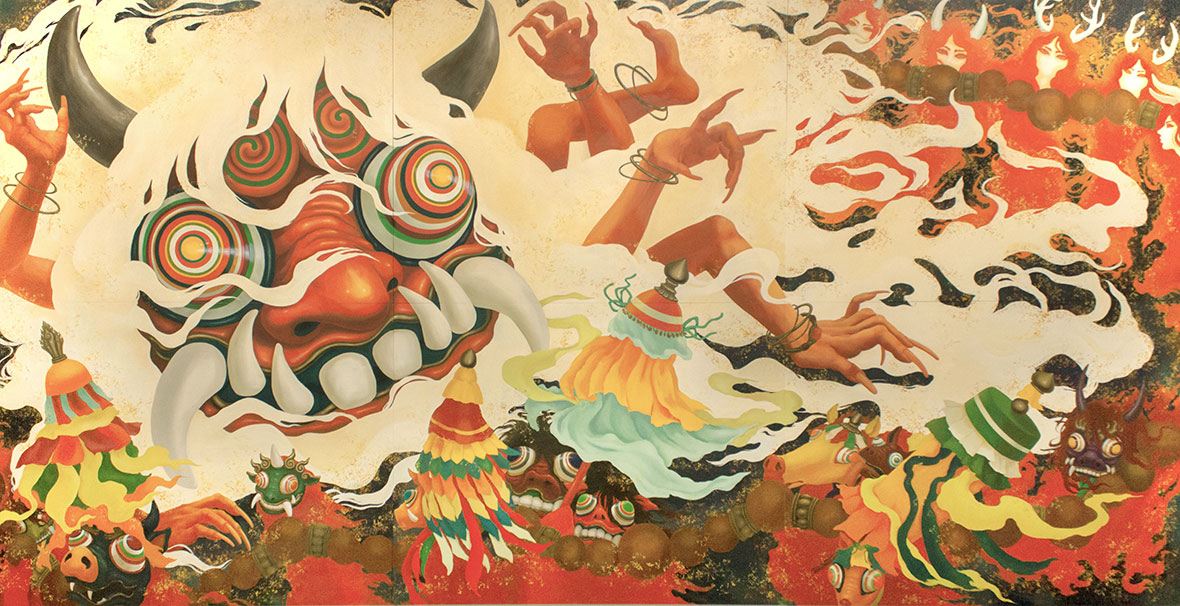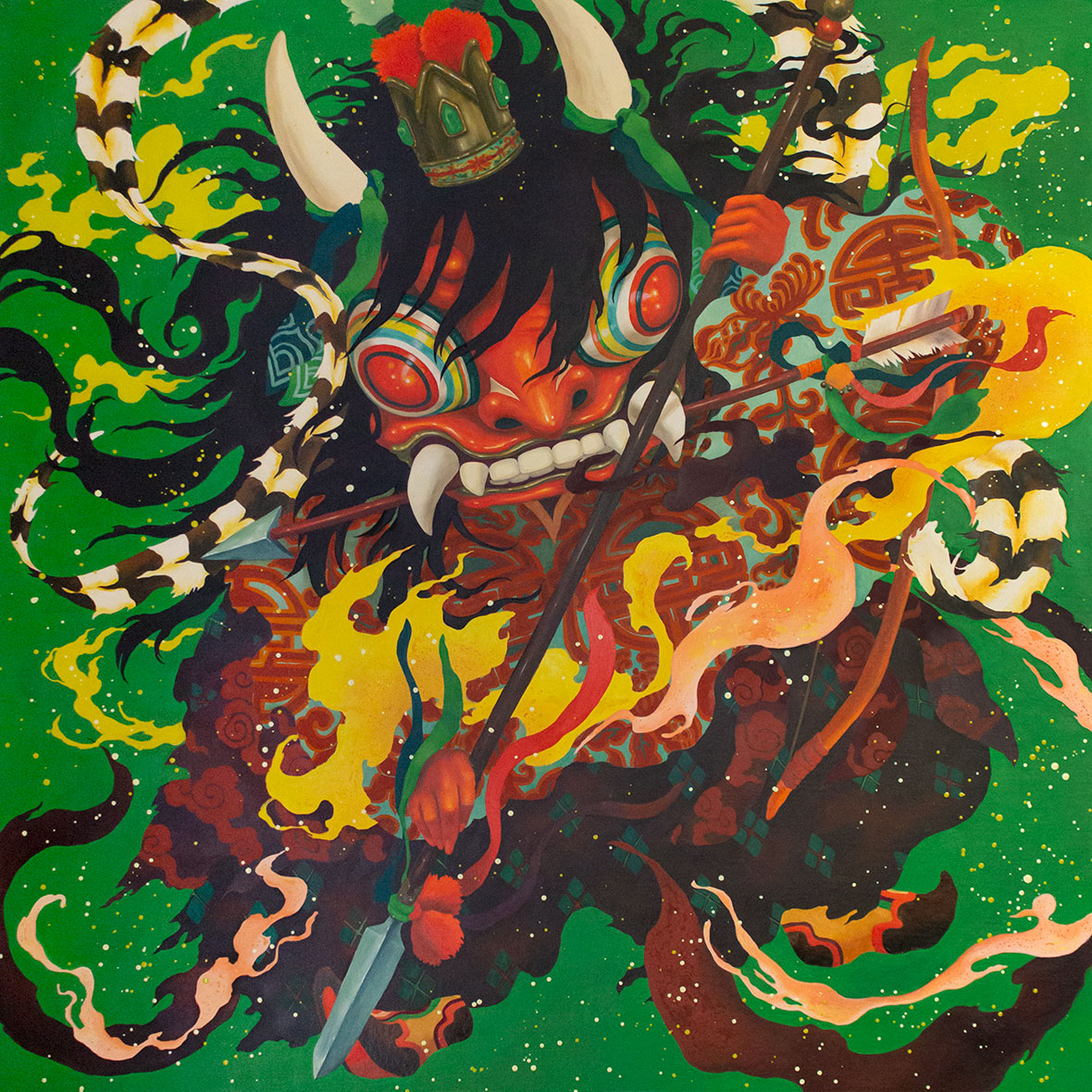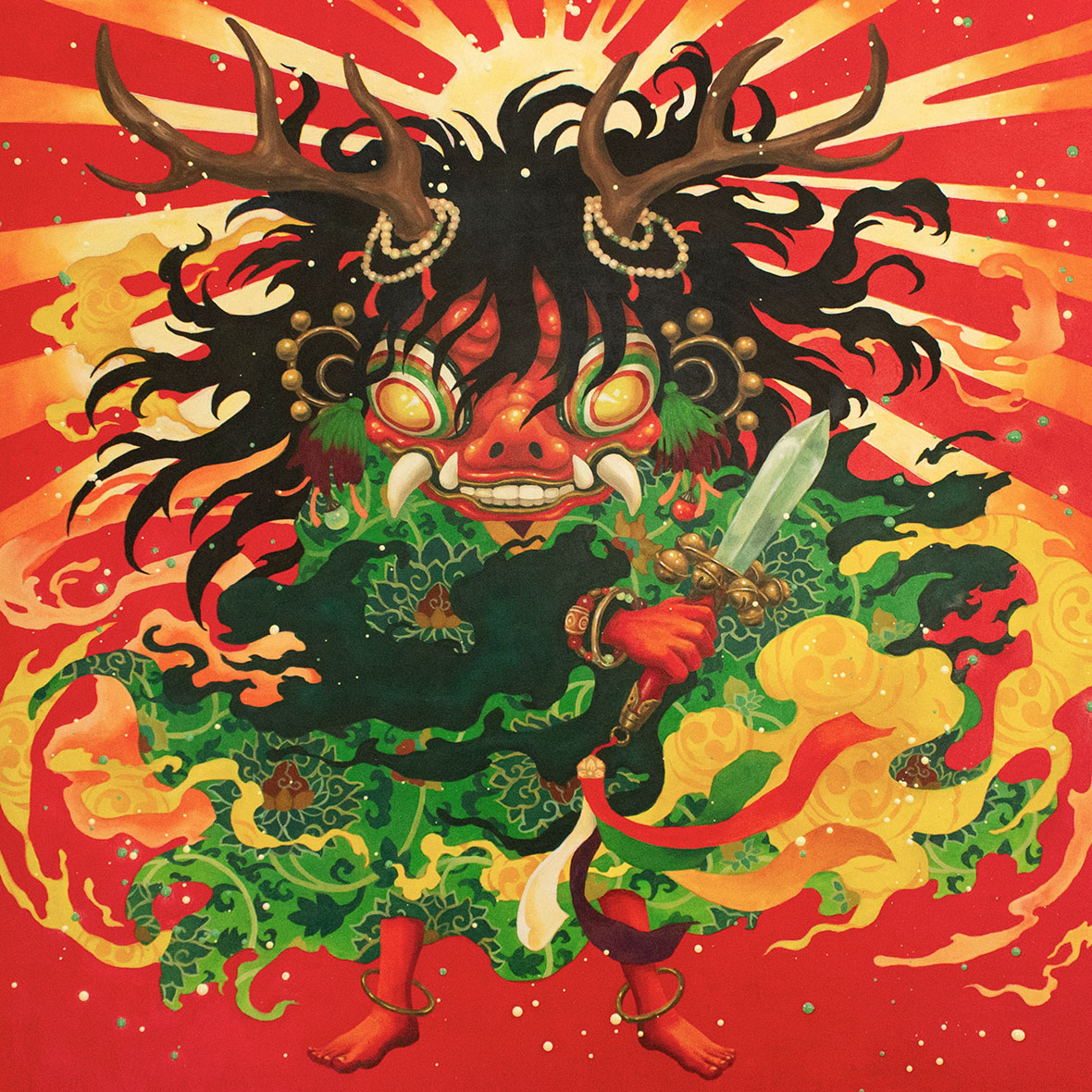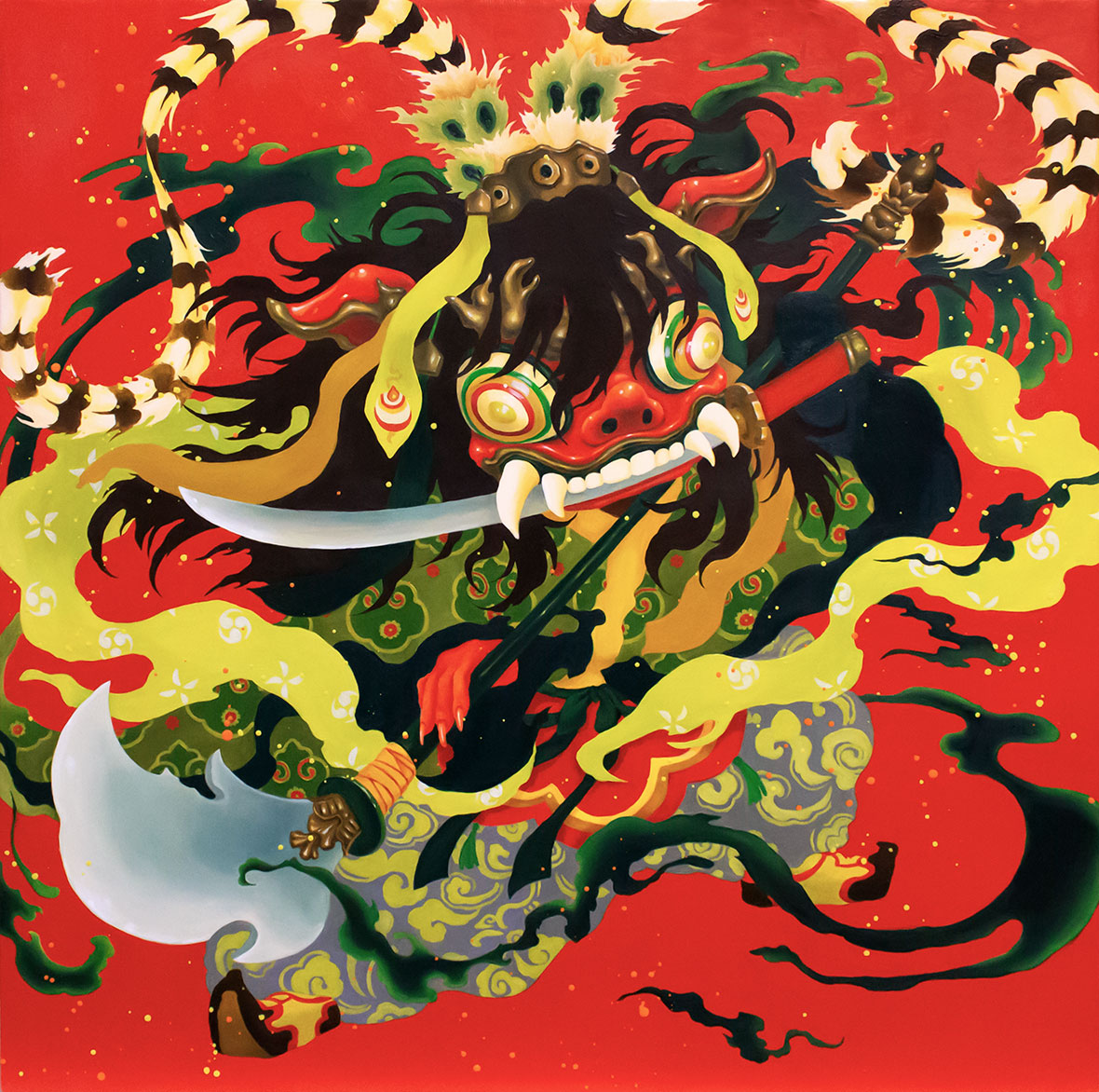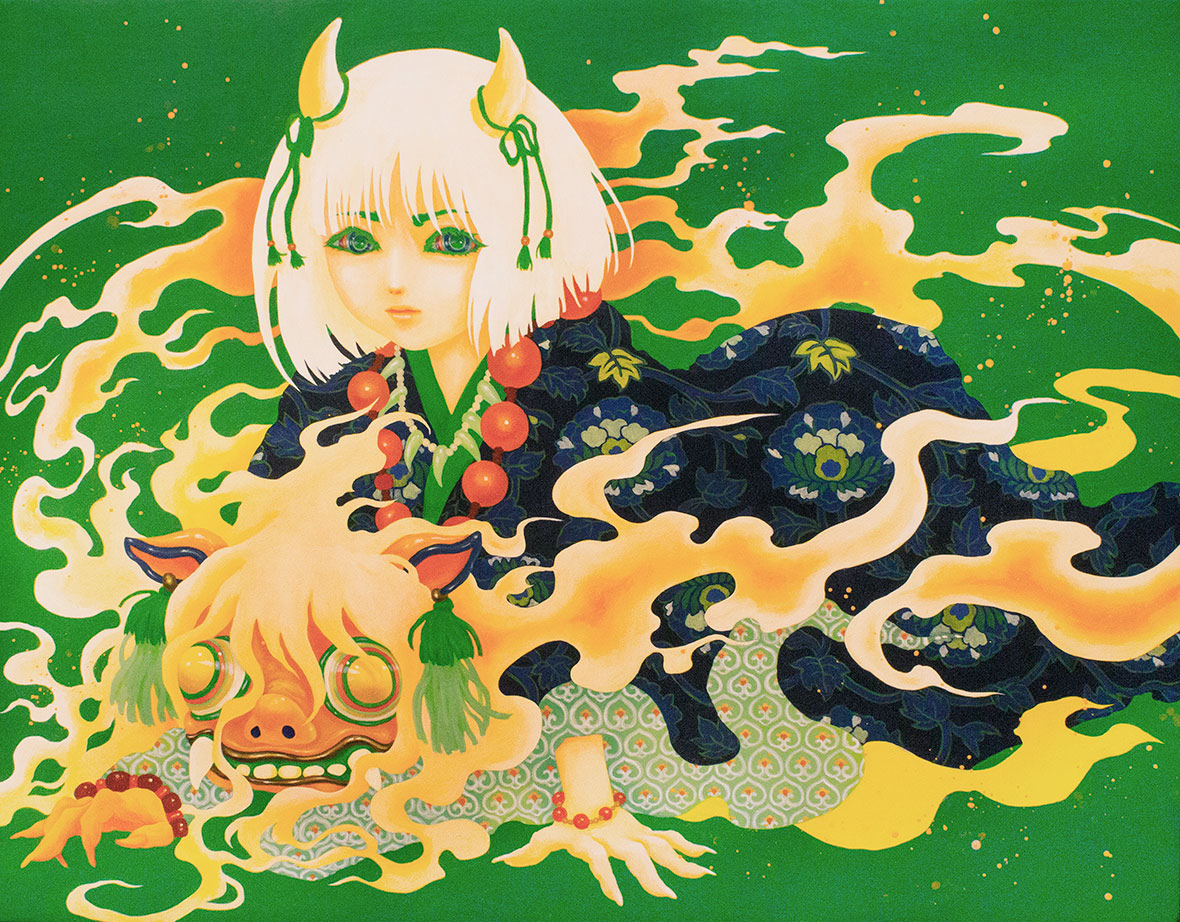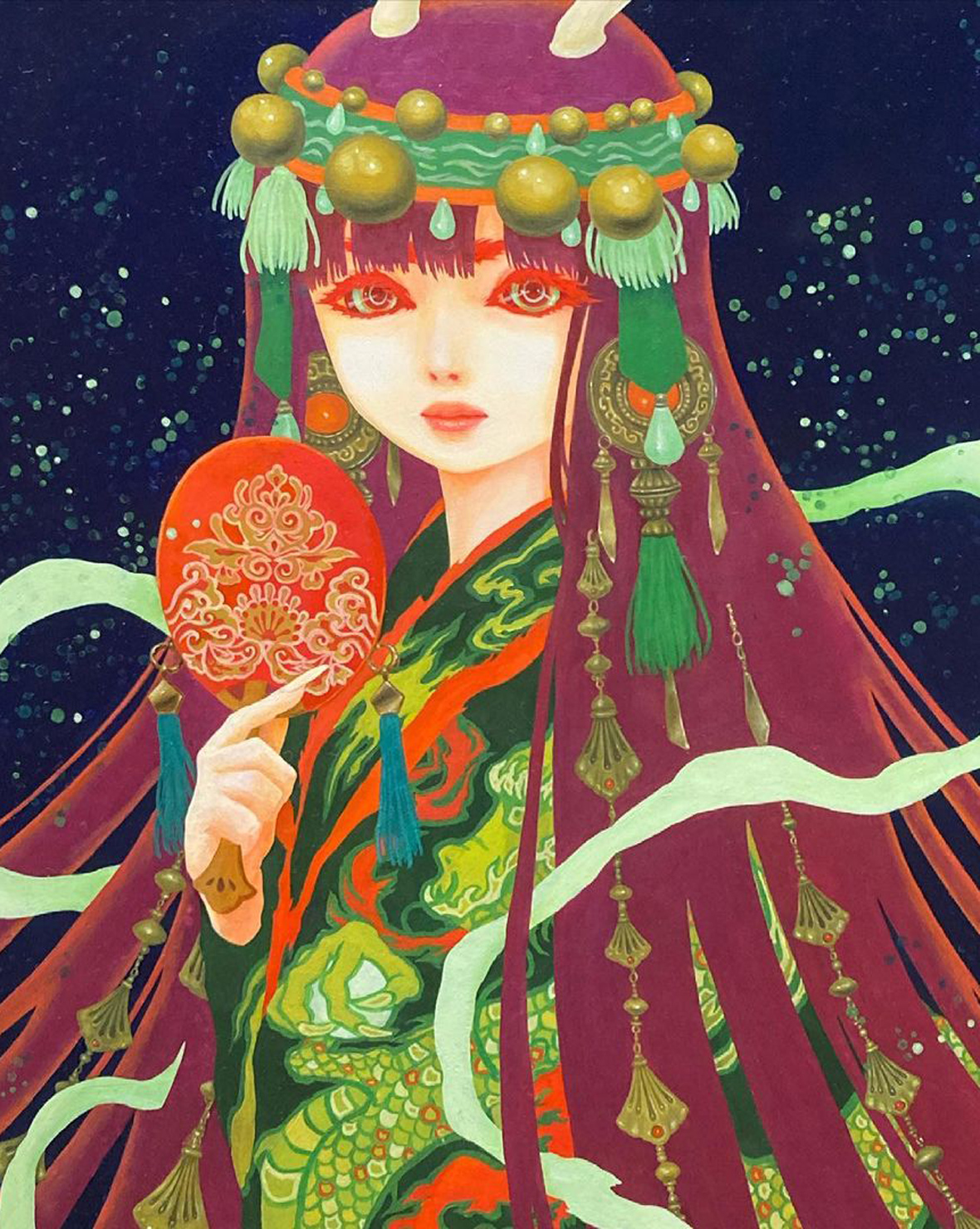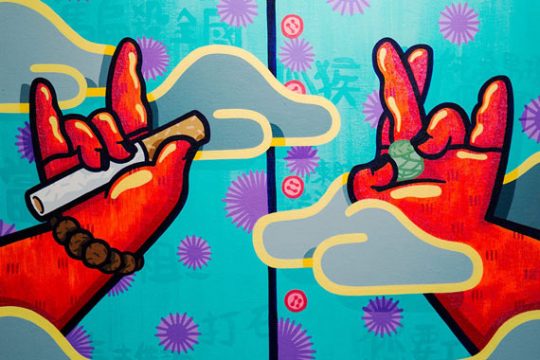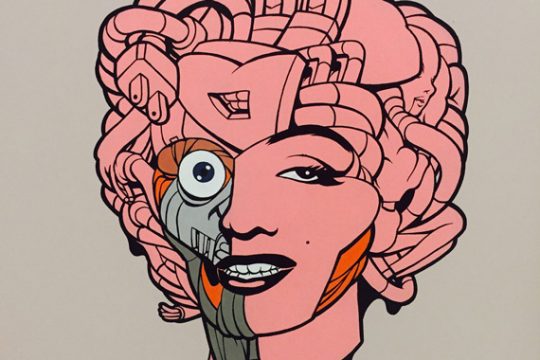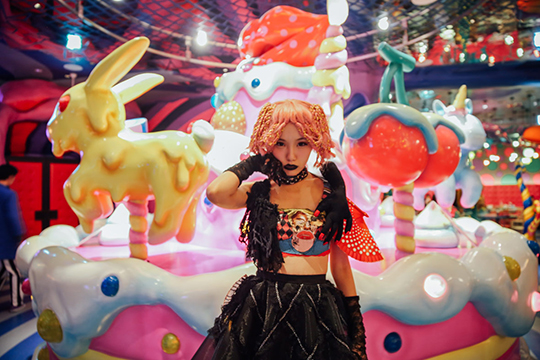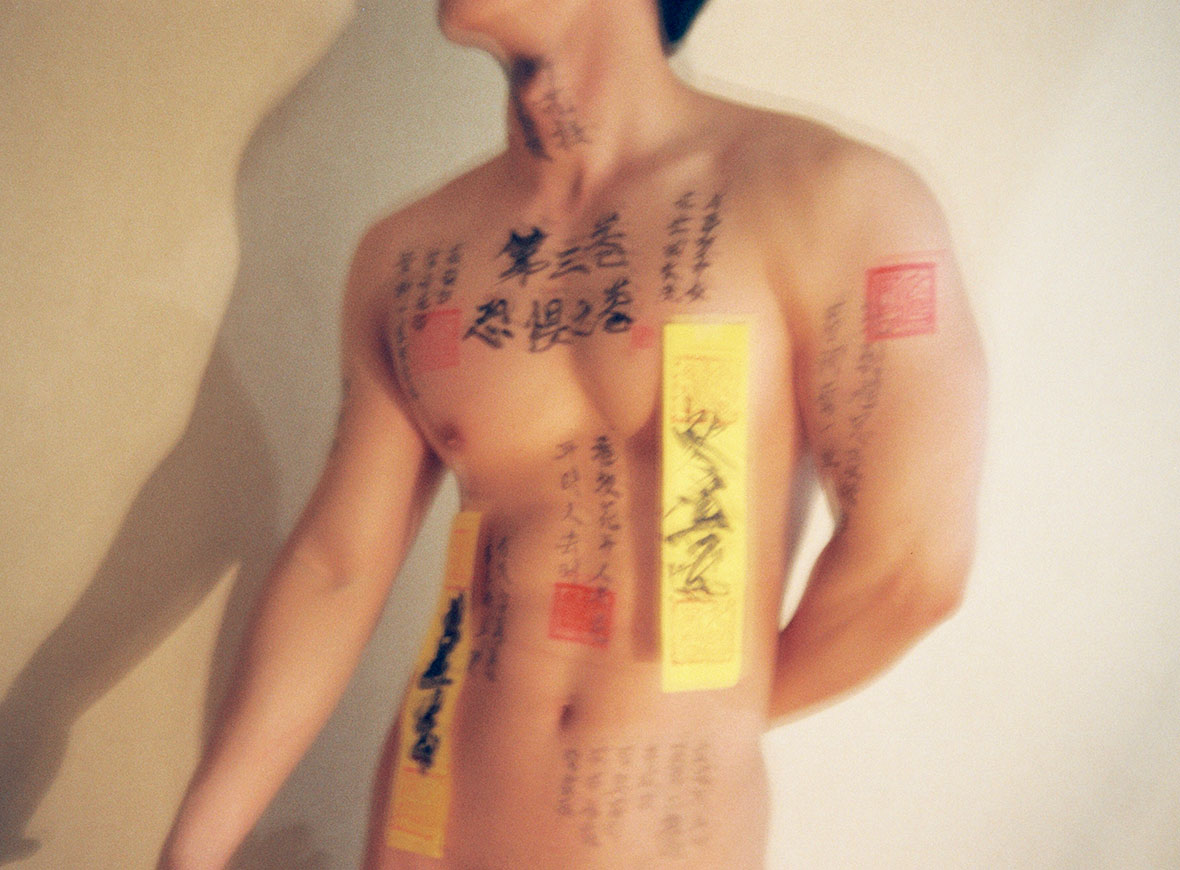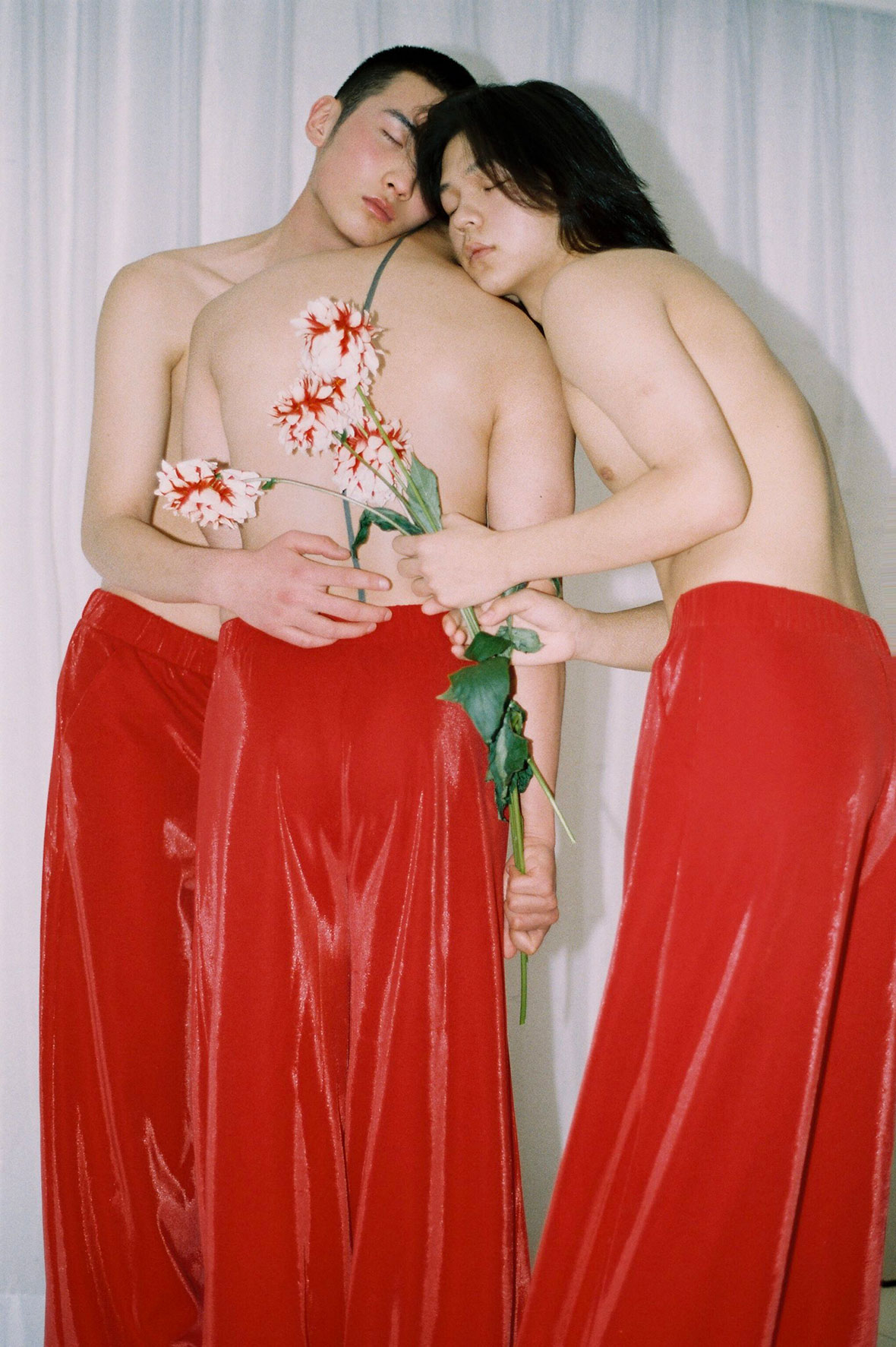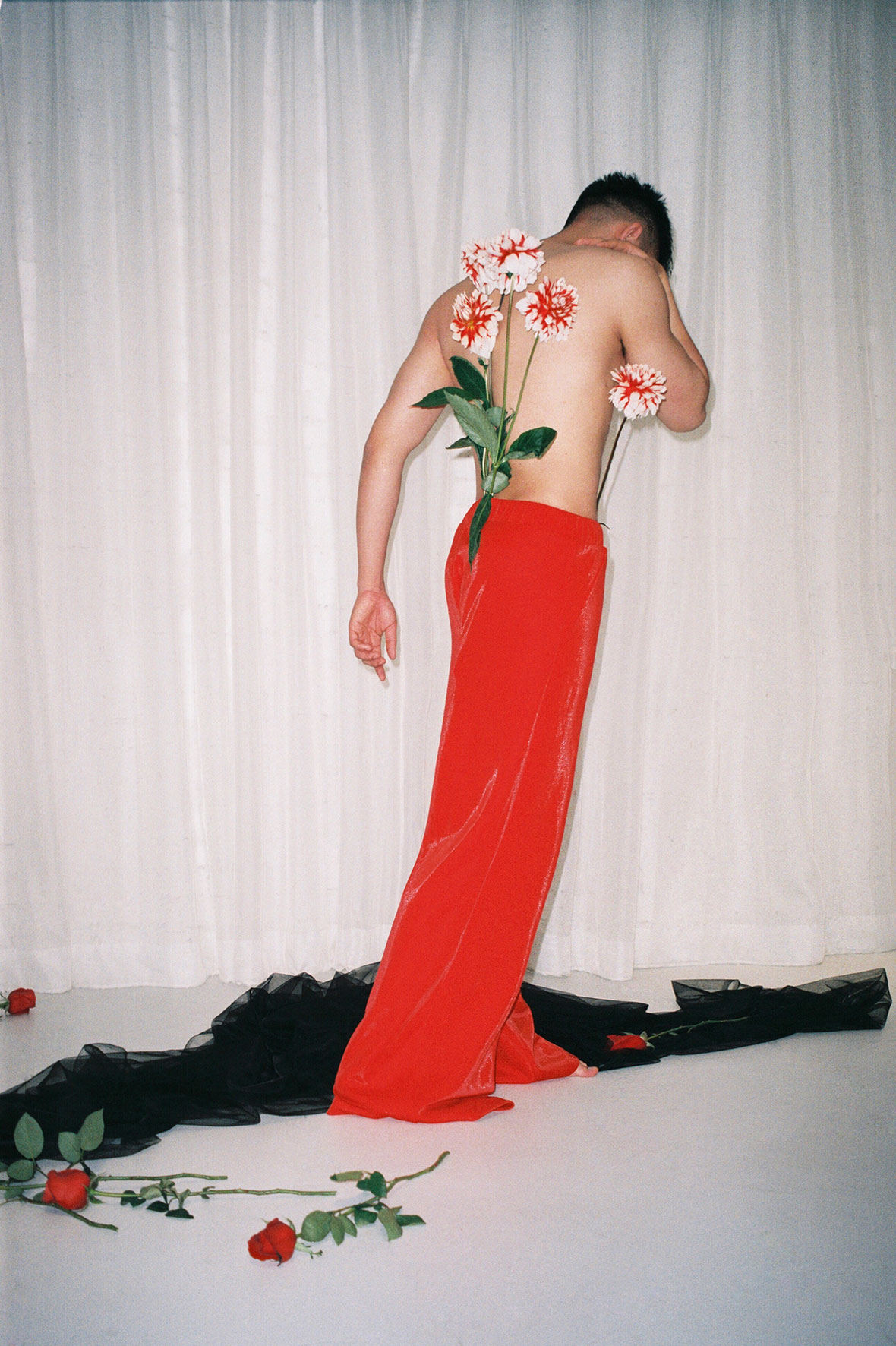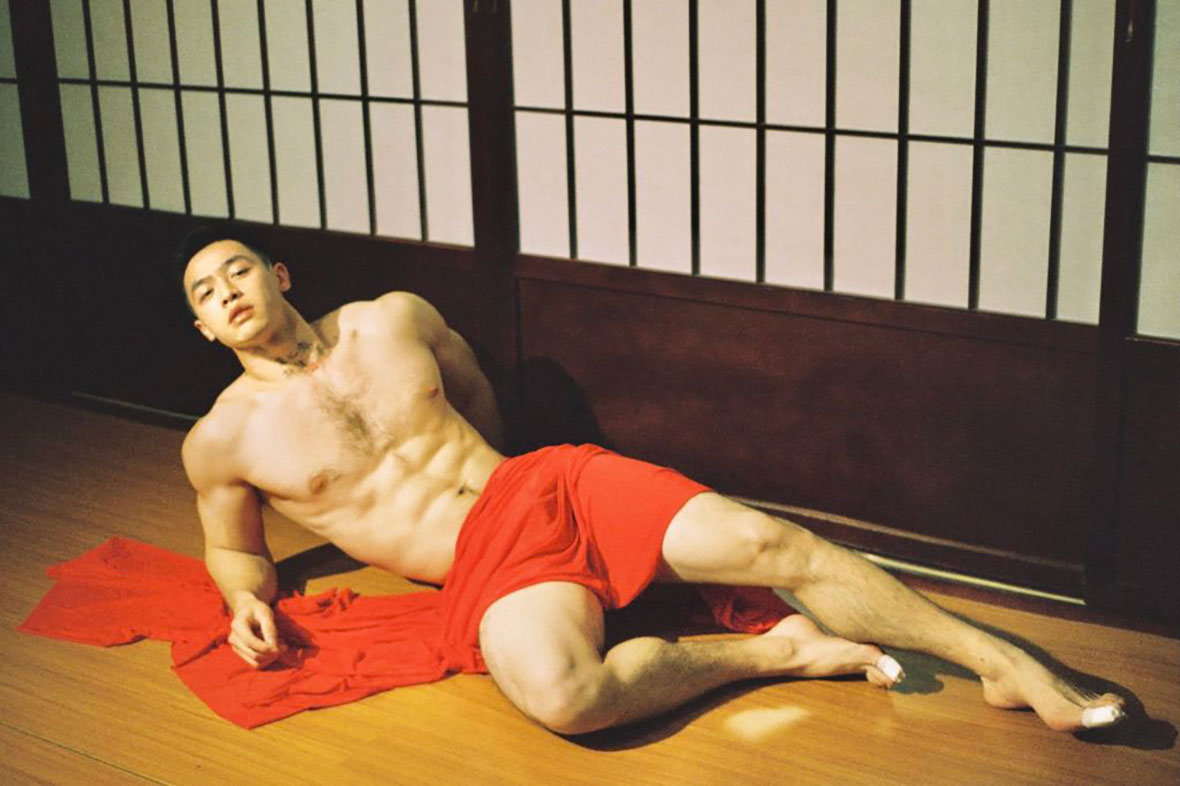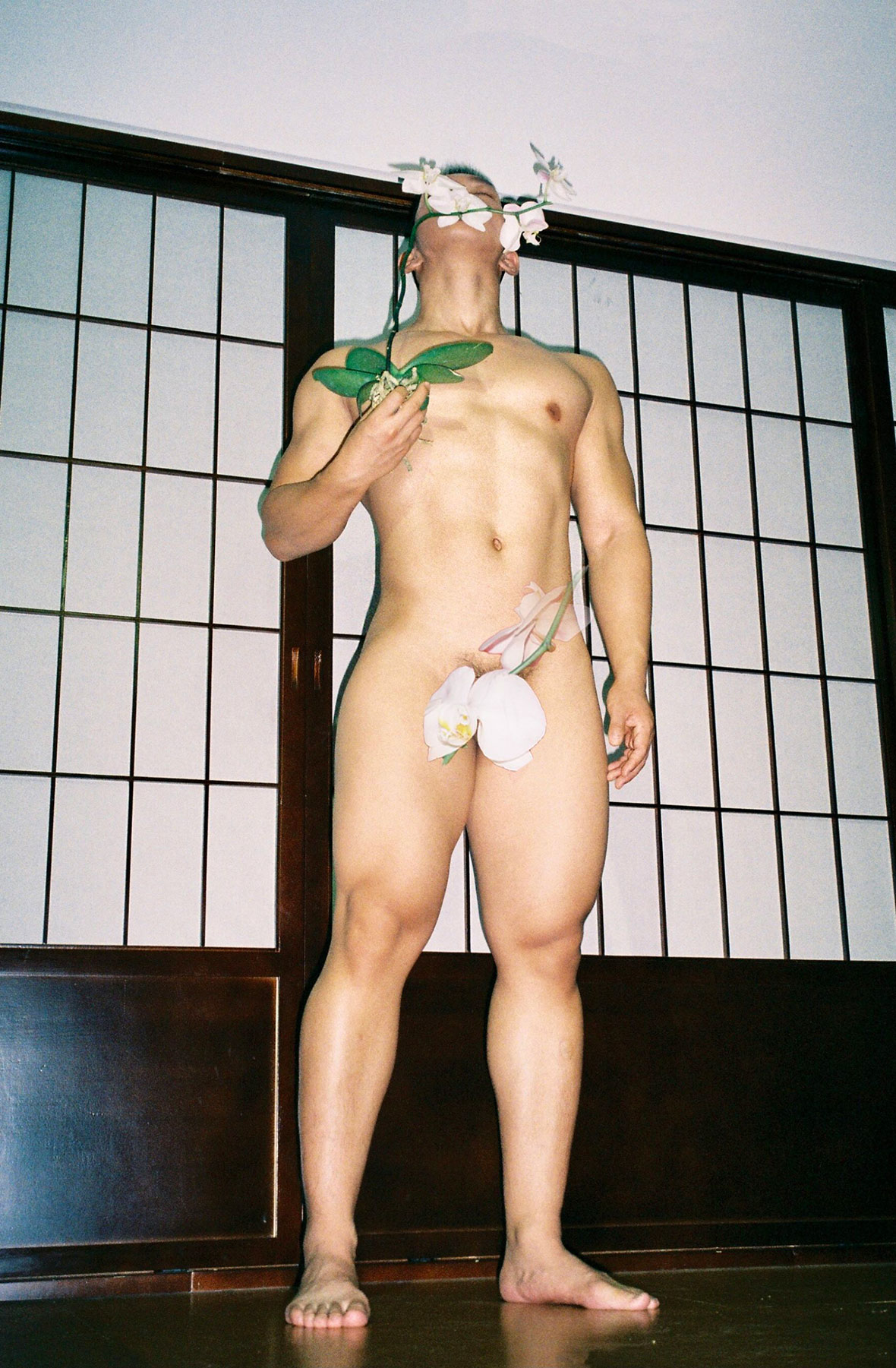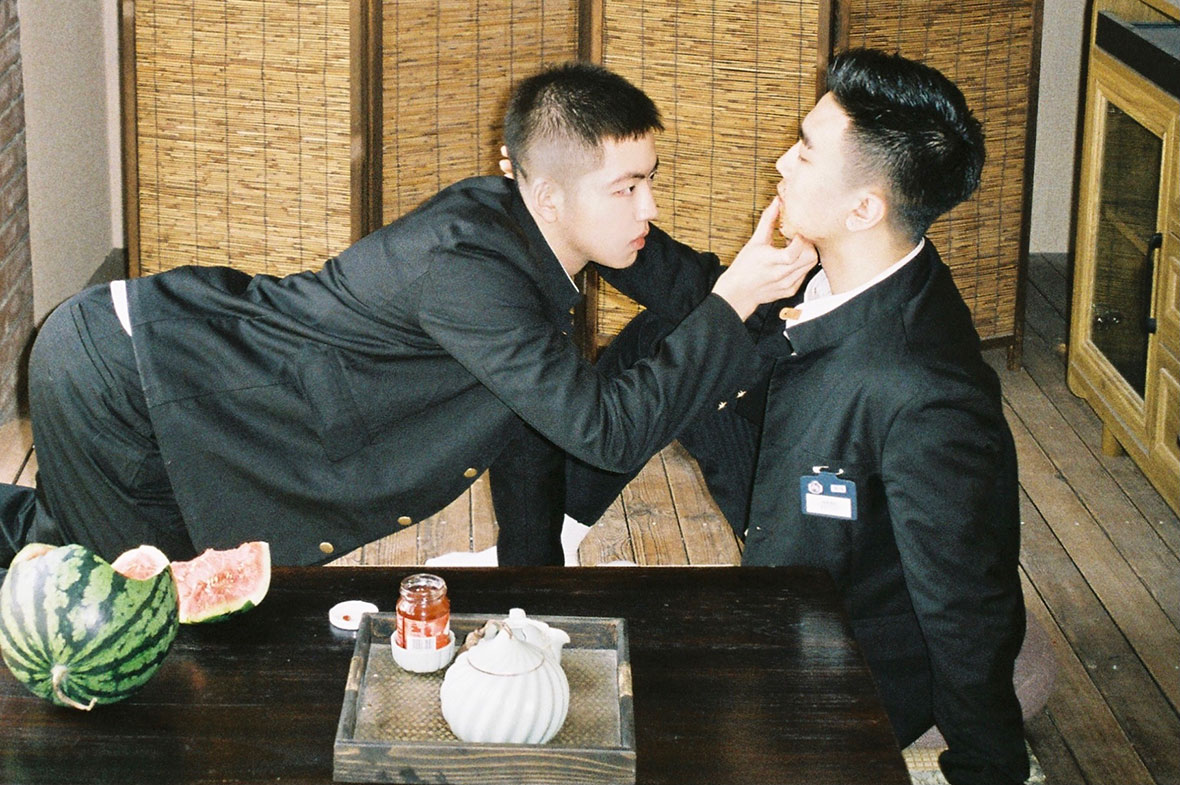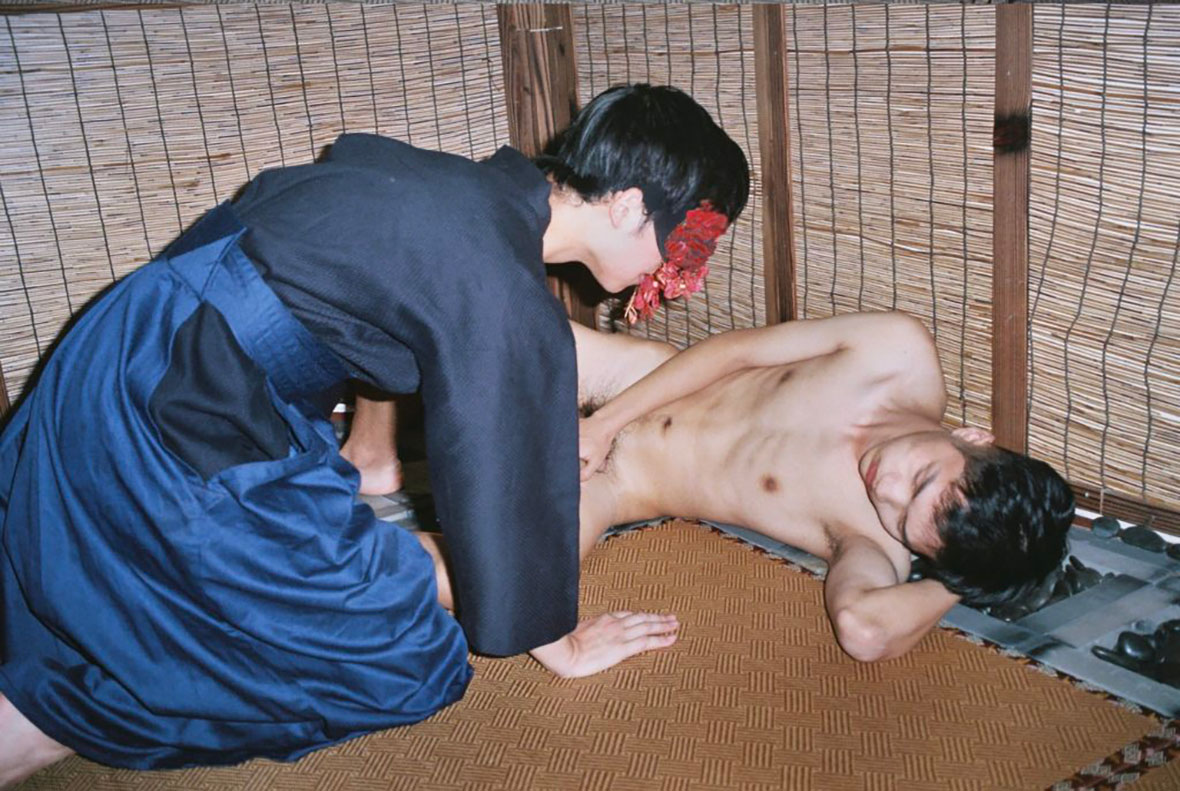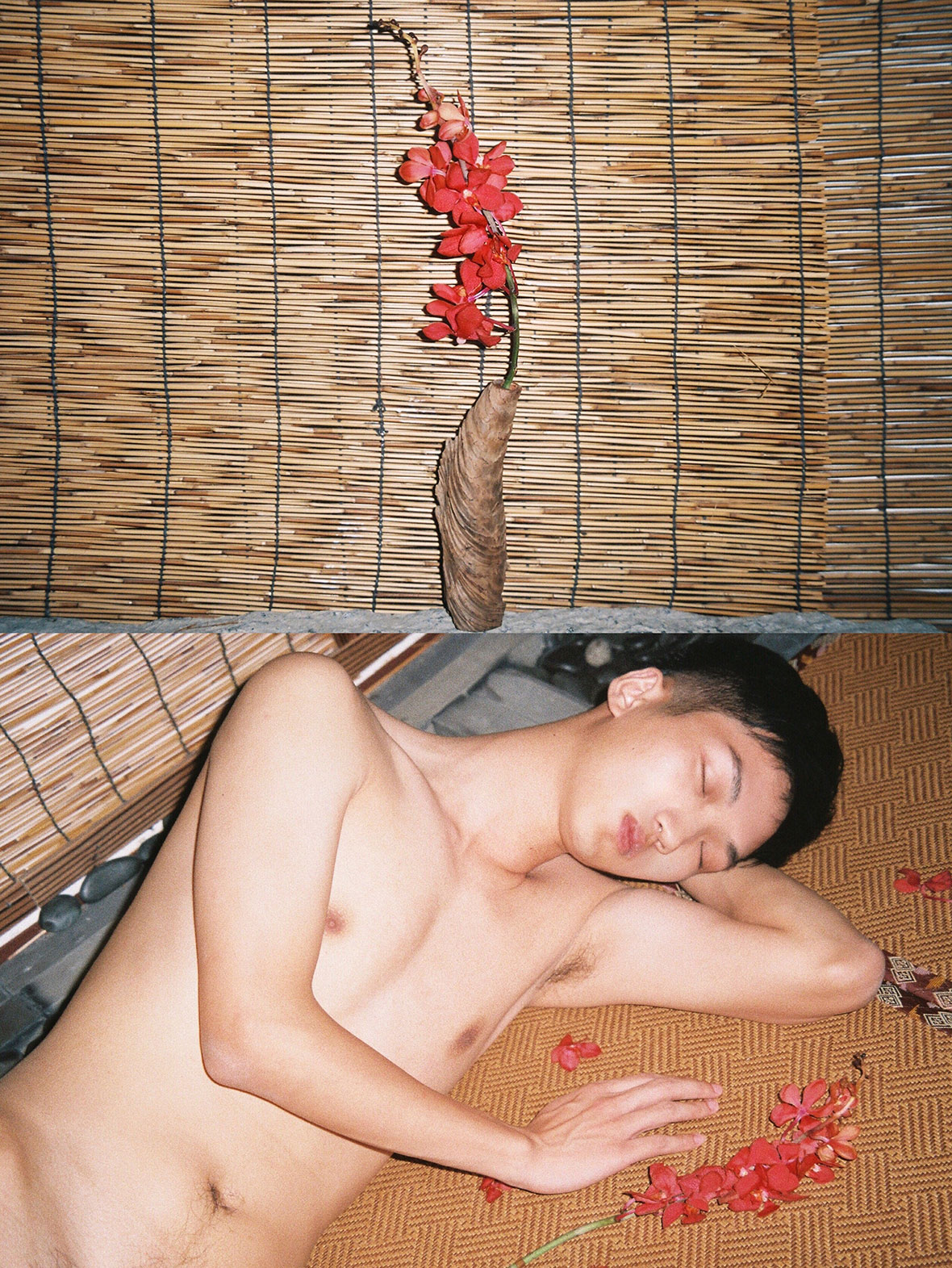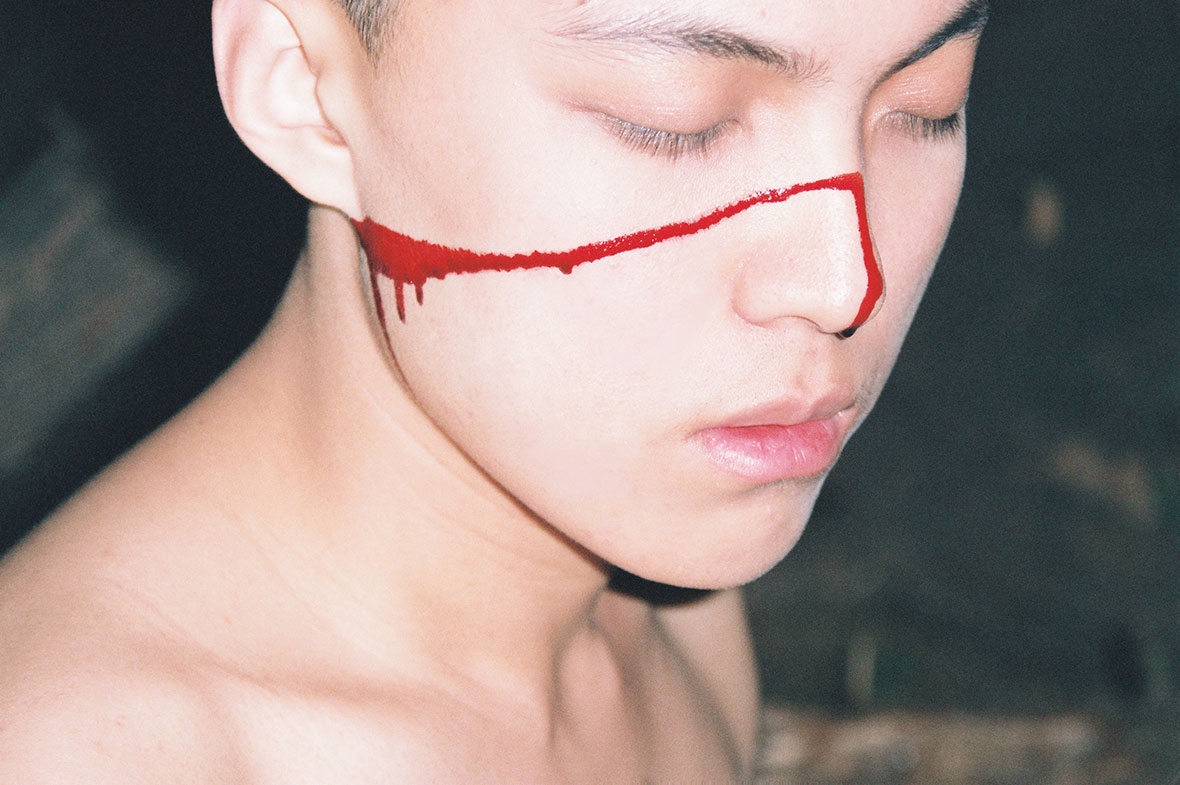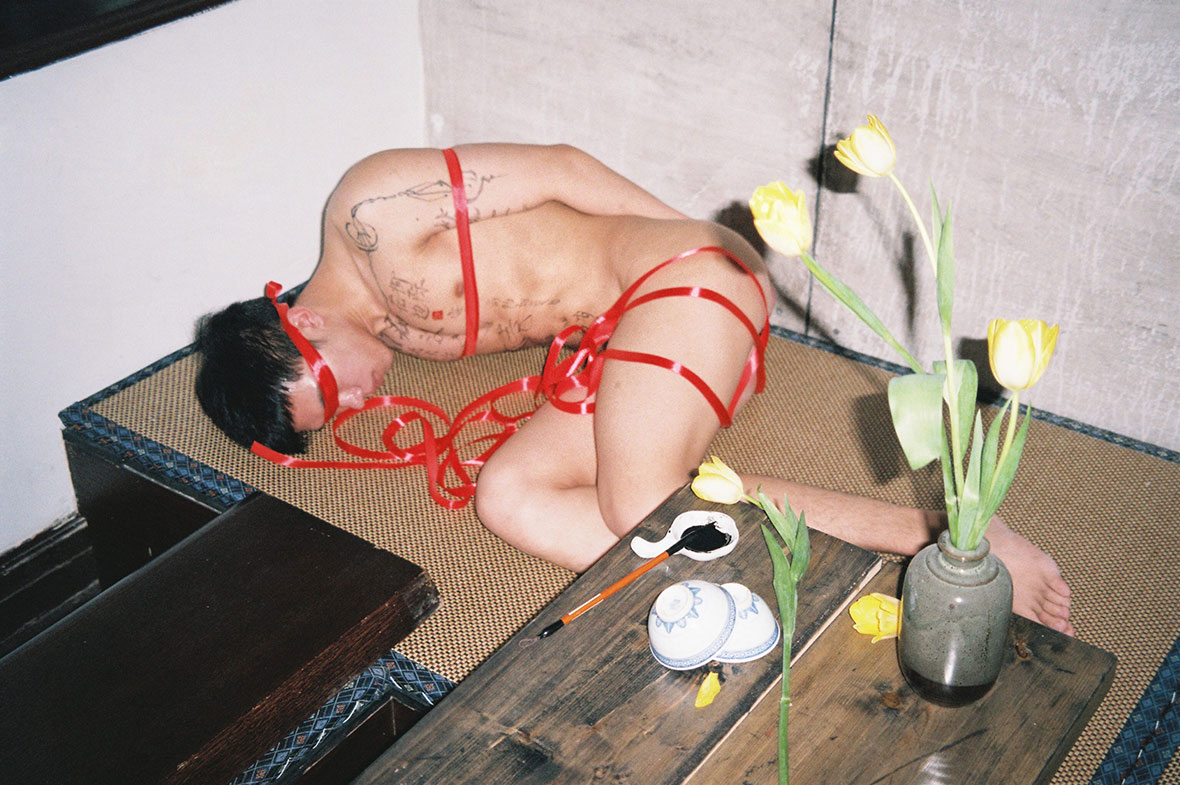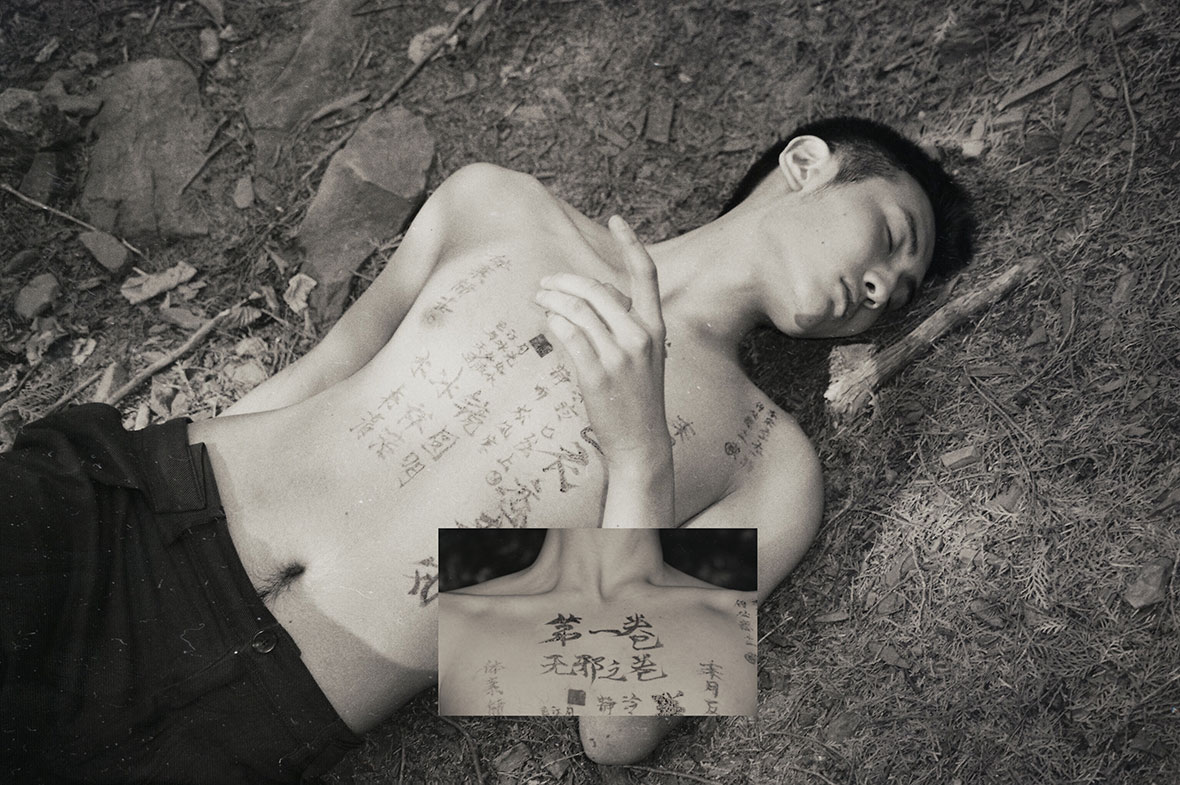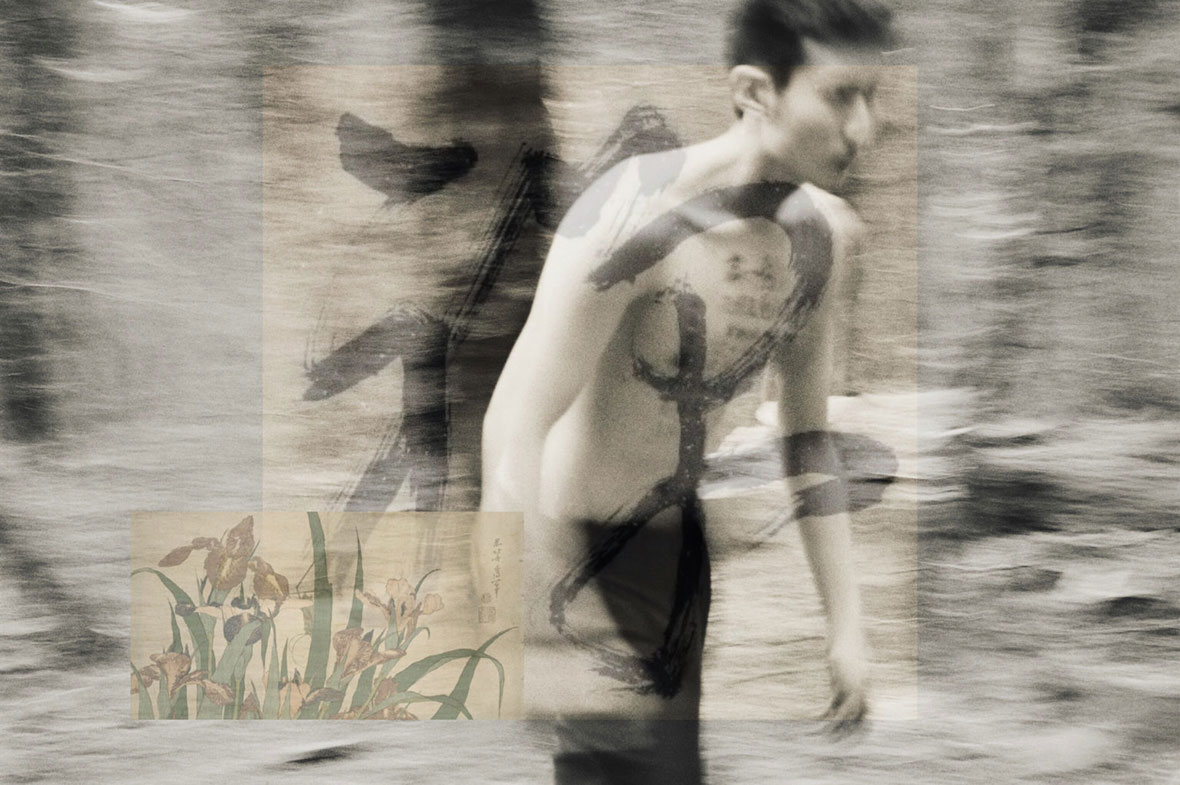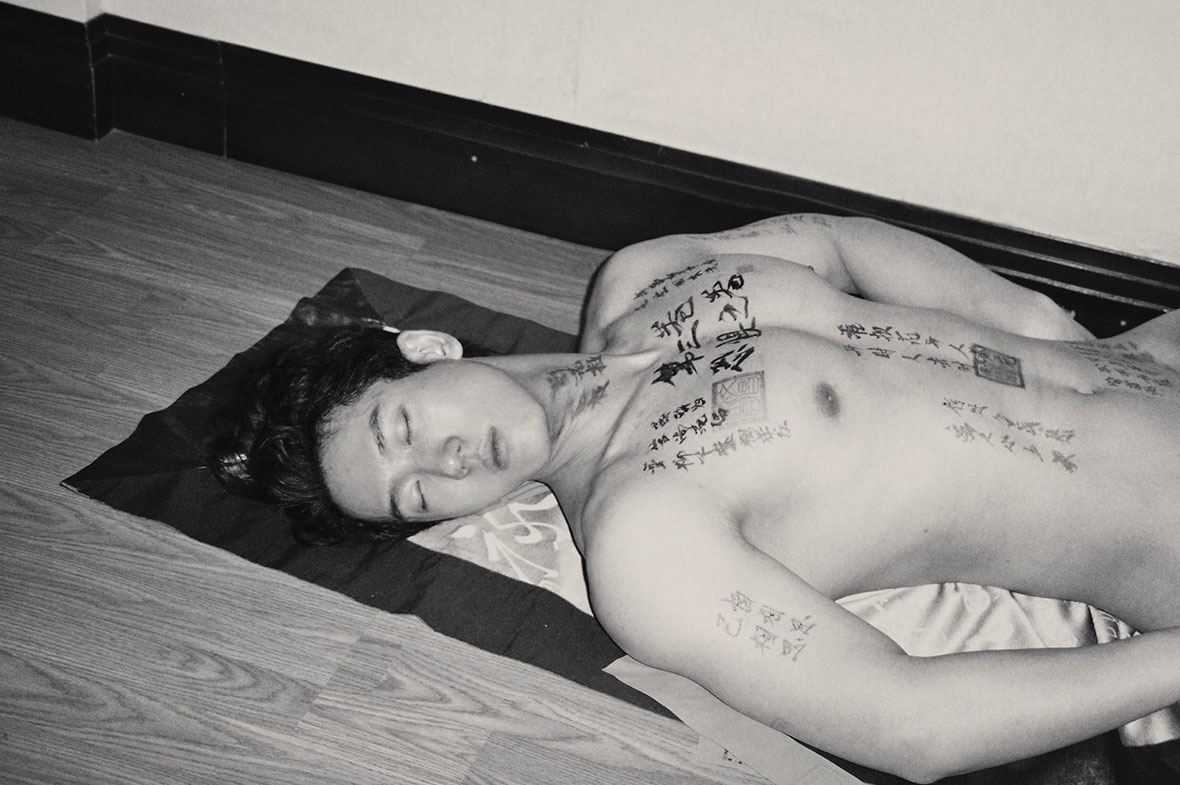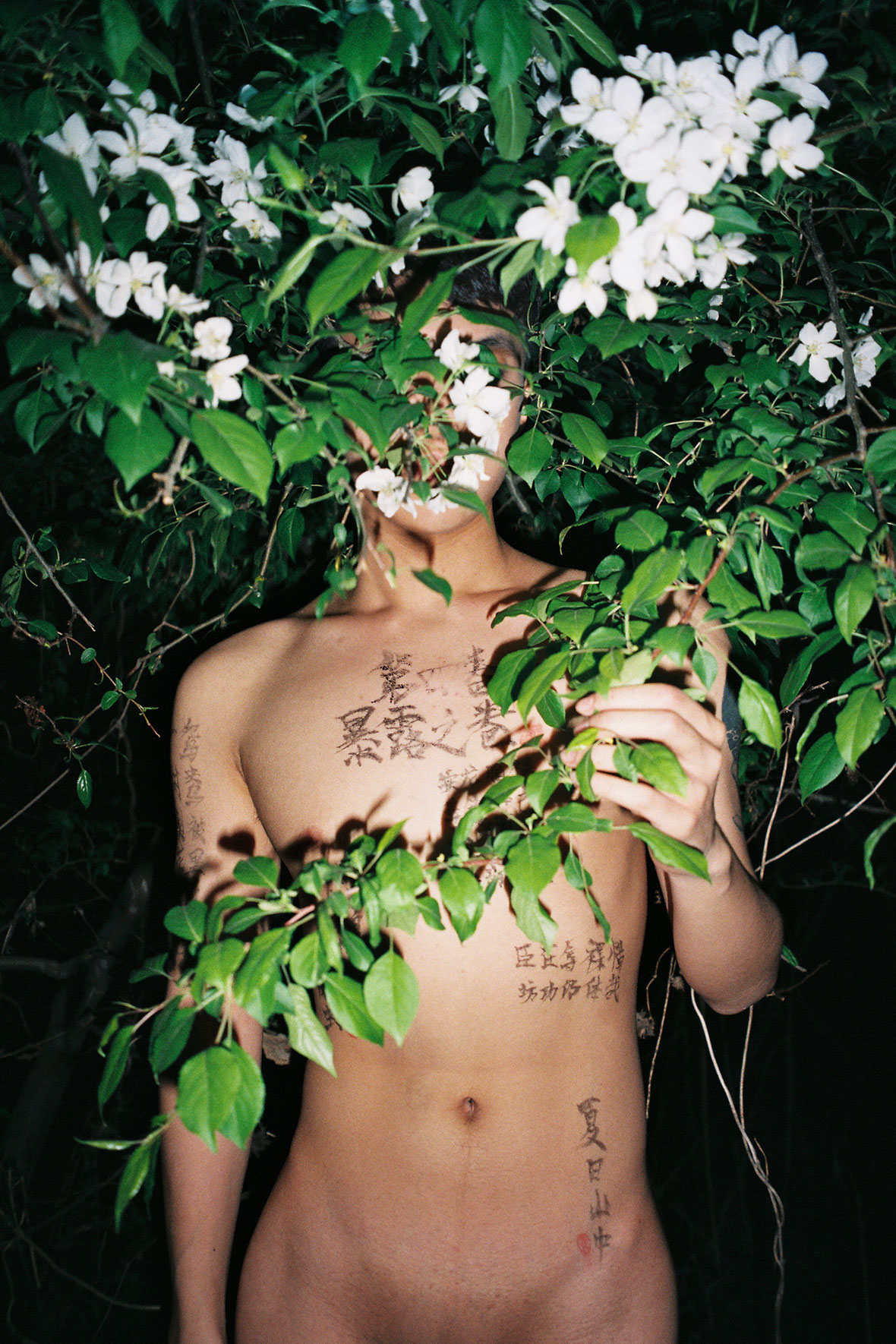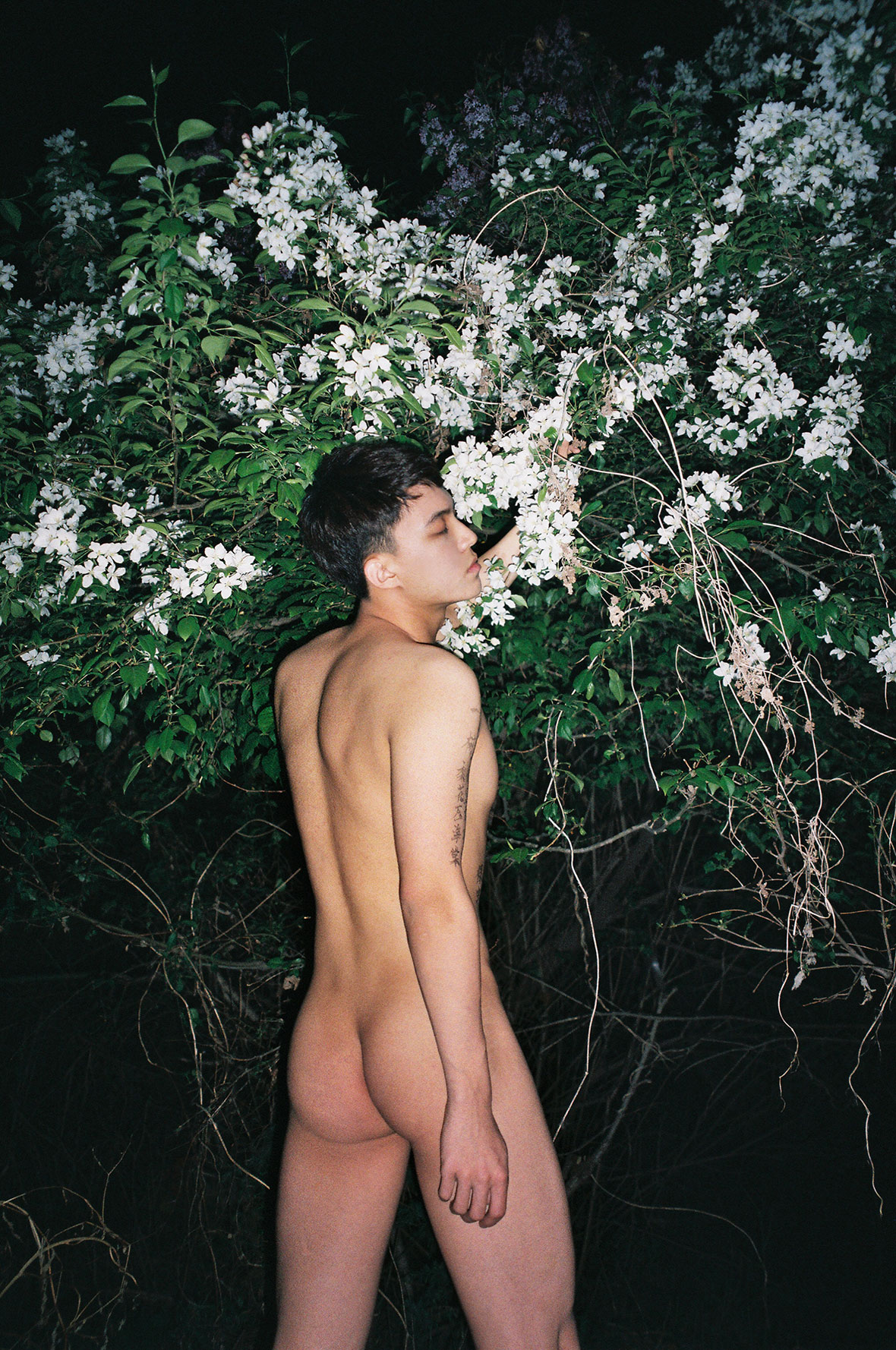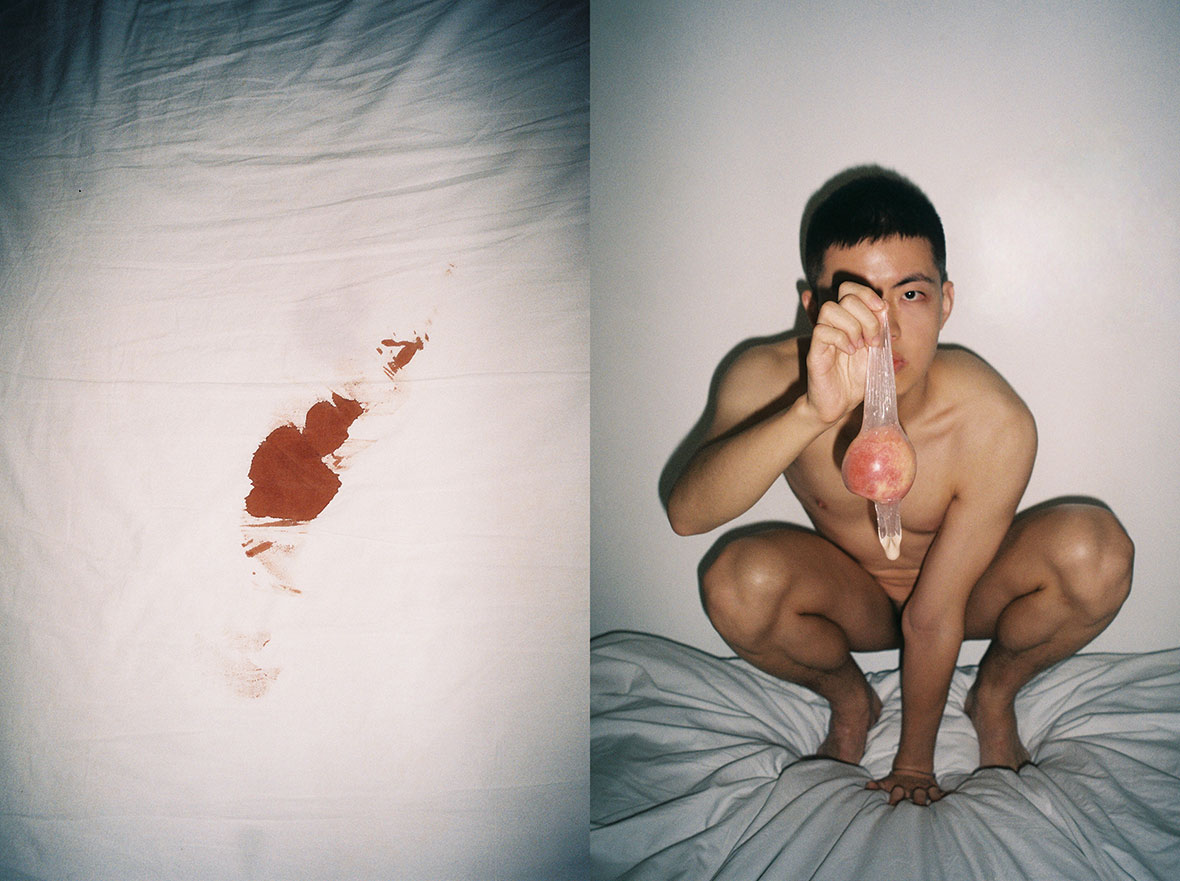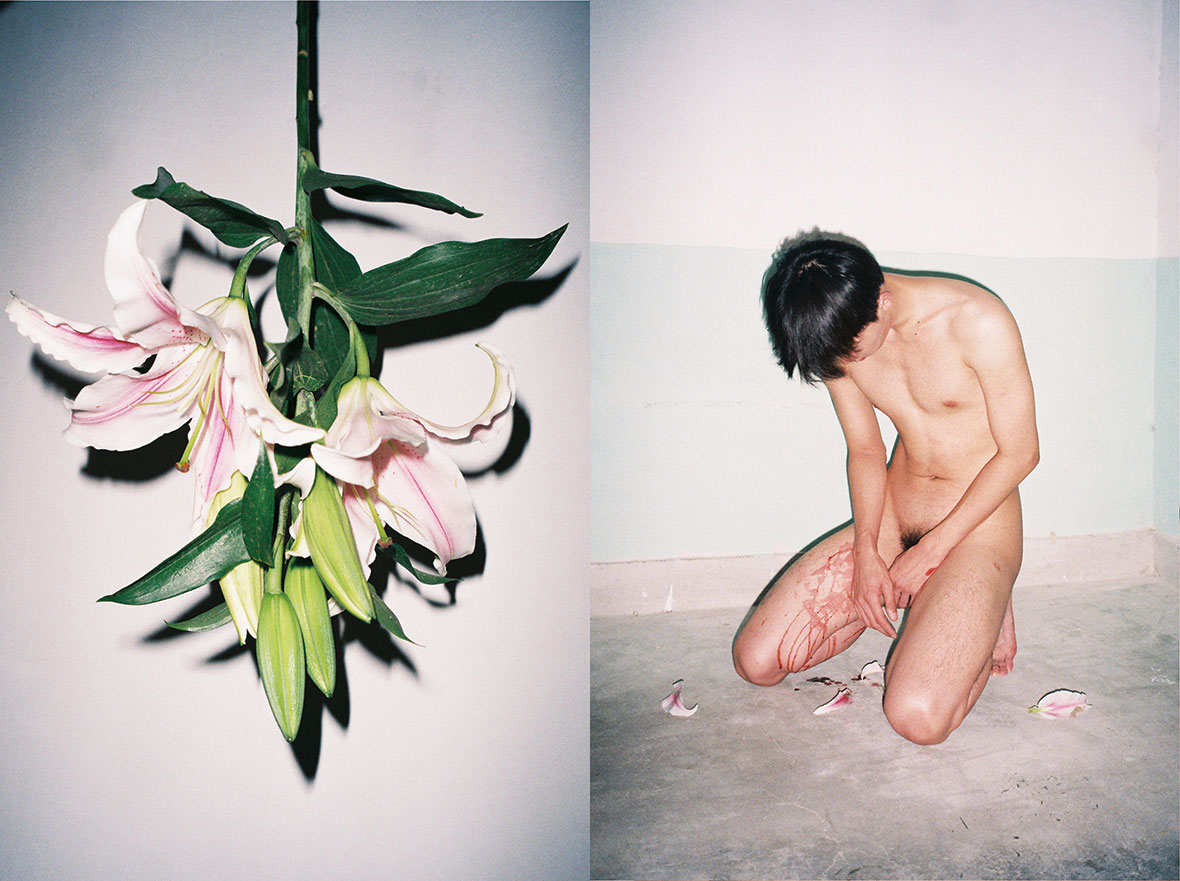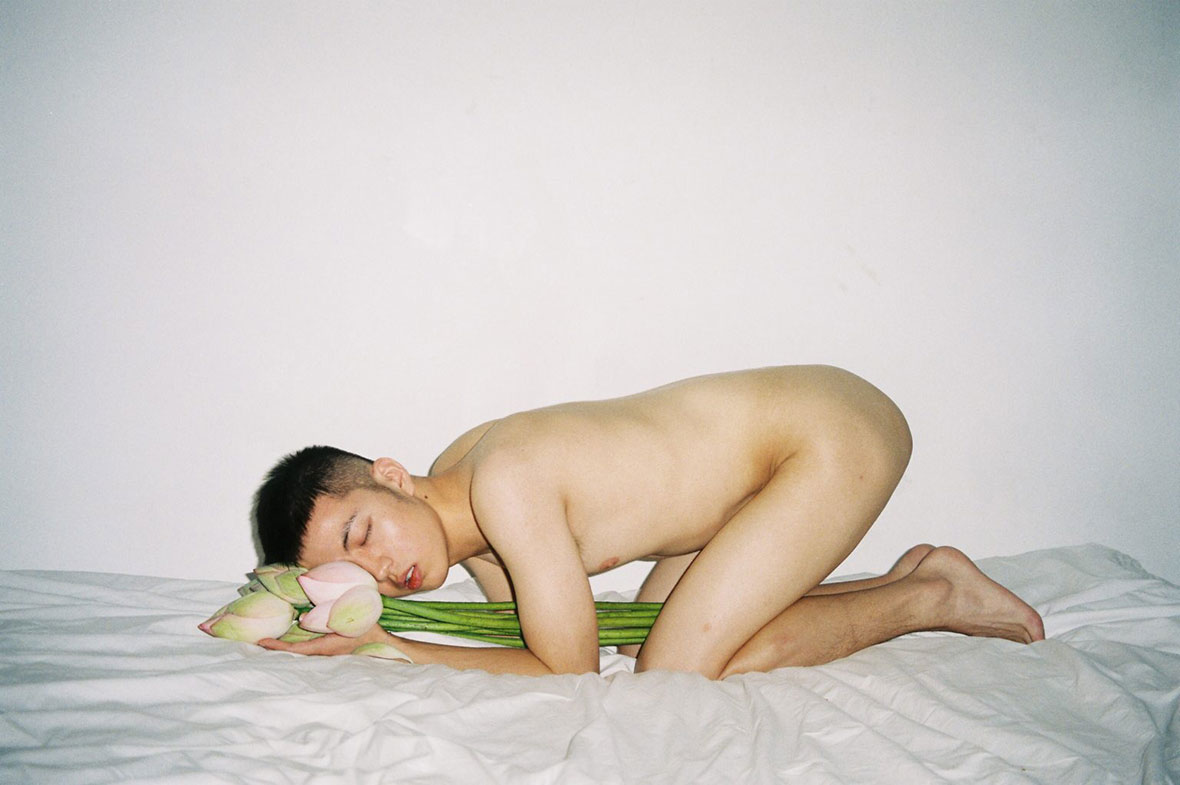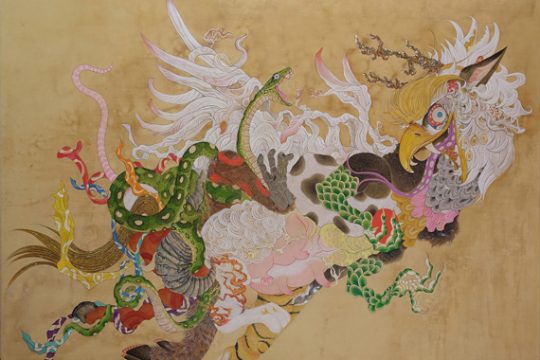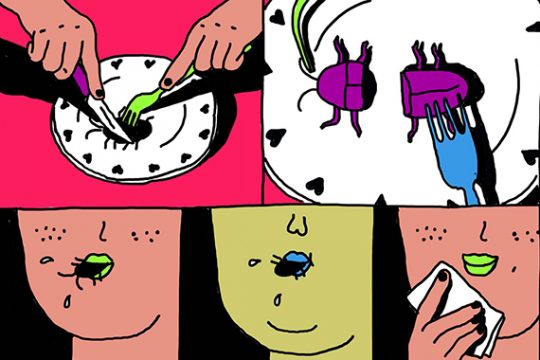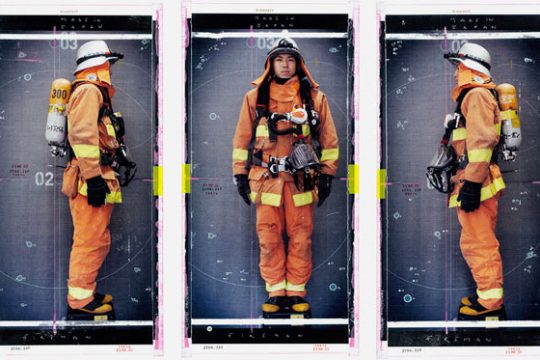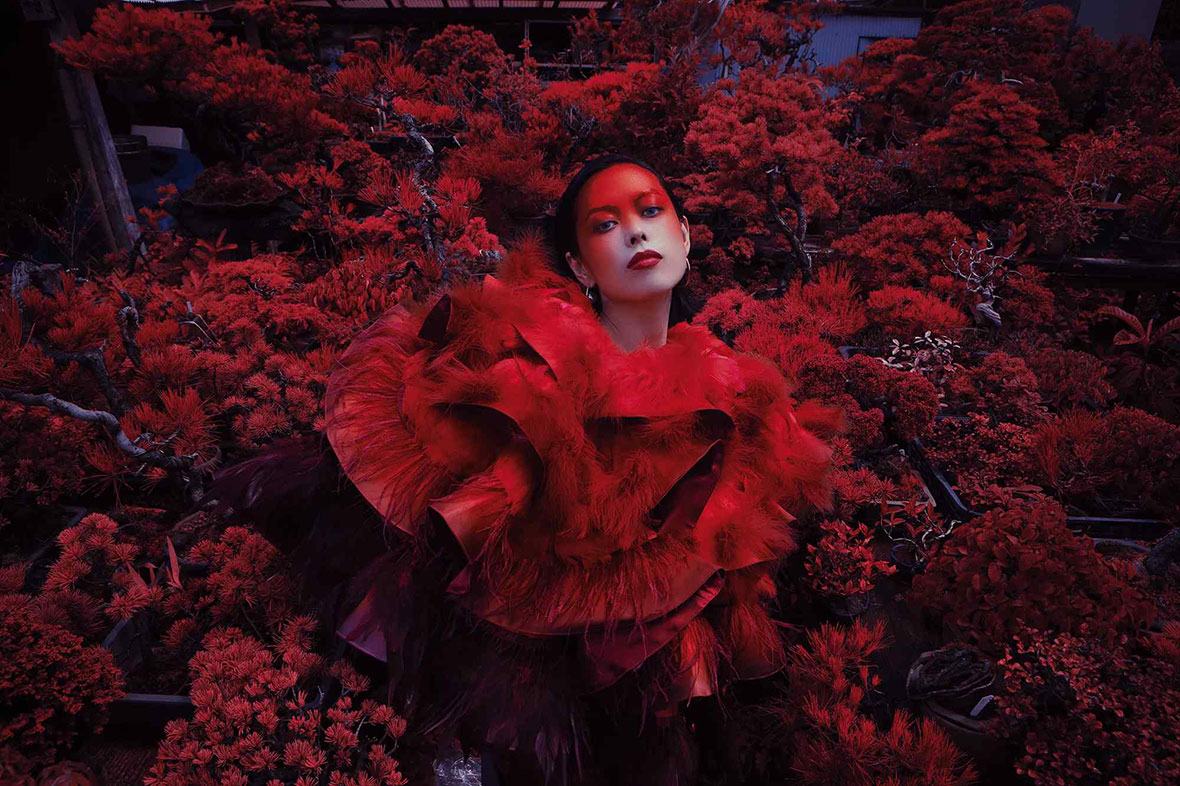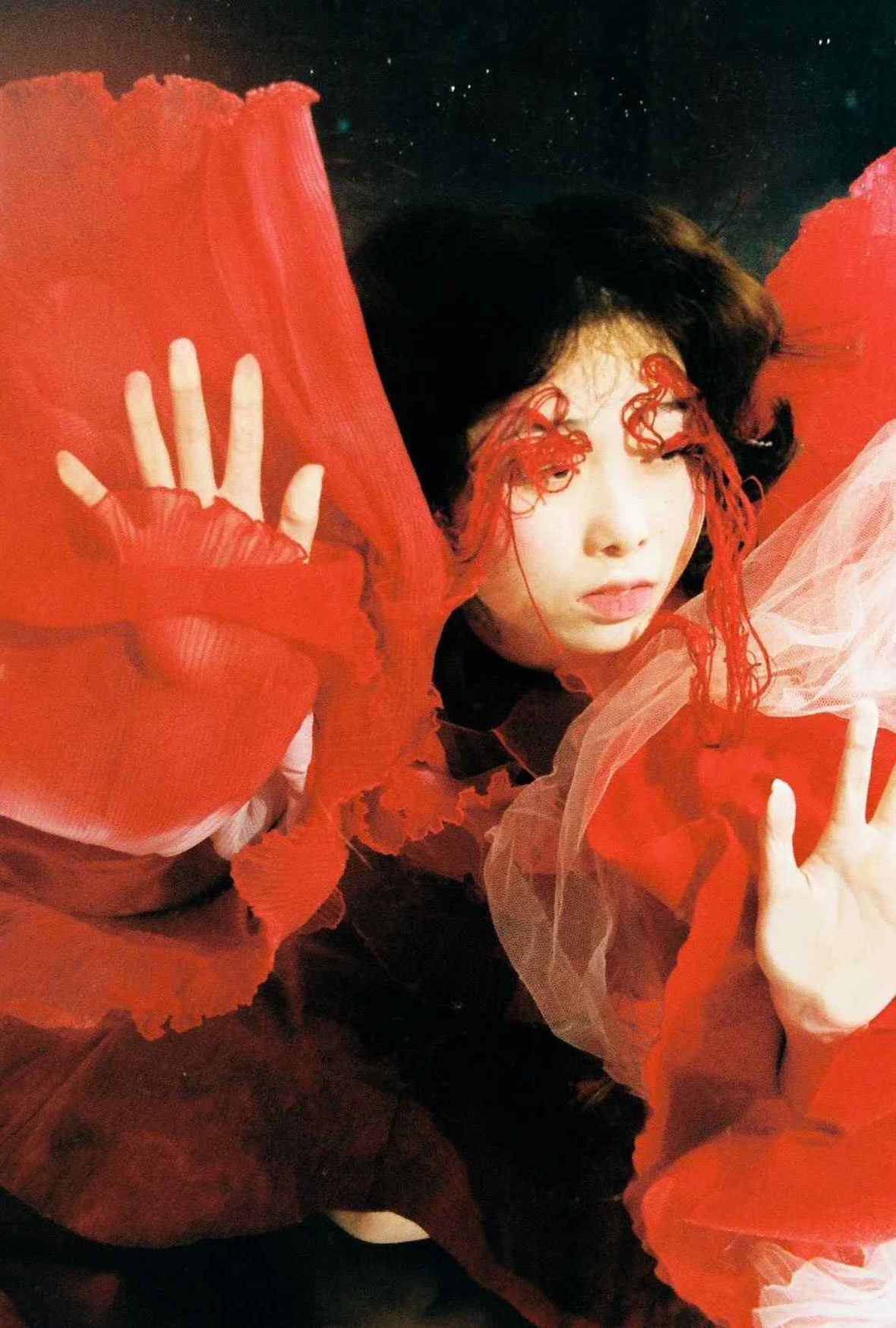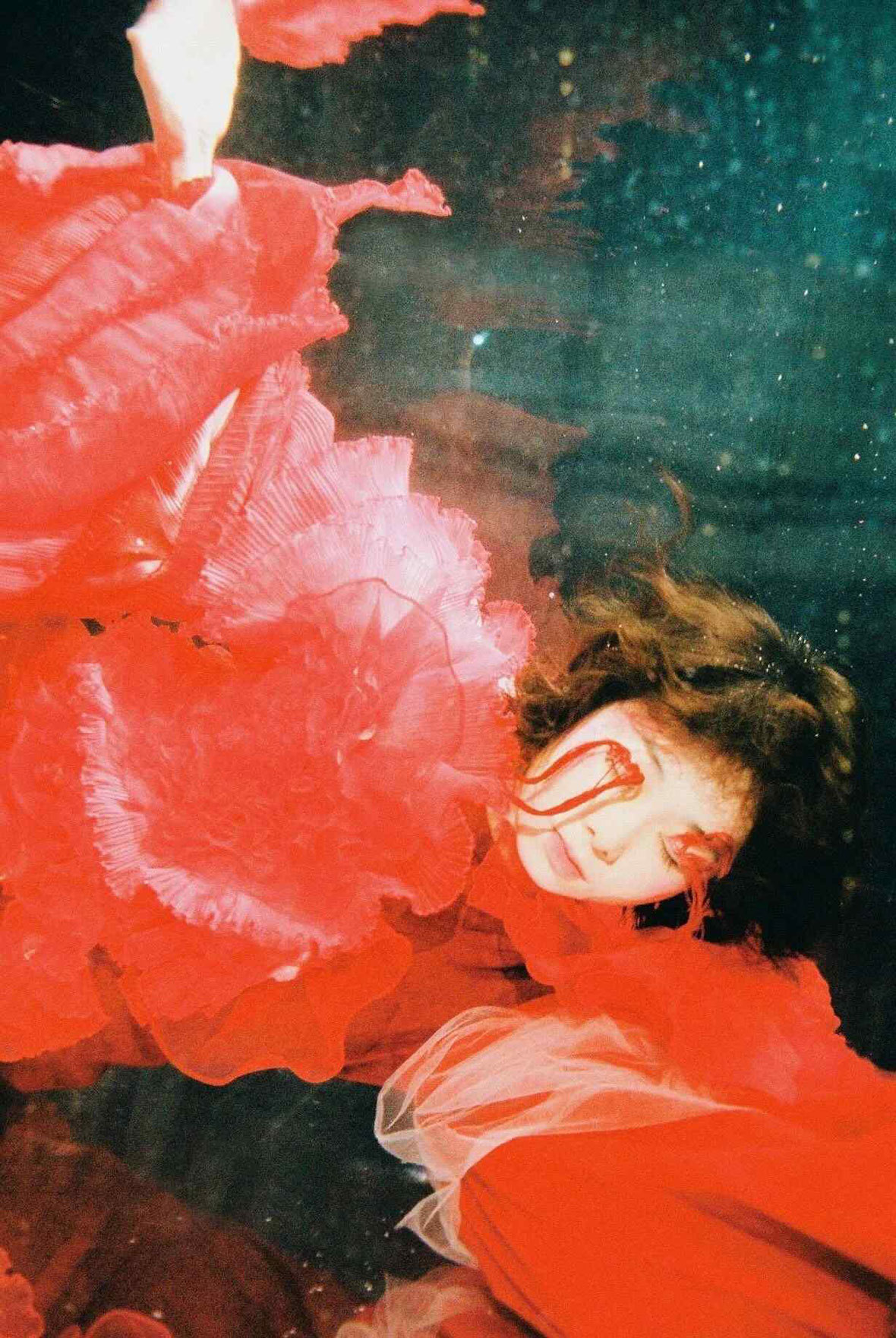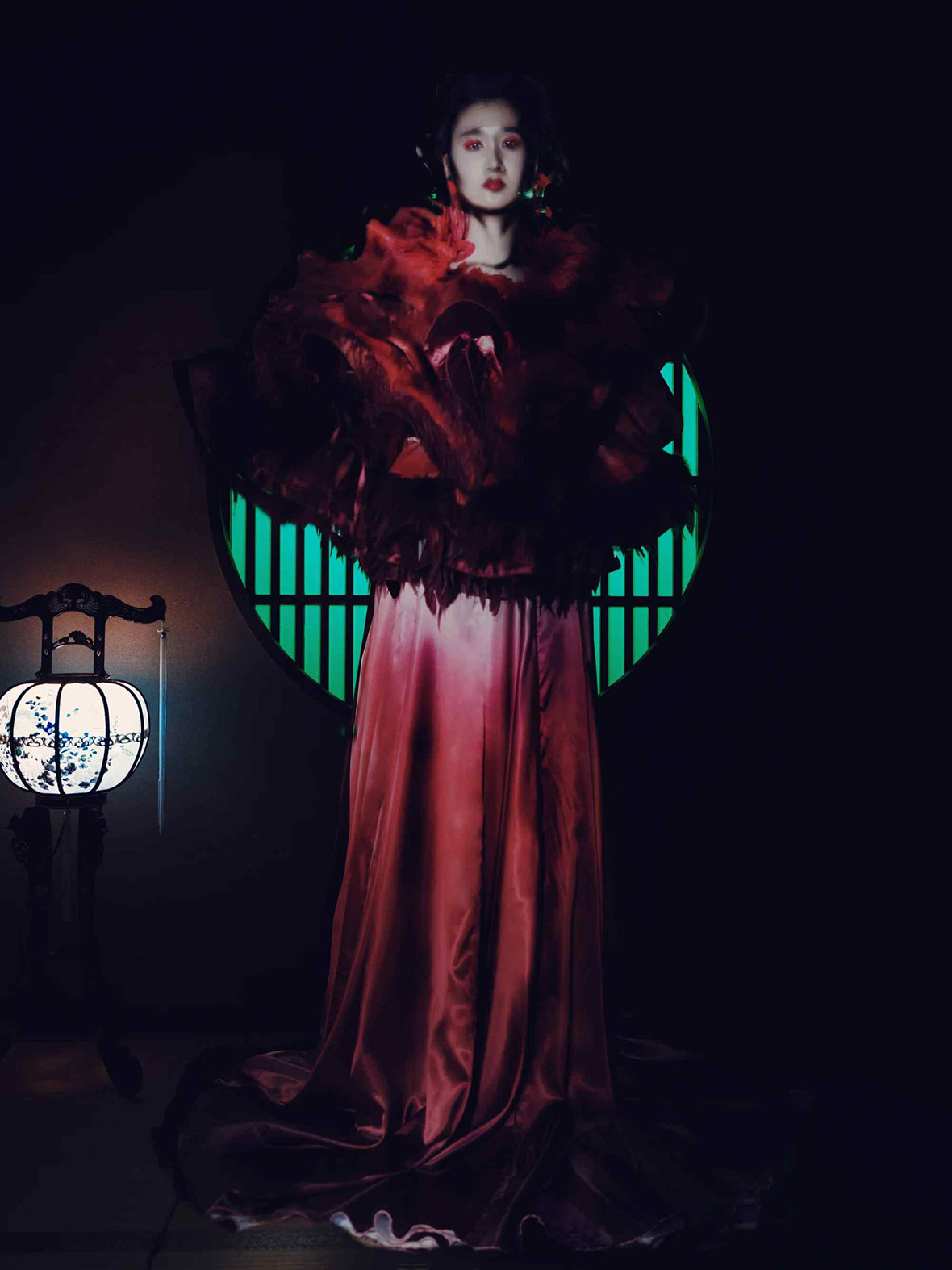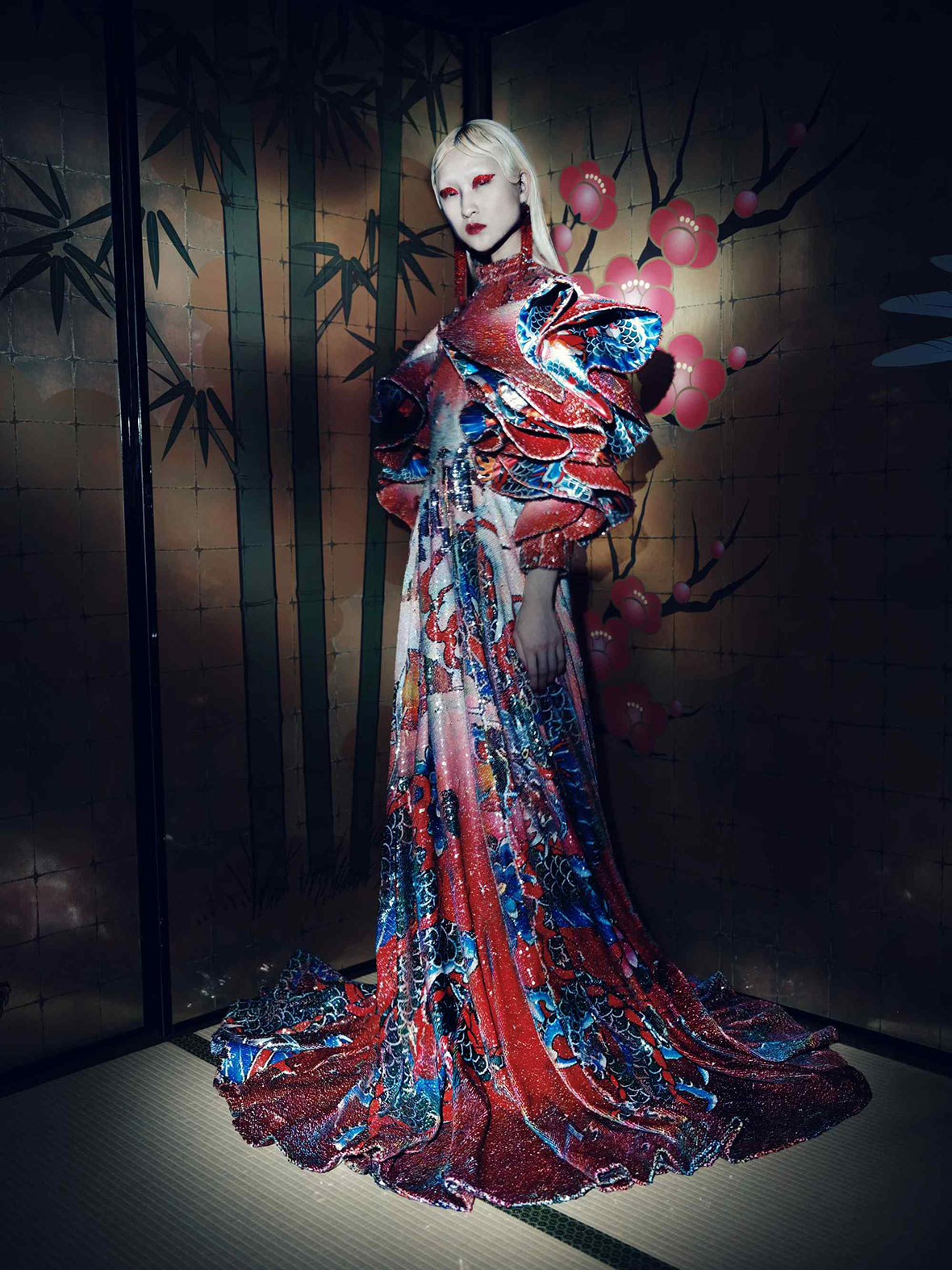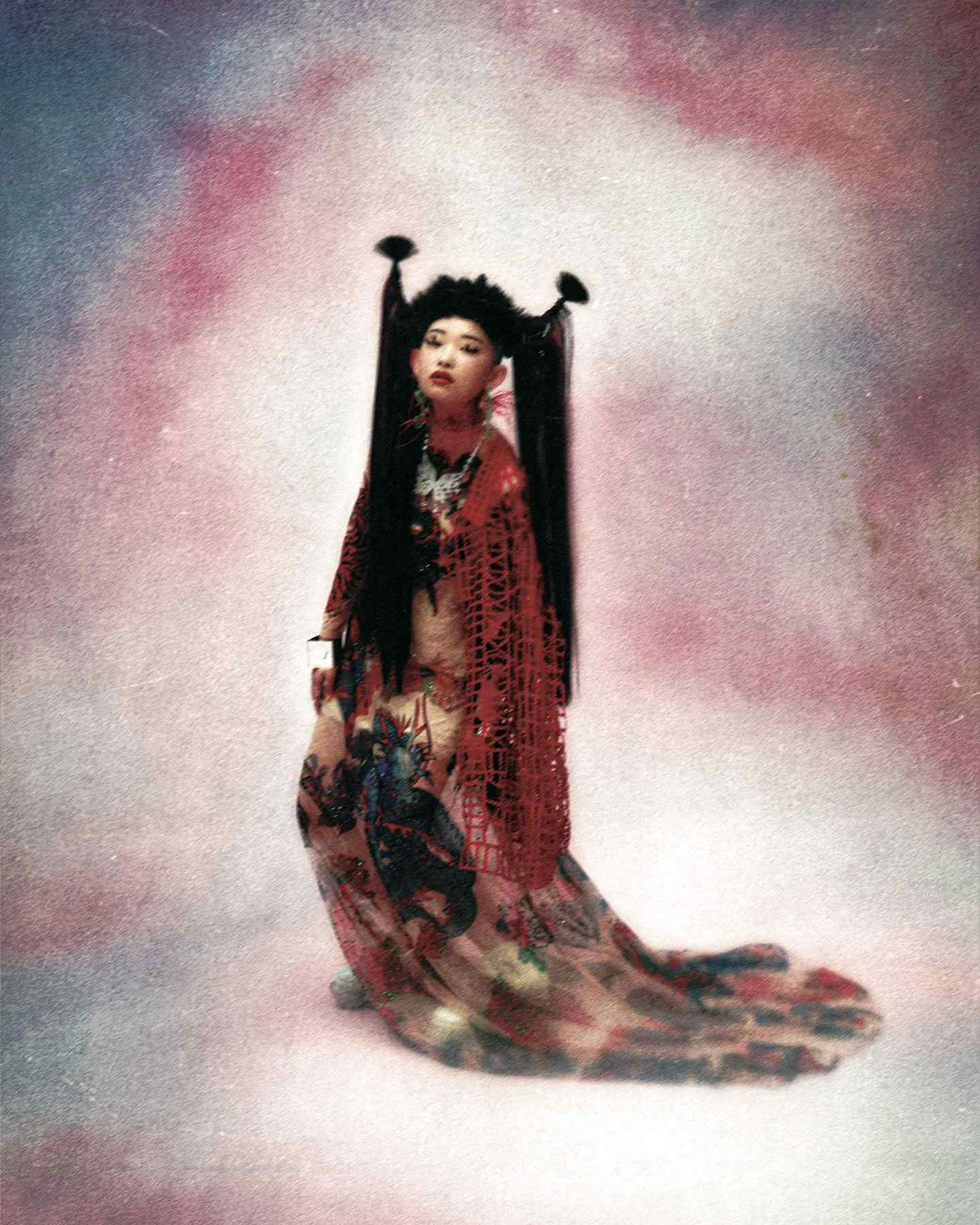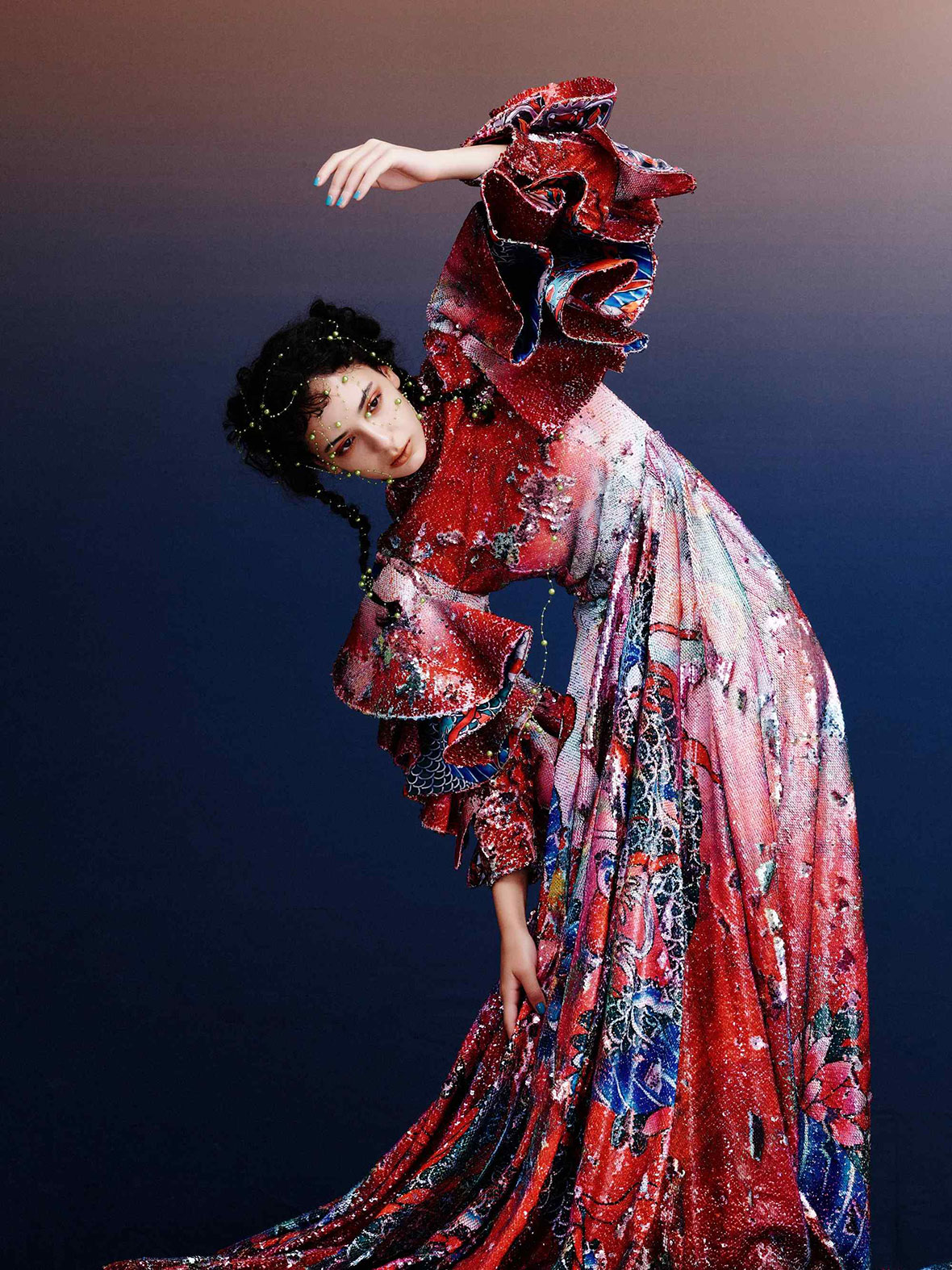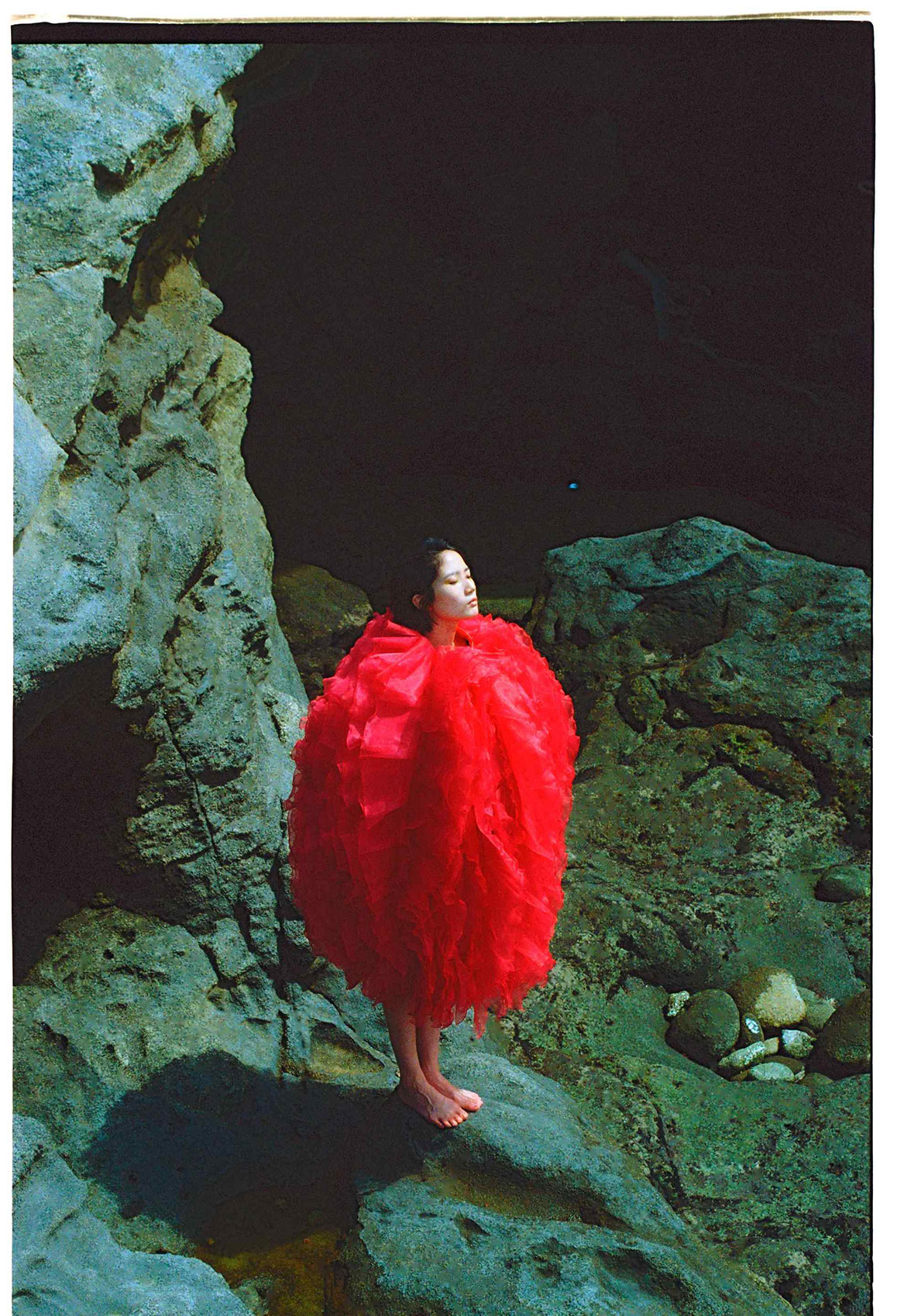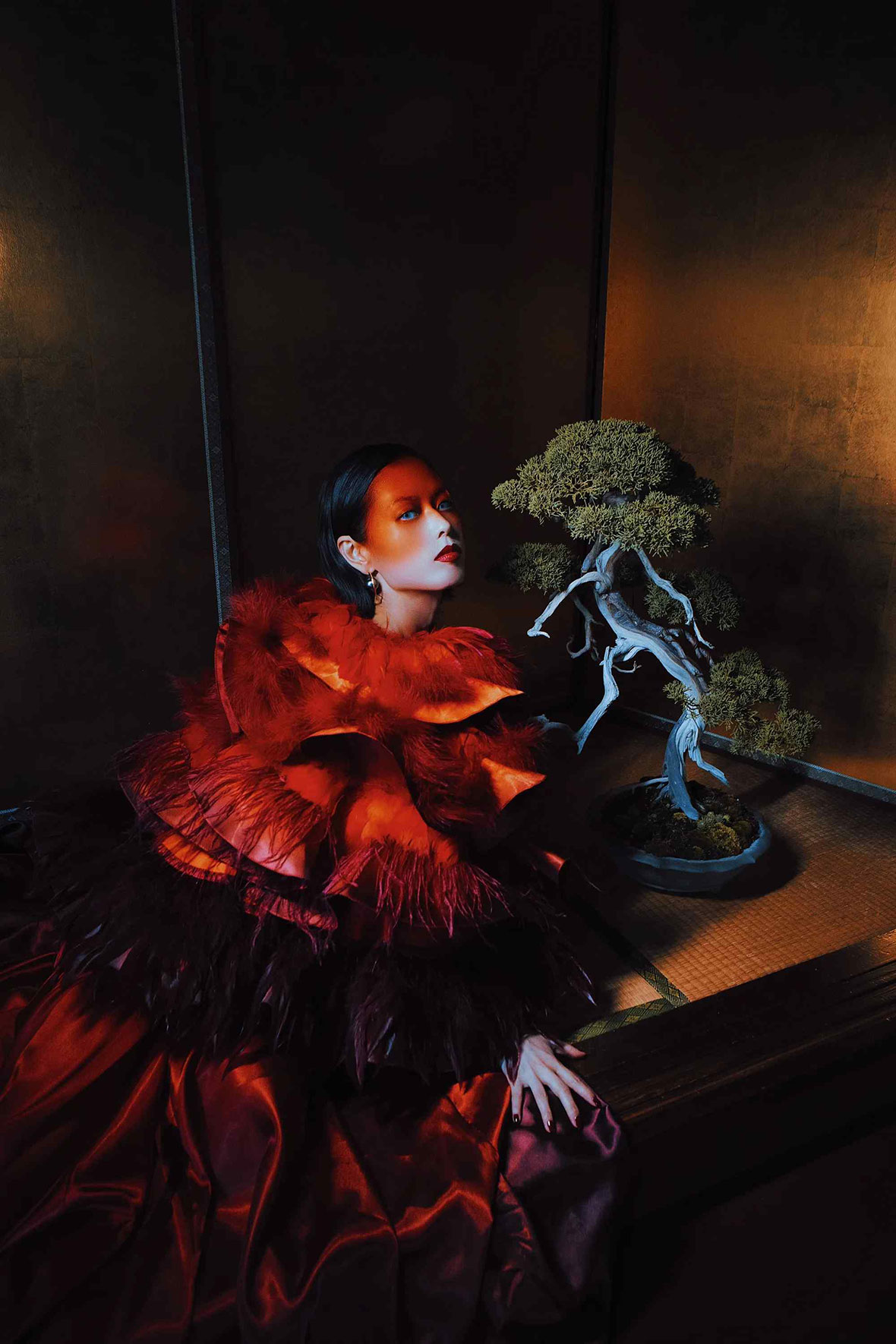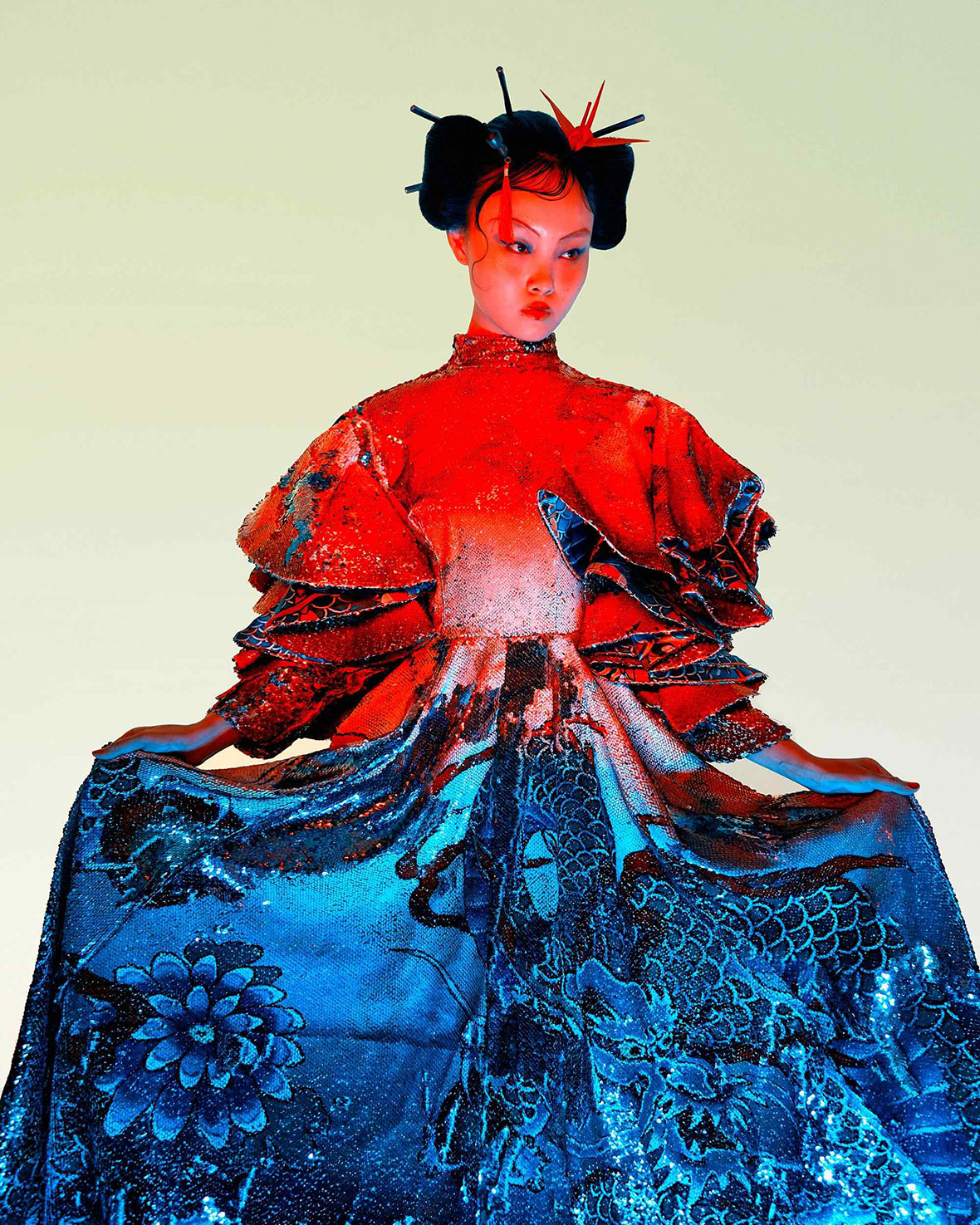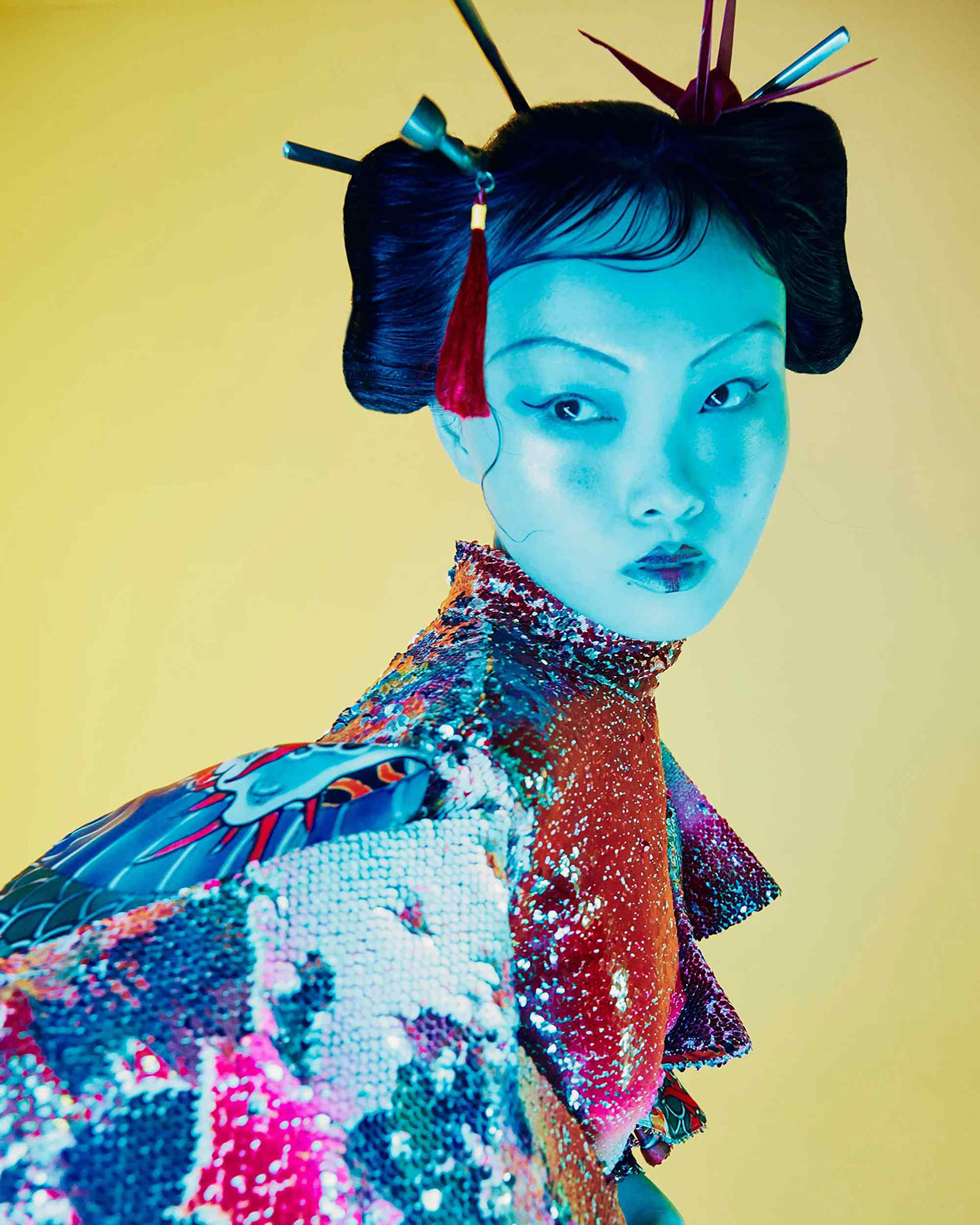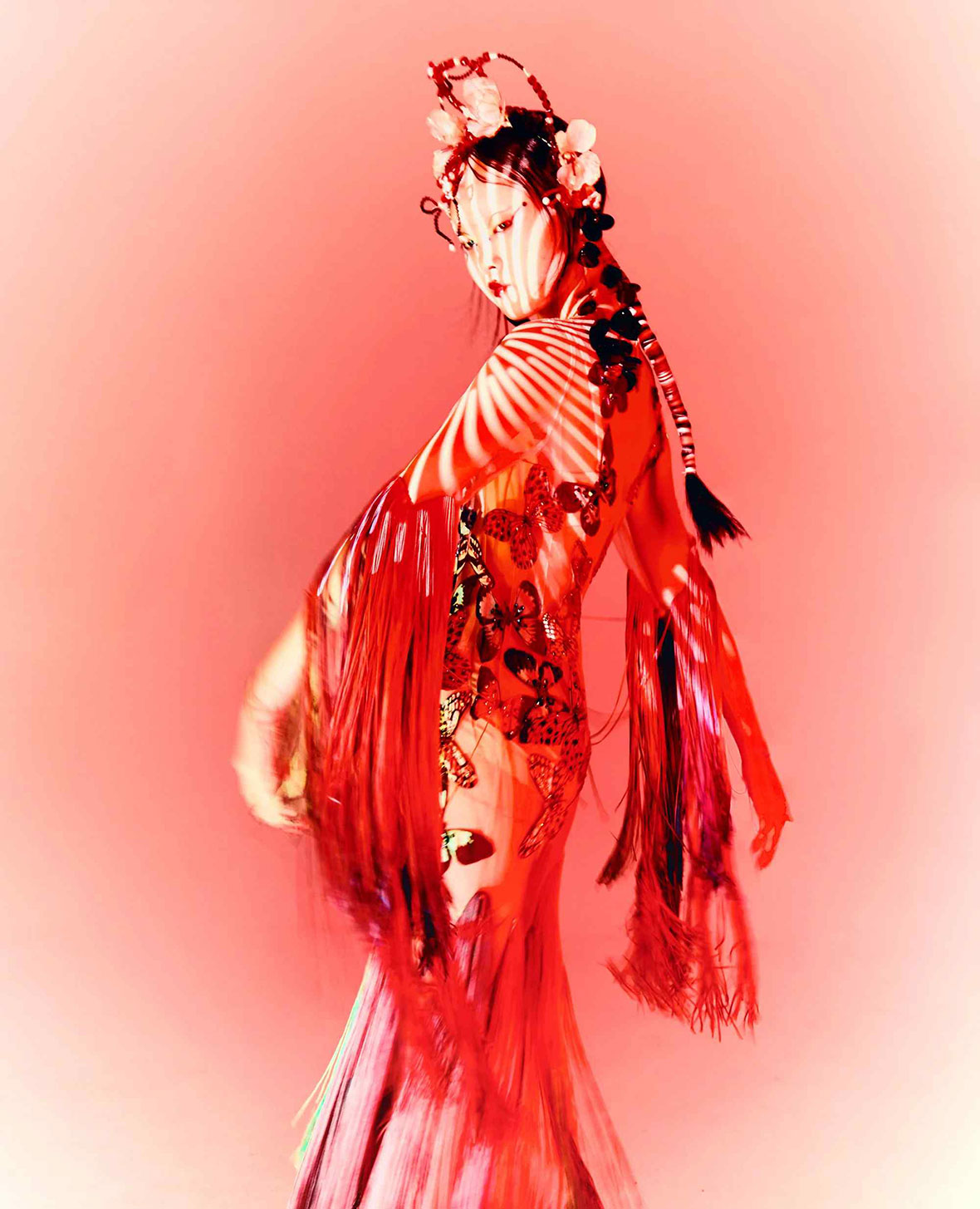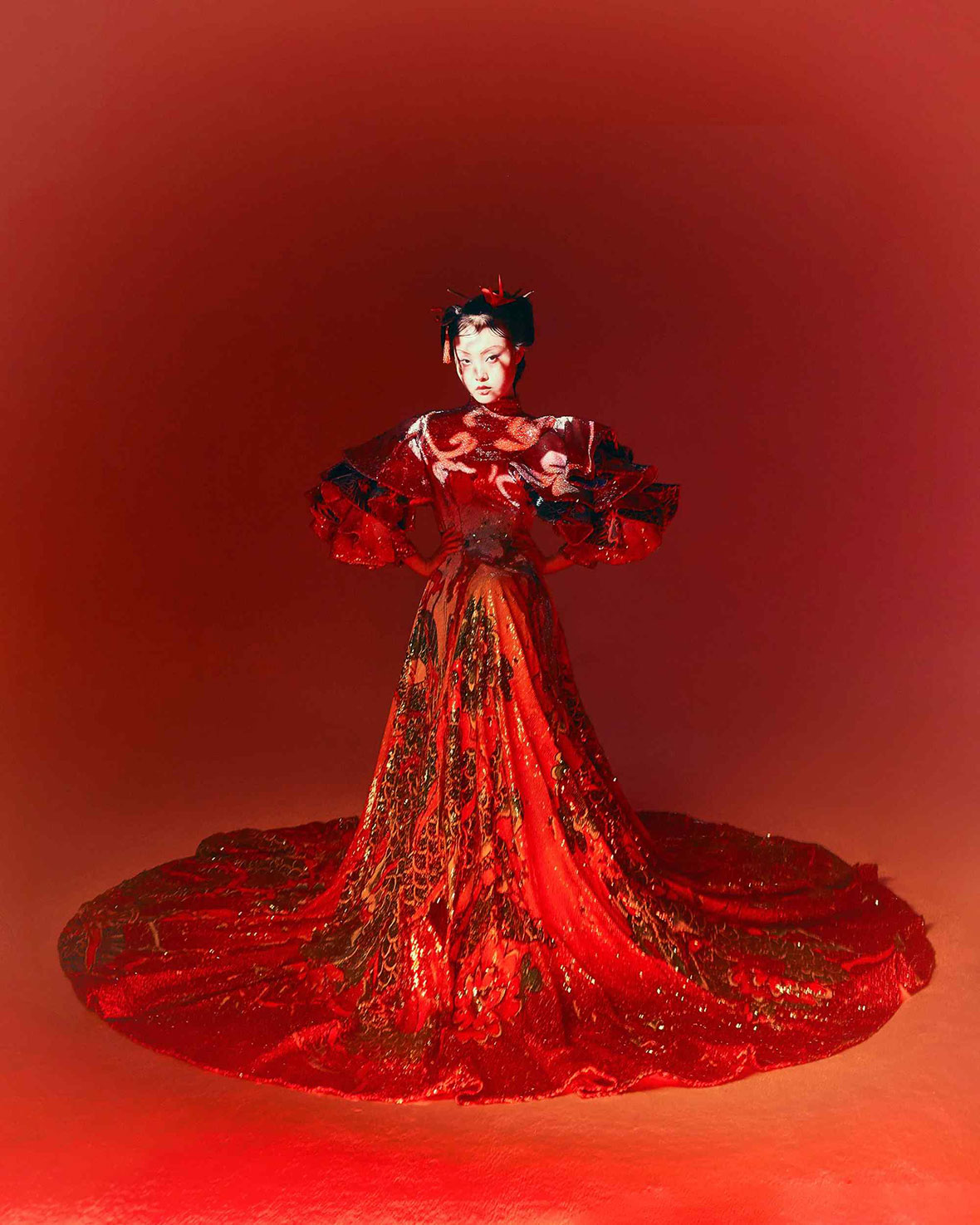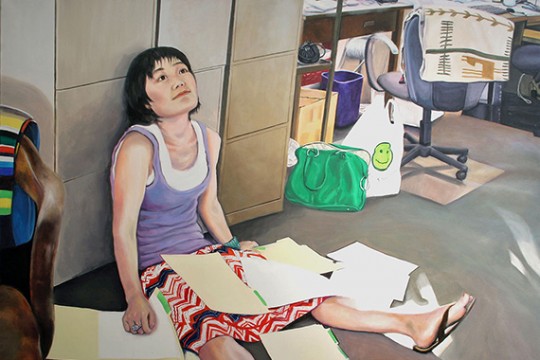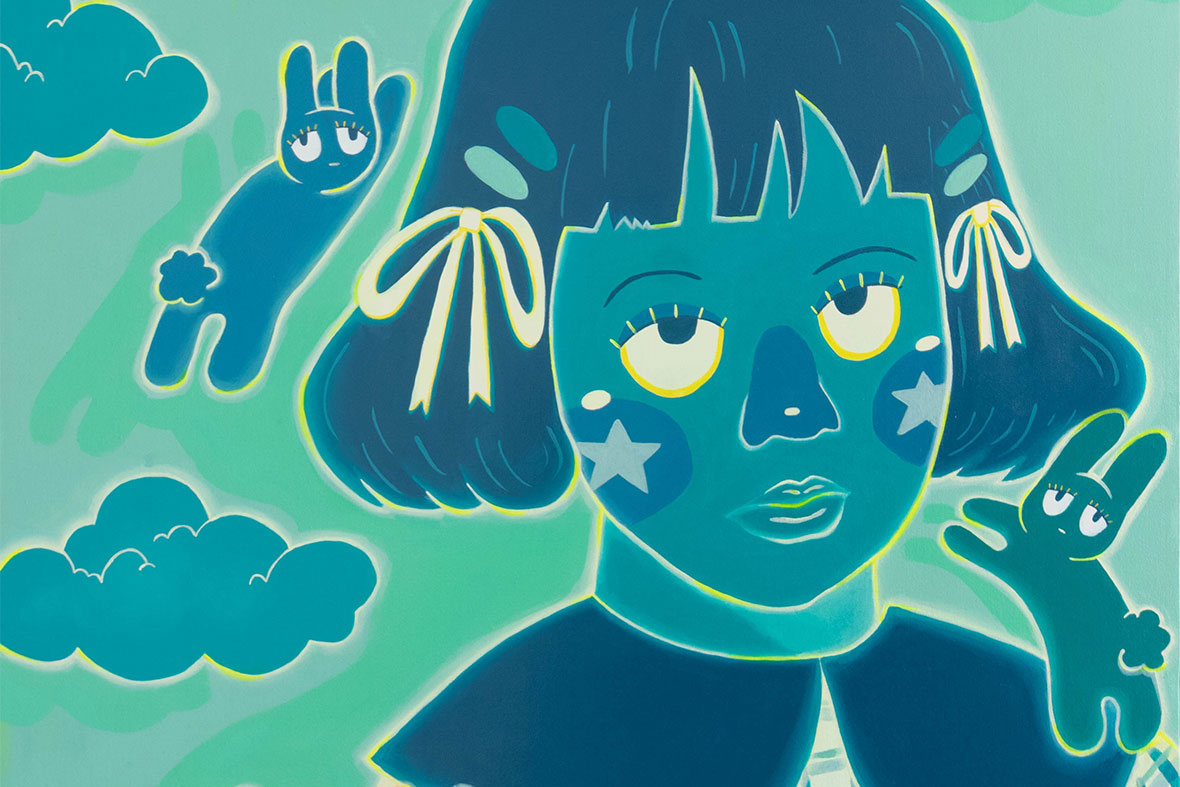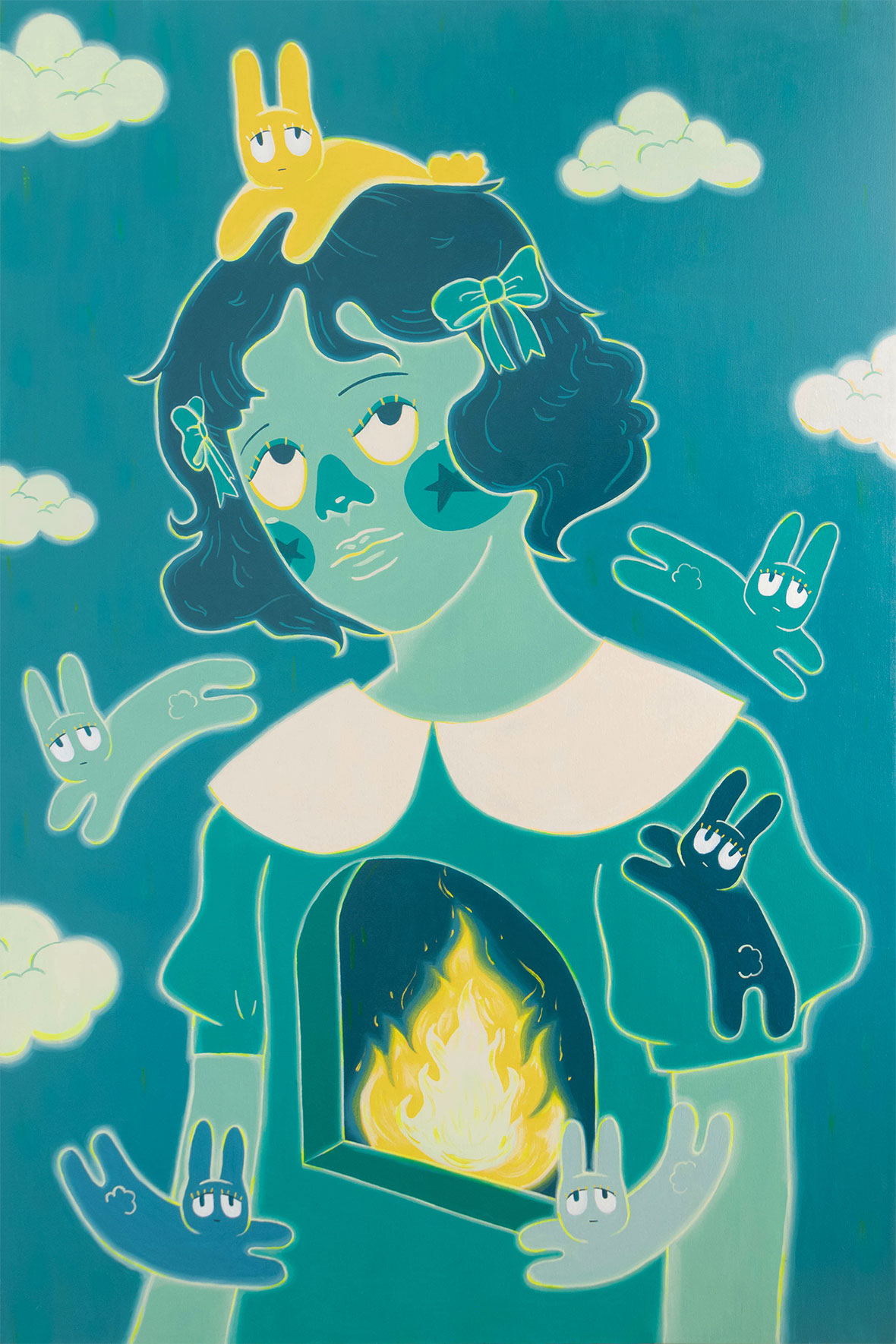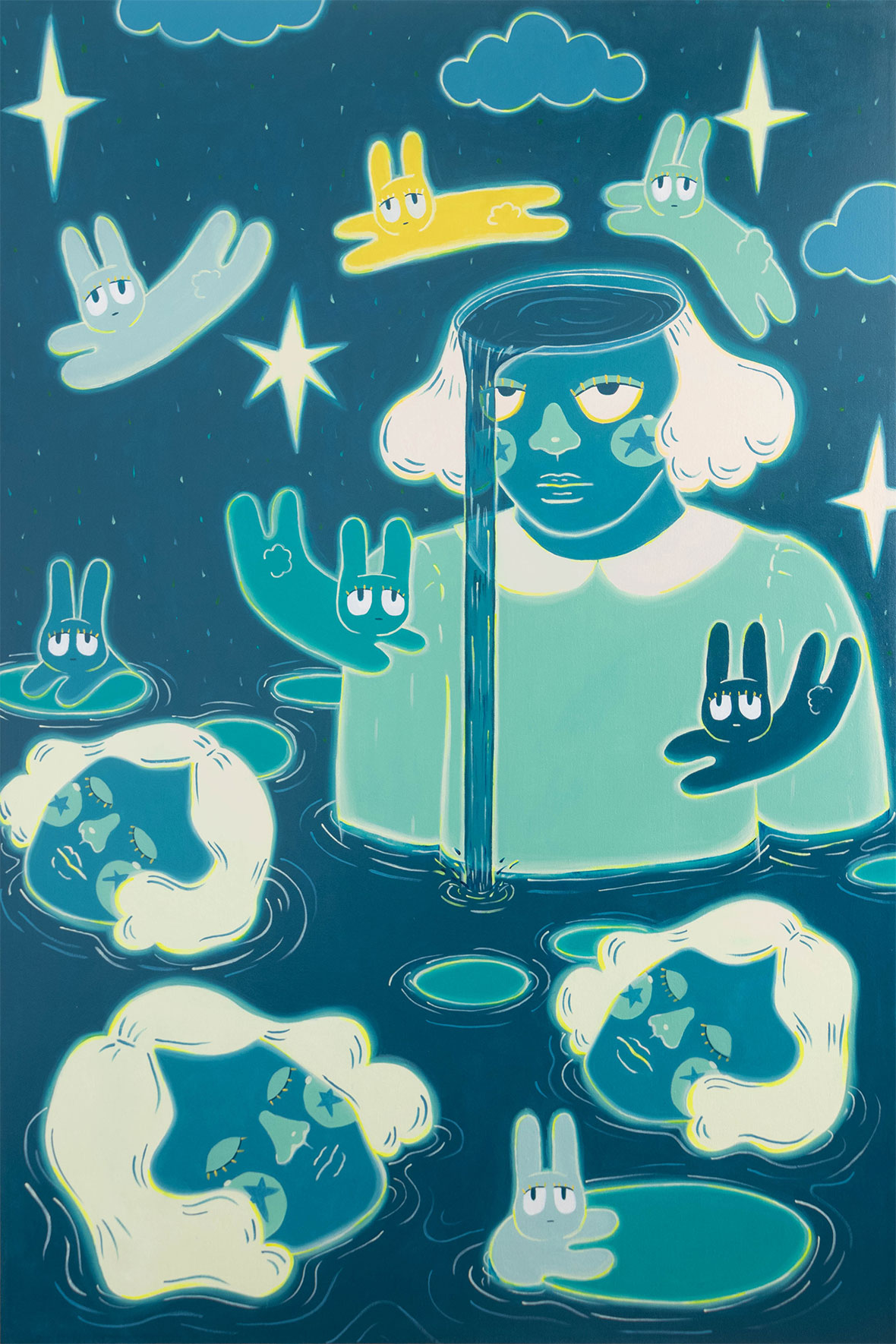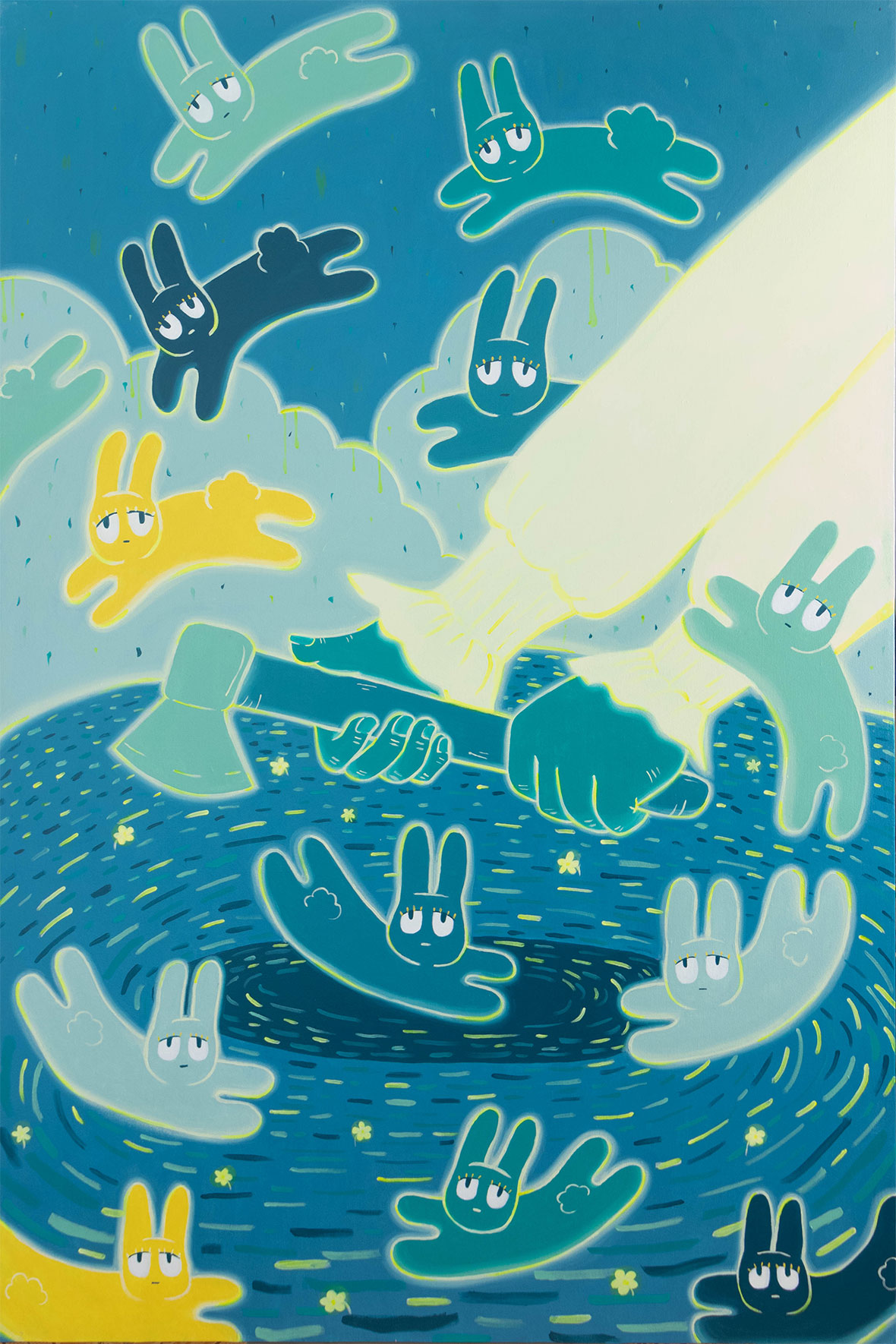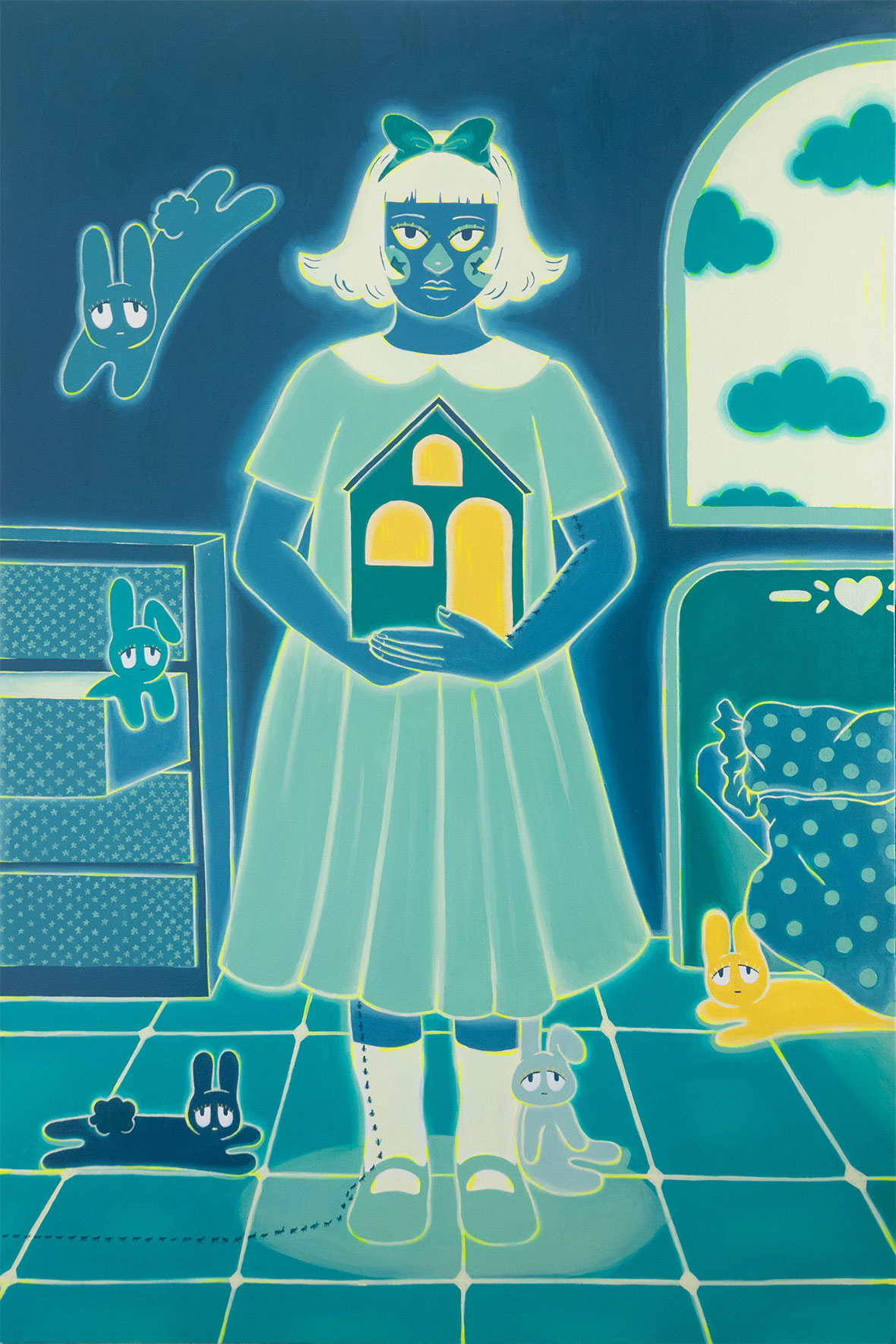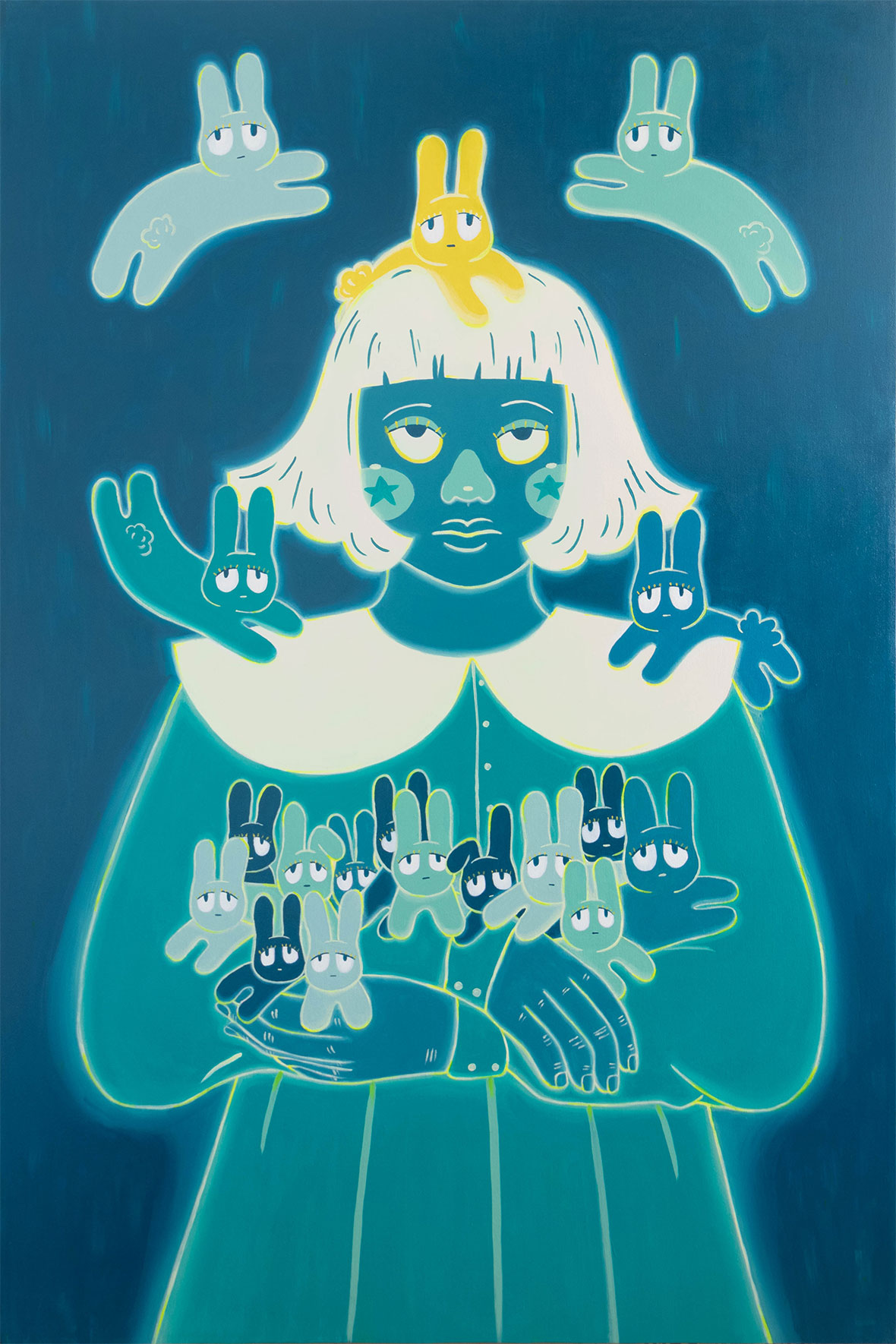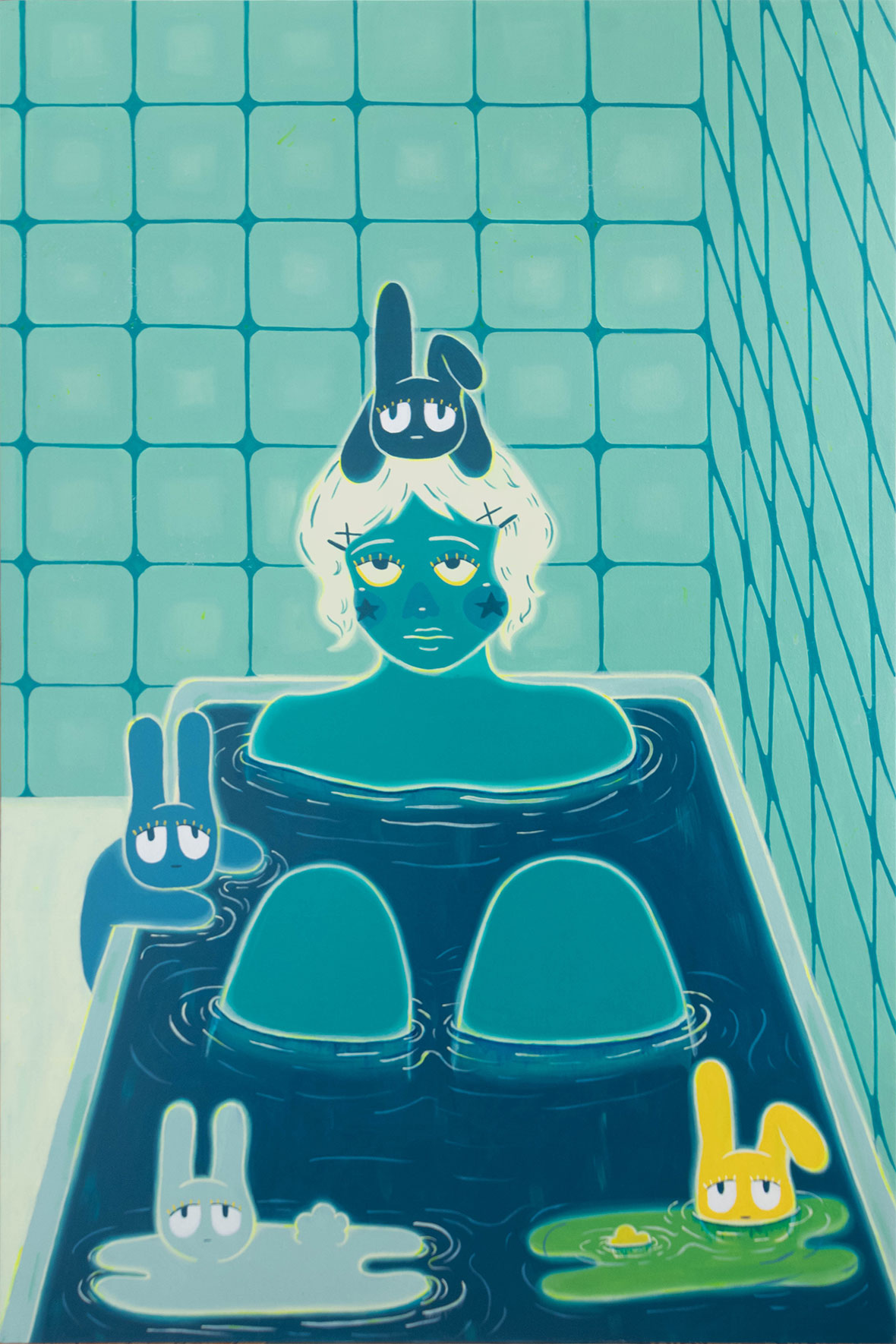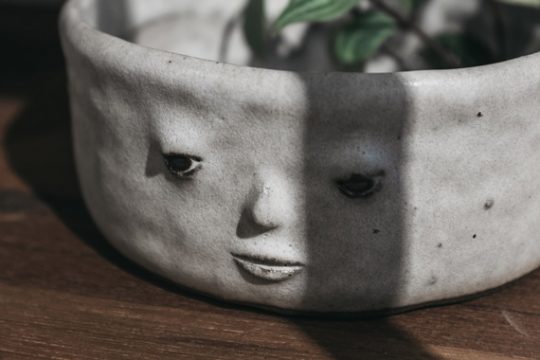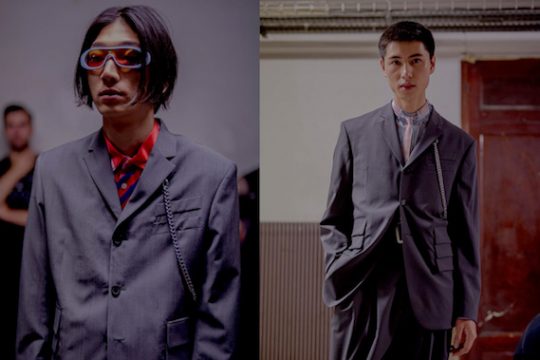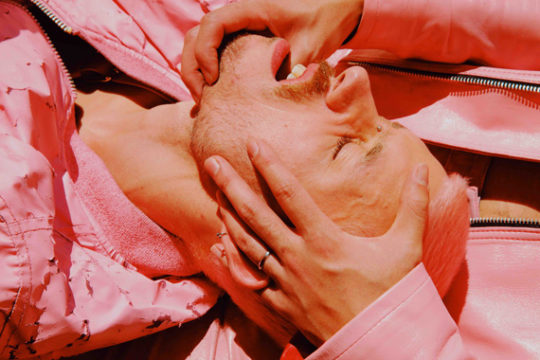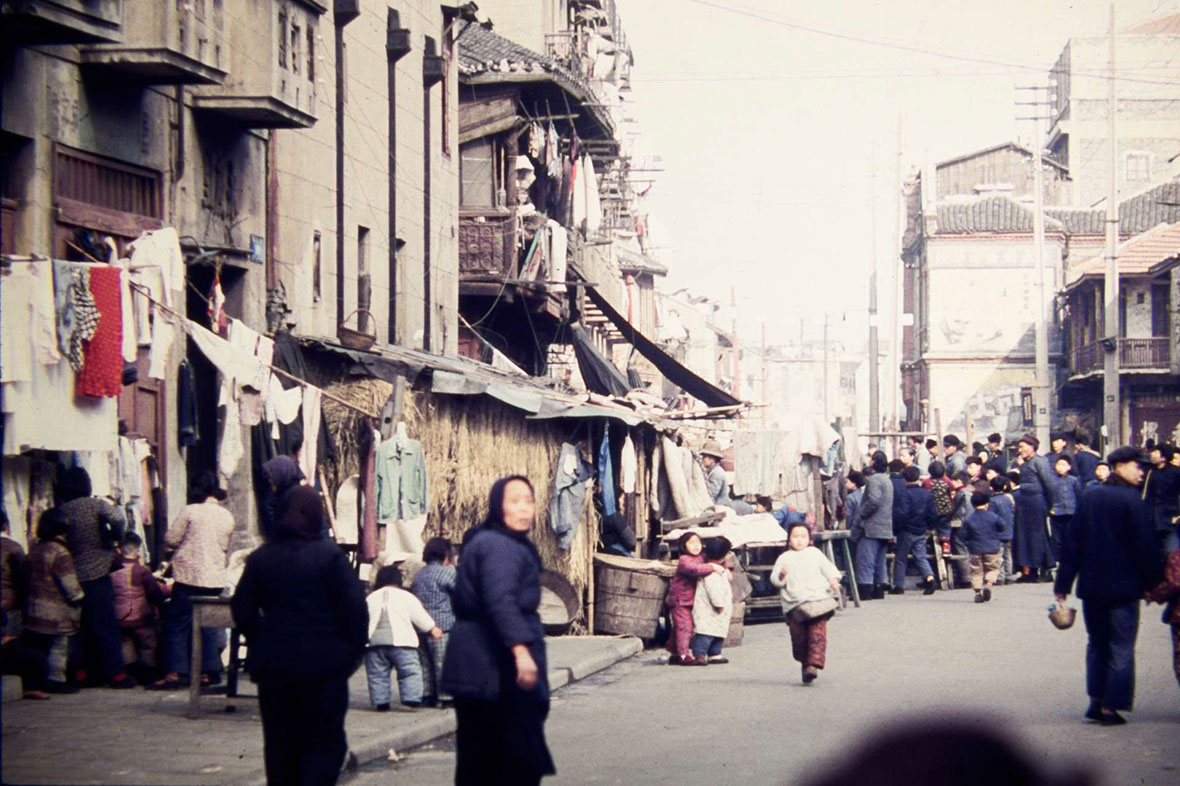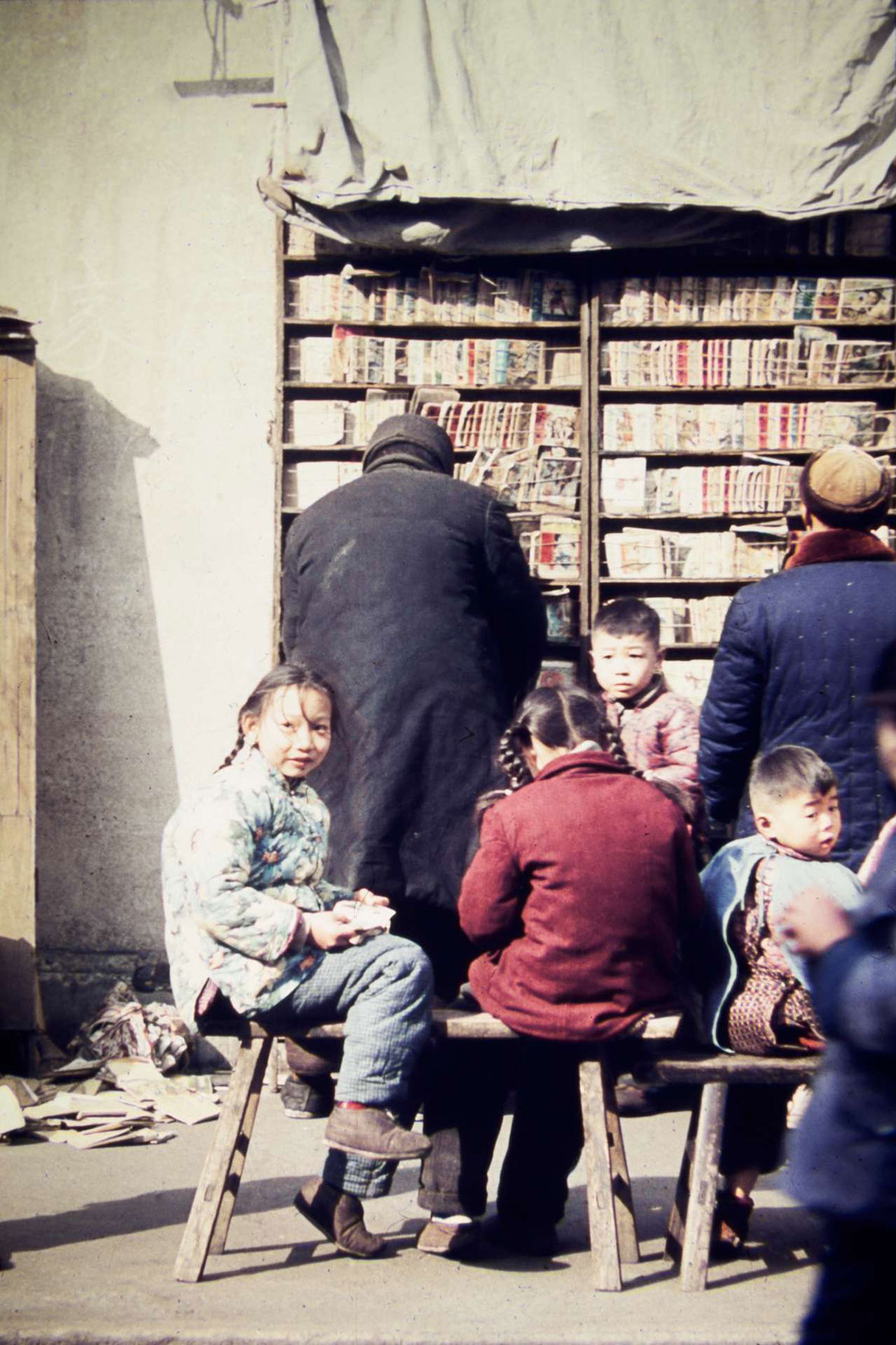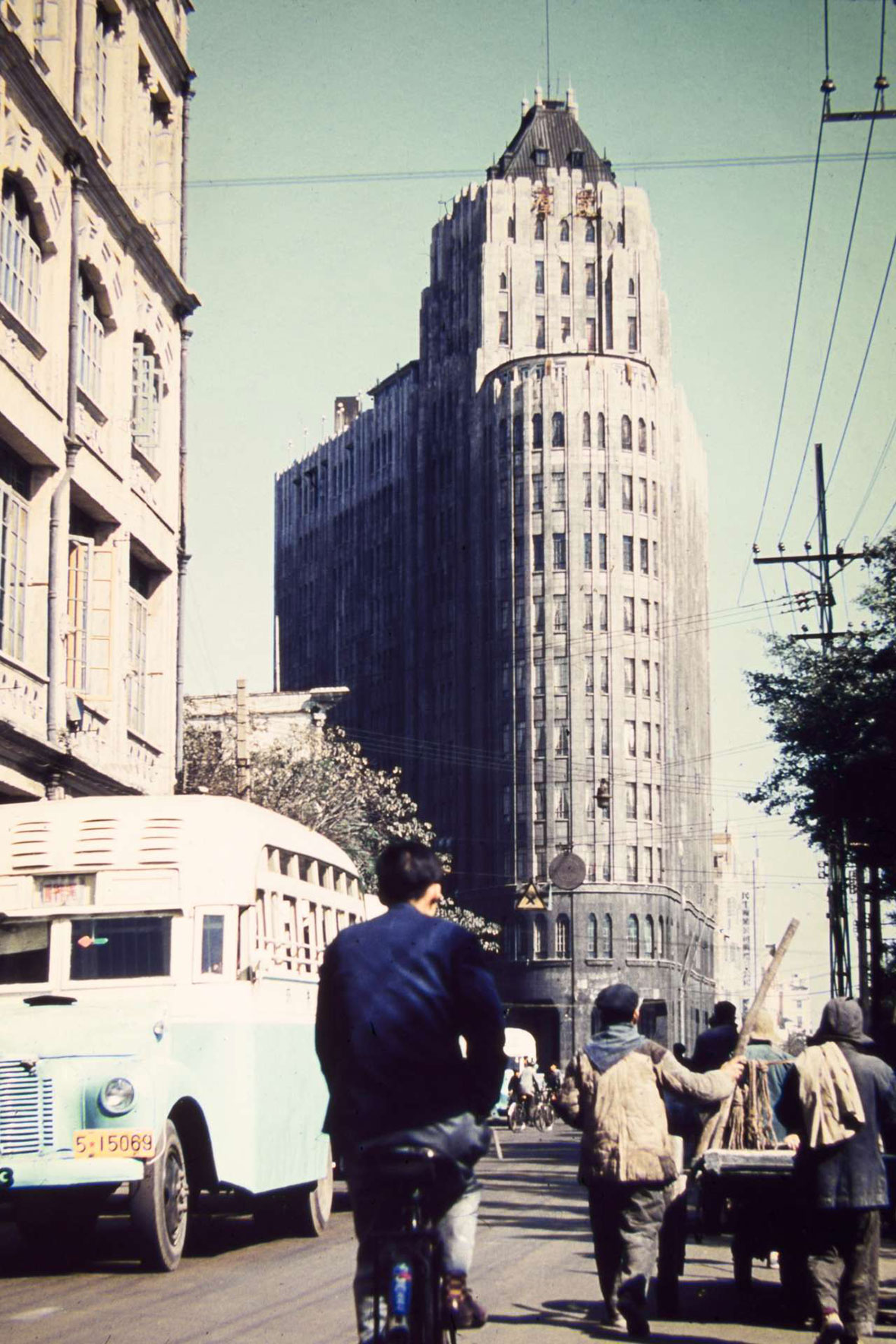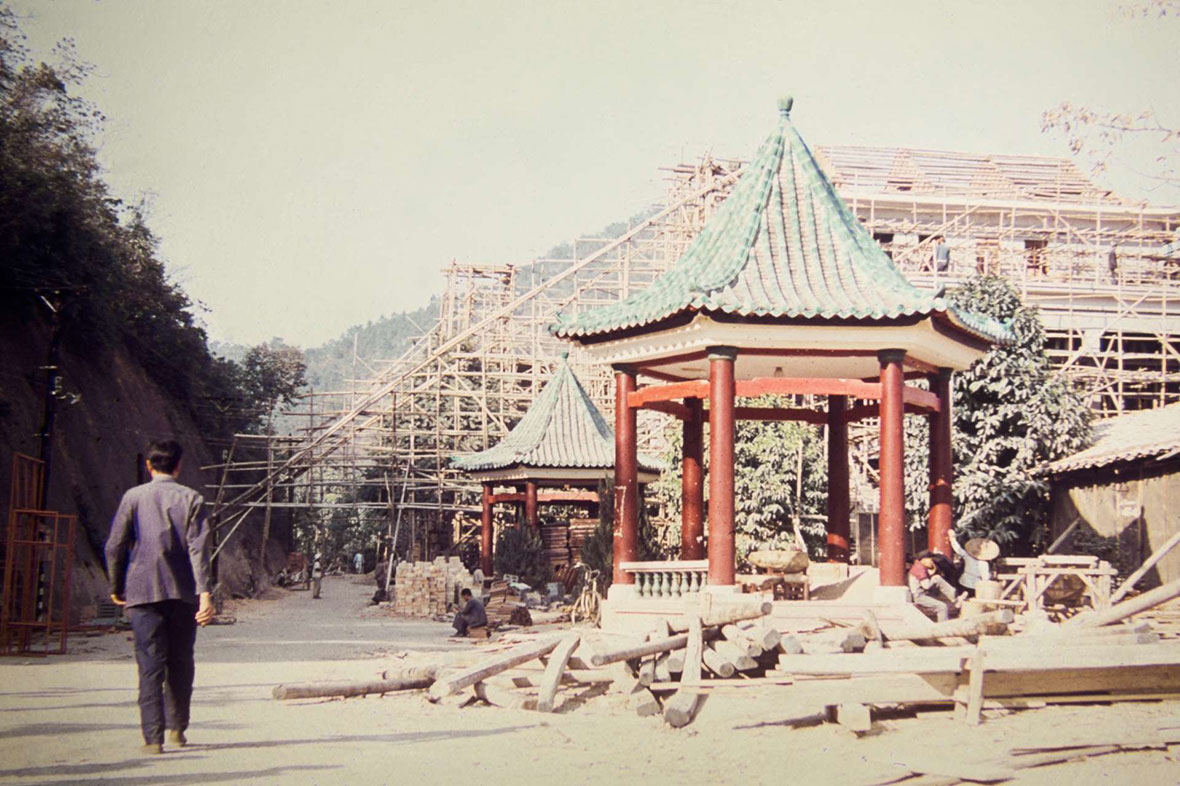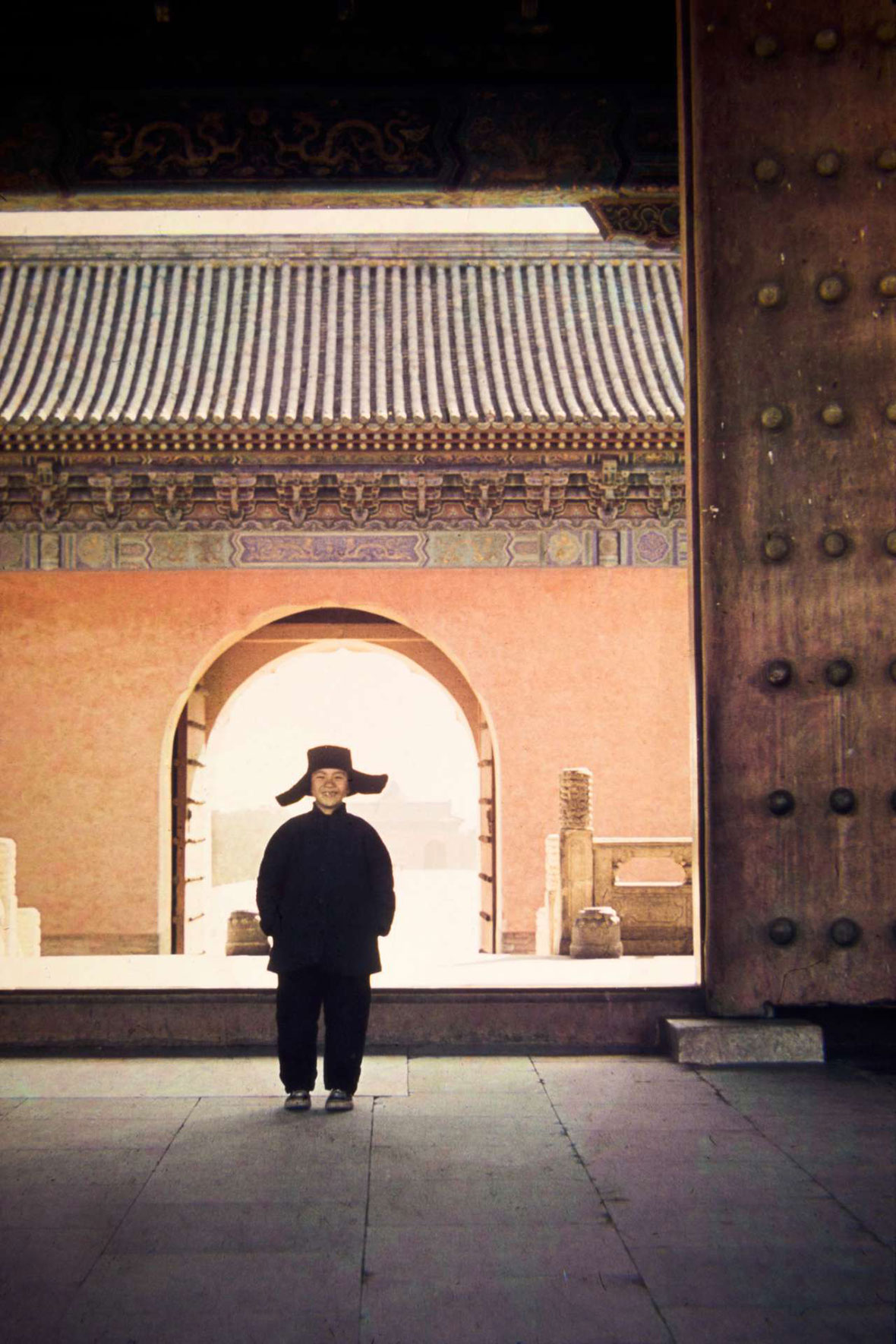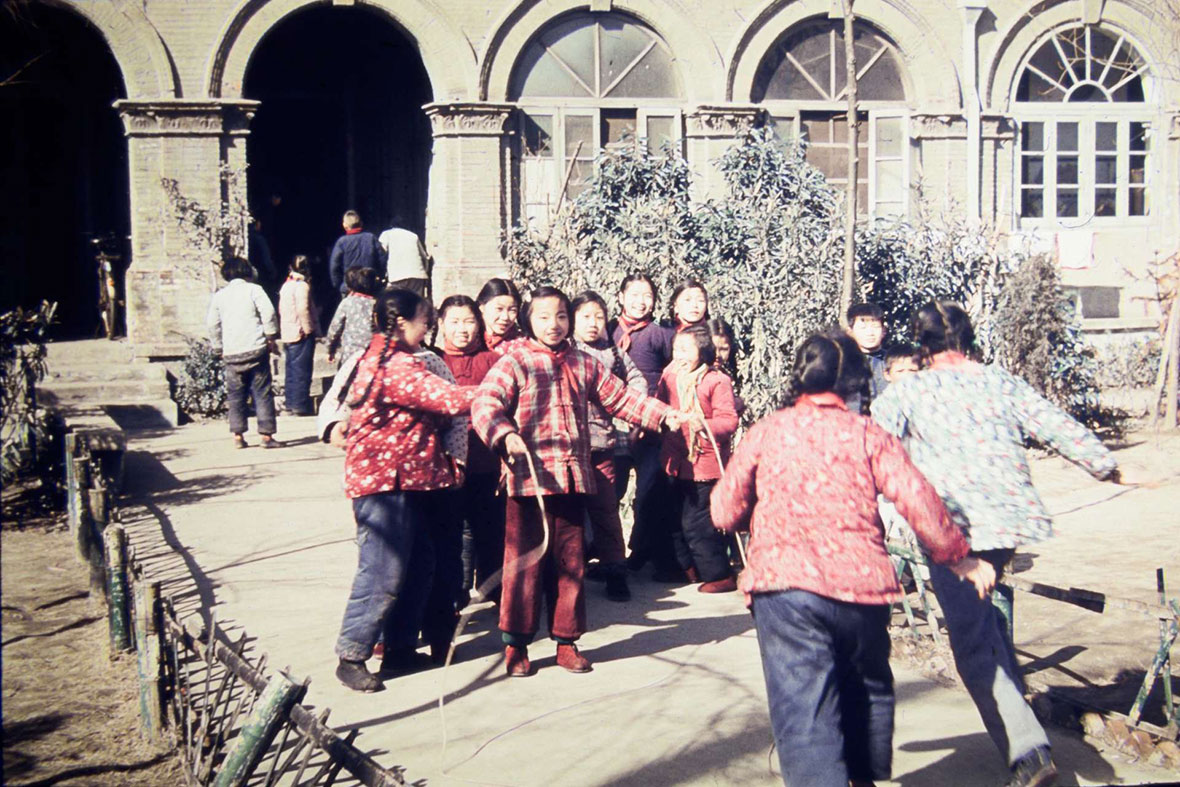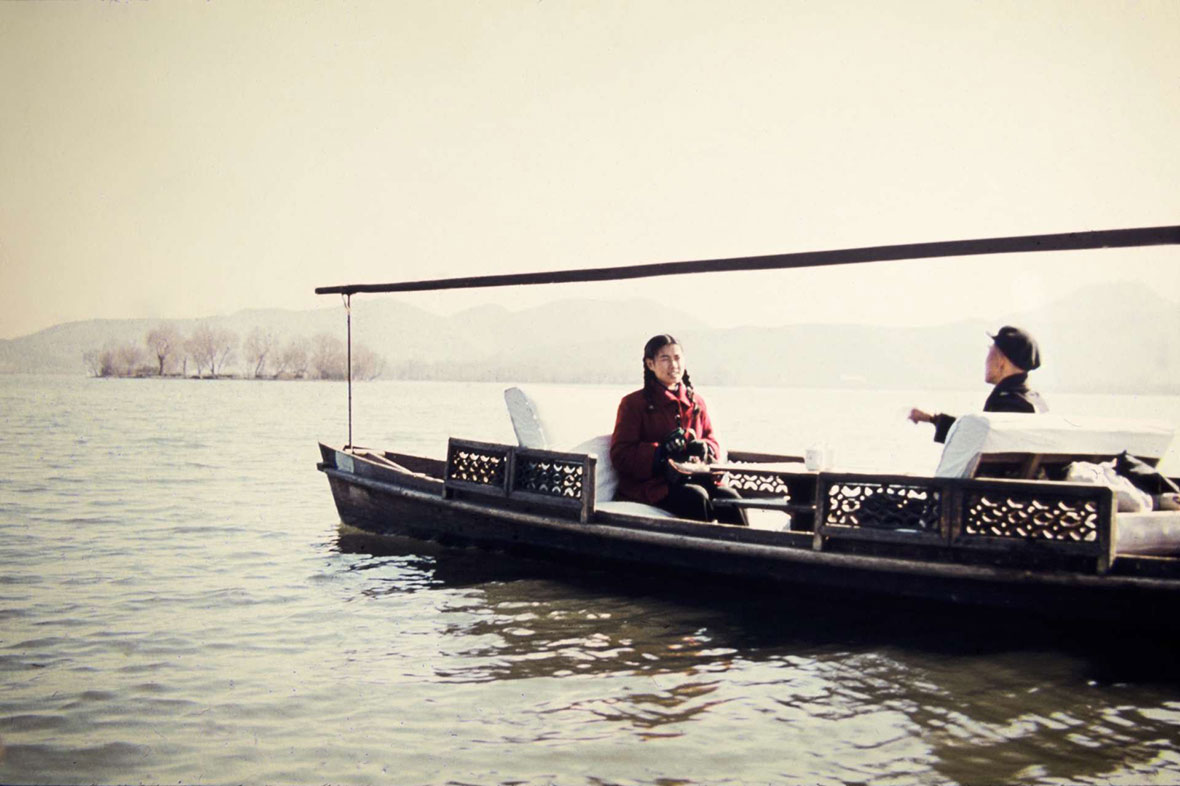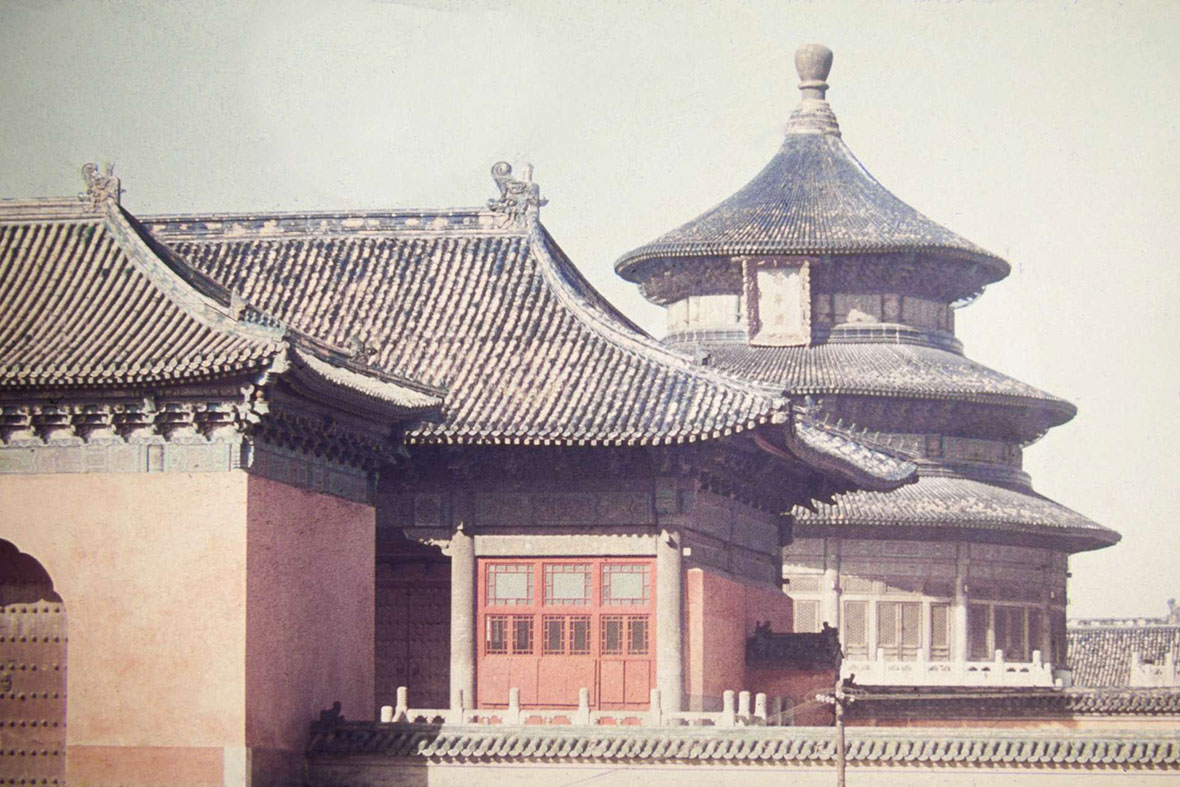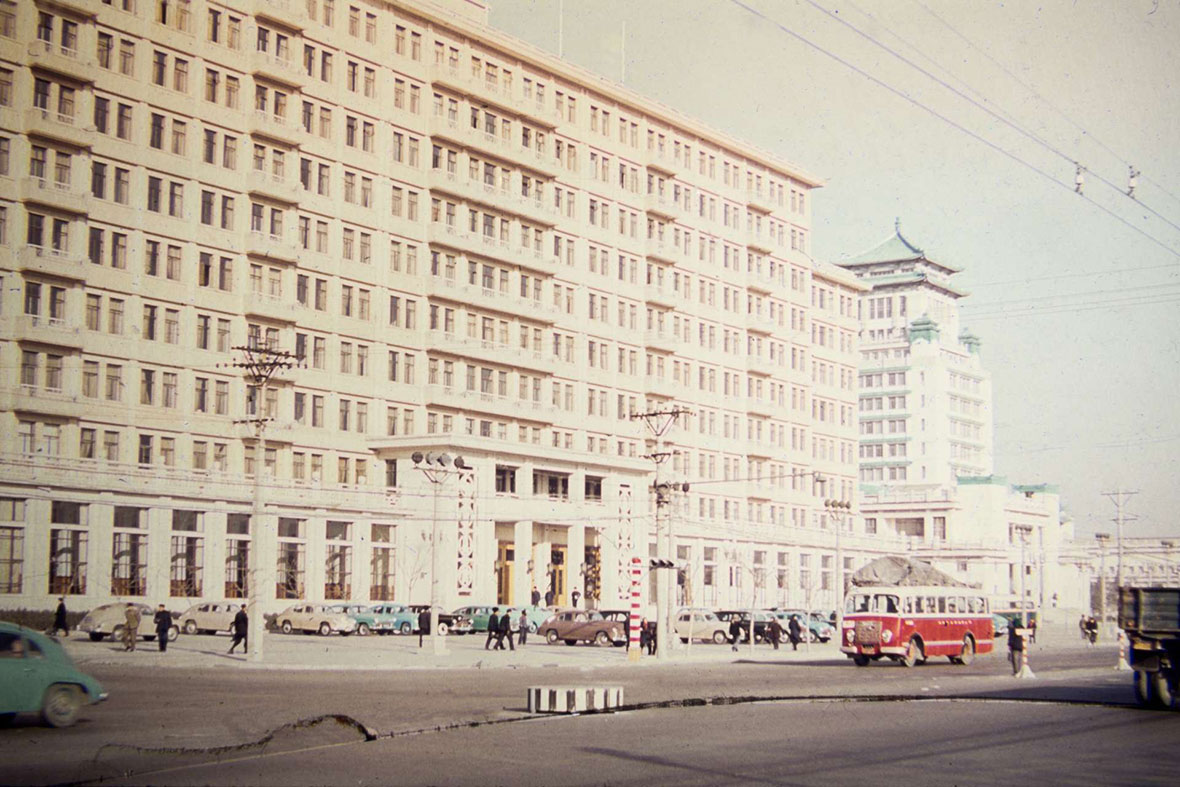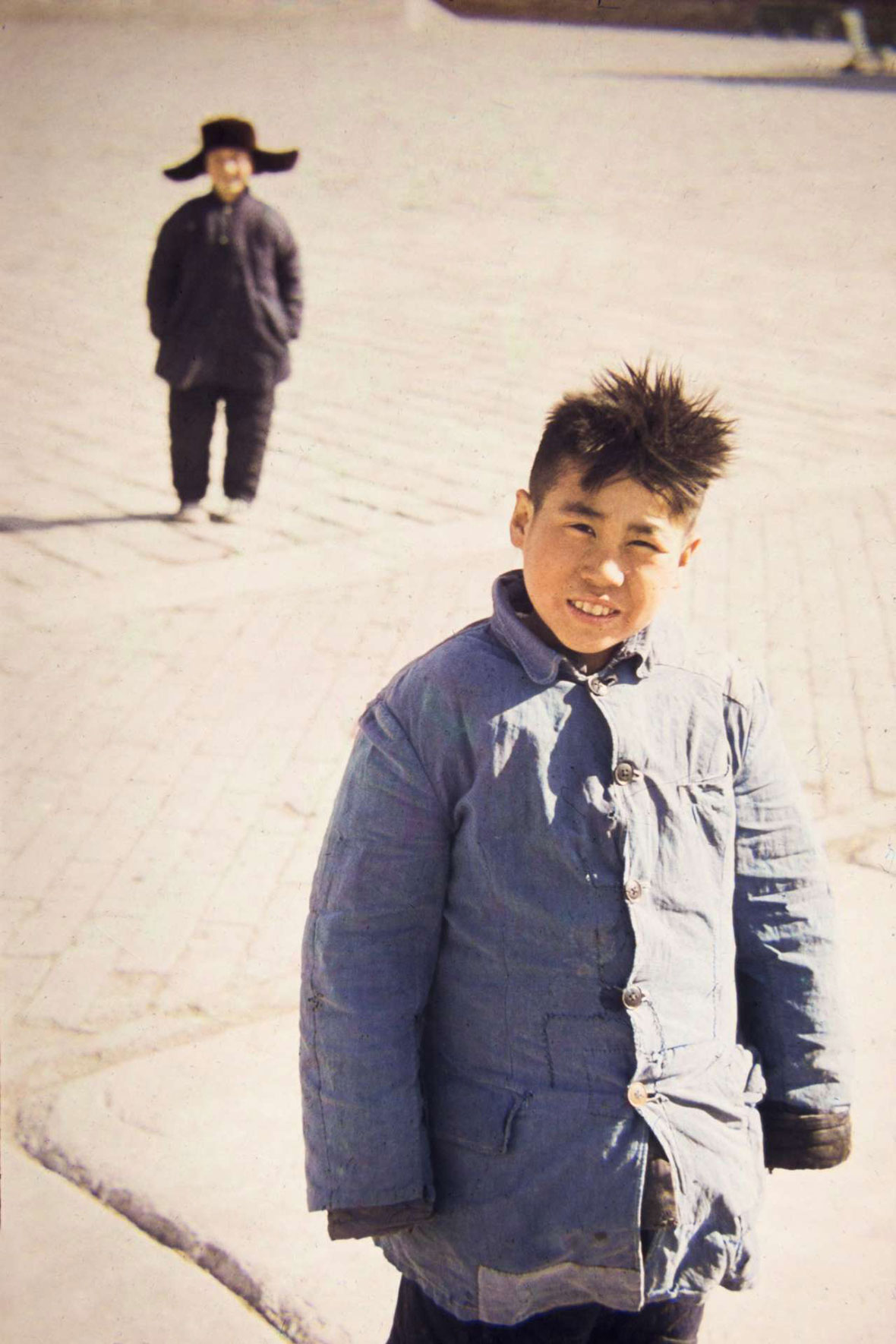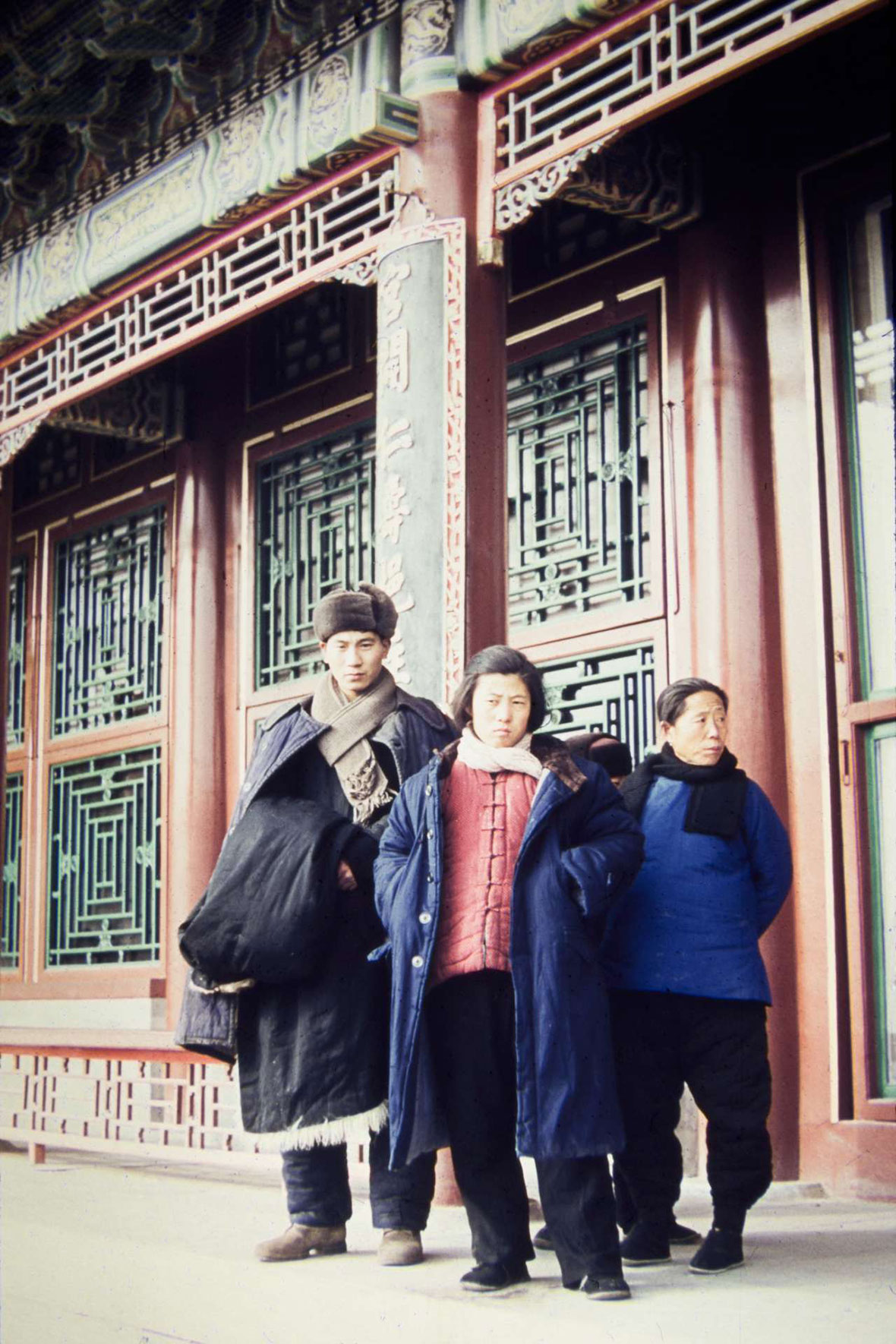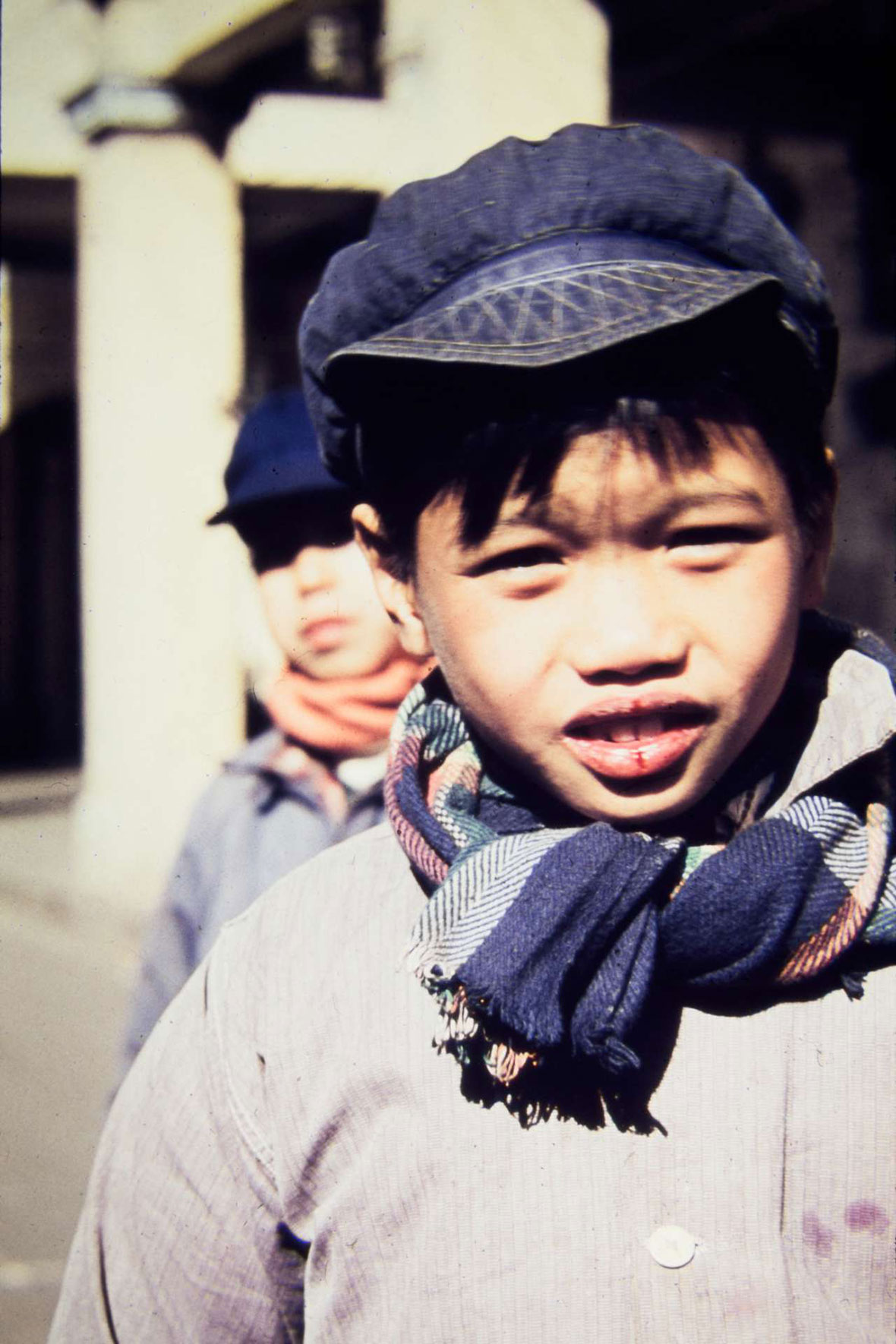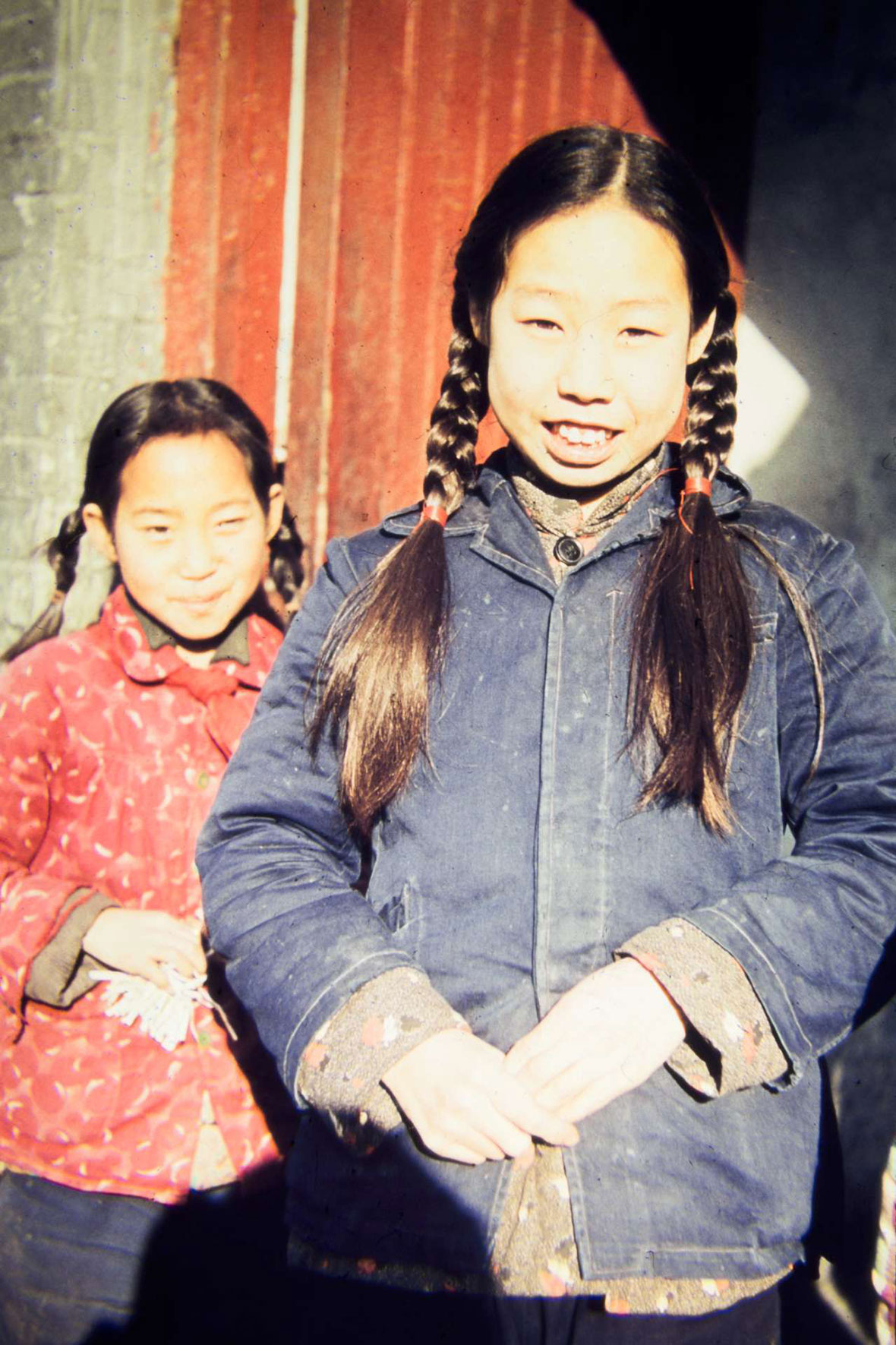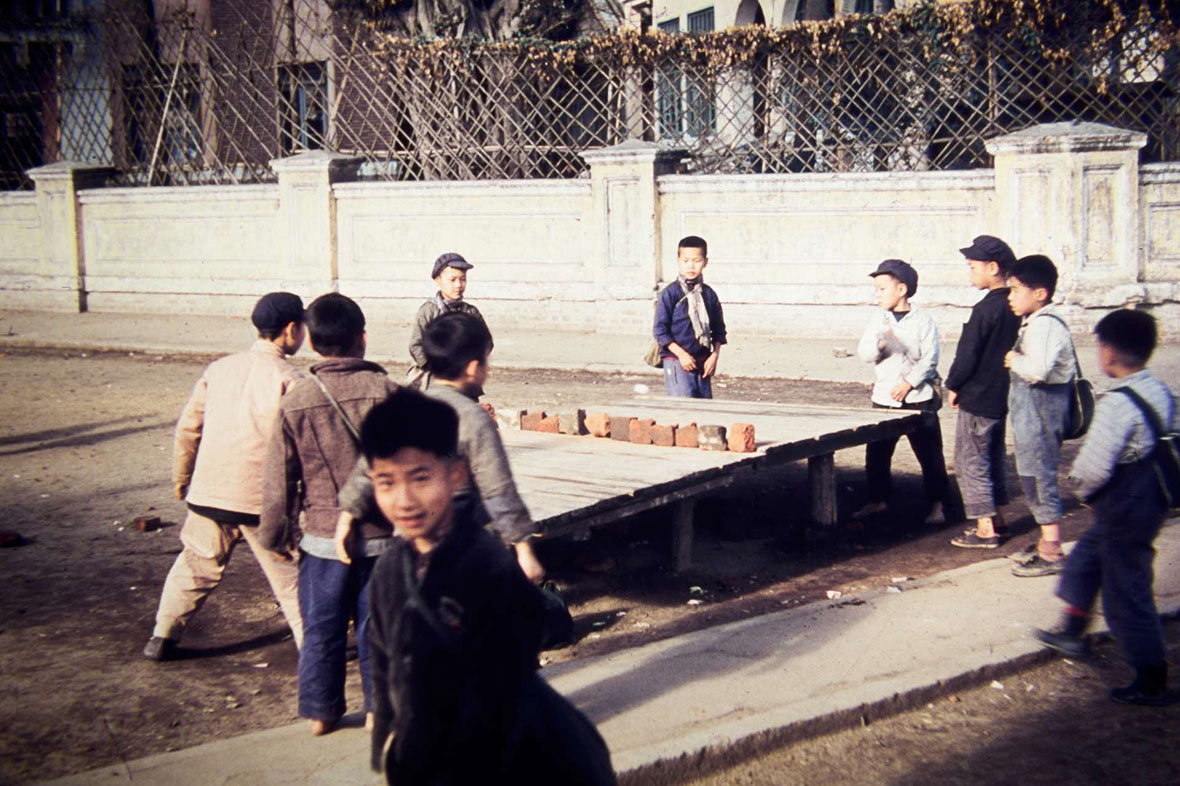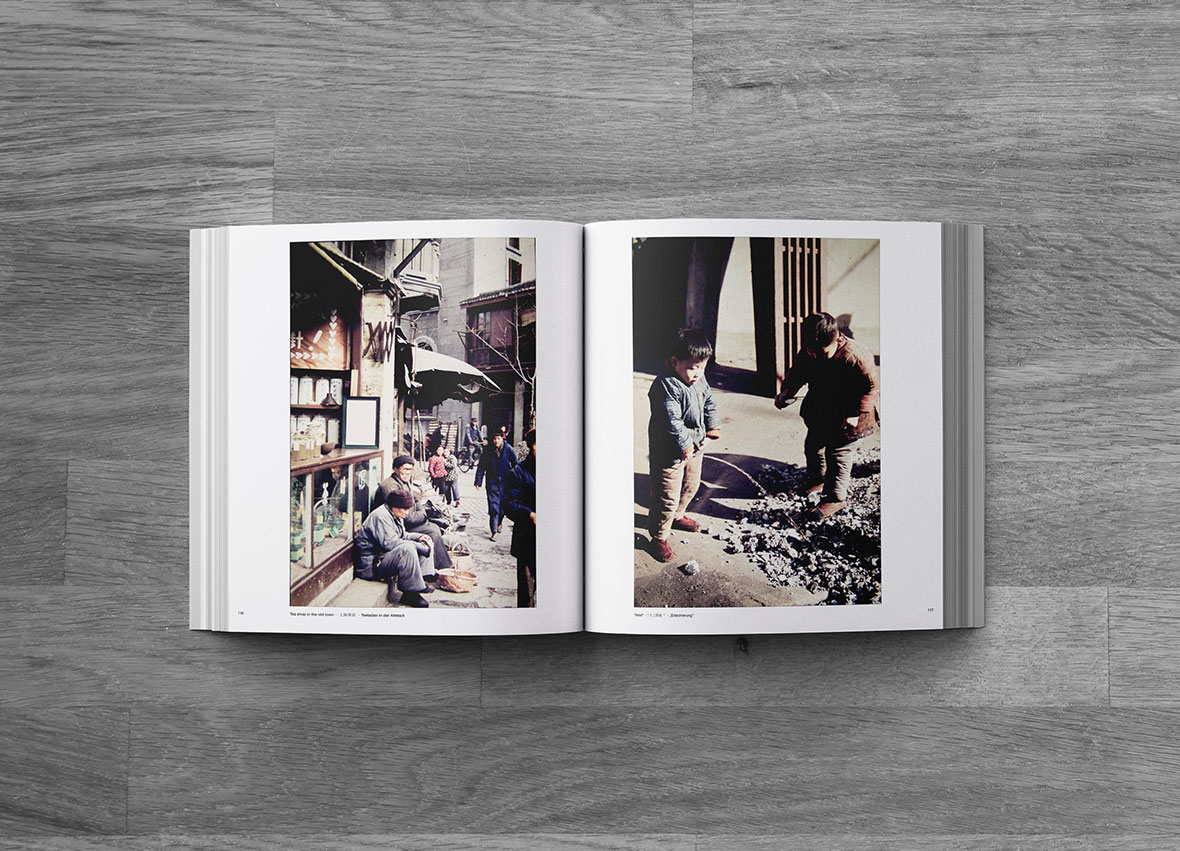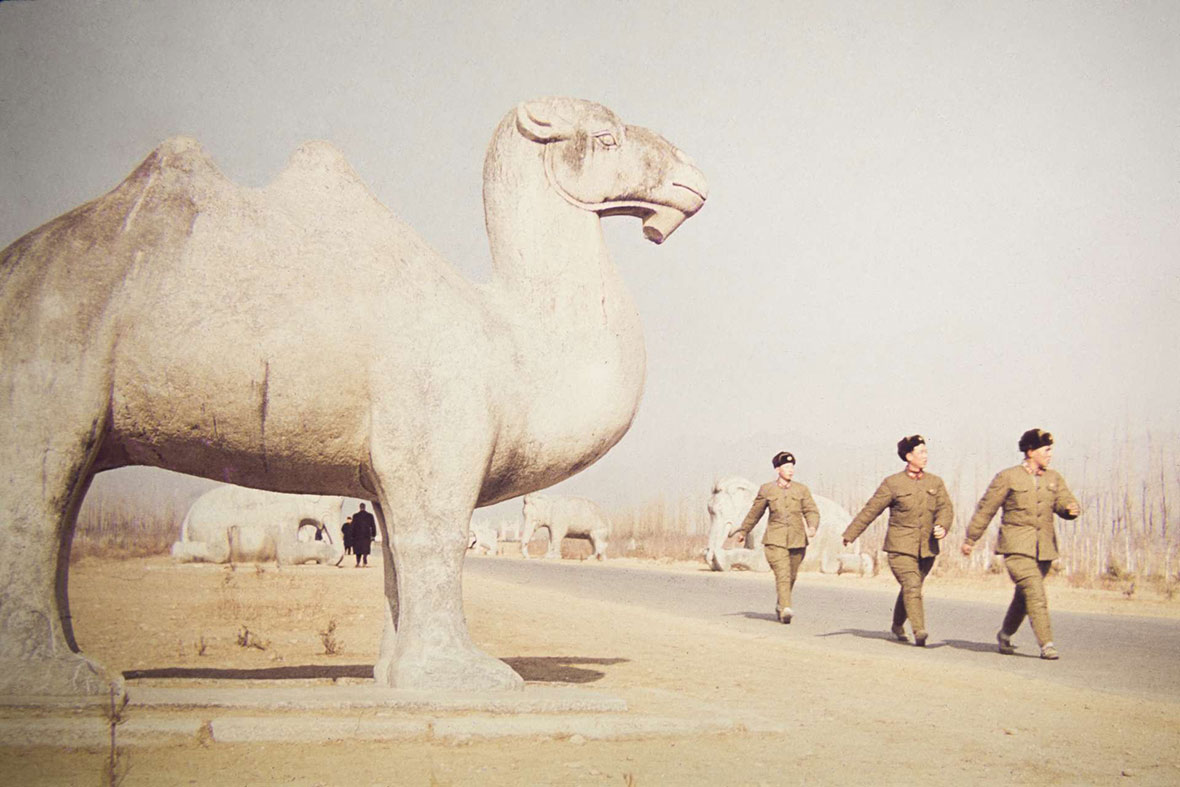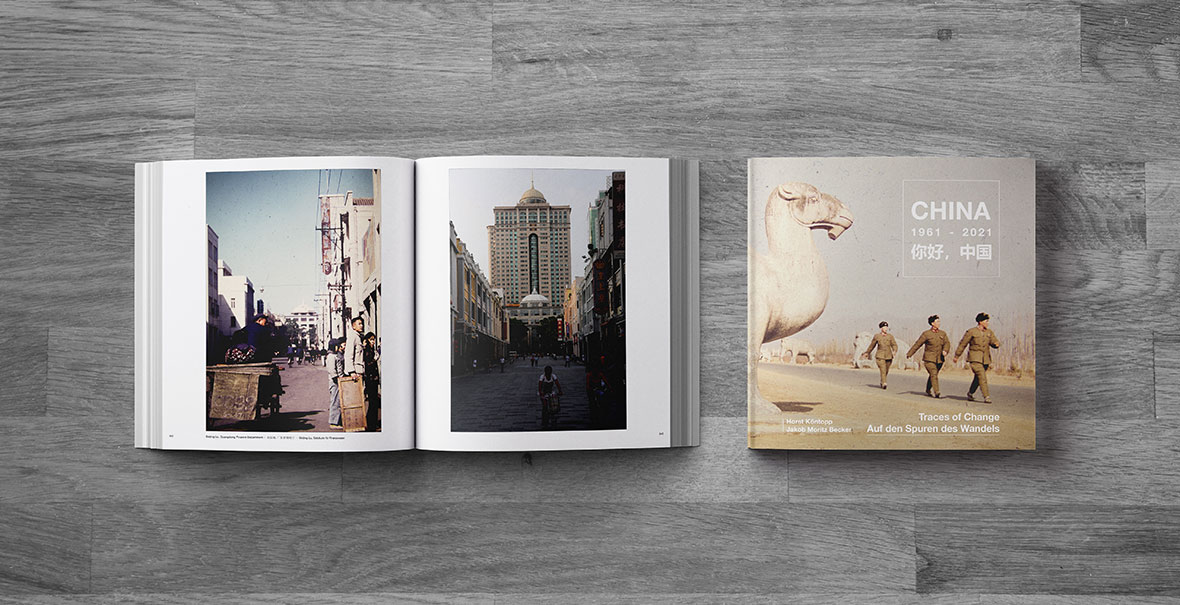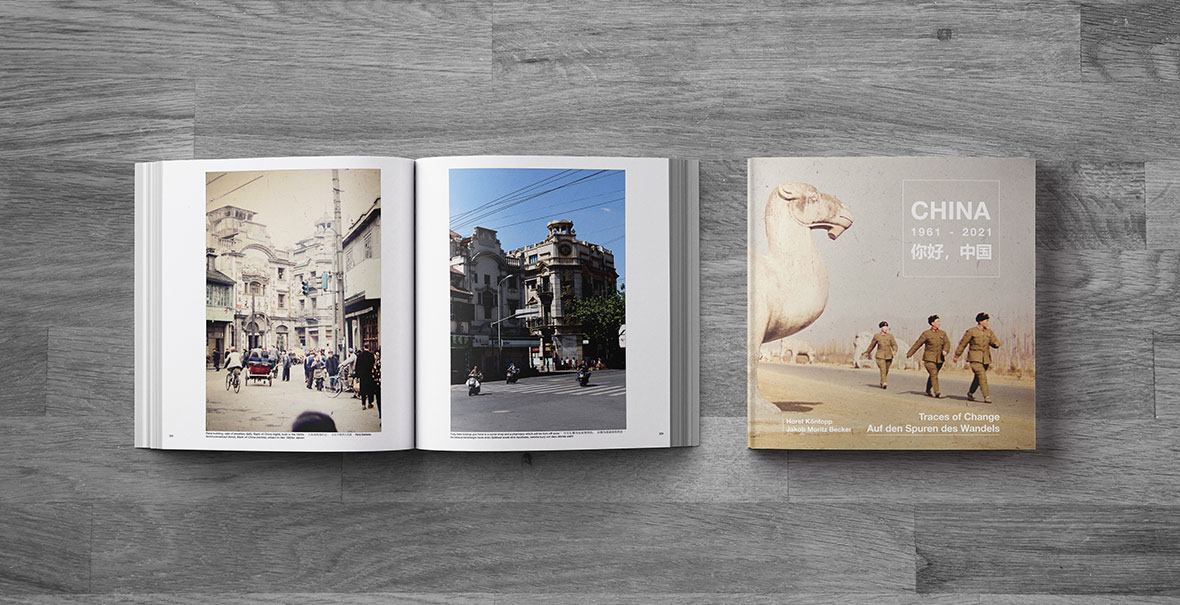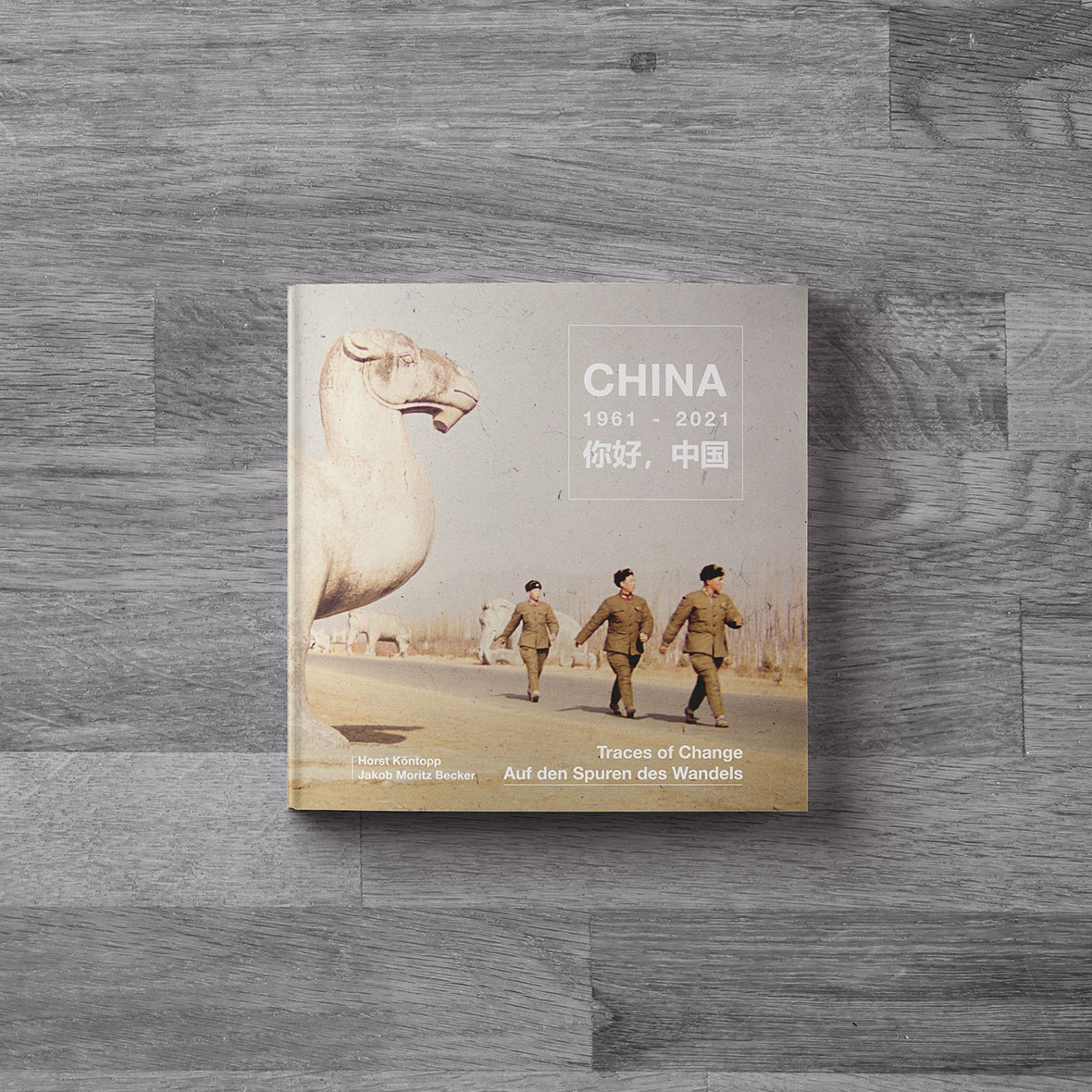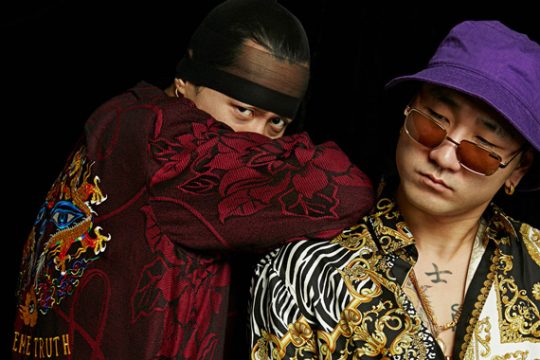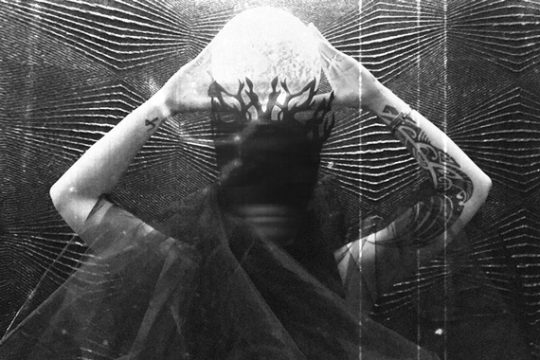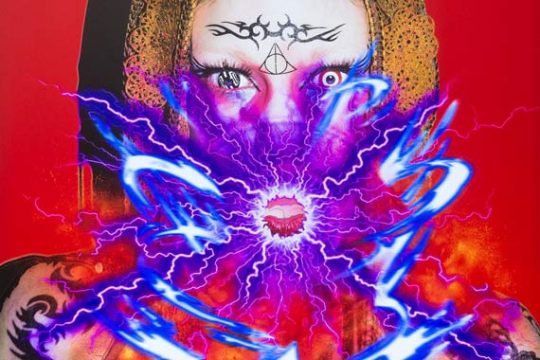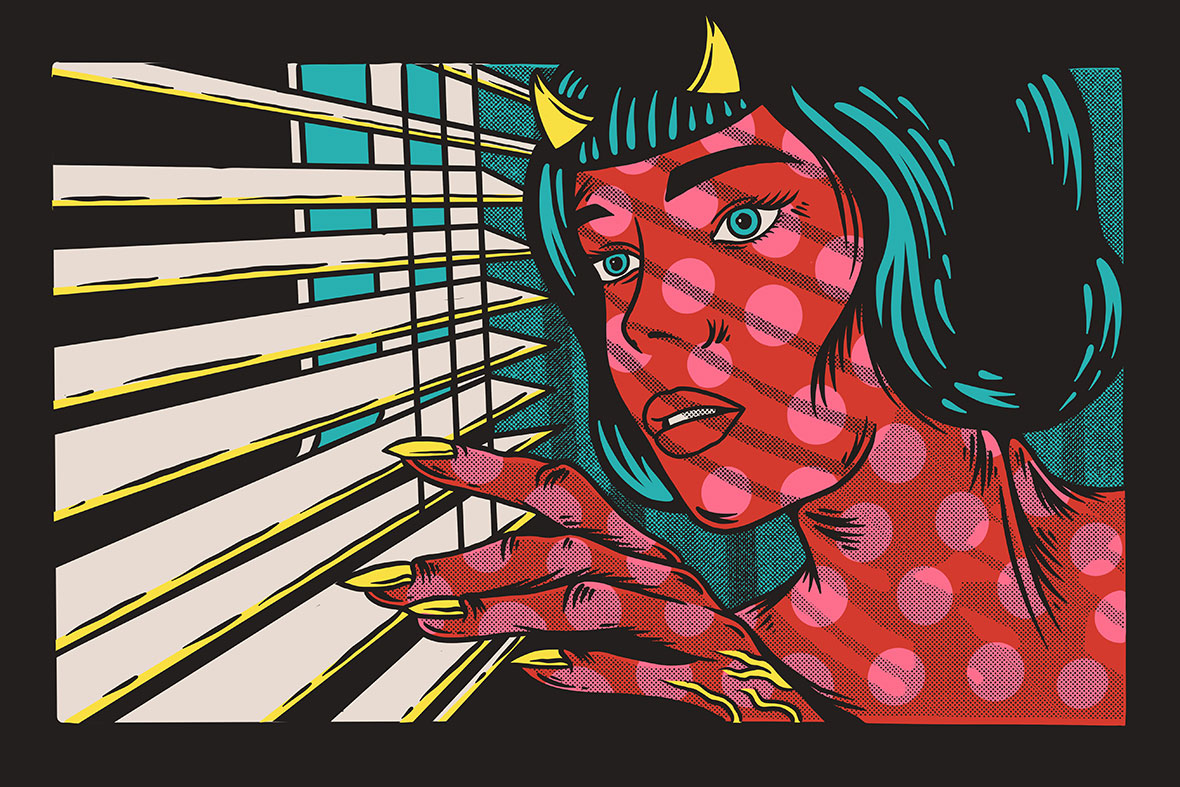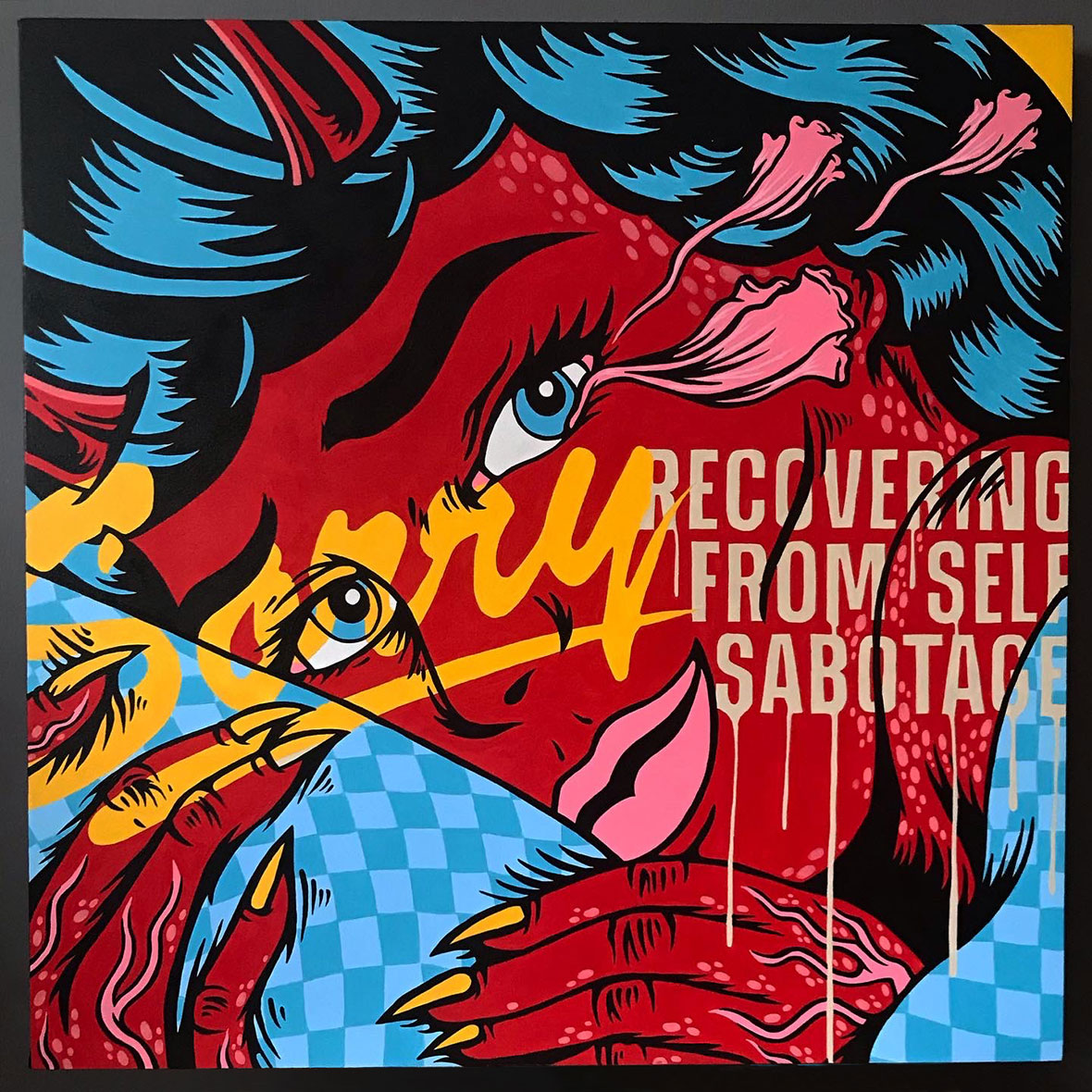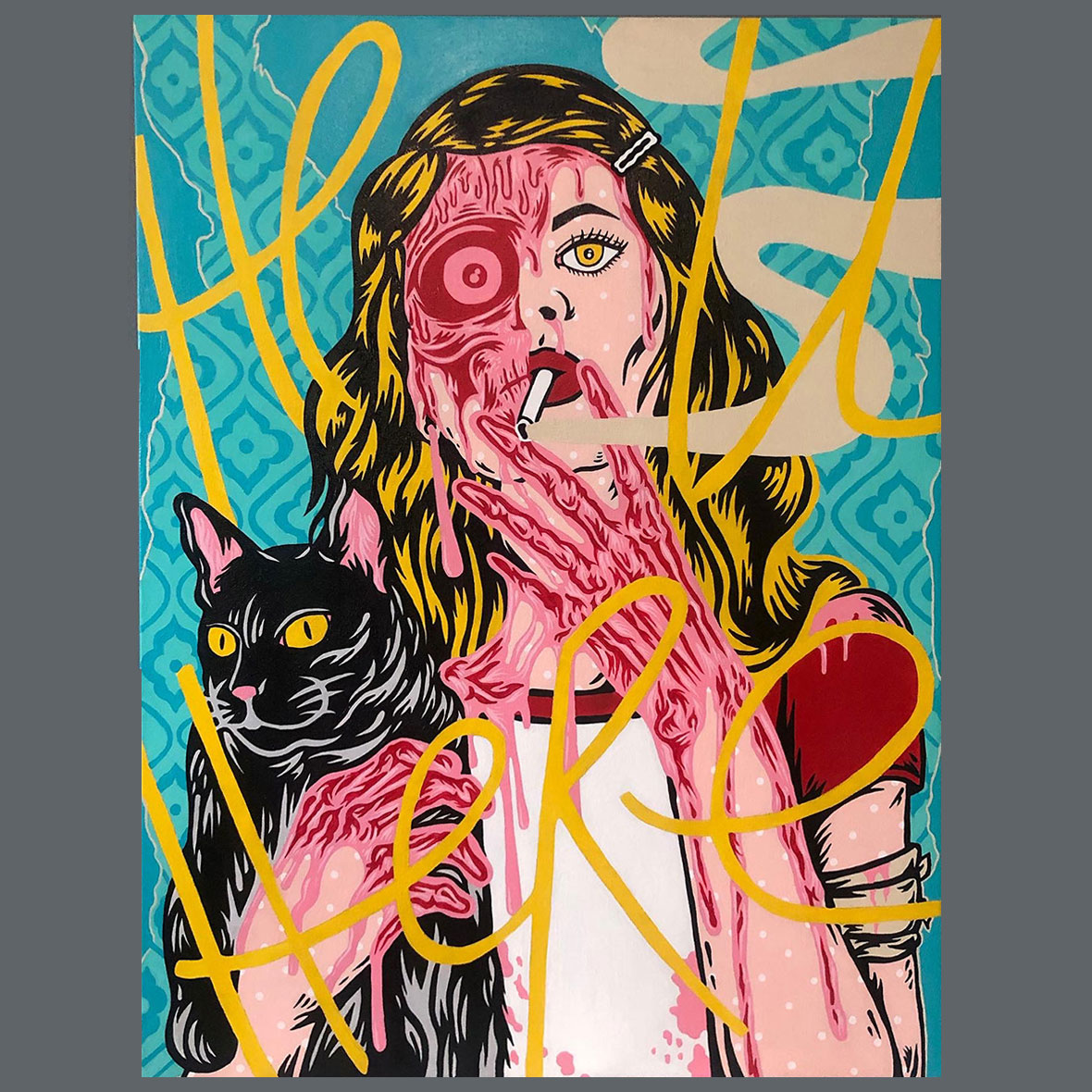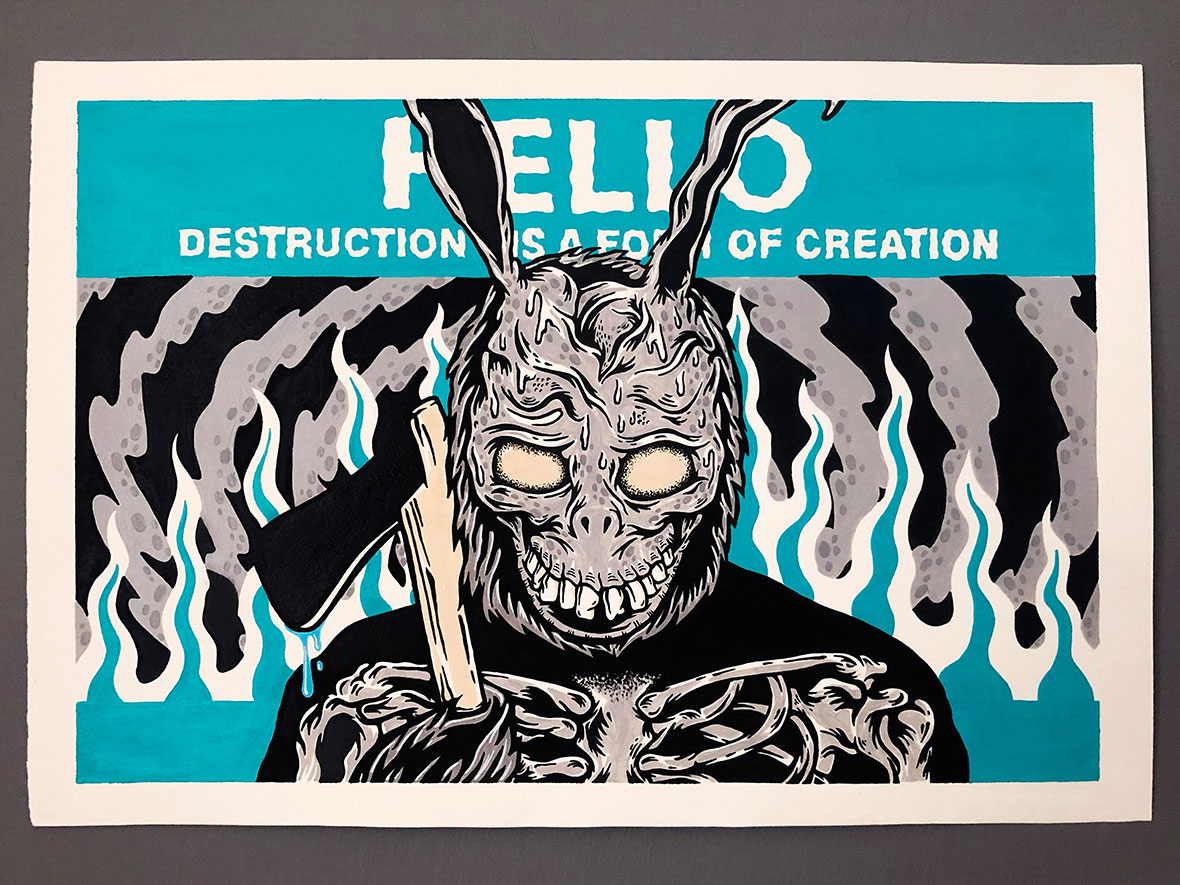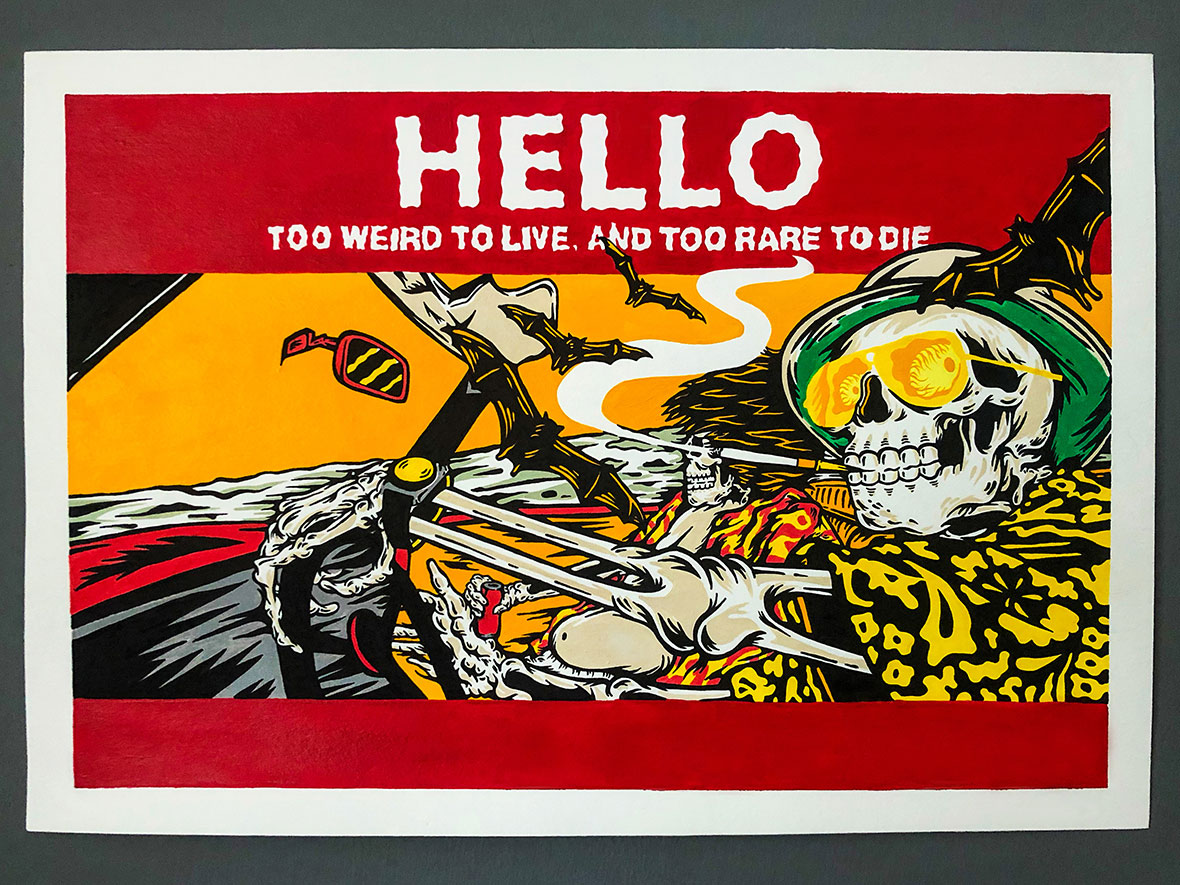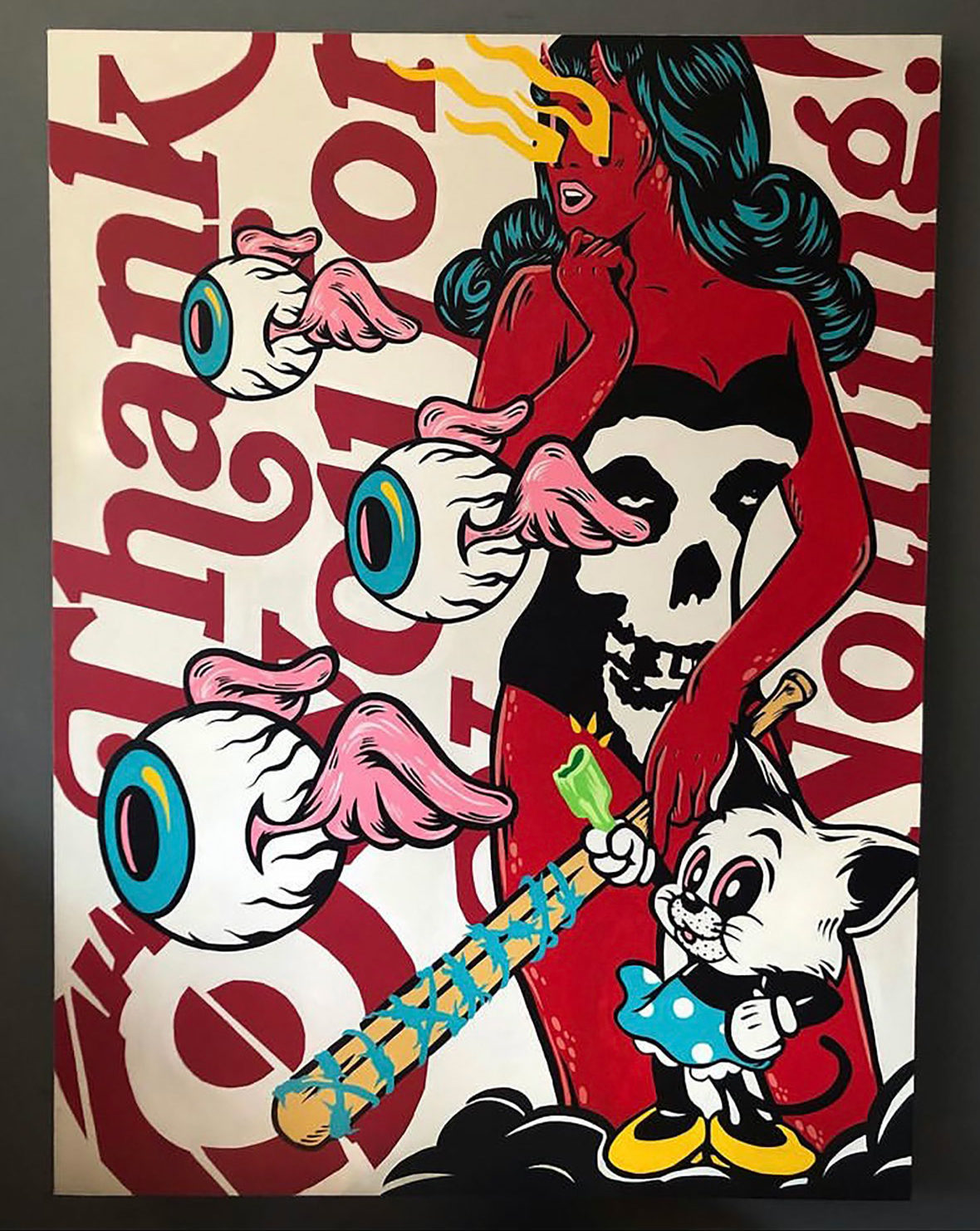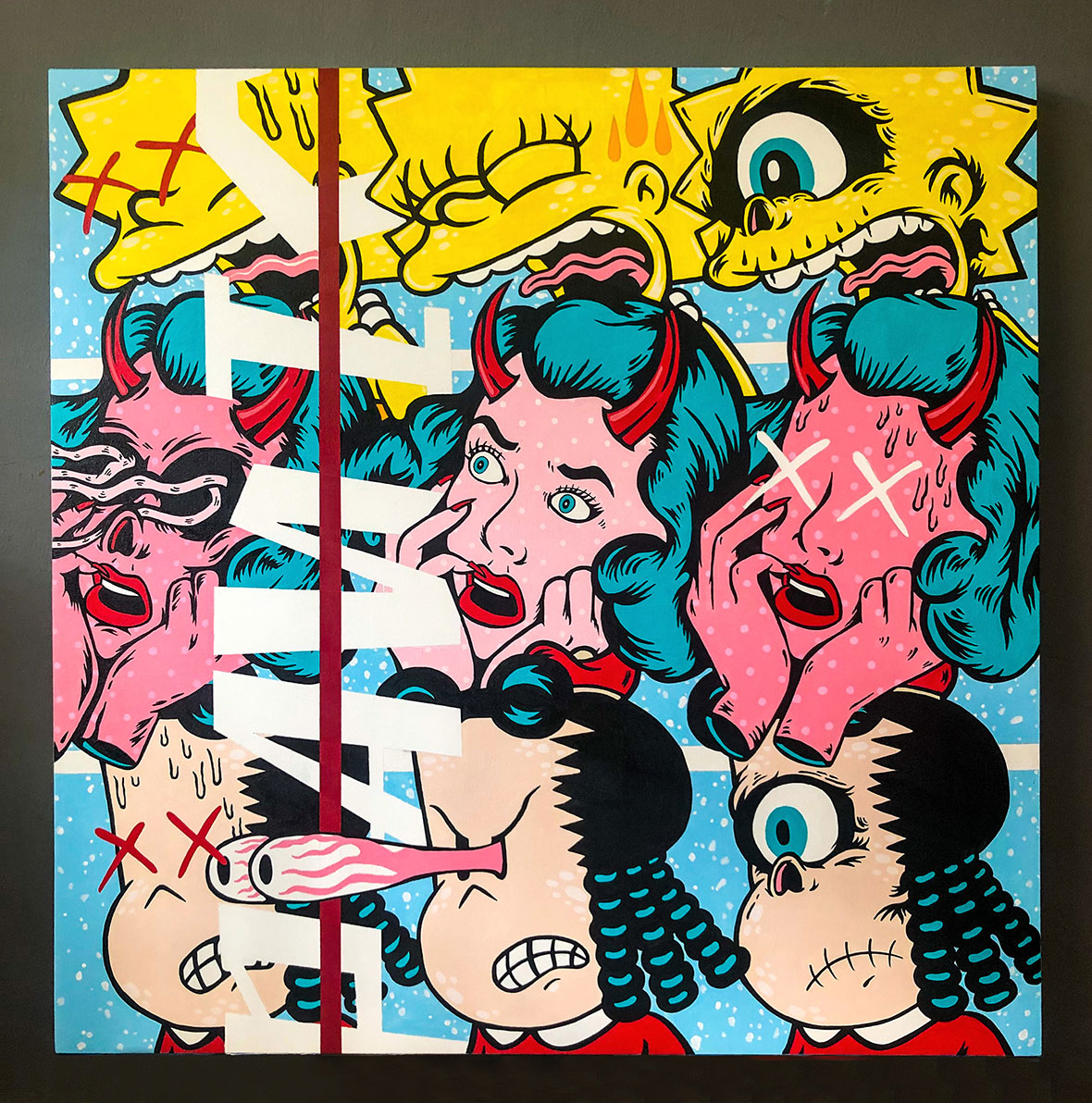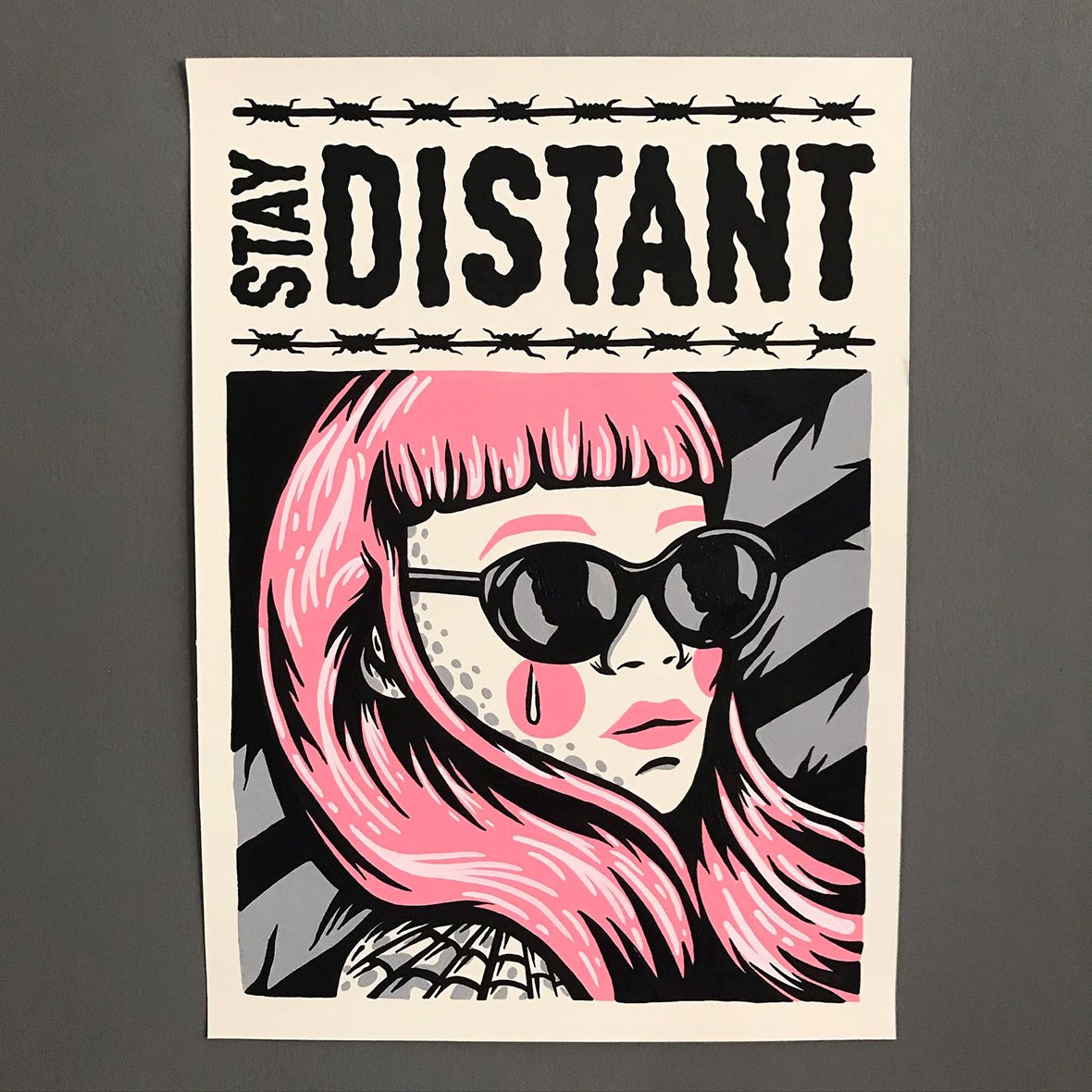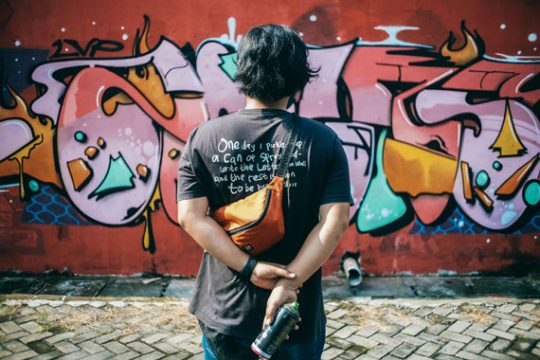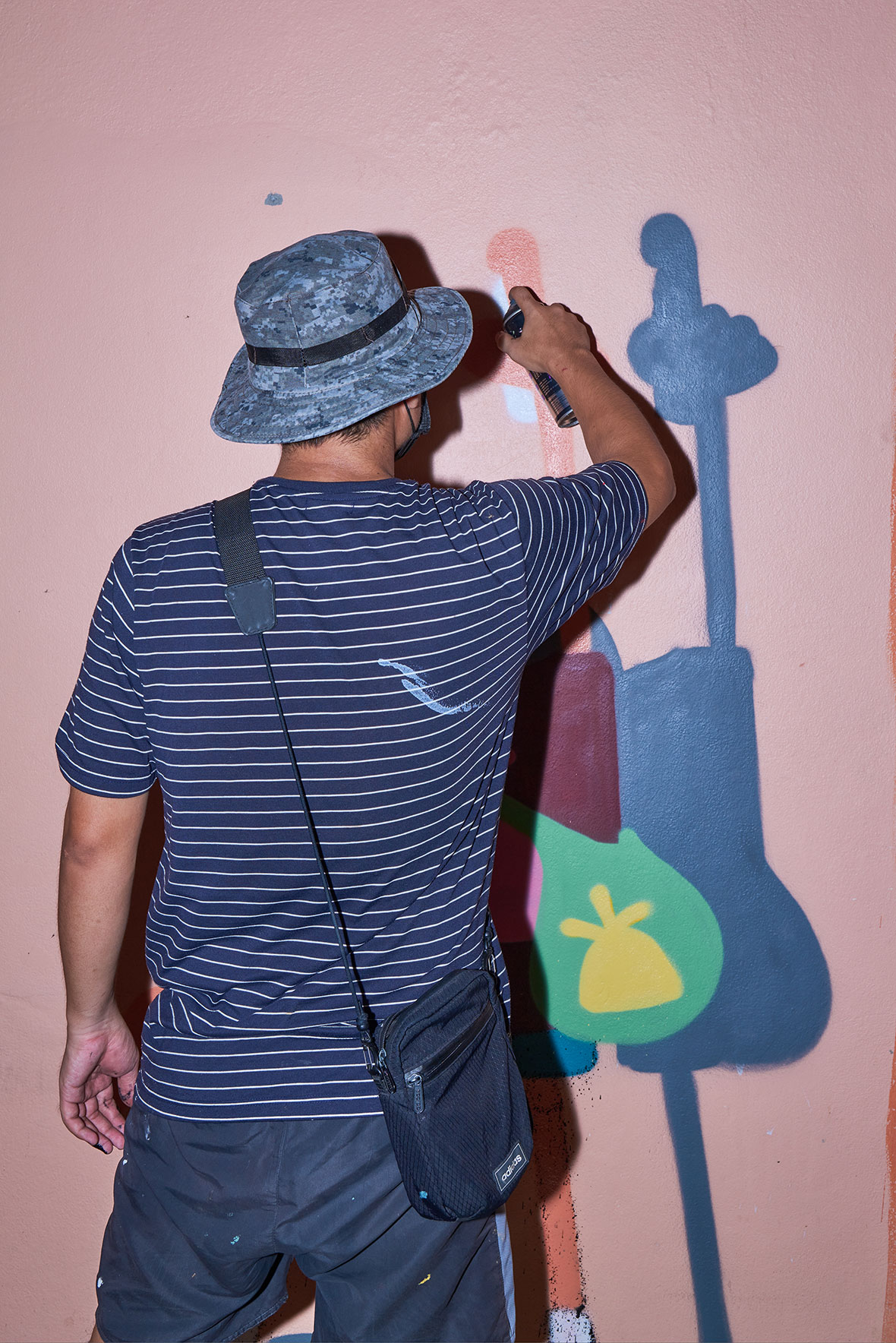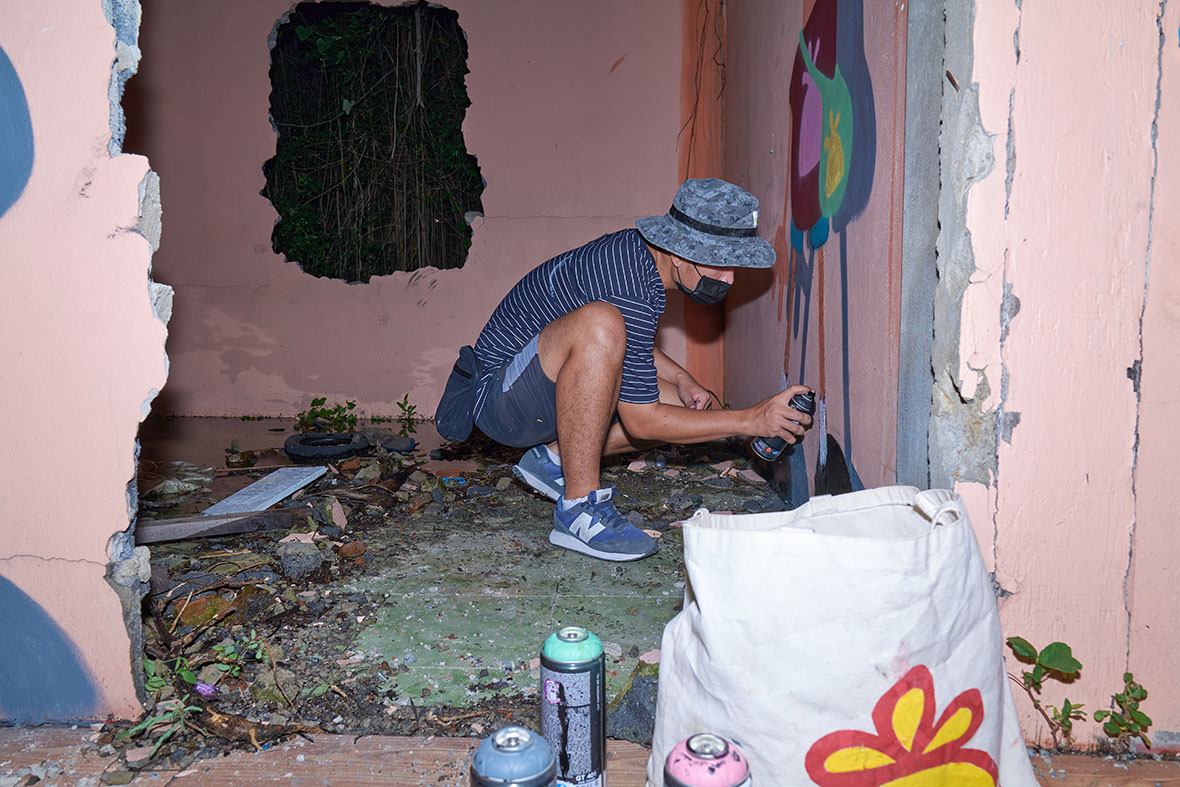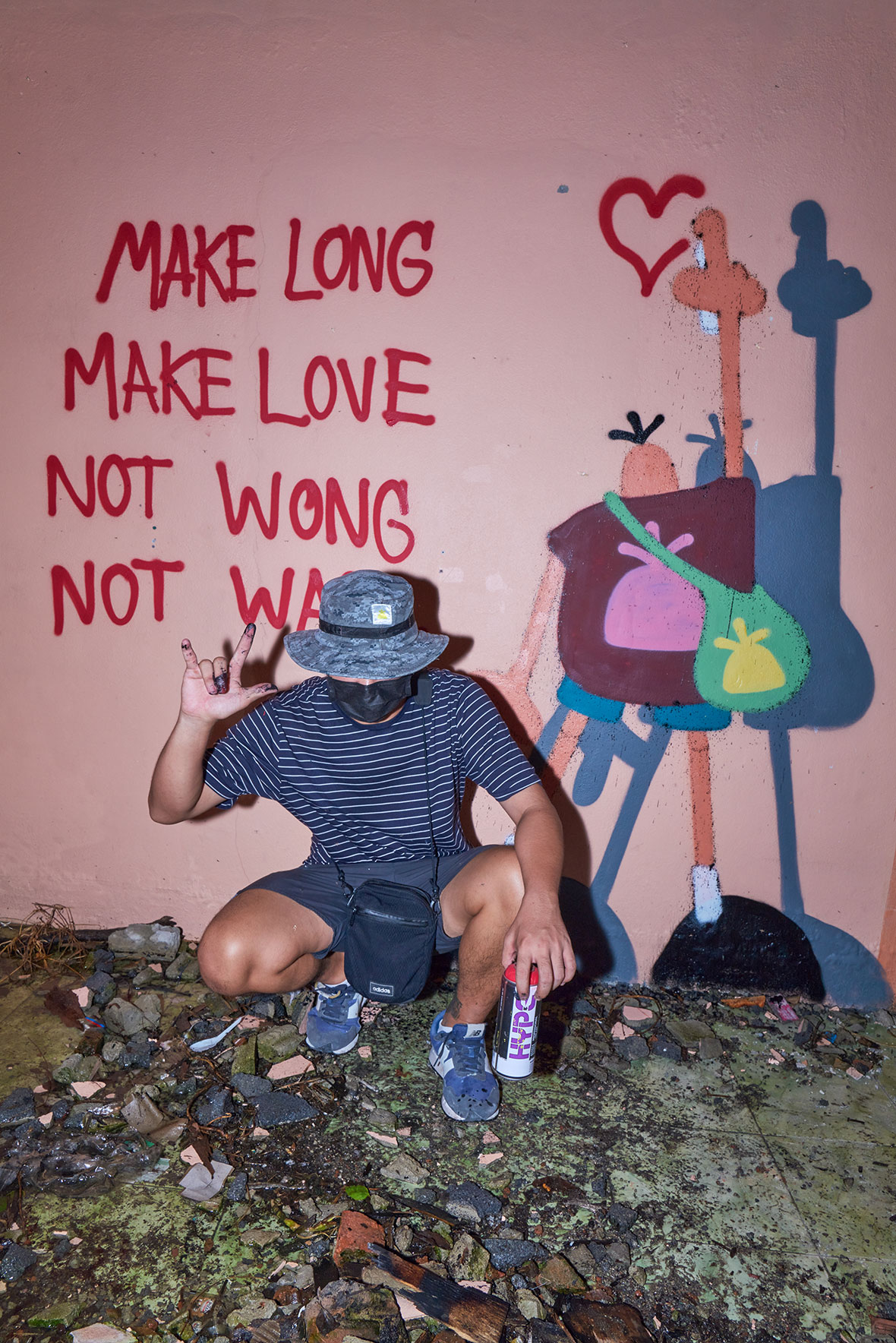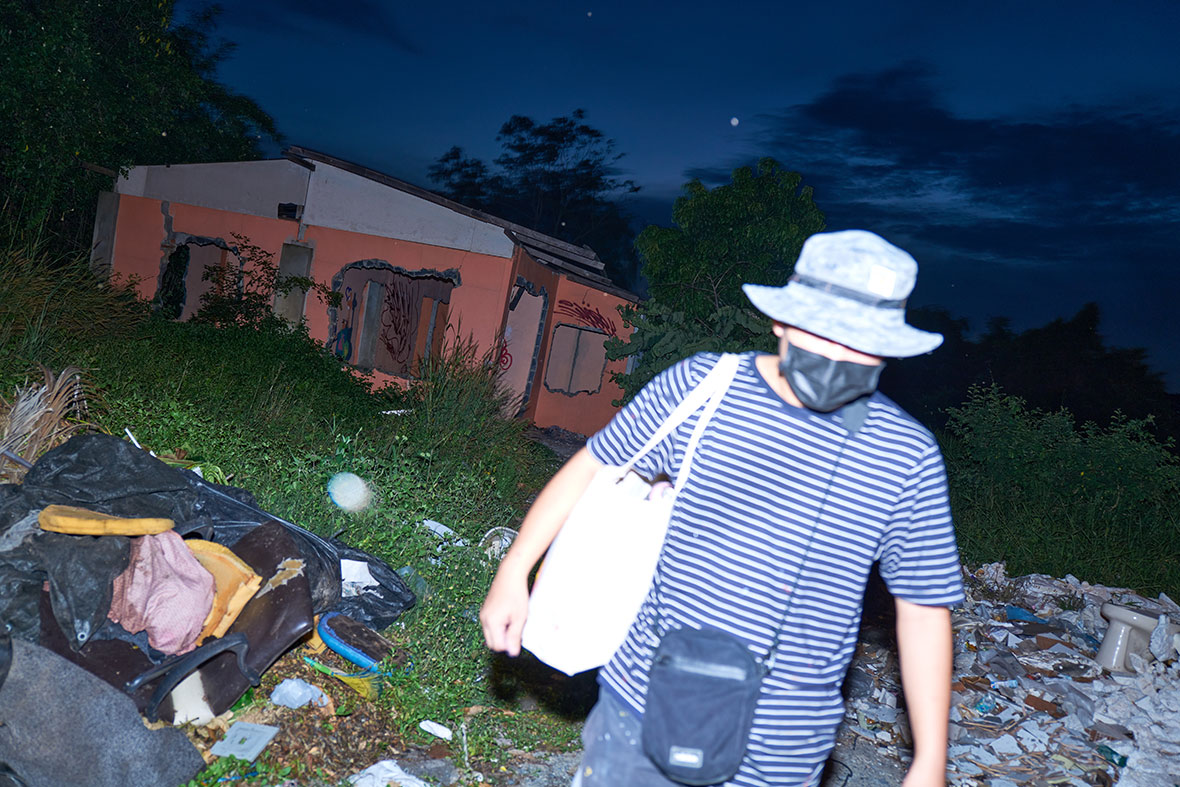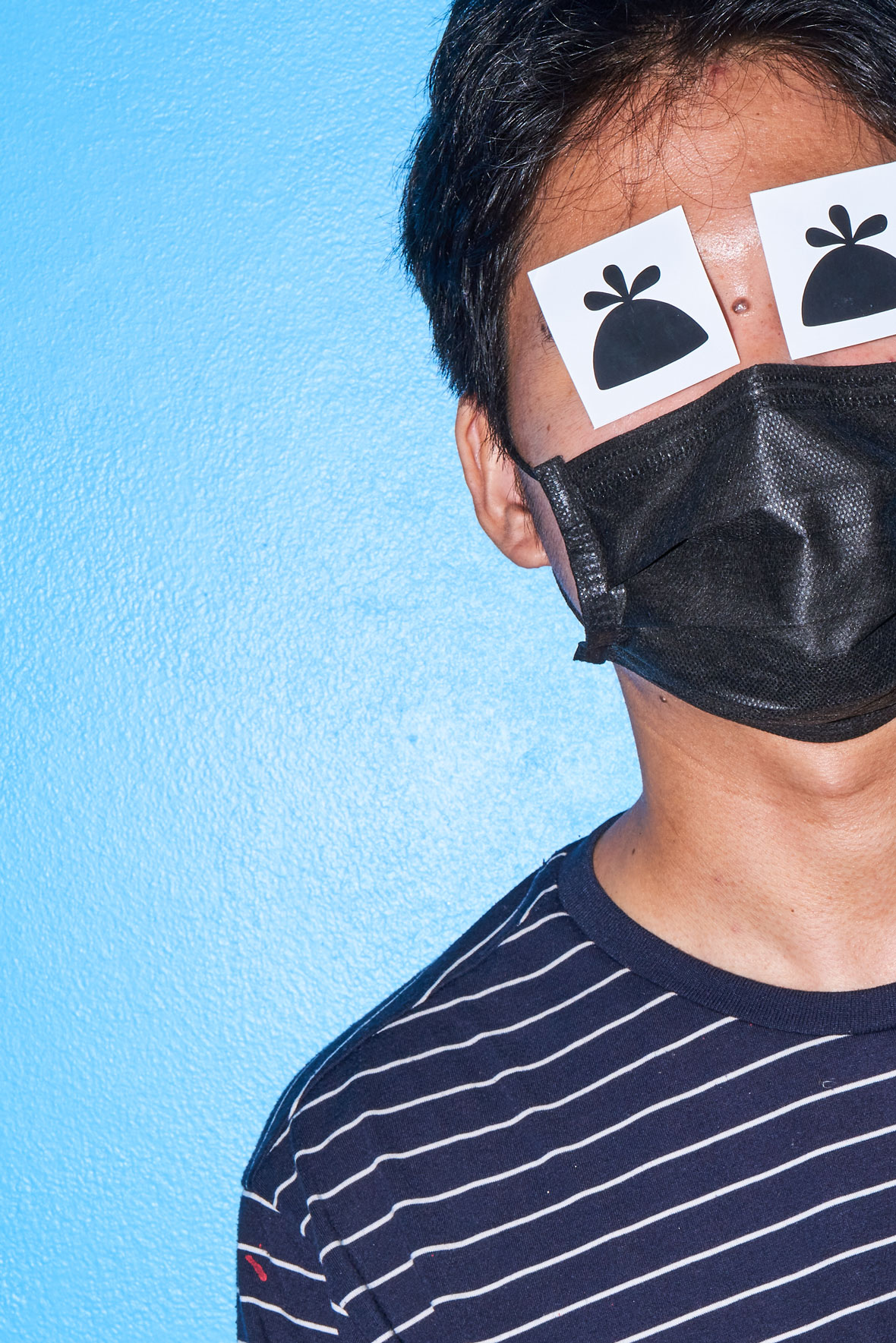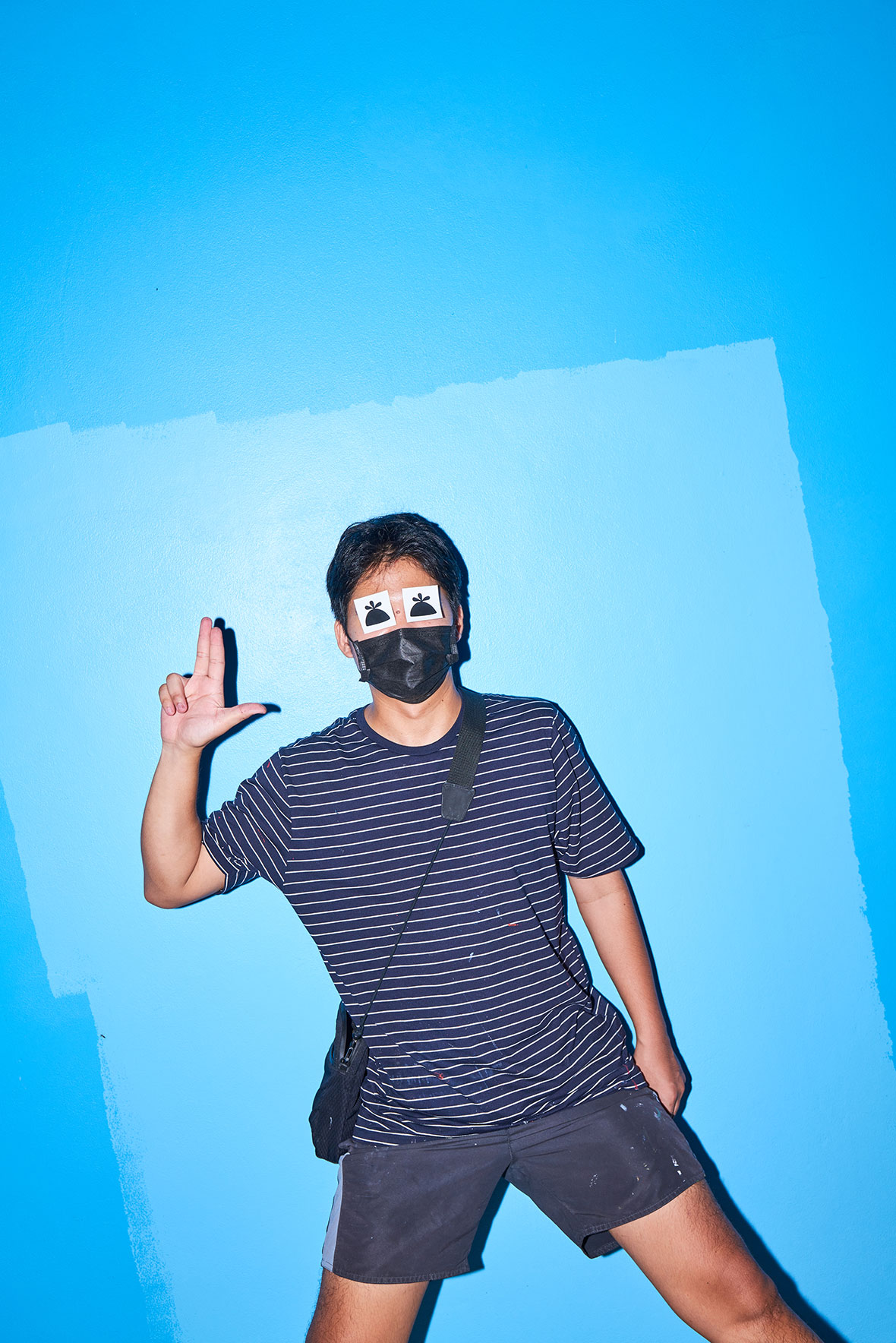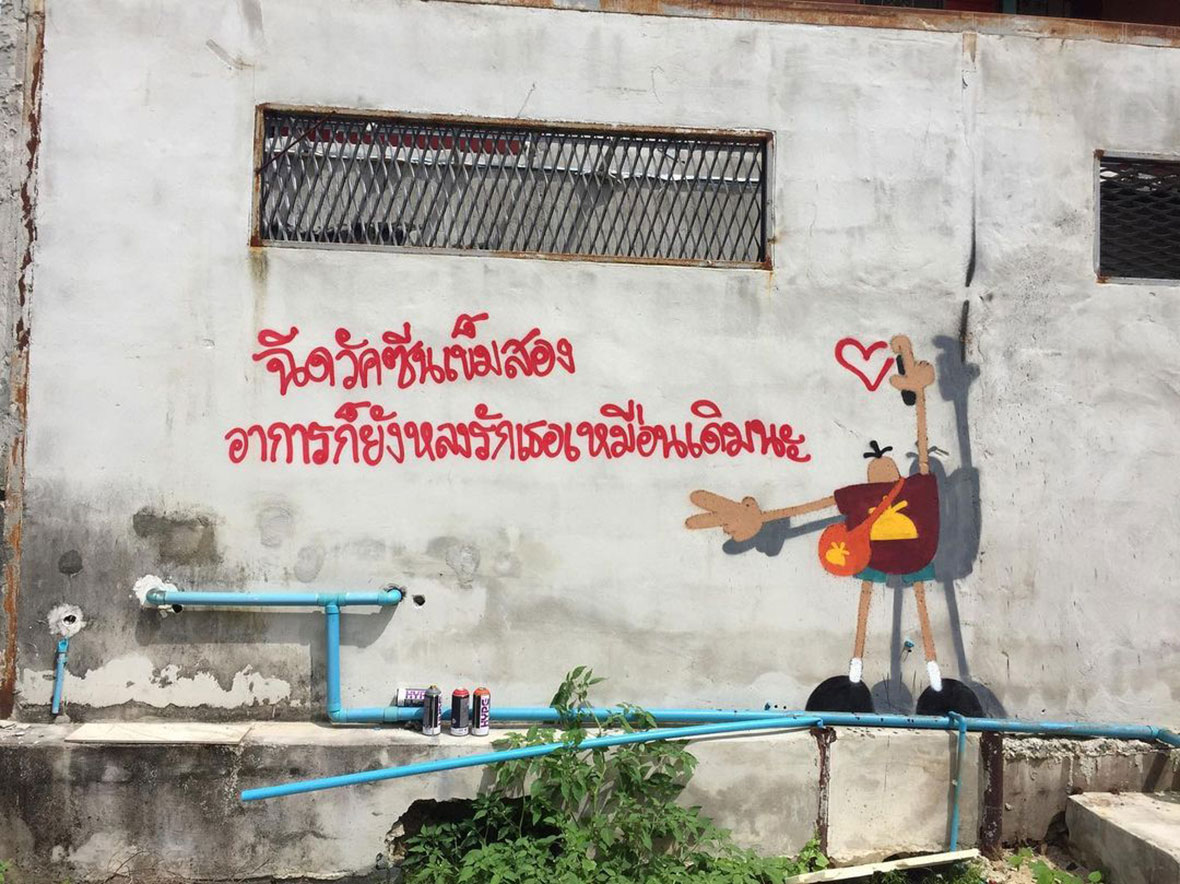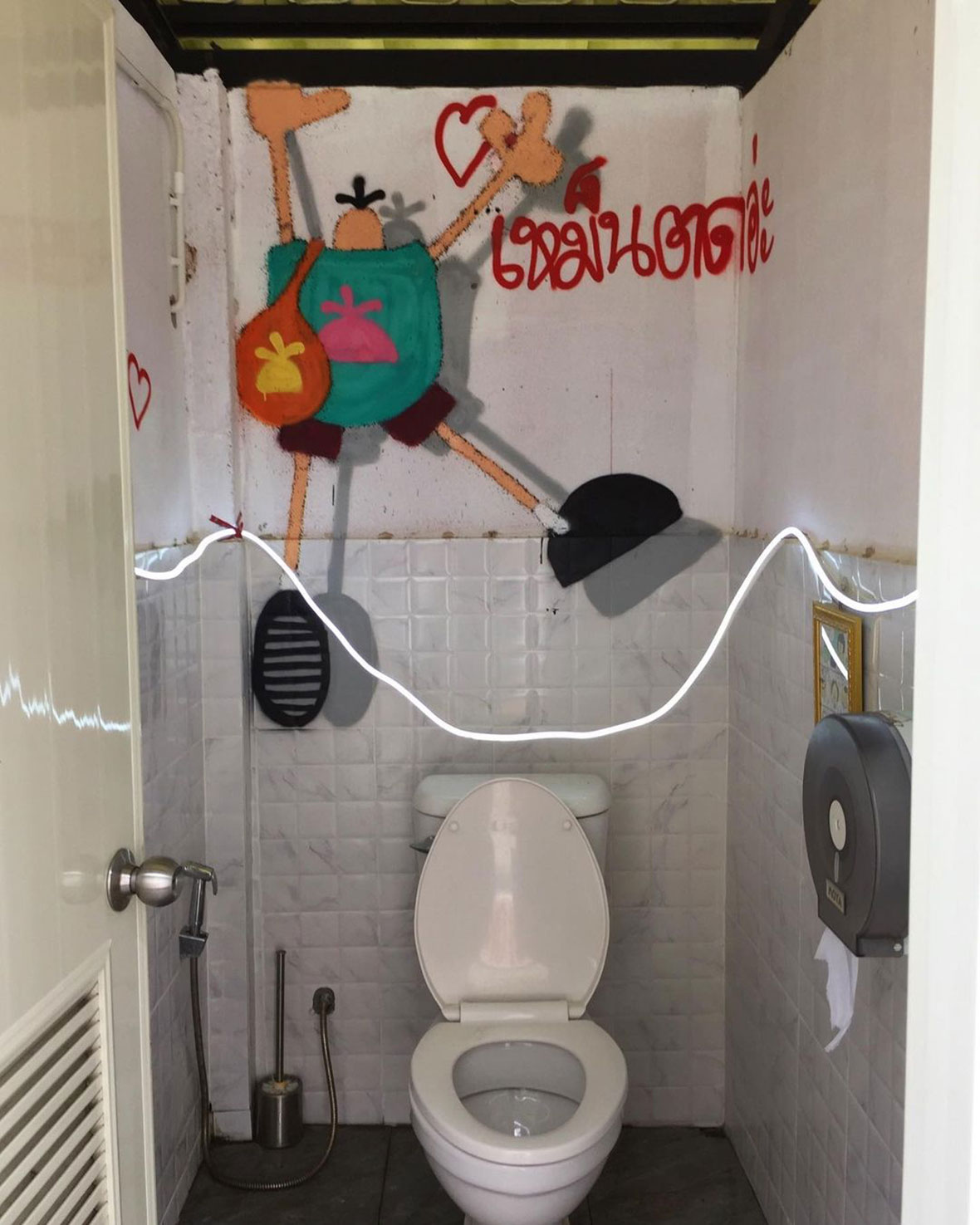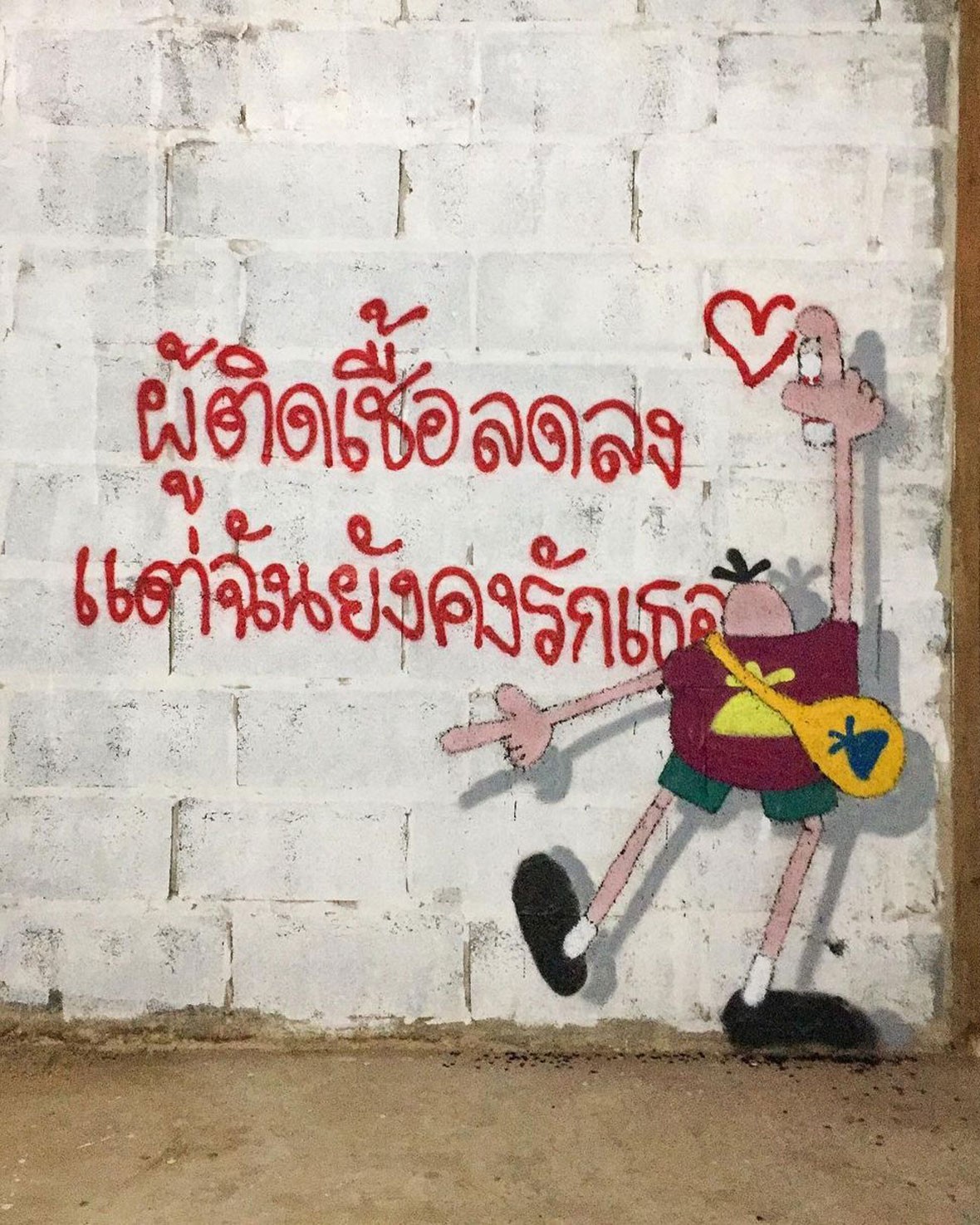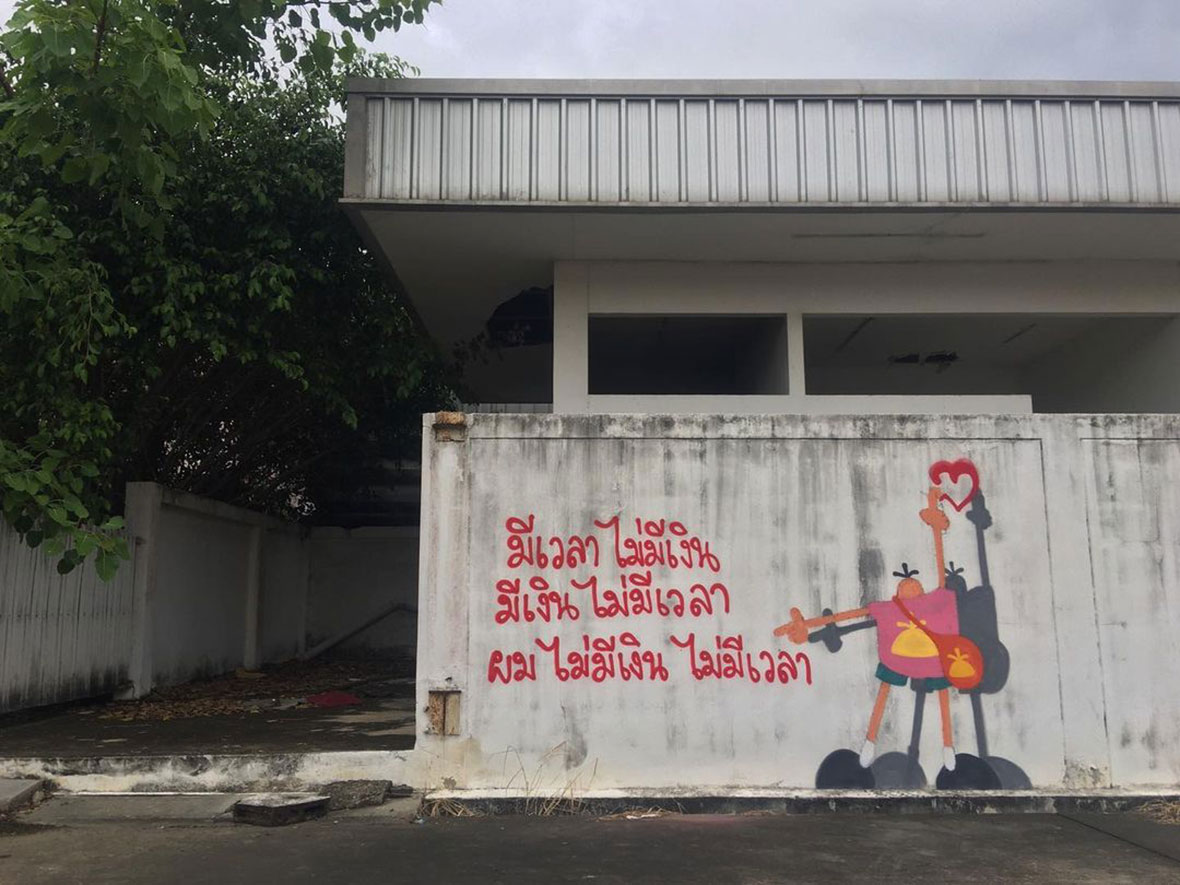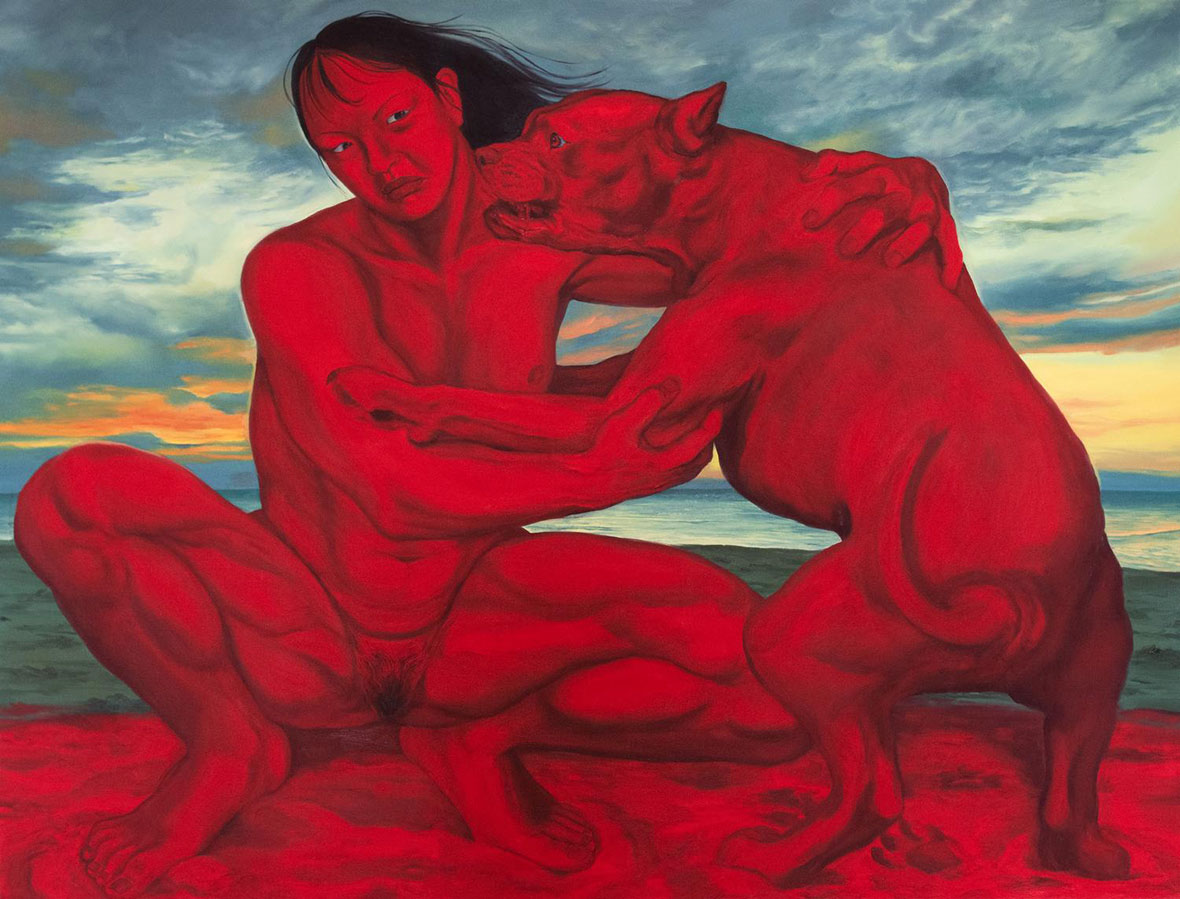
Where does the beauty end and the beast begin? Amanda Ba sees no difference between the two entities. For the ethnic Chinese artist, what illuminates the naked and raw appeal of the subjects she paints is the animalism that underlines their very being. In the dark, they are waiting to feast on shame and secrets. Ba embraces these animals and their strange habits unabashedly, painting them as frightening yet misunderstood, as dangerous yet loyal. Born in our subconscious and raised in the indecent spaces that we so desperately attempt to conceal from the public eyes, animalistic instincts are personified in Ba’s paintings as a threatening presence to the self because of its raw familiarity. Through these beasts, the artist invites herself and us to finally sit down with what we have been mortified to reveal, what we have repressed, and the fervent power we missed out on by denying these creatures that live inside of us their existences.
美人为何不再?兽性缘从何起?华裔艺术家把蔓沁(Amanda Ba)认为,人兽别无两样。对她来说,正是人类与生俱来的动物性,凸显出作品里的那种赤裸、原始的吸引力。他们在黑暗中等待探秘、享受羞耻欢愉的时机。把蔓沁大方地接纳人兽之间的共性和异性,用画笔为他们现原形。她笔下的形象往往危险可怖,但实际可能并无攻击性,并且忠诚。这是因为动物的本能来自人的潜意识,并在人的淫污环境下圈养,而人却竭力掩盖兽性的存在。动物本身便带有某种原始的熟悉感,它们在把蔓沁的画作中被拟人化为一种危机感的存在:野兽。她认为创作不仅让自己得以审视和重构自我,也给所有观众契机,去面对那些人们不被允许或羞于展示的东西、以及人因否认自身动物性而不曾体会过的那种炽热。
With a desire to subvert the coyness imposed upon society by heteronormative standards, Ba is unfazed and bold in both her techniques and subjects. The characters in her paintings often assume confident stances that suggest an unquestioned authority. Exuding intense conviction, Ba’s subjects range from portraits of loved ones to autobiographical depictions of herself. Ba describes herself as a ‘rather dark and perverted person,’ two characteristics that translate to daunting figures on the canvas with a taste for ‘the grotesque and the uncomfortable.’ Under the intense red hues that Ba often paints her figures in, the artist alternates between burly muscles and delicate curves. Human flesh is at once animated with impenetrable strength and a vulnerable softness.
把蔓沁希望通过创作来挑战普世的异性恋规范,因而在题材选取和绘画技巧上都显得大胆且坦荡,带有坚定又强烈的信念。无论是恋人的肖像,还是她的自画像,画中人物往往自信地令人害怕,暗示一种不可撼动的权威。她自认有些“暗黑”和“变态”,这两种特质让她的作品在旁人看来,却是“怪诞”和“不适”。把蔓沁惯常用强烈的红色来塑造人物,坚实的肌肉、如同沟壑一般的线条,散发出力量和活力,同时流露出脆弱和柔软。
Ba’s favorite shade of red lies somewhere between vermilion and scarlet—the bright red hue calls attention to itself with an illusion of approaching danger and imminent threat. The artist cites various associations of the color red both in the political realm and in the popular imagination as reasons for her fascination with the incendiary shade. Like Ba’s paintings, red is an emotive color that characterizes intensity: Red Scare, red flags, red blood, red-hot pepper. Vermilion as the shy blush on someone’s face at the mention of something unspeakable, scarlet as the letter A that Hester Prynne wears as a mark of her sin, adultery, in Nathaniel Hawthorn’s infamous novel. Ba’s consistent use of red in her recent works allows the meanings and interpretations of each painting to fluctuate as opposed to flattening its content for an aesthetic decision. In painting the subversive red, Ba taps into the fearful, unstable, and explosive parts of our self-expression.
红色能带来强烈的视觉冲击,其不仅与某些政治议题相关,如红色恐惧、红色旗帜,更能触发人对某些事物的联想,如血液、辣椒等等。朱红色,是人在羞于面对时的脸色;绯红,让人联想到纳撒尼尔·霍桑(Nathaniel Hawthorn)的长篇小说《红字》中海丝特·白兰(Hester Prynne)所佩戴的字母色——这是她罪恶、通奸的象征。最让把蔓沁迷恋的红色,是一种介于朱红色和深红色之间、极具诱惑力的红色。这种红极为鲜艳,给人一种危险临近、迫在眉睫的错觉,过目难忘。这种红,经常出现在她的作品中。
她的作品并不是单纯为了美学目的而将内容限定在既定框架内,而是赋予作品动态寓意,激发观众多重解读;而这种颠覆性的红色的使用,也更能让她的作品触达观众心底里令人恐惧、不稳定、爆炸性的部分。
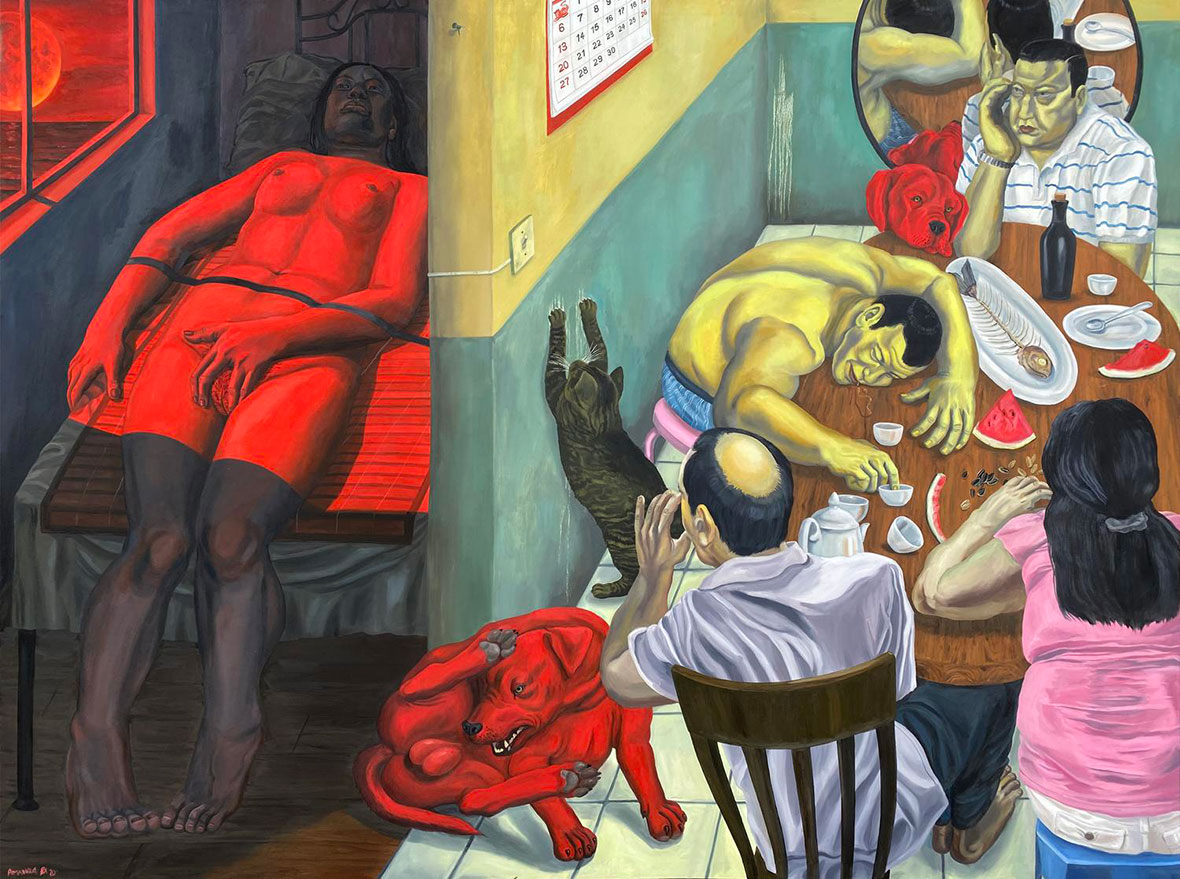
In Dinner-time, red occupies the realm of eruptive secrets and shame. As the lively dinner party takes place on one side of the wall divider, the protagonist lies naked on her make-shift twin bed engaging in an act of self-pleasure. The woman stays perfectly still in the dark with only her fingers placed suggestively over her genitalia. Her face is obscured by the shadows of the room; yet, her body movement is elucidated with the distinctive red hue that colored the blood moon outside her small window. The man sitting closest to her across the unclosed wall divider, so close that one almost wonders if he could see what she is doing, calls out to her from the outside. In between the man and the woman, seated halfway between the white tiled floor of the dining room and the creaking wooden floor of the red woman’s room: a red dog attempting to lick his own balls.
Unconcerned with the woman in the dark, those in the other room sprawled across the table surface after one too many drinks. The fish has been skinned and eaten to the bone, the watermelons have been ravaged, the tea has been served, and the table had been littered with leftover seeds and empty cups. Some might say the red woman is perverted, others might insist on her rights to privacy, self-gratification, and to engage in an act completely natural to human instinct. There is often a conflation between taboo and immorality – the mention of sexual pleasures is often frowned upon and discouraged in the public realm. Yet, in this intriguing theatrical scene, Ba questions the source of the audience’s puritanical embarrassment and hypocrisy. The depiction of the dog seated in between the perverted darkness of the red woman and the wholesome party scene of her family further complicates our understanding of the picture – if the dog represents sinful impulses in the dark, the fact that it also sprawled across virtuous light signals to an implication that self-gratification falls somewhere between good and evil. It is a perfectly normal human instinct; yet, it must only be performed in the dark, away from the prying eyes and the taboo of the public. The dramatic nature of the picture closely follows Chen’s writings on using animal representations as stand-ins for performance and performativity. The animal becomes a symbol of a primal inclination and abandonment, one that doesn’t hinge upon human civility and etiquette. In this painting, sex, public decency, and the self are all performances, converging in this commanding composition from Ba. Painted in 2020, Dinner-time marks Ba’s acute exploration of a symbolic and aesthetic perversion that paves way for her heightened interest in the theoretical concepts of animacy.
在作品《晚餐时间》(Dinner-Time)里,她用红色描绘了人极具象征性的羞耻区。半开放的隔墙左边,一个红色女人在黑暗中赤裸地躺在简陋的单人床上,她的面部和腿部被窗户阴影遮挡;脖子以下到大腿中间的部分,包括放在阴部的手指则被那抹红色阐释得极为透彻——显然,她在自慰。女人身体的红色与窗外月亮的颜色一致。隔墙的右边,三个男人和一个女人刚刚吃完晚餐,其中一位男子望向屋内的女人,仿佛正朝她呼喊。相隔的墙壁之间,一条红色的狗正试图舔舐下体。
餐厅里的其他人并不在乎隔壁黑暗中的女人,一个男人酒喝多了瘫倒在桌子上。餐桌上只剩下食物残渣和两半牙西瓜、一壶茶、几盏空杯和一些瓜子。你可能会认为隔壁女人的举止很怪诞,也可能认为作品在讲述女性隐私权和自我满足权,认为她的行为完全出于人类本能。诚然,禁忌和不道德常常被混为一谈,公共领域提及性愉悦往往是不被鼓励甚至不允许的。
《晚餐时间》这一引人入胜的戏剧场景中,把蔓沁就是向观众严苛的观念和虚伪发起挑战。而这条画面上的狗,却让这幅画的寓意进一步深化。狗本身是良善的象征,倘若画中的狗象征着罪恶冲动,那作者是否在暗示——自我满足实际上正介于善与恶之间呢?性欲本是极为正常的人类本能,然而,它却被人类视为公共的禁忌,且必须在黑暗中进行,并远离他人的窥探。《晚餐时间》的戏剧性可以被视为是把蔓沁对 Mel Y. Chen(性别研究、动物研究、种族研究学者)的观点的延续,后者在写作中使用动物来表现人类行为:在 Mel Chen 笔下,动物象征着原始的、不依赖于人类礼节和规矩的欲望。而《晚餐时间》中,性、公德、自我都外化成行为,这些在把蔓沁的构思下,汇聚成一幅富有哲思的图景。《晚餐时间》创作于 2020 年,出于对动物性理论概念的浓厚兴趣下,她开启了这方面探索。此后的她乐此不疲地玩味着象征手法,在人和动物性之间,尝试颠覆传统观念。
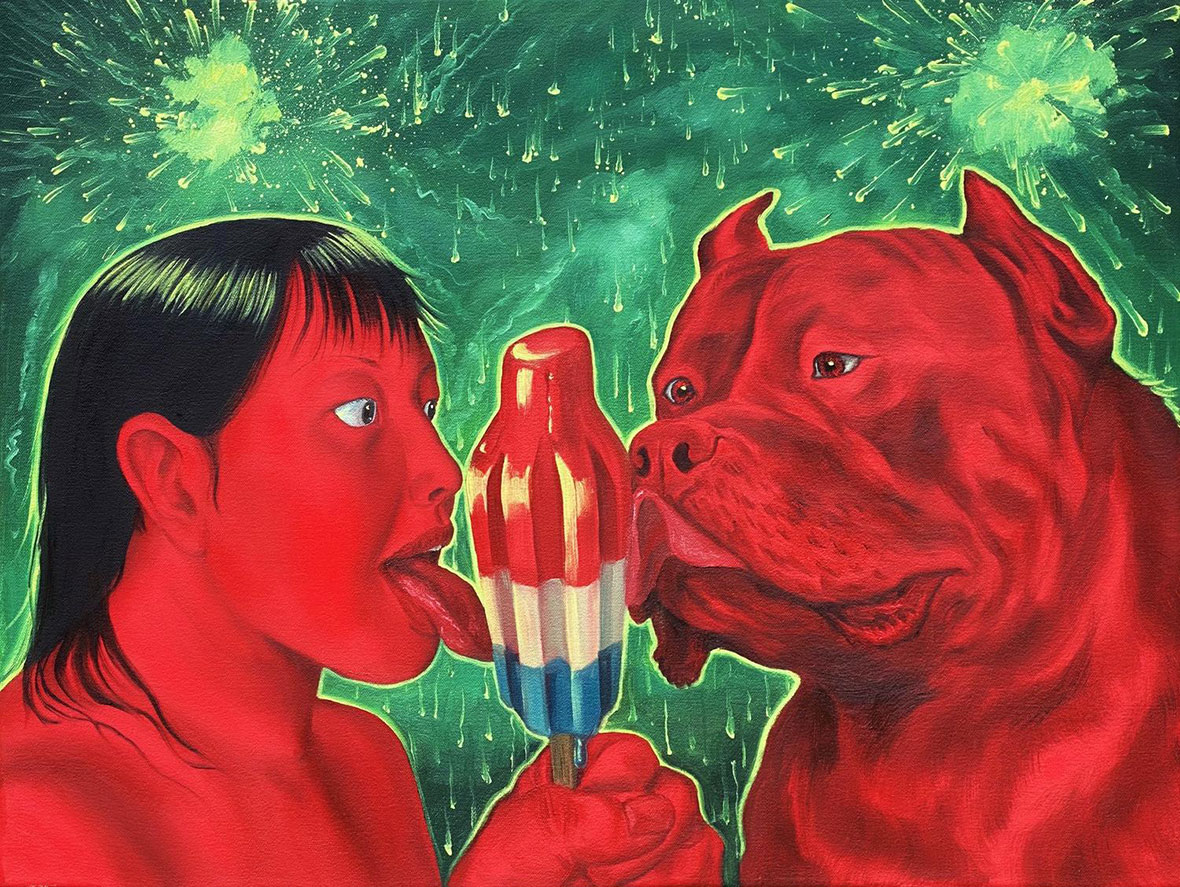
Born in Columbus, Ohio, Ba spent the first five years of her early childhood in Hefei, China with her grandparents. The predominantly white American suburb in which Ba found herself posed a challenge to her artistic identity and development; the artist was unsure of her position in the art historical canon that has been traditionally white-washed. The conventionally archaic life of the American suburb became catalytic for Ba’s fierce search for what she calls ‘elsewheres’. Radical imagination has long been a survival mechanism and defense weapon for many diasporic communities in the United States, as it provides a space that transcends the built-in heteronormative and puritanical values of life in suburban America. Ba would later move to New York for college, where she was exposed to critical theories that explained the many suffocations and confusion in her youth, essays and readings that articulate her desires for queerness, re-invention, rebellion, and destruction of the normative. The artist’s works are saturated with the radical thoughts of Mel Chen’s Animacies or Donna Haraway’s The Companion Species Manifesto, “A lot of critical theory is grounded in elsewheres, and the belief in the possibility of alternate sociopolitical systems than the ones we currently live in…That prompts me to imbue a surreal quality in my work, because I believe in these elsewheres.”
把蔓沁出生在美国俄亥俄州哥伦布市。五岁前,她在中国合肥和爷爷奶奶一起生活。长大后,她回到美国,住在以白人为主的美国郊区。在这里,她对自我的感知开始萌发,但这样的环境却成为她艺术家身份的构建和发展道路上的挑战——在由白人定义的主流艺术标准中,她找不到自己的位置;而美国郊区,传统的生活方式成为她后来渴望突破的催化剂。历史上,美国许多散居社区的居民往往会迸发出激进的想象力。这实则是某种生存机制,更是他们的防御武器:激进的想象力给了他们空间,让他们有机会去尝试超越美国郊区所固有的、由异性恋导向的清教徒式的生活观。
后来,把蔓沁去纽约念大学。她在纽约接触了批判性理论,让少时诸多令人窒息的困顿得到缓解;她还阅读了大量对关于规范重建、反叛和破坏的文章和书籍,例如 Mel Chen 的《动物性》(Animacies)、Donna Haraway 的《物种伴侣宣言》(Companion Species Manifesto),这些文字不仅让把蔓沁坚定了自己酷儿身份的立场,更使得她的作品充满了激进的思想。她说:“很多批判理论都植根于现实固有的秩序之外,也就是所谓的‘别处’,并坚信我们有可能改变目前所处社会的政治制度。我相信,‘别处’的存在,这促使我在自己的作品中注入了一种超现实的特质。”

Does Ba paint monsters? Not particularly, although she does have an appetite for monstrous-looking creatures. For My Beast, All Mine, Ba paints herself embracing a frighteningly large bulldog. Her hand hooks over to its mouth, revealing the animal’s sharp teeth and heavy drooling. She squats down to its level, pressing her face against the side of the dog’s head gently as if she was trying to listen to what it was saying. If Ba is equating these animals that she paints to the ‘beast’ within her, the beast she carries with her through life, we see a tamed portrait of an owner and her pet. The beast not only represents the artist’s unspoken impulses and aggression but also self-awareness—Ba is communicating with her viewer that she has made peace with these complications within her life a long time ago. Ba’s most recent works are premeditated with calmness in the face of heightened danger. Even when it appears that there is a struggle between her and the animal, the human subjects never lose control. In works such as Sublime Reconciliation, the struggle is even suggested as a necessary step to fuse these conflicting aspects within oneself together, a radical act of self-acceptance that necessitate discomfort and friction. The woman’s defiant face shows resistance to the animal’s brawl, yet she is far from afraid. With her feet planted firmly on the ground, the woman fights back – she holds the animal by its joint, gripping its flesh tightly, and with a stern gaze, she simply warns it to behave. For both the woman and her beast, the only way forward is co-existence.
把蔓沁笔下的形象都是野兽吗?也是事实并非如此,不过她确实对野兽的模样饶有兴致。在《你是我的野兽》(My Beast, All Mine)中,她描绘了自己拥抱一条巨大斗牛犬的画面。画中,她用手钩住狗嘴,锋利的牙齿显露无疑,流出大量口水。把蔓沁的面颊贴在狗头上方,好像努力在听它说些什么。倘若用这只狗来比喻陪伴她一生的内心“野兽”的话,对于这幅作品的解读,则会是被驯服的野兽和它的主人。野兽不仅代表了她隐藏起来的冲动和攻击性,更代表了她的自我觉察:她早已与她生命中的复杂性和解,而这正是她想传递给观众的讯息。
面对人的意识和动物本能之间的冲突日益加剧时,把蔓沁在作品中加入一丝刻意的冷静。哪怕她和内心的野兽之间发生了斗争,“人”的主体也不会失去控制。在《至高的和解》(Sublime Reconciliation)等作品中,她更传达出:“斗争是和解的必要步骤,也意味着彻底的自我接纳,而它必然导致不适和摩擦。”画中女子脸上透露着抗拒,这虽表明她抗拒斗争,但她丝毫不畏惧,她的脚稳稳地踩在地上,开始反击——她一手抓住野兽的前肢肘关节,另一手紧紧地抓住它背部的肉,用凌厉的目光发出警告:“要听话,不要乱来”。对于女人和野兽来说,唯一的出路就是共存。
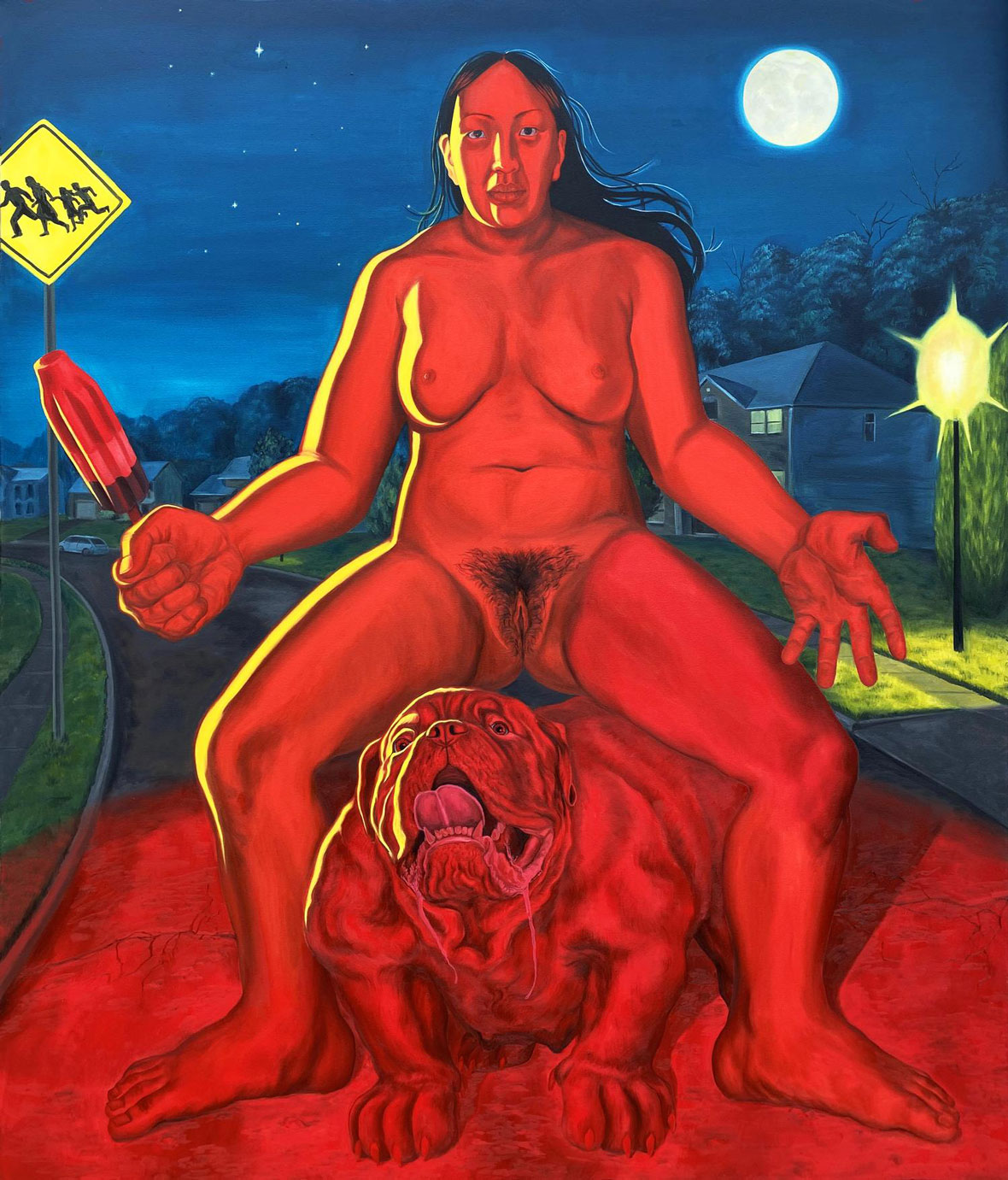
Once the tension subsides, the woman and her beast become a formidable duo. The majestic Suburban Giantess shows the unstoppable harmony that one could achieve with their beast. An enormous female figure towers nakedly over her pit bull with both arms stretch forward as she holds a Popsicle. Tucked neatly below her wide-open legs, the animal emerges with a ferocious hunger on its face. Behind them is the quaint scene of a suburban night – the full moon hovers over quiet cookie-cutter houses in the ghostly town. Taking her dog out on a nightly walk, the red woman dominates this liminal space as the ruler of her kingdom. If the other composition suggests a fight for power between a subject and her pet, this painting signals her domination over this beast. The dog becomes her guardian and protector in the dead of night, as they embark on a journey together.
Throughout these works, a canvas threaded by domesticity and cohabitation emerges. The beating pulse of Ba’s work arrives from this tension between cohabitation and dominance. Are these monstrous creatures our friends or foes, and why are they in our houses? The sweet and intimate Lover, She Is Reading features a softer side of Ba, whose portraits of loved ones radiate care and tenderness. Still adhering to her signature color palette, Lover portrays a night-in with Ba’s partner who is safely positioned on their floral couch, with a dog cuddling peacefully at their feet. Their body is drenched in the red light emanating from the table lamp, yet, the hazy color here is softer, more affectionate. It is the red of a tranquil passion and a loving companionship. On the coffee table next to them is a copy of Mel Chen’s Animacies. A sharp eye can detect Lover’s numerous references to both historical context and Ba’s inspiration. The painting follows a smart compositional detail most commonly seen in 17th-century Dutch painting: the placement of the dog at the sitter’s feet.
当冲突得以缓和时,女人和野兽的组合,令人望而生畏。作品《城郊女巨人》(Suburban Giantess)向我们展示了一个人和内心野兽达成和谐后所产生的骇人力气。画中,巨大的女性裸体屹立在她的斗牛犬之上,她双臂向前伸展,右手攥着一支冰棒;斗牛犬灵巧地半趴在女人的双腿之下,露出狰狞、饥饿的样貌;身后,是传统美国郊区的街道,一栋栋千篇一律的房子,一轮满月挂在安静幽灵般的小镇上方;红色女人牵狗散步在无人的街,暂时接管这片有限空间。如果《至高的和解》象征人作为主体和内心野兽之间的权力斗争,《城郊女巨人》则标志着她对这只野兽的统治——夜深人静的时候,狗成了女人的护卫,陪女人完成一段旅途。
在把蔓沁的众多作品中,有一幅是关于家庭生活和同居生活的作品,贯穿其中的脉络是同居与支配之间的矛盾:野兽究竟是人的朋友,还是敌人?它们为什么和人共处一室?这幅画风甜蜜的《我的恋人,她正在阅读》(Lover, She Is Reading)作品中,把蔓沁对所爱之人的描绘充满关怀和柔情,展现少有的温柔一面。作品依旧沿用标志性红色,展现和伴侣一起度过的夜晚。这一晚,爱人安静地躺在花朵图案的沙发上,一只狗安静地依偎在她脚边,二者的身体被台灯的红光浸透。这抹红,是充满爱意和陪伴的红,宁静色调中不乏激情,比其他作品中的红更朦胧,更柔和,更深情。一旁的茶几上放着 Mel Chen 的《动物性》。如果眼光足够敏锐的话,你还会发现作品引用了大量历史元素,充满巧思。例如,画中引用了 17 世纪荷兰绘画中最为常见又寓意深长的巧妙构图:把狗放在画中人的脚边。
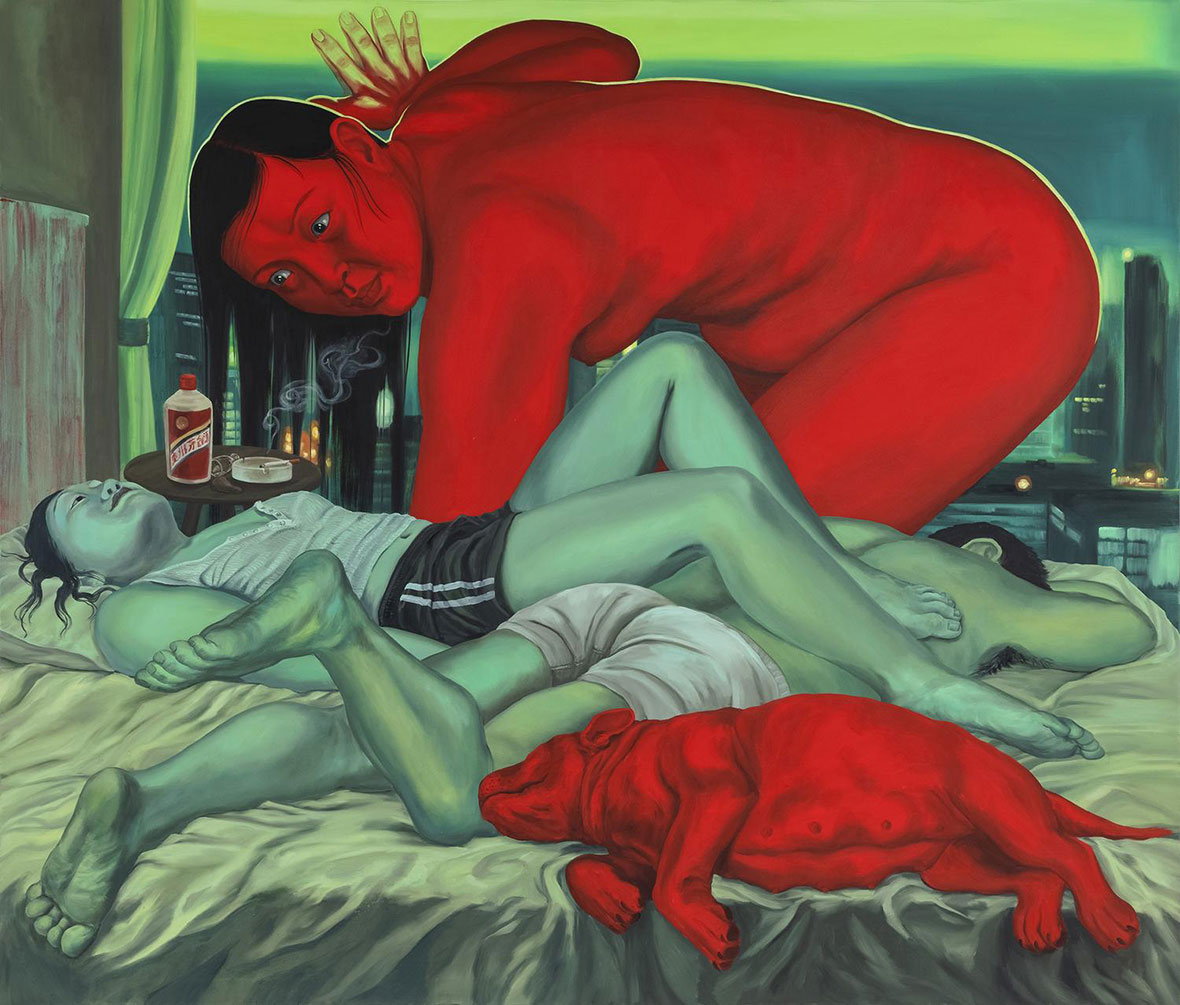
In the ‘Golden Age’ Dutch paintings, the dog’s presence can either simply point to the beloved animal companion of the sitter, or it is a humorous commentary on the bad behaviors that are seen in the humans in the paintings. In these paintings, the dog often mirrors the lack of morals seen in their human counterparts, suggesting a recklessness and wildness that is inappropriate and incongruous. Frans van Mieris’ painting of the brothel scene shows a man courting a female prostitute in the foreground and two dogs humping in the back to comment on the sexual transaction, for example. Similarly, A Night Away (Yearning) features a sleeping dog at the feet of two exhausted figures. The man and the woman intertwine on the small bed as she stares up to the ceiling, her cigarette still lit. Another looming red woman crouches from the ceiling to watch the woman in her natural habitat, bad habits, and insomnia. Who is the beast here, the red woman or the dog? Ba’s witty incorporation of the dog’s placement proves the artist’s charm, as well as her innate understanding of the subjects with which she is so passionate. The artist reminds us to be careful not to wake the beast, for we might never expect what havoc it might wreak.
在荷兰绘画黄金时代(17 世纪),狗的出现往往是心爱伴侣的直白描绘,抑或是对画中人不良行为的幽默写照。例如,对狗的描绘可能比喻人的道德缺失,暗示着一种不恰当、不协调的鲁莽和粗野。弗朗斯·范·米里斯(Frans van Mieris)描绘的妓院场景中,前景是一名男子向一名女妓女求欢,后面是两只狗在交配,影射这对男女间的性交易。同样在把蔓沁的作品《一夜哀渴》(A Night Away (Yearning) )中,一条红色的狗在恋人脚边贪睡不起,男人和女人在床上缠绕,女人盯着天花板,一旁的香烟还未熄灭。另一位红色女人在上方赫然耸现,审视床上女人的生活环境、不良习惯和失眠状态。这里谁是野兽,红女人还是狗?作者将狗的位置巧妙地融合进场景中,提醒着我们:要小心,不要吵醒野兽,因为我们可能永远也想不到野兽会带来多大破坏。这些细节足见这位艺术家的魅力,以及她对创作主旨与生俱来的洞察力。

One must not shy away from the political dimension of Ba’s work. Doing so would be erasing the very basis on which Ba builds her protagonists: female-presenting, Asian, and uninhibited. This aspect of Ba’s philosophy is weaved in more closely in American Girl, American Bully, American Bomb. Ba has spoken about the specific breed of dog she normally depicts in her work, American Bully. Belonging to the family of pit bulls, these dogs are notorious for their hostility and militancy, with some even linking the animal as the mascot for American imperialism itself. Here, Ba has the animal wrapped around her finger. The figure in the image and her American Bully excitedly shared a patriotic Popsicle in the shades of red, white, and blue, as fireworks exploded in the green sky behind them. The three American signifiers in this work are the Asian female (American Girl), the pit bull (American Bully), and the fireworks (American Bomb). Acutely aware of her position as a Chinese woman growing up in a predominantly white town of Ohio, Ba is adamant about rewriting a history that better represents her in the art world.
With the rising frequency of hate crimes against Asian-Americans, Ba’s work inserts the artist as the pinnacle of the American ideal, a place at the table that has historically been denied from those who look like her. In Animacies, Chen discusses the correlation between codes of moral and animalistic representations, particularly for people of color who have suffered at the hands of barbaric comparisons with sub-human creatures. Following the wave of Chinese immigrant workers in the early 20th century, for example, Asian workers in America were often equated to the image of the rat. Chen further questions the hierarchical nature between the human and the animal – the differentiation between two species is what traditionally makes humans superior. What are humans but non-animals? What does that mean for people of color who bear the brunt of animalistic jokes and comparisons? Ba pokes fun at American idealism and racial hierarchies, instigating the viewers of their implicit biases and questioning the very idea of quintessential American ideas subversively; what is more American than suburbia, than popsicles, than fireworks, than the American Bully? And where do Ba and the who look like her, who are unrepressed, fearless, and ready to see themselves under more spiritual scrutiny than just the mold of the model minority, fit in?
与此同时,我们当然无法对把蔓沁作品中的政治意涵视而不见,这恰是她塑造主角的基础:女性形象、亚裔以及不羁的人物形象。你会在作品《美国丽人,美国恶霸,美国炸弹》(American Girl, American Bully, American Bomb)中洞见这些主题。其中所描绘的狗属于斗牛犬家族,因其敌意和好斗而闻名,一些人甚至将该犬种视作美帝国主义的吉祥物。把蔓沁在创作时,下笔如有该犬种附体加持——画中人物和她的“美国恶霸”正在共同品尝一支由美国国旗颜色即红、白和蓝三色相间的冰棍,他们身后的绿色天空中,烟花正在盛开。这部作品中的三个美国意象包括亚洲女性(即“美国丽人”)、斗牛犬(即“美国恶霸”)和烟花(即“美国炸弹”)。作为俄亥俄州白人占主导地位的小镇上生活的中国女性,把蔓沁敏锐地意识到了自己的地位。她拿起画笔,坚定不移地用艺术重塑周遭的世界。
近年来,针对亚裔美国人的仇恨犯罪行为愈加频繁。作为亚裔,把蔓沁的成就却使她史无前例地到达了美国梦的巅峰。有色人种常被野蛮地比作低等生物,深知其苦的 Mel Chen 在《动物性》中探讨了道德准则与动物象征之间的相关性。书中曾记载,在 20 世纪初中国移民工人的浪潮中,在美亚裔工人经常被老鼠形象所指代。他还进一步质疑人类和动物之间所谓的高低之分——正因如此,两个物种上的区别也成了传统意义上人类优越感的来源。人类如果不是动物,那是什么?这对被嘲笑为动物、被拿去和动物进行比较的有色人种来说,又意味着什么?把蔓沁延续了这样的探讨和质疑,她讽刺美国的理想主义和种族等级制度,她引导观众去看见他们所持有的隐性偏见,她颠覆性地质疑着那些典型的美国意象——还有什么比郊区、冰棍、烟花和“美国恶霸”更美国呢?那些和她一样思想自由、勇敢、时刻准备着被他人审视、非模范亚裔的模子里刻出来的亚裔同胞,又该如何找到他们的位置呢?
Throughout these bold declarations of radical self-acceptance, Ba does not forget about the cautionary tales. When the pressure to fit in outweighs the desire to stand out, we take different shapes to protect ourselves even if it comes with great pain. What happens when the animal overshadows and takes control of you? In Last Night I Crept into a Cow, a woman bends over to hide behind the contours of a blue cow. She quietly holds on to the animal, as the man in their bedroom sleeps peacefully on the bed. Upon closer inspection, one can see that her left leg had metamorphosed into the cattle’s hoof and feet. The figure would rather risk discomfort than wake the man, an emotion foreign to Ba’s later works with ooze self-assertion.
Last Night I Crept Into a Cow is reminiscent of old Greek mythology, the story of Io and Zeus. Io was a lovely forest nymph whose beauty captured the attention of the God of gods, Zeus, from above. Though the nymph constantly rejected his multiple unwanted advances toward her, Zeus’ wife Hera caught wind of her husband’s infidelity and turned Io into a white cow out of spite for the young girl. Yet, Zeus repeatedly attempted to reverse the curse, turning Io back to her beautiful human self so he could continue to pursue her. Angered by this, Hera punished the innocent girl by casting her to be a permanent cow, forever chased around by insects that would not stop attacking her. Perhaps the woman in Ba’s painting is looking for protection within the shape of the cow, or perhaps she is being punished for her impulses. Either way, the animal has usurped her, and she surrenders to it. Ba’s initial exploration of animals had a trace of fearfulness and apprehension, but by the time she found her red American Bully, those insecurities have dissipated for the better. The blue cows precede the red dogs, signaling a becoming, an accession, and a return to the self.
Upon your entry into the pictorial universe of Amanda Ba, you blush, but an impulse in the back of your head tells you to stay right where you are anyway. It invites you to return the gaze, to accept the invitation, to embrace the acute shame spiral your body could not help but produce, and to find the acceptance in getting free.
在这些彻底接纳自我的大胆宣言中,把蔓沁并没有忘记那些警世故事。当融入社会的压力超过脱颖而出的欲望时,我们会用不同身份伪装来保护自己,即便这意味着巨大痛苦。
如果内心的野兽让你黯然失色,甚至把你控制住,将会发生什么?在《昨夜,我爬进一头奶牛》(Last Night I Crept into a Cow)作品中,女人弯下腰躲进蓝色奶牛体内,她静静地支撑住自己,一旁的男人正在床上安睡。仔细看,女人的左腿已然变形成为牛的一部分。宁愿冒着不舒服的风险,也不愿唤醒男人——这种甘愿牺牲自我的情感在把蔓沁后期的作品中没有再出现,取而代之的,是坚定的自我主张。
《昨夜,我爬进一头奶牛》不难让人联想到古希腊神话中艾奥和宙斯的故事。艾奥是一位可爱的森林女神,她的美貌引起了天上众神之神宙斯的注意。尽管艾奥多次拒绝宙斯的求爱,但宙斯的妻子赫拉还是发现了丈夫的不忠。出于对艾奥的怨恨,赫拉把年轻的艾奥变成一头白色的母牛。之后,宙斯仍多次试图解除诅咒,把艾奥变回美丽的人类,以便能够继续追求她。赫拉被彻底激怒,她变本加厉地惩罚这个无辜的少女,把她永久地变成一头牛,被昆虫攻击、追逐,永无止境。把蔓沁画中的女人或许是想在牛的躯体中寻求庇护,或许是在为自己的冲动而受罚。不管怎样,动物已侵占对女人的主权,女人也向动物束手就擒。
把蔓沁早期作品中这头蓝色的牛表明她对内心野兽的探索有过恐惧和忧虑,但当她后来遇见那只红色的“美国恶霸”犬时,不安全感随之烟消云散,她开始向着新的自我迈进。自此,她已知晓如何通过自我赋权,回归到自我本真,并由此创造出新的自我。
进入把蔓沁的视觉宇宙之后,你也许会脸红,但潜意识中会有一种冲动,告诉你无论如何都要保持岿然不动。接纳作品的凝视,并回赠凝视;然后接受邀请,进入体内油然产生的强烈羞耻感形成的漩涡,找到并踏上那条通往自由之路。
Like our stories? Follow us on Facebook and Instagram.
Website: www.amandaba.com
Instagram: @amandapandaba
Contributor: Uyen Dinh
Chinese Traslation: Young Yang

